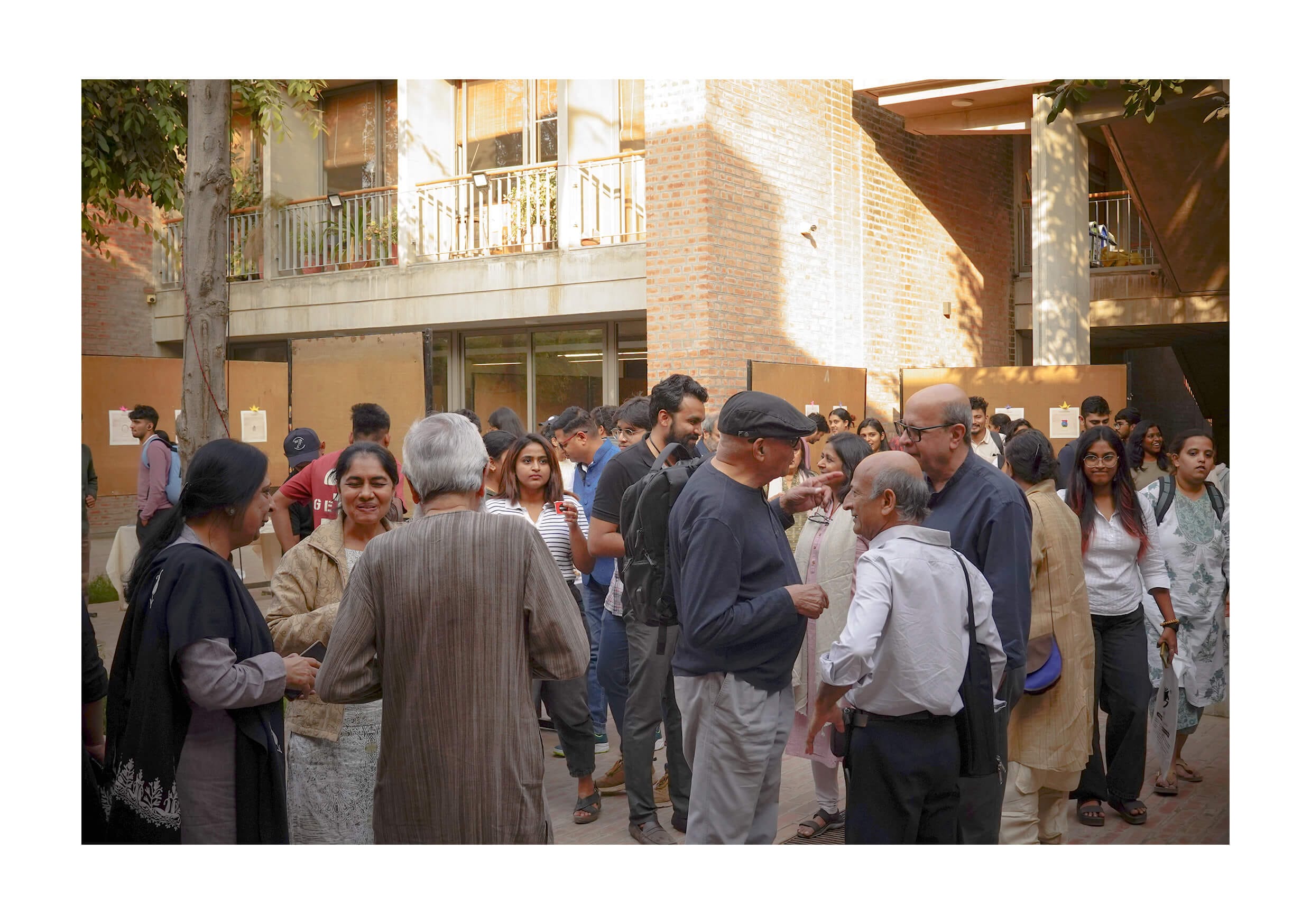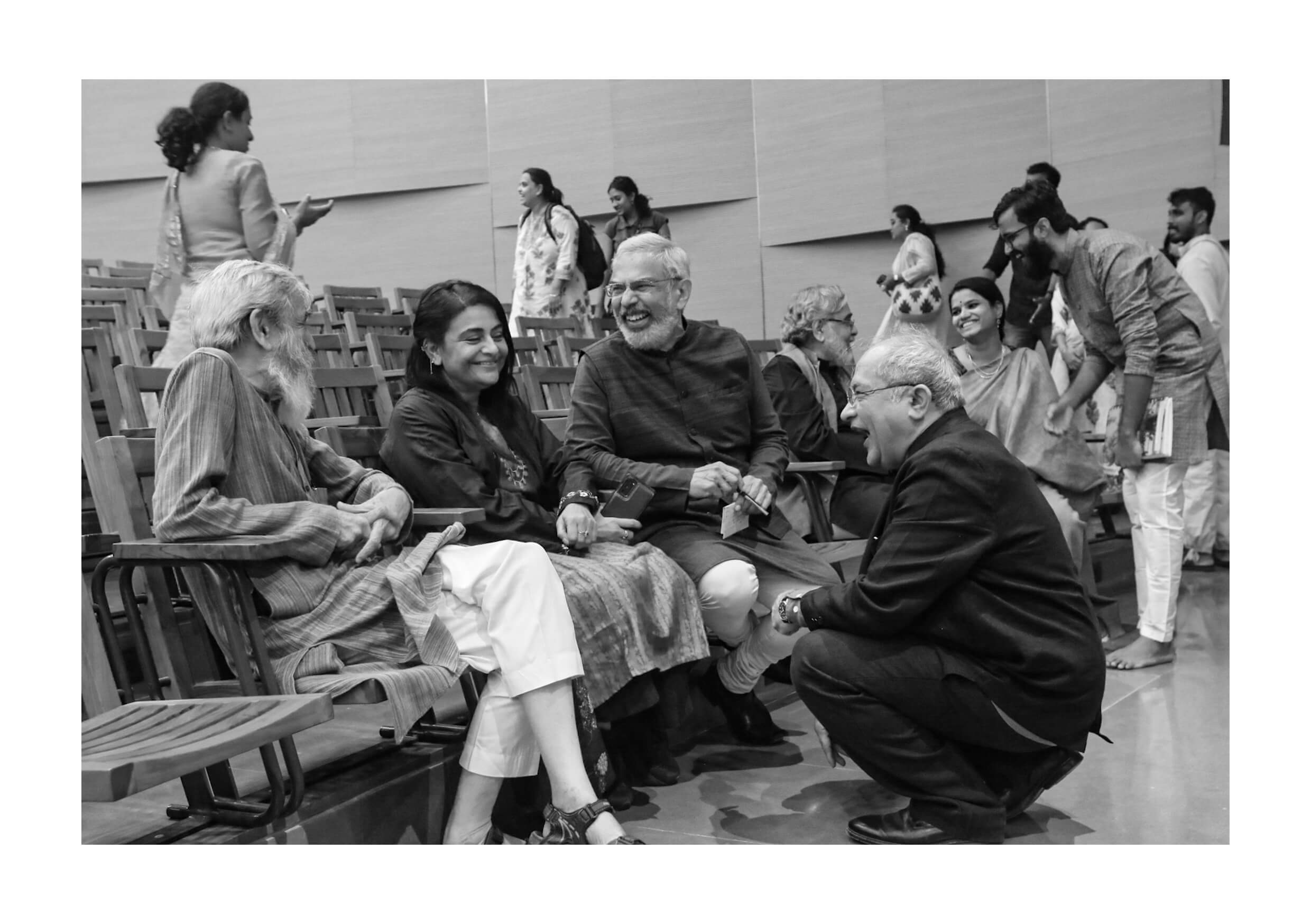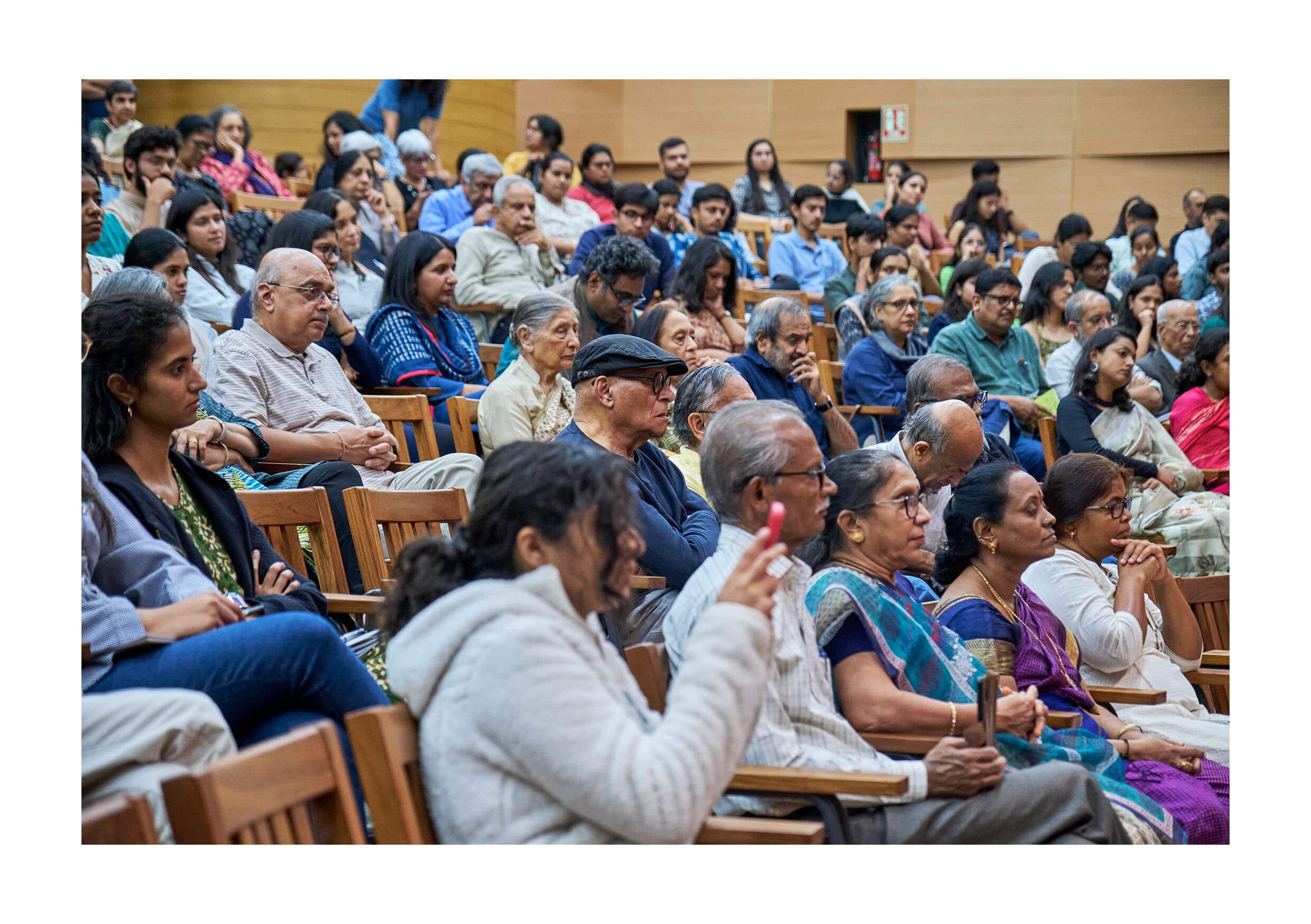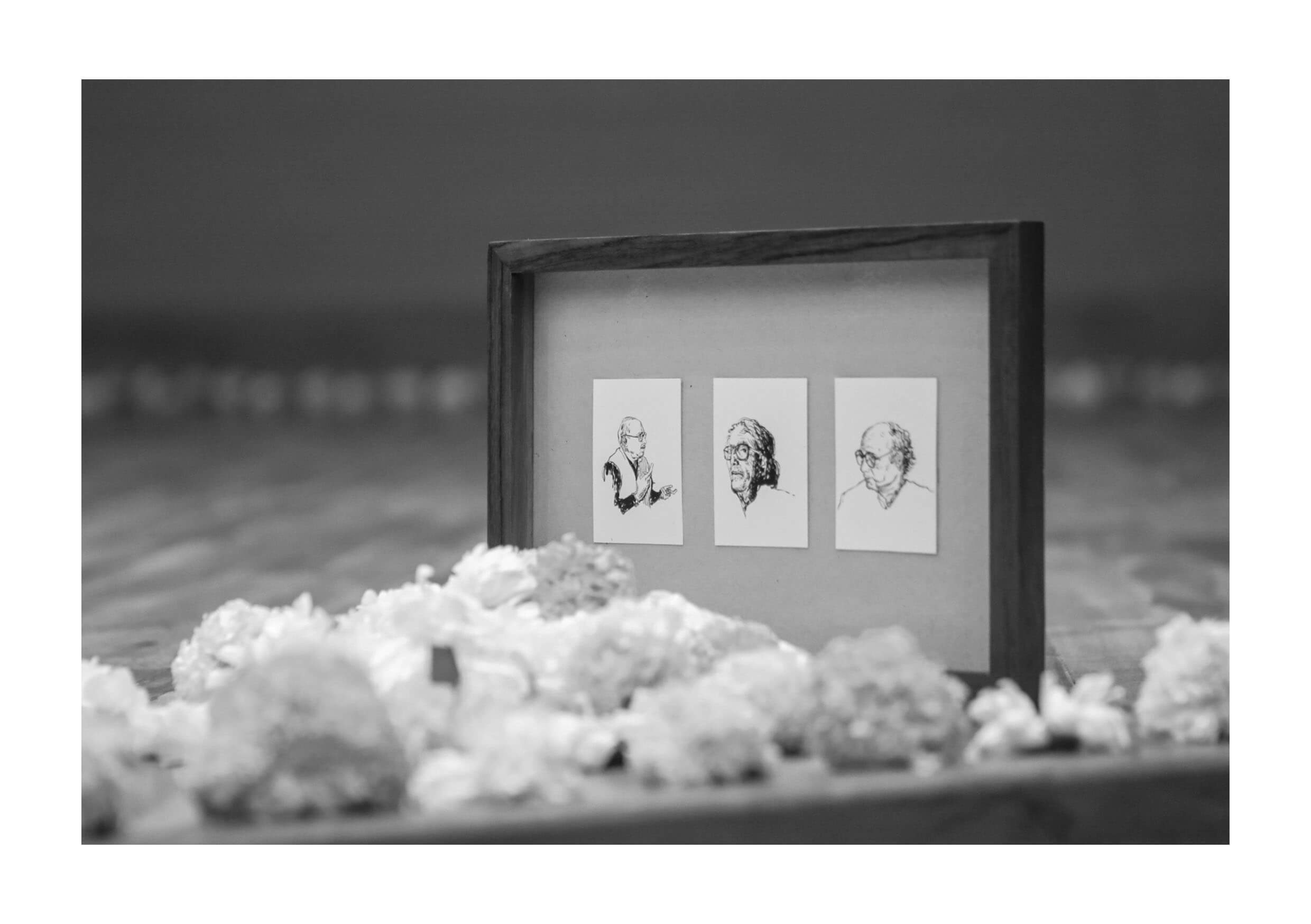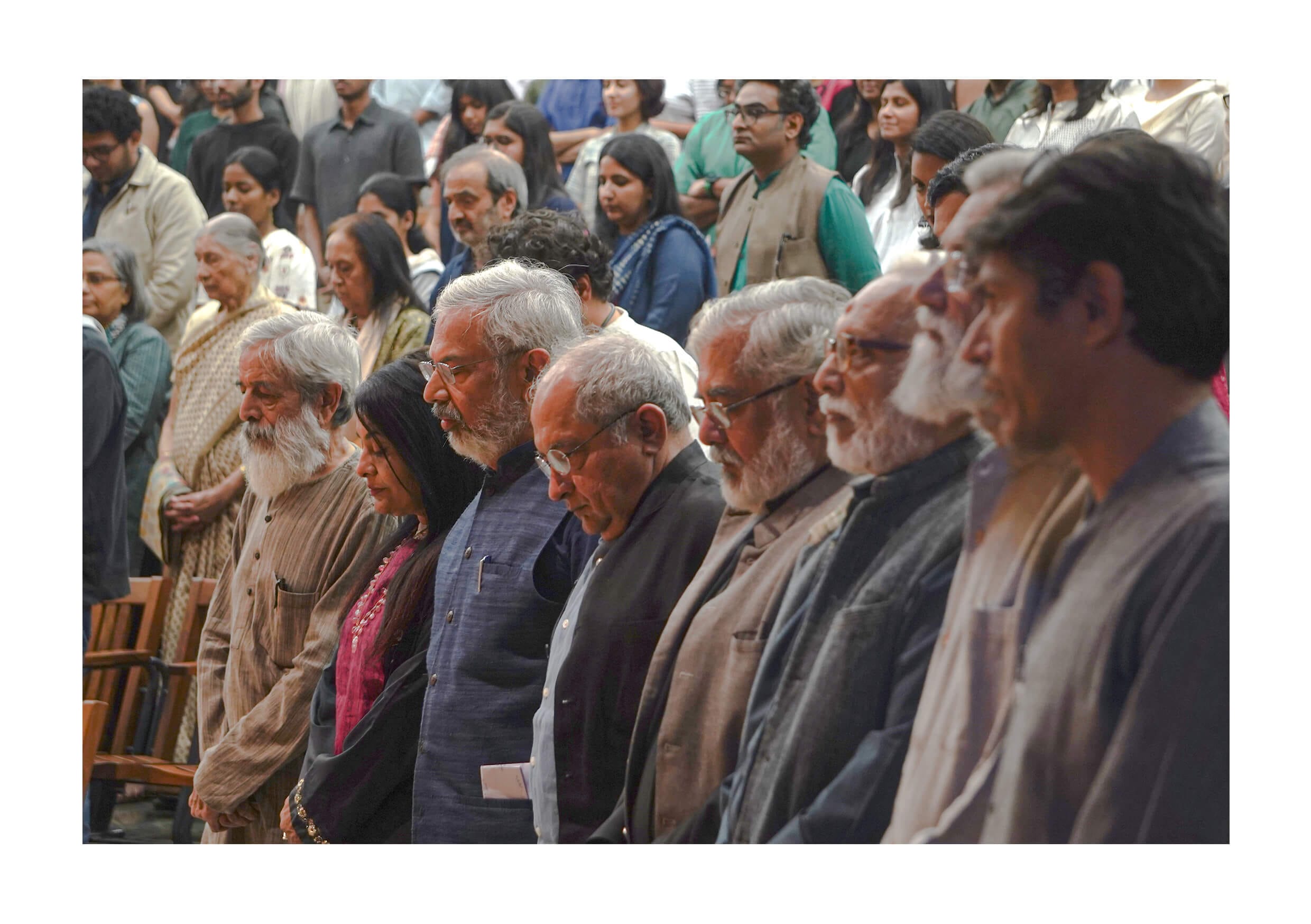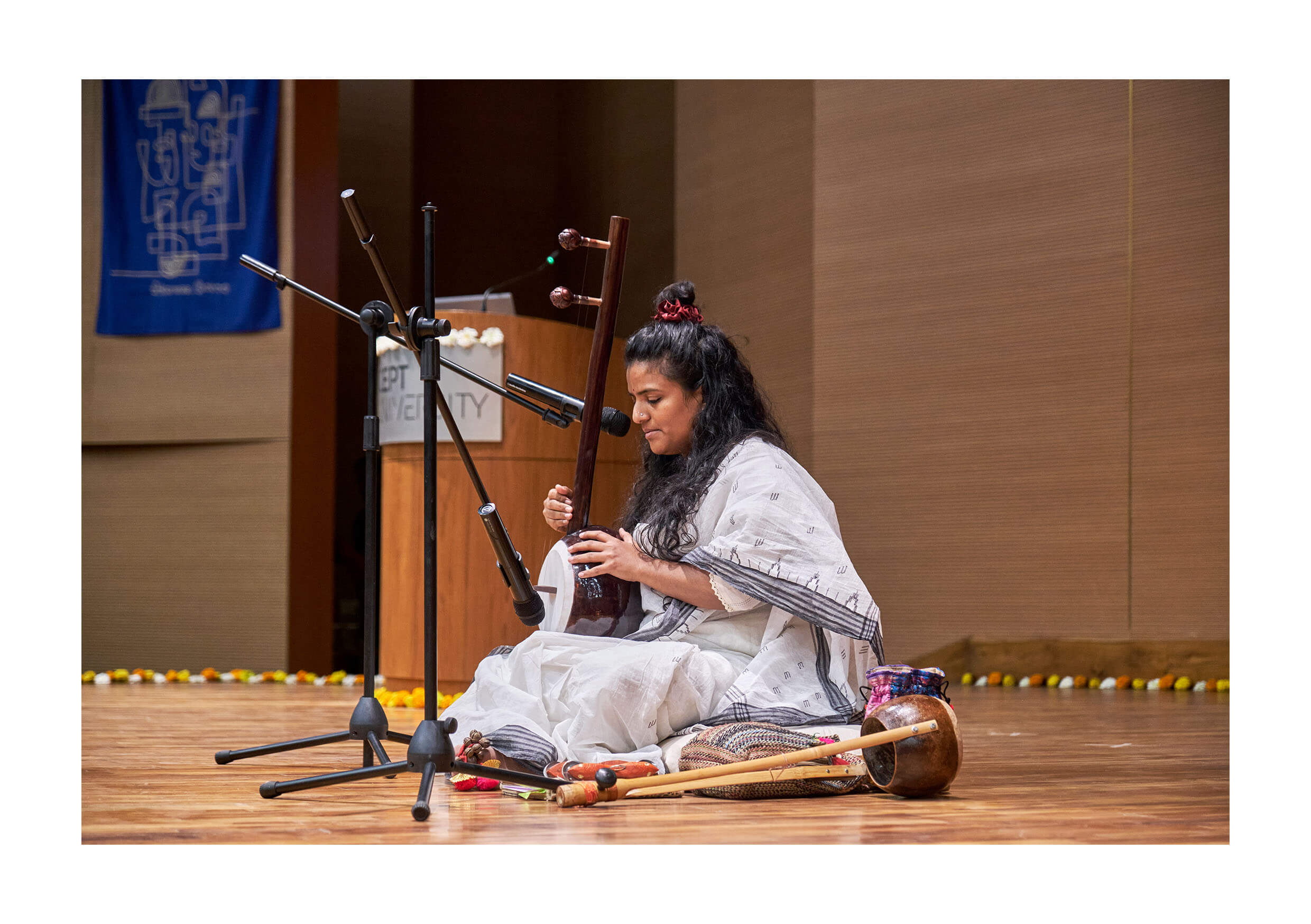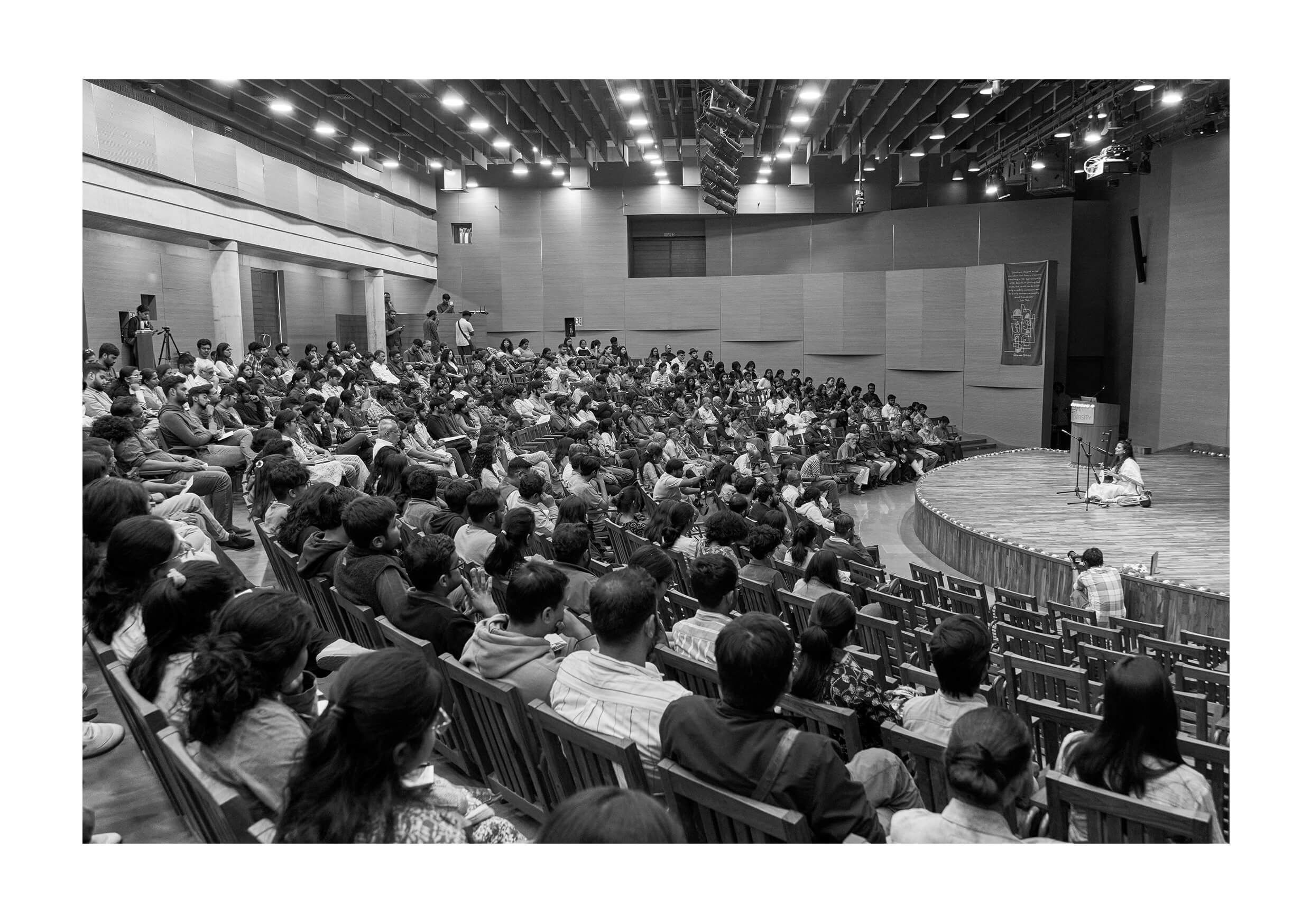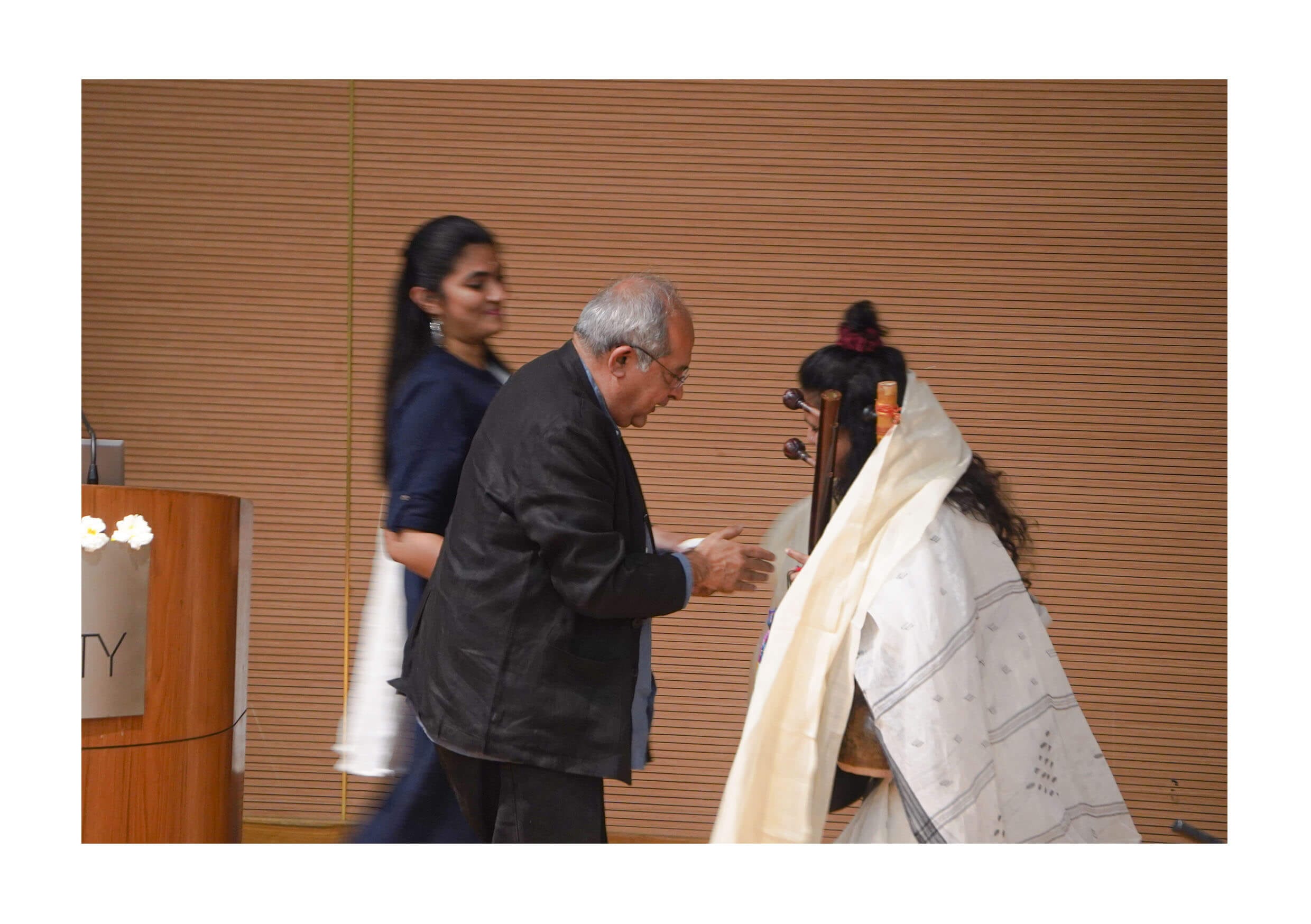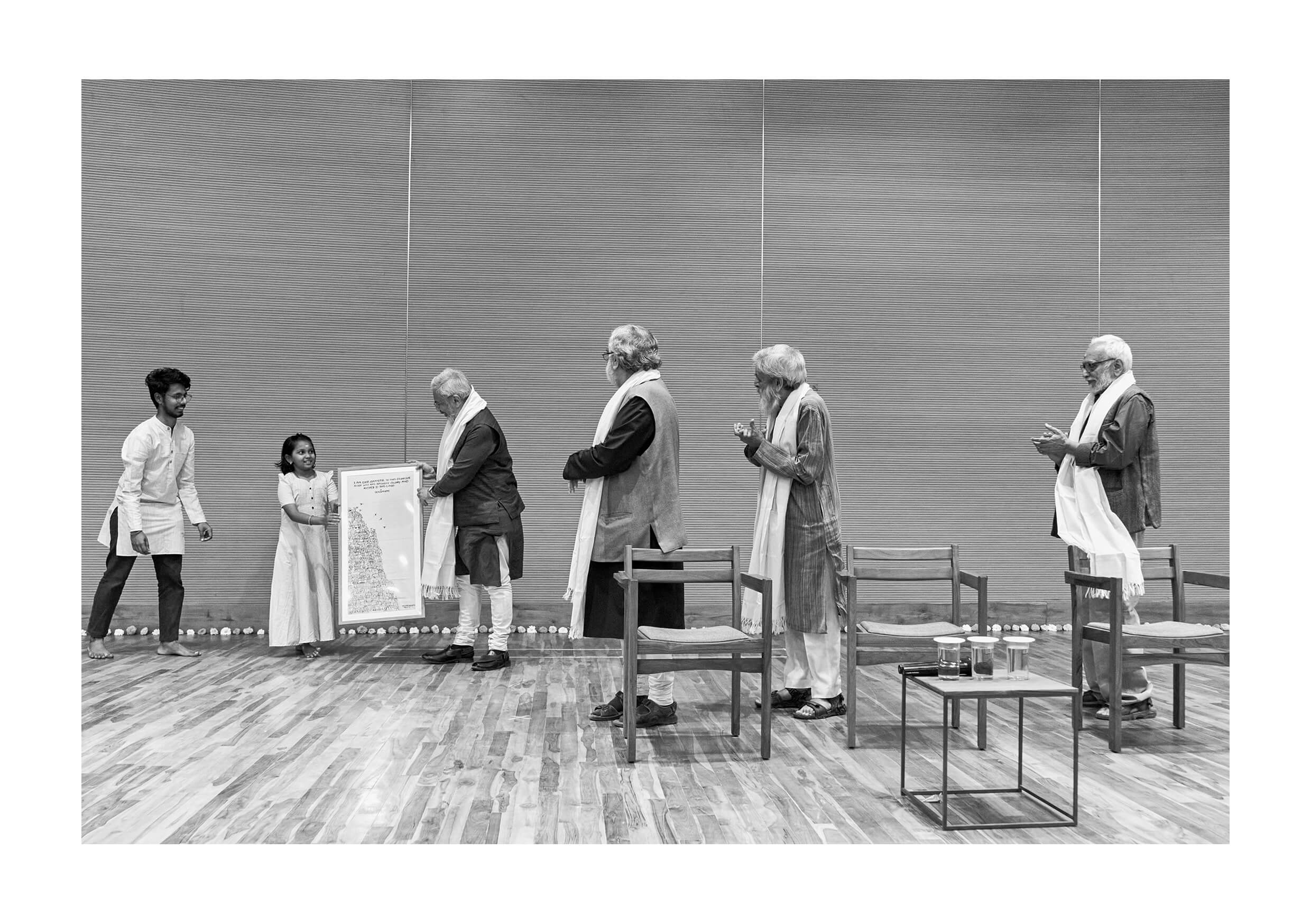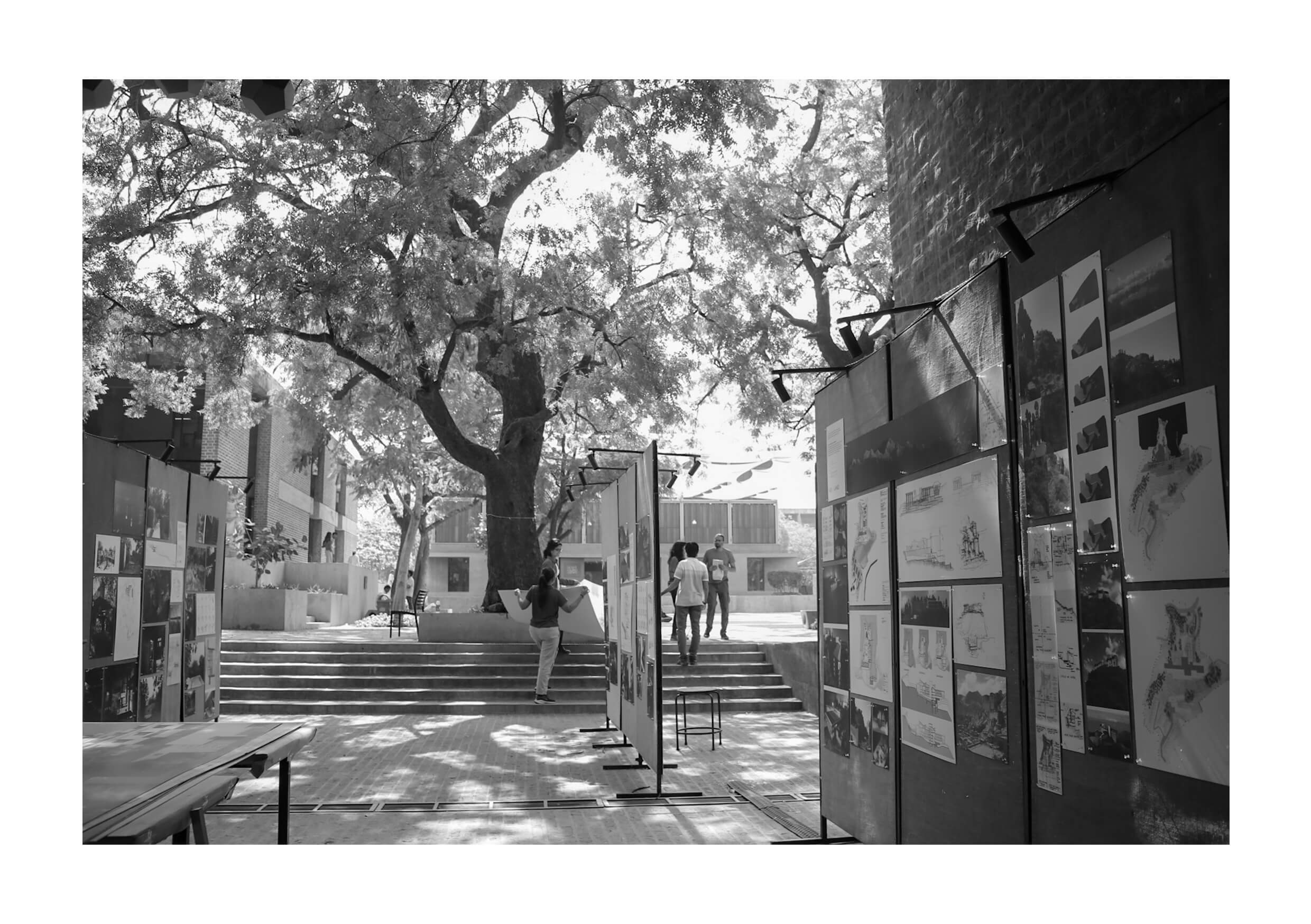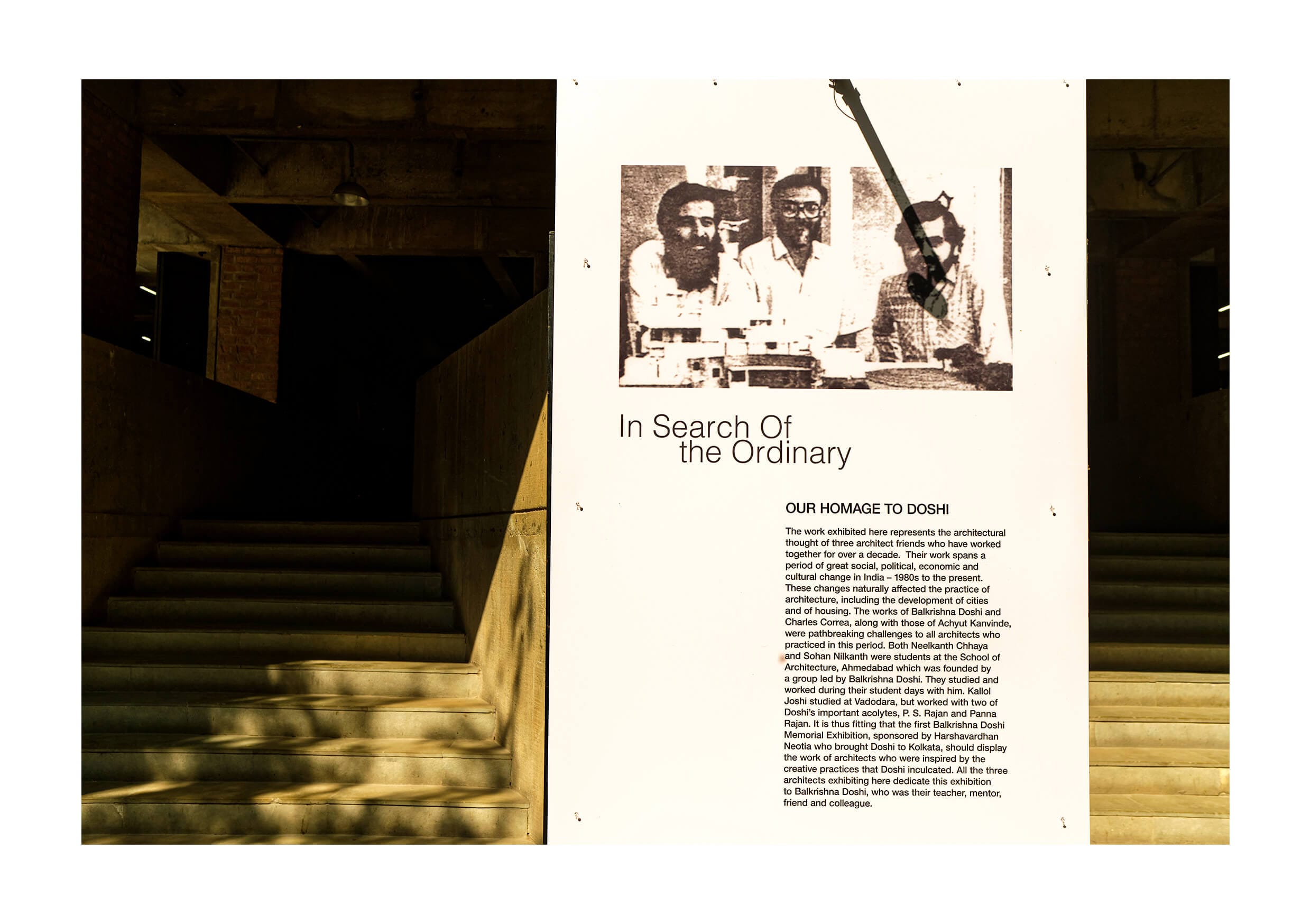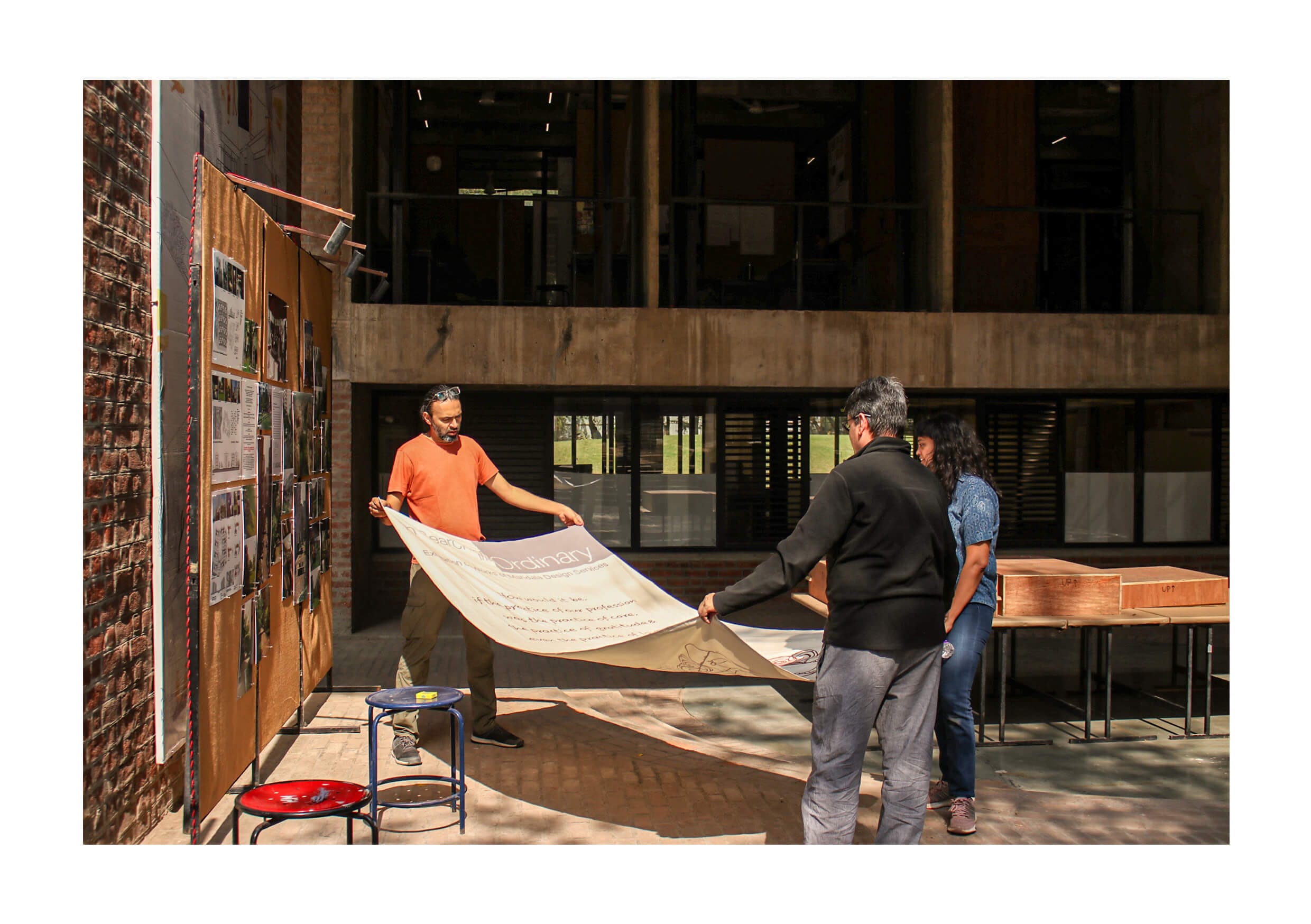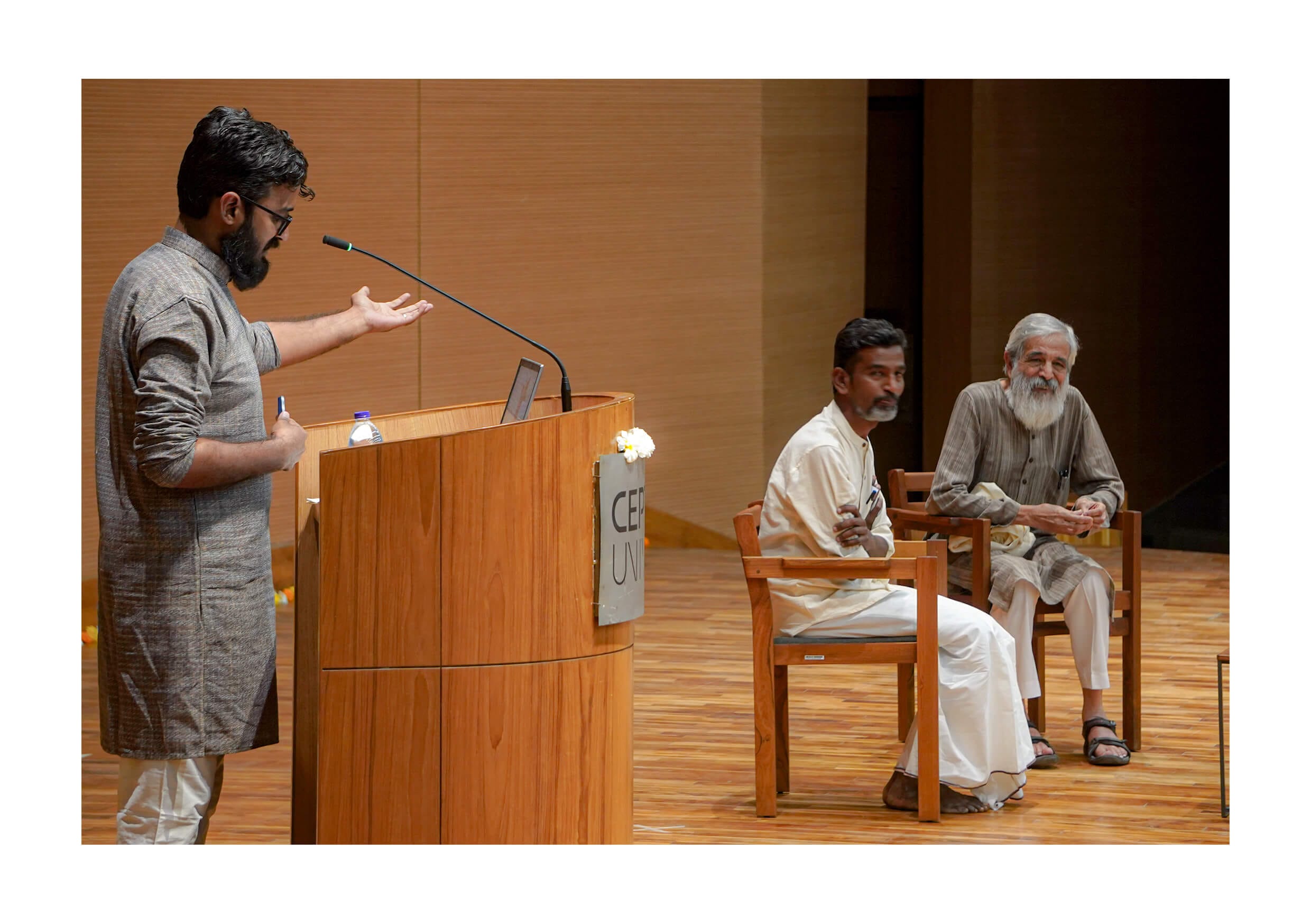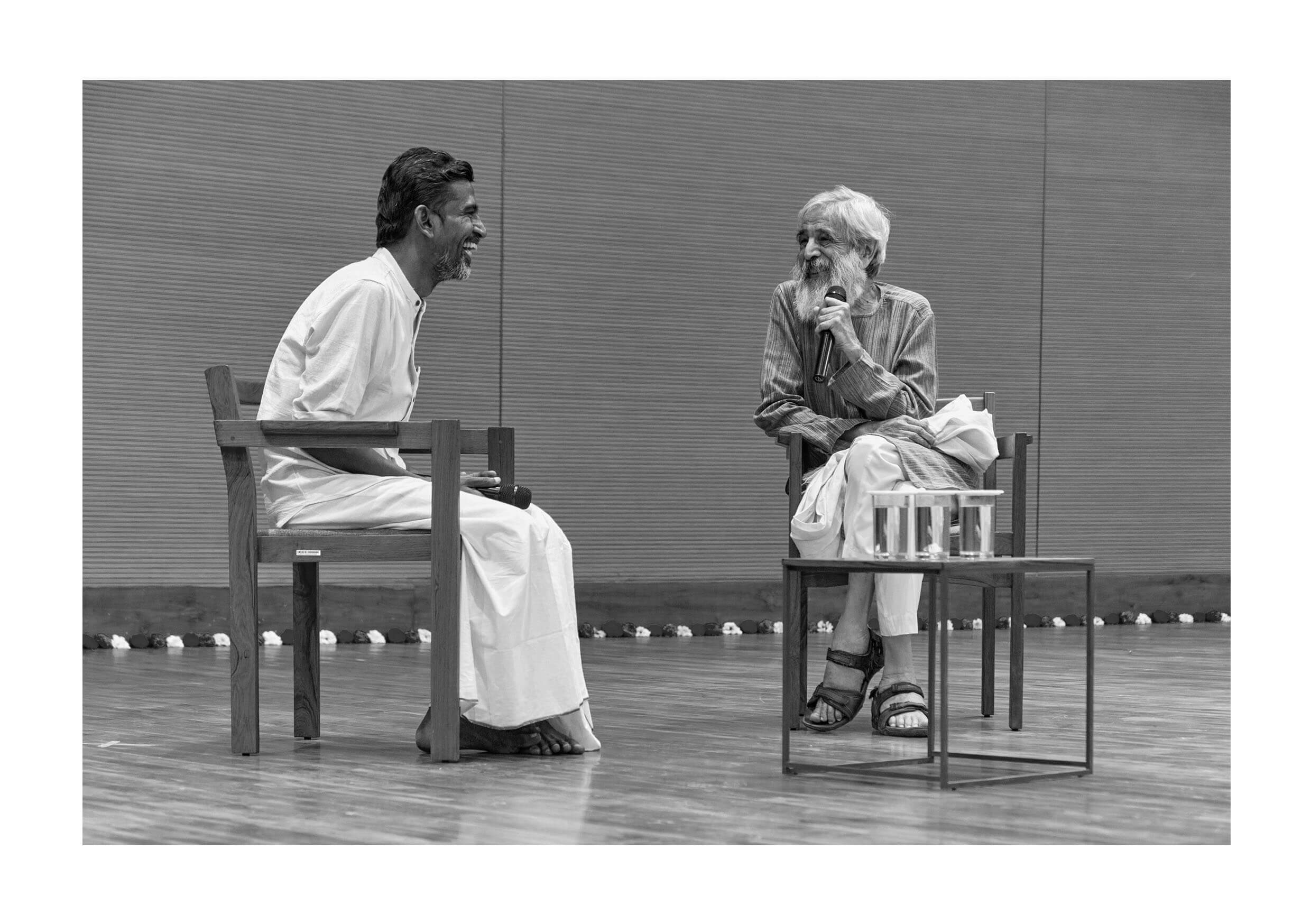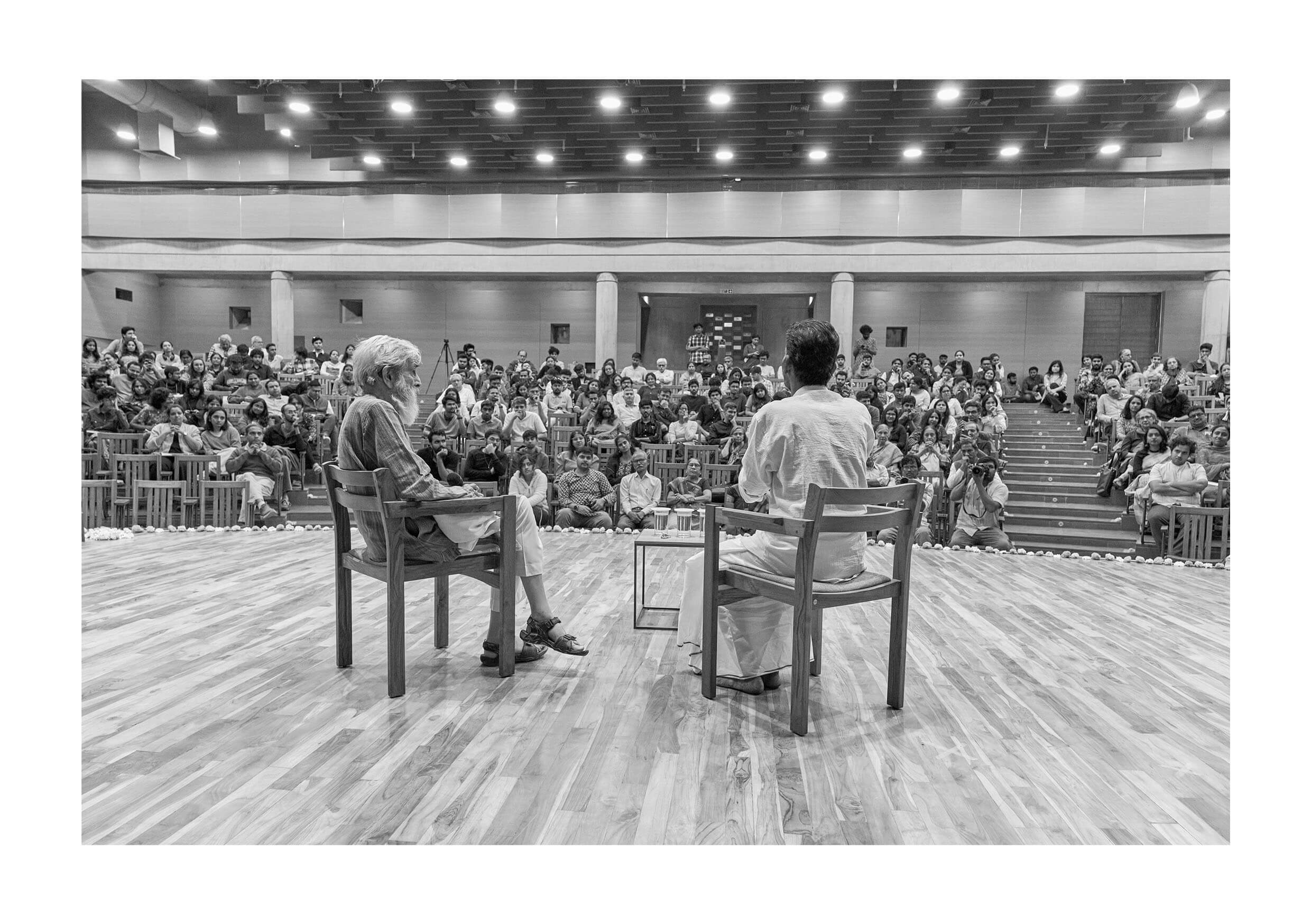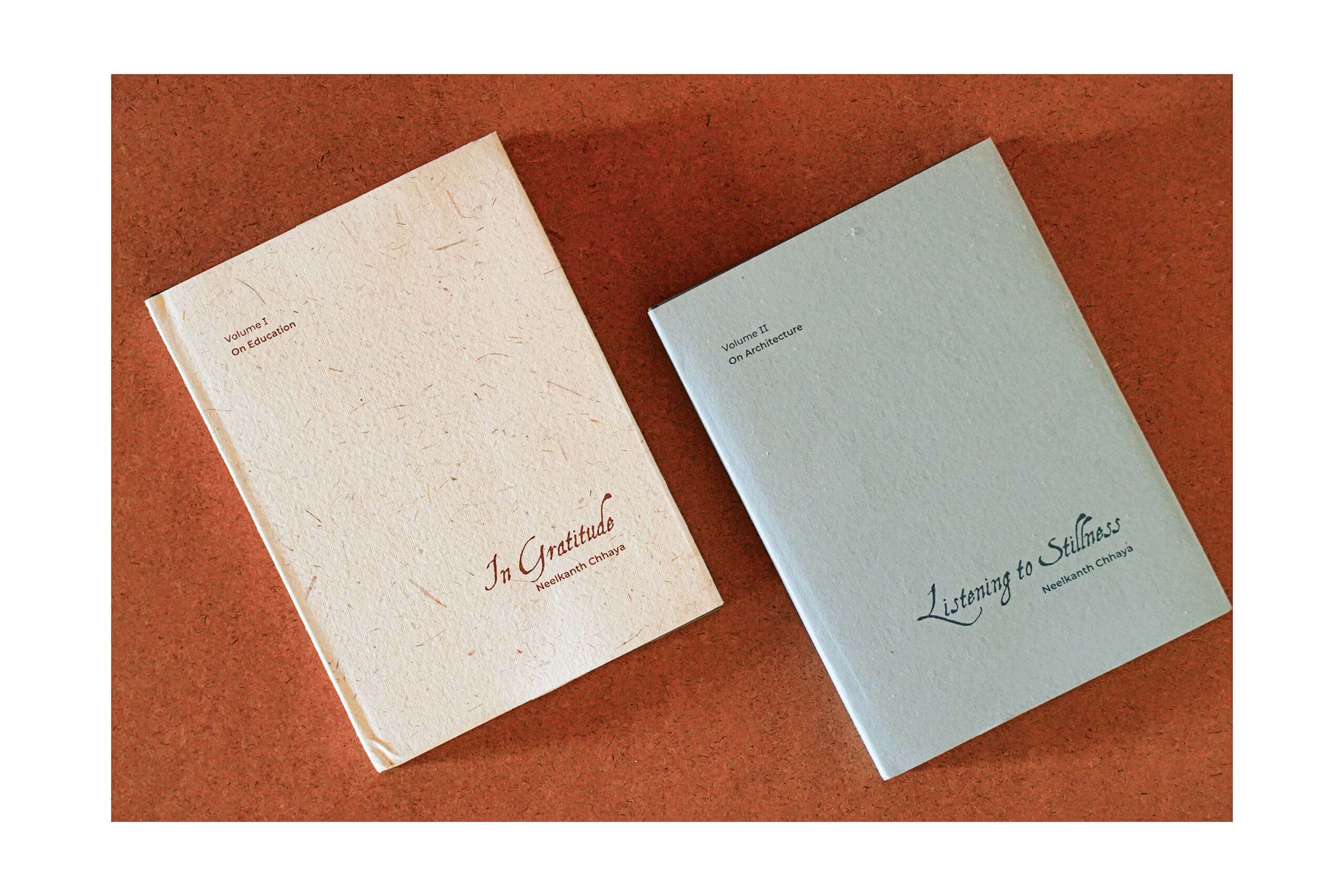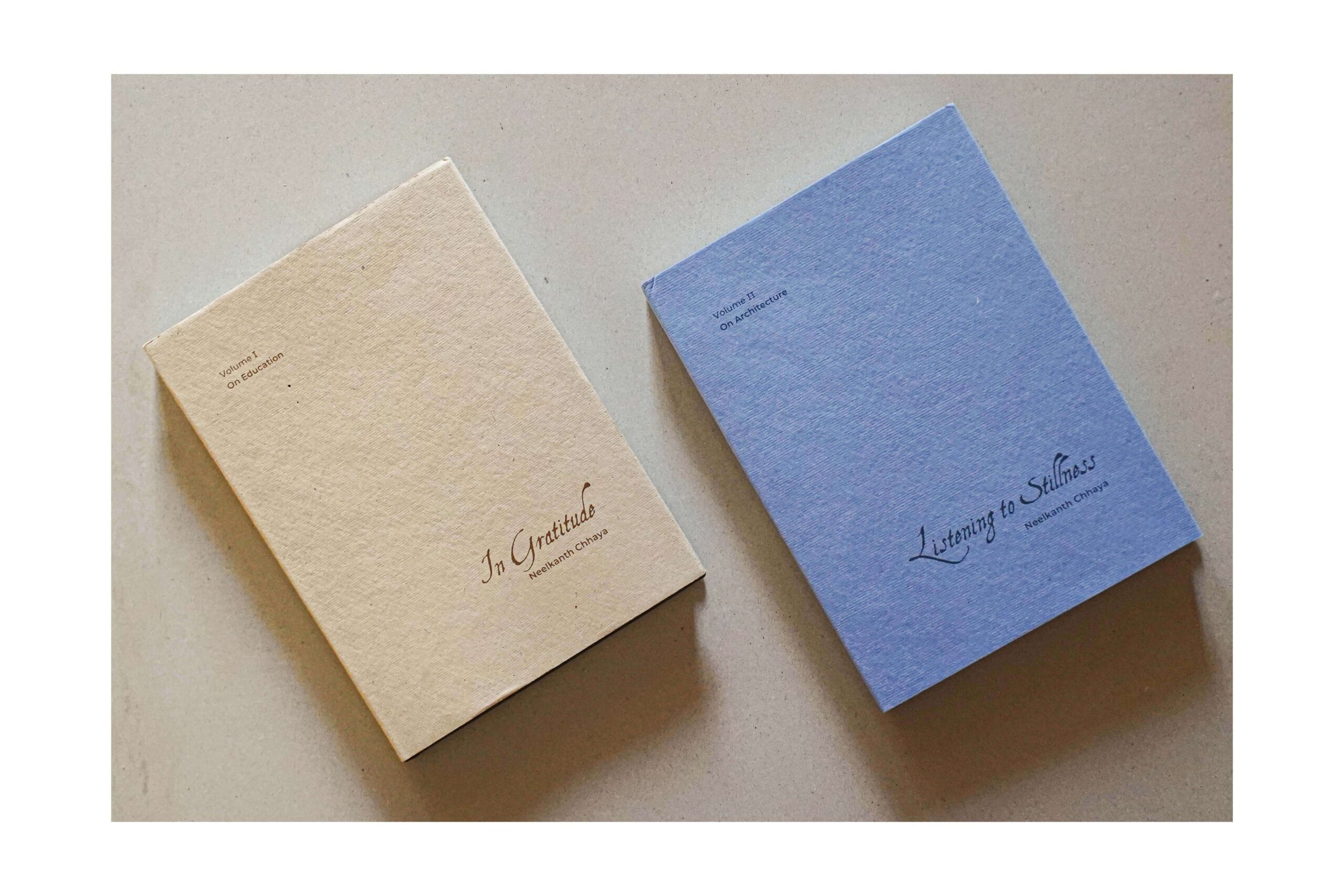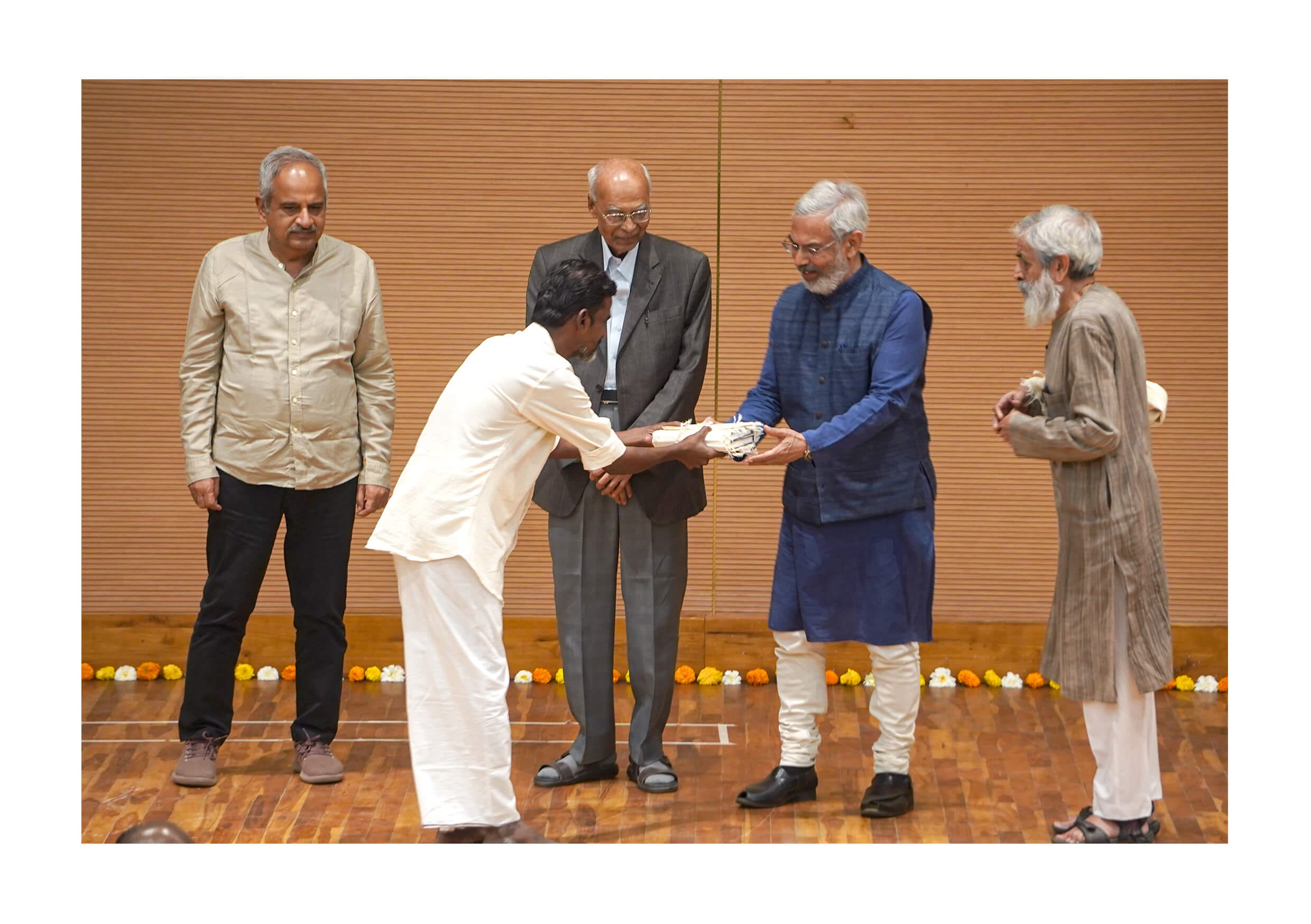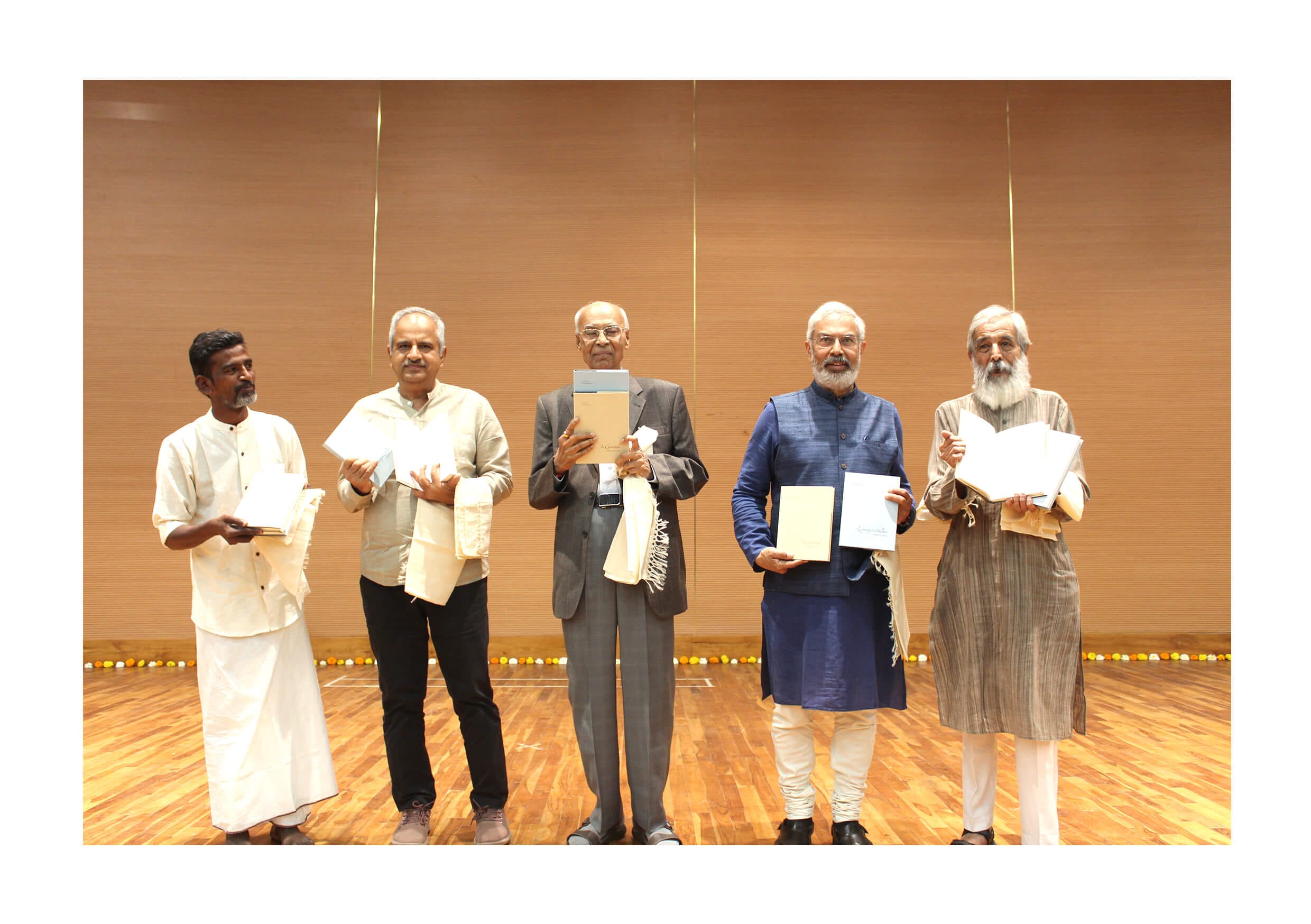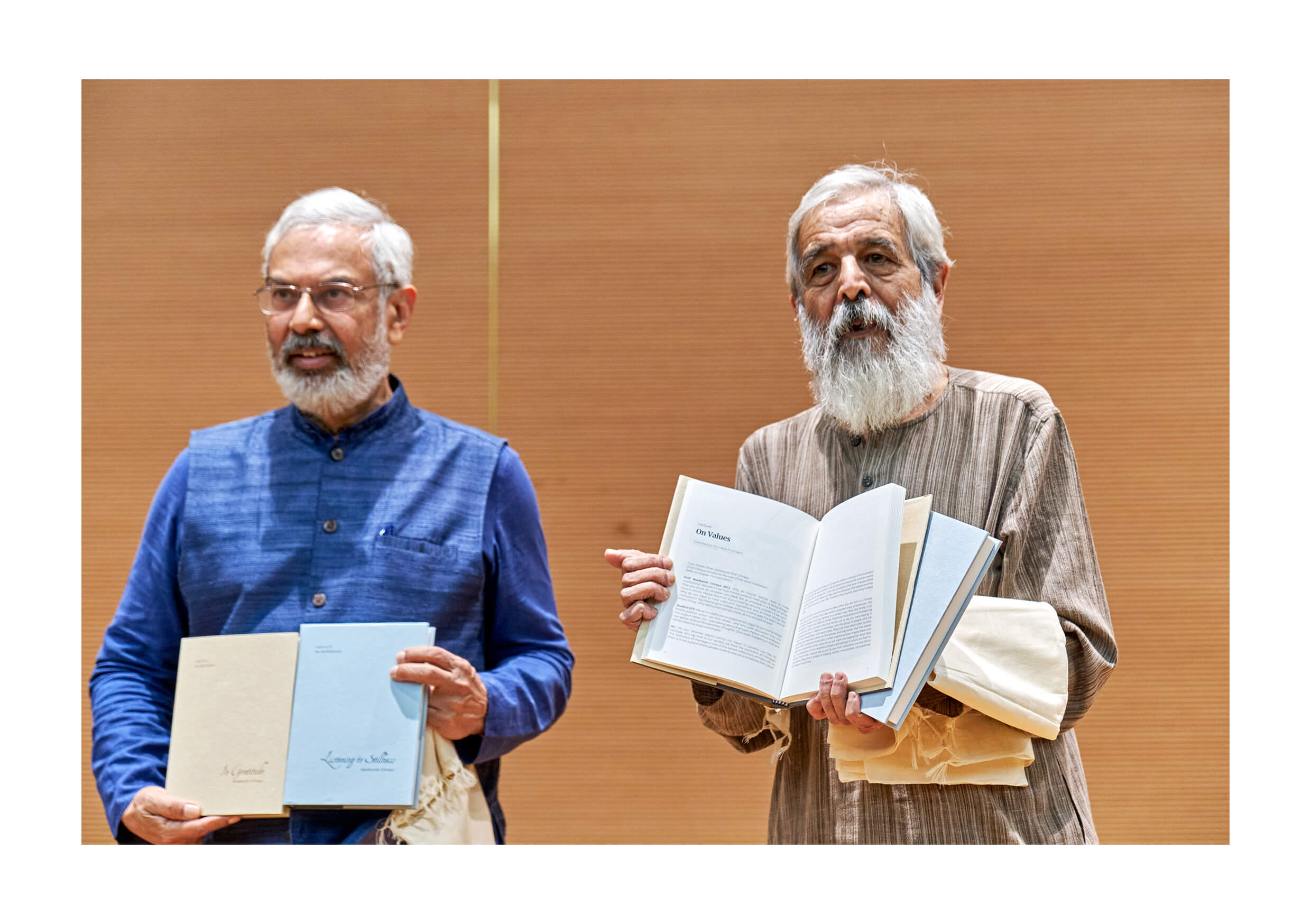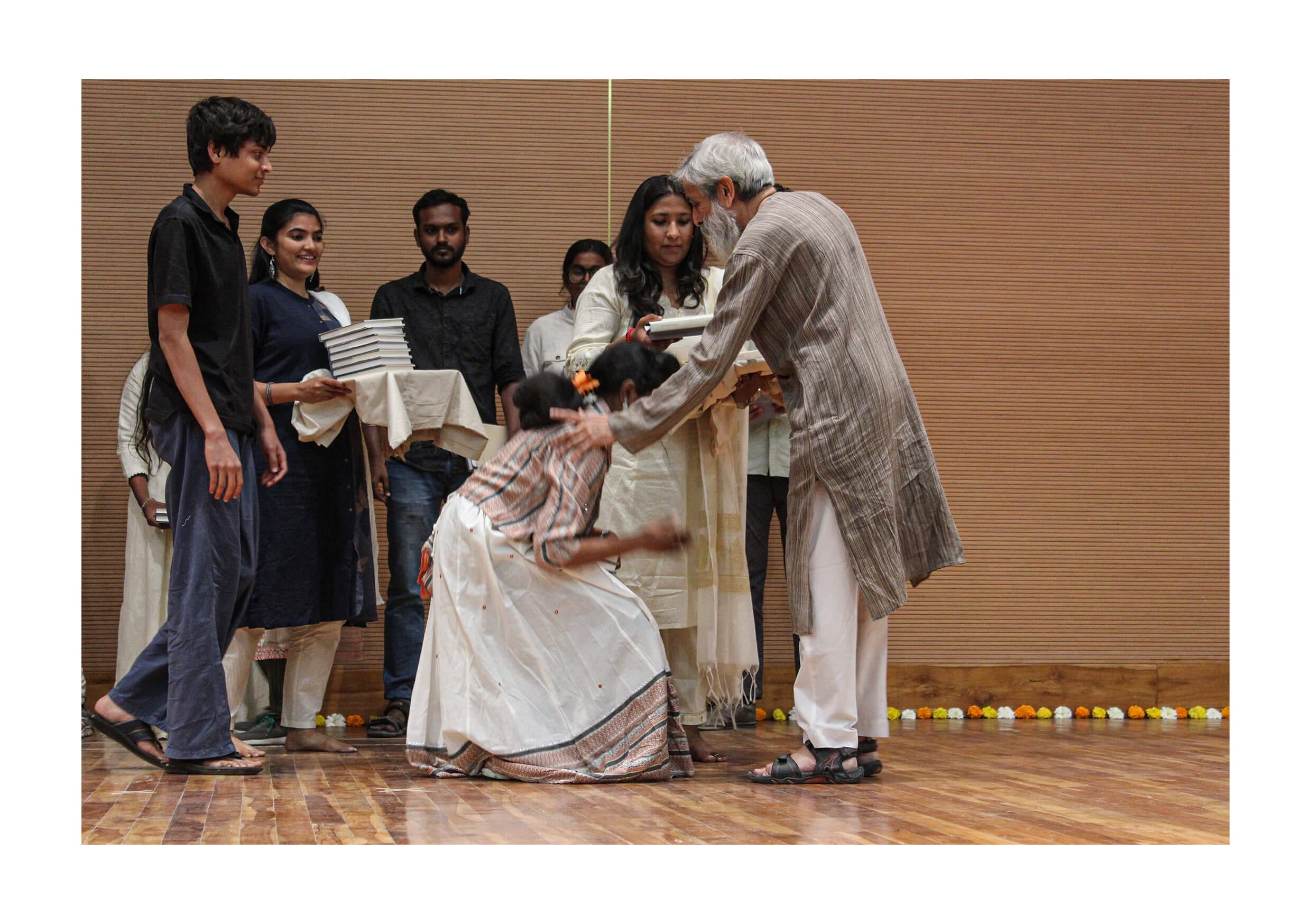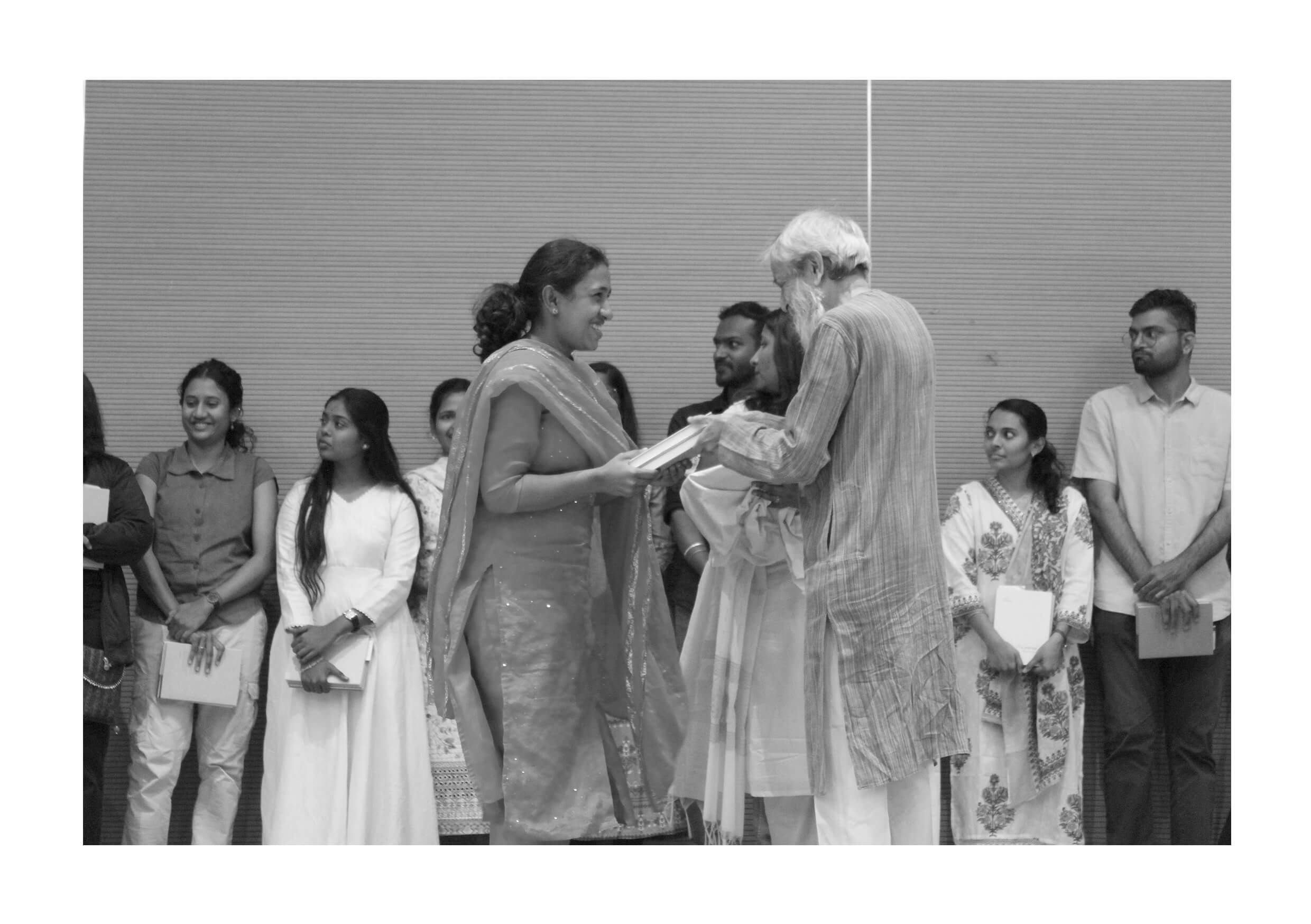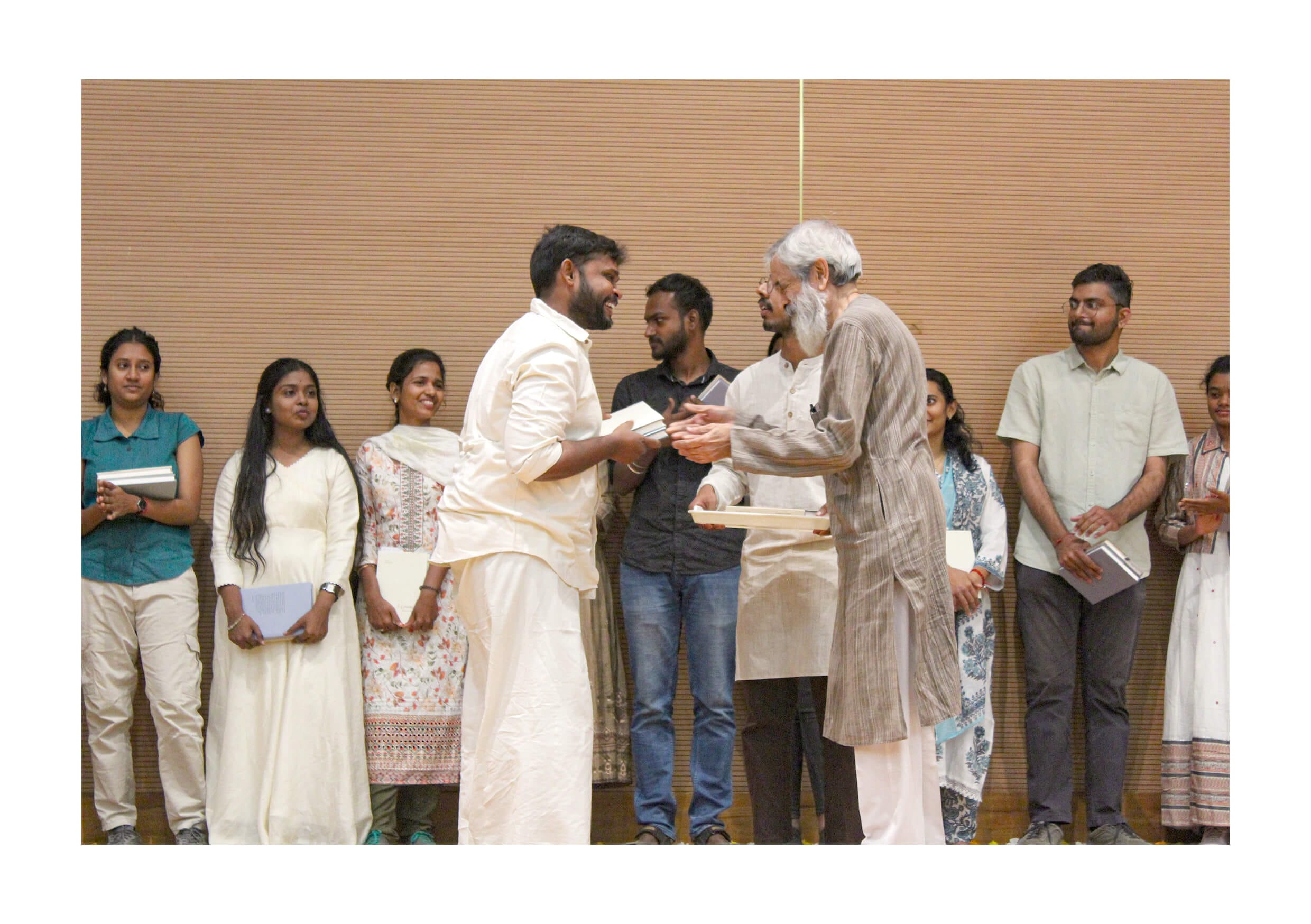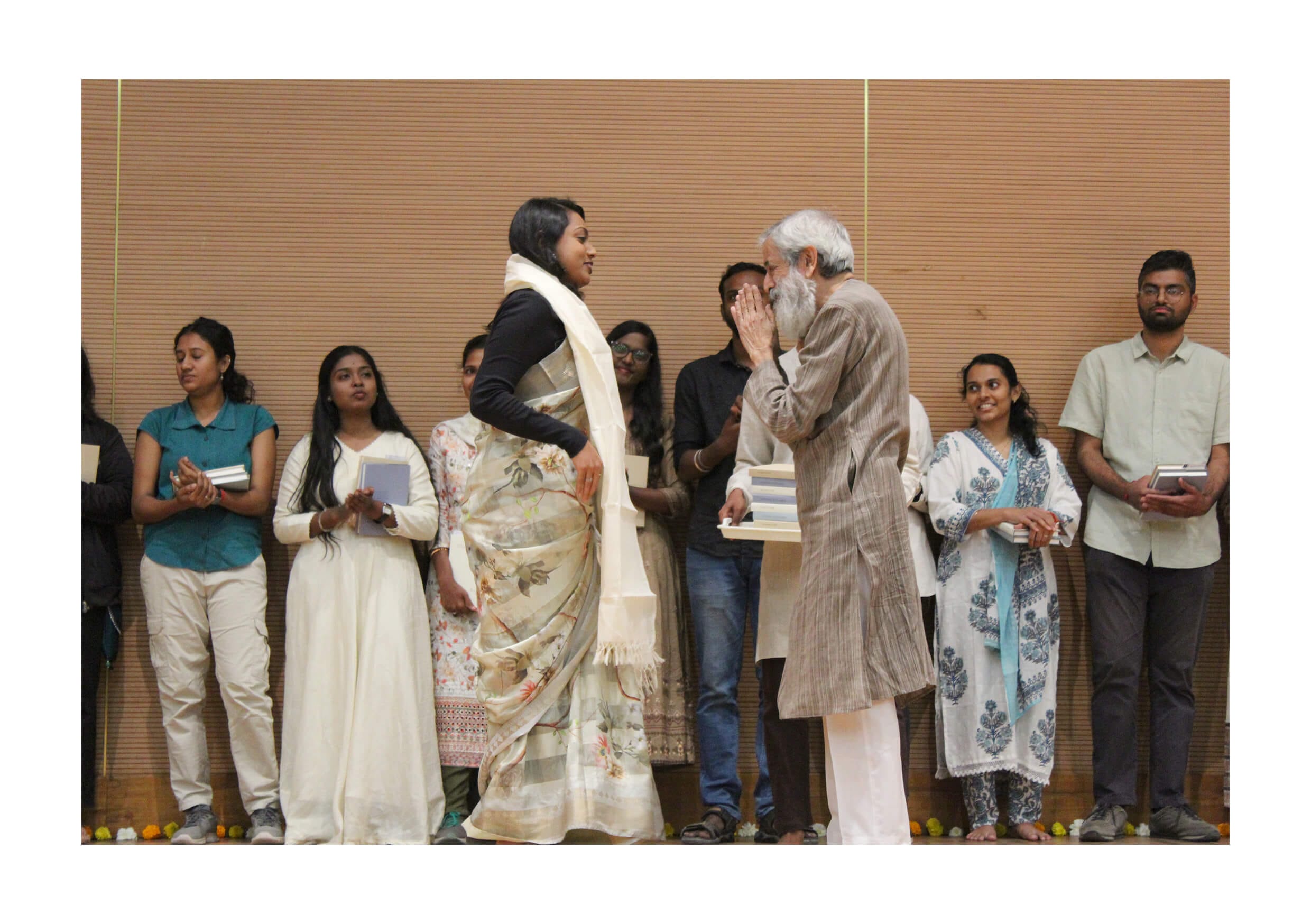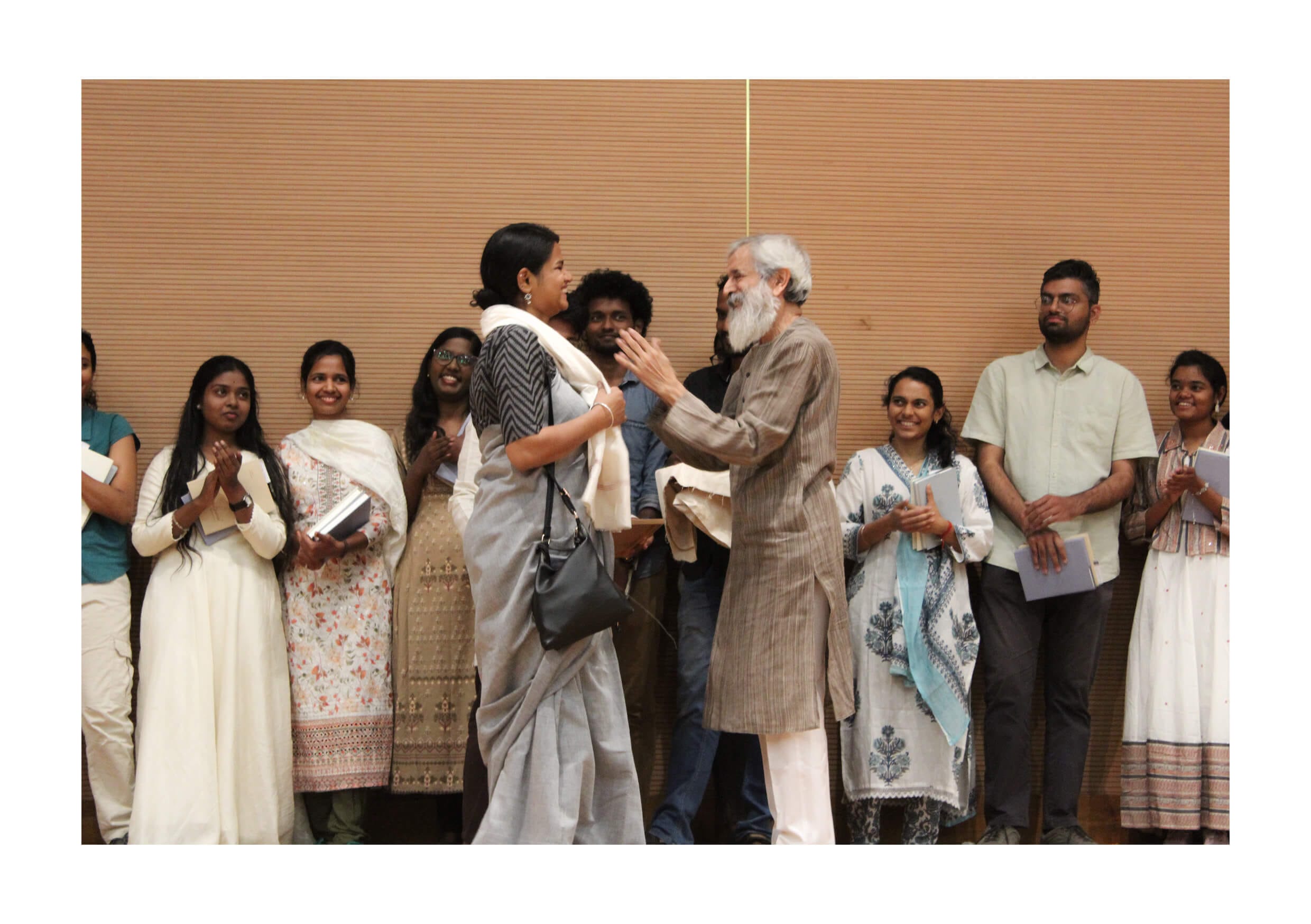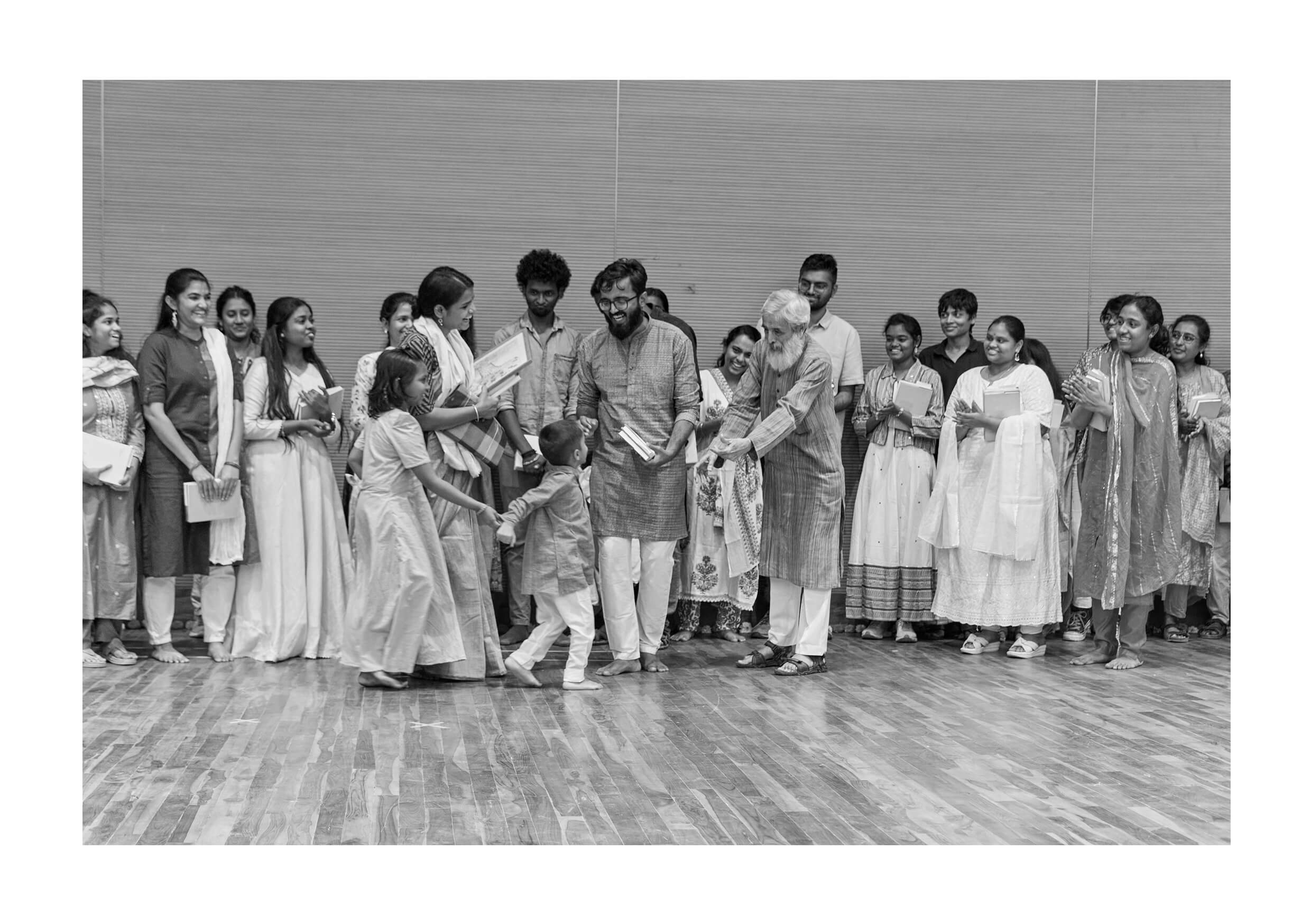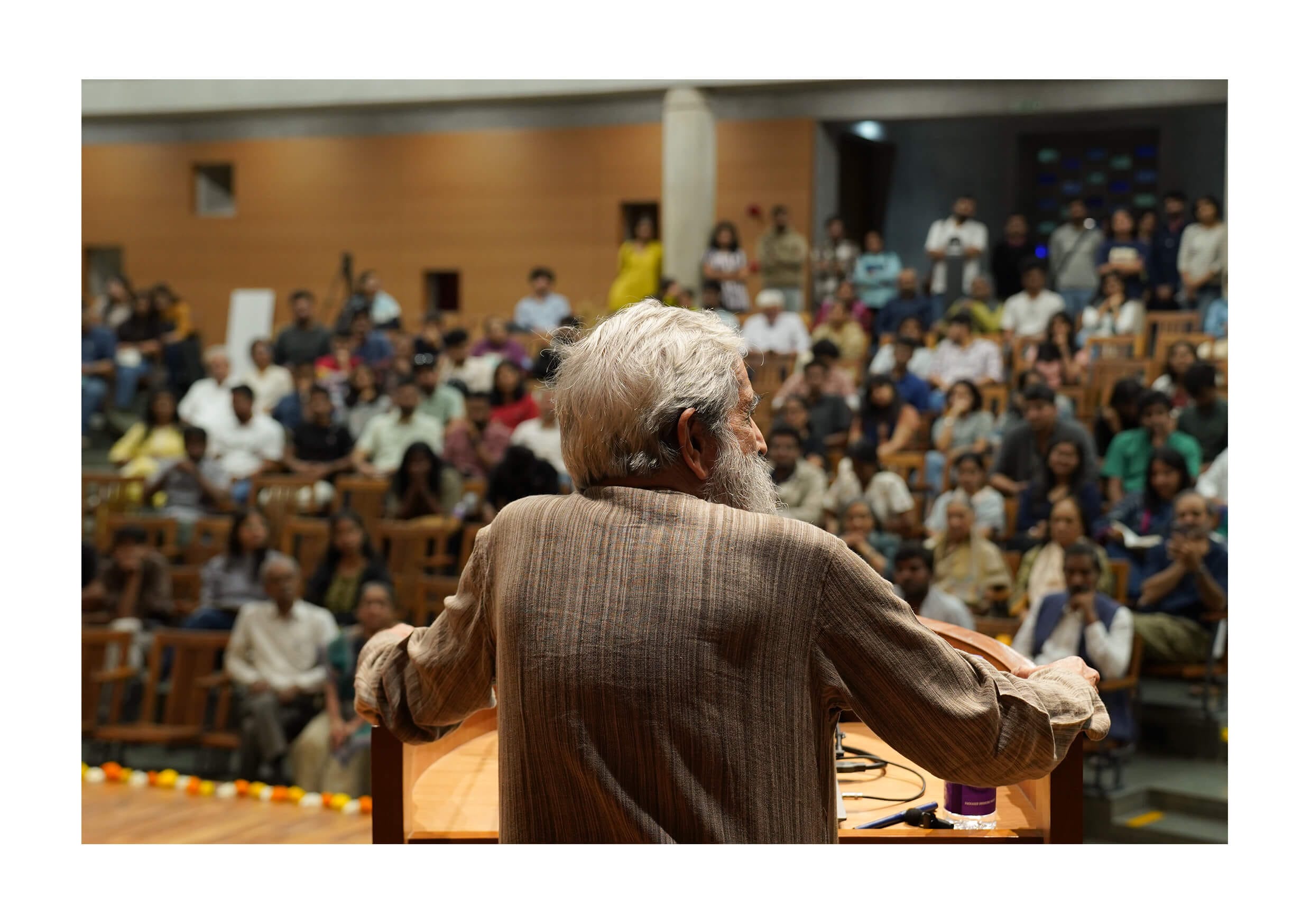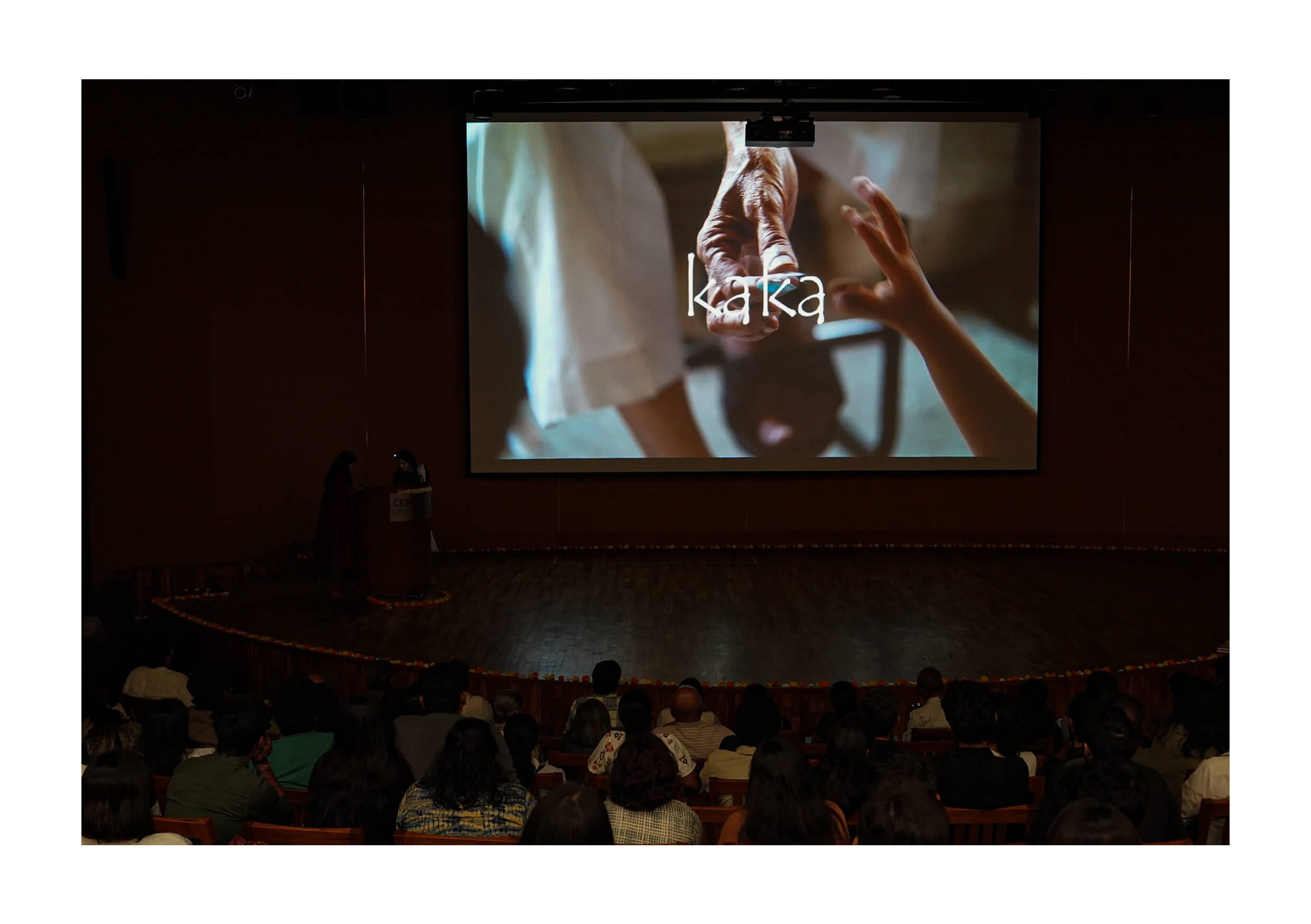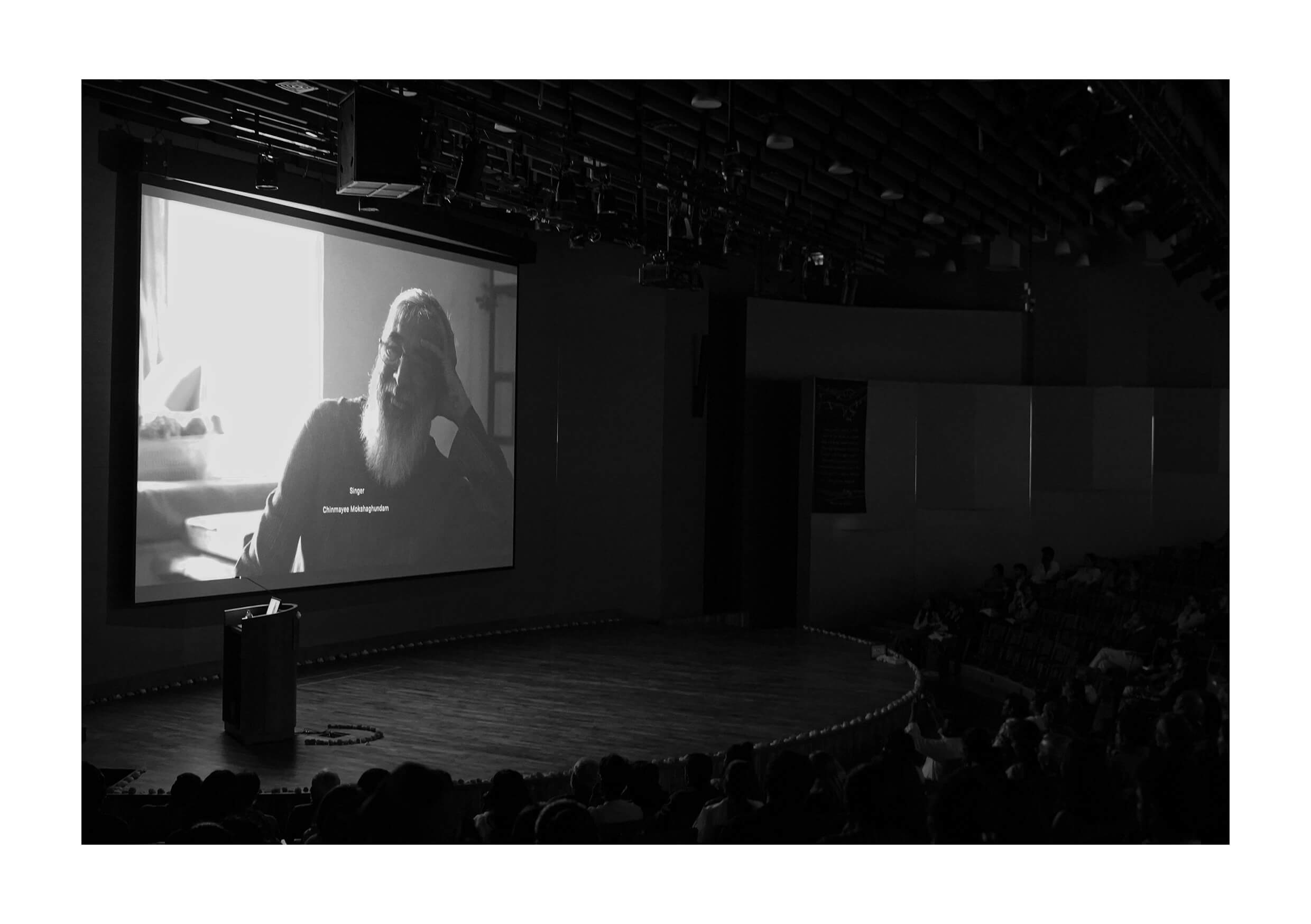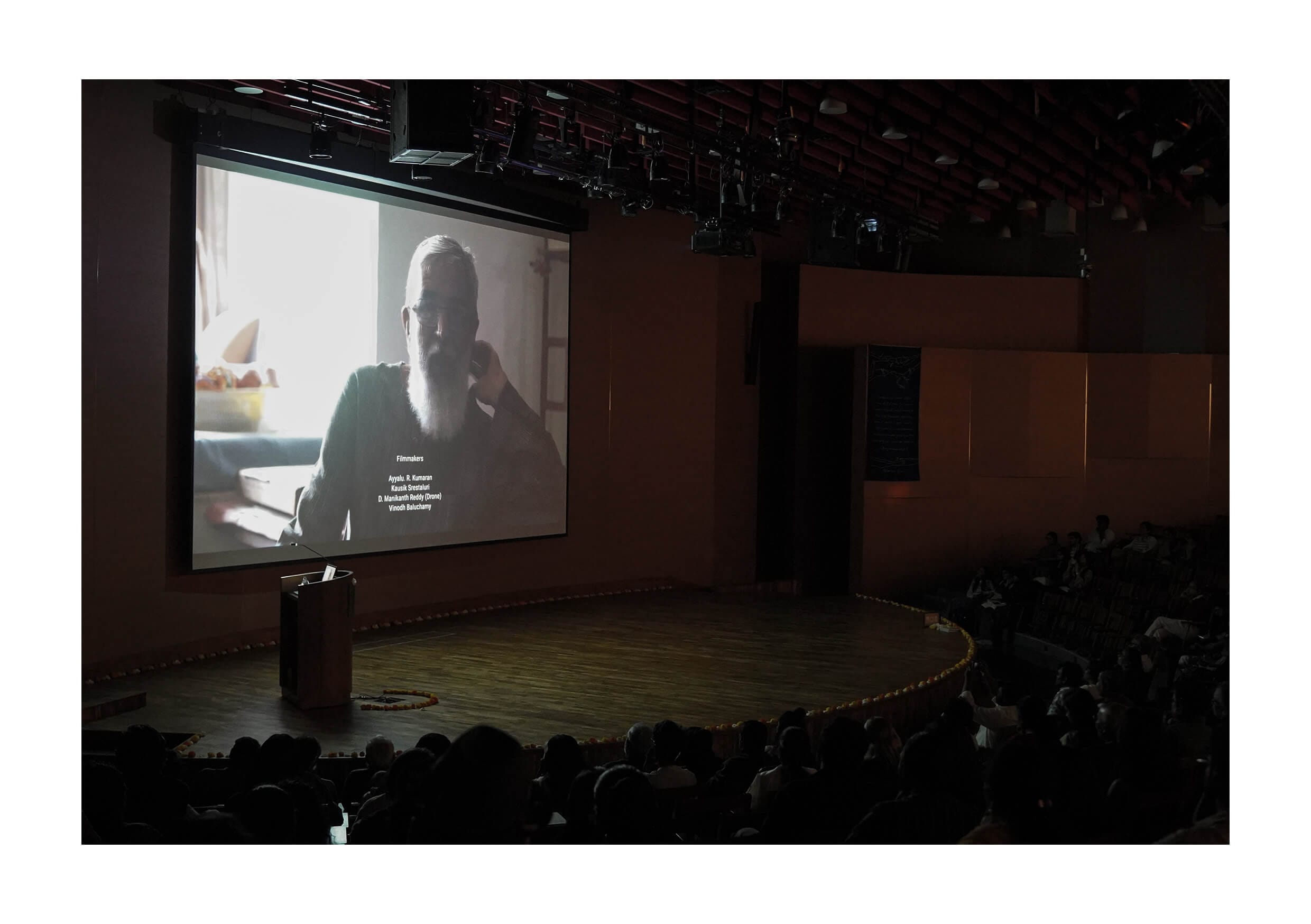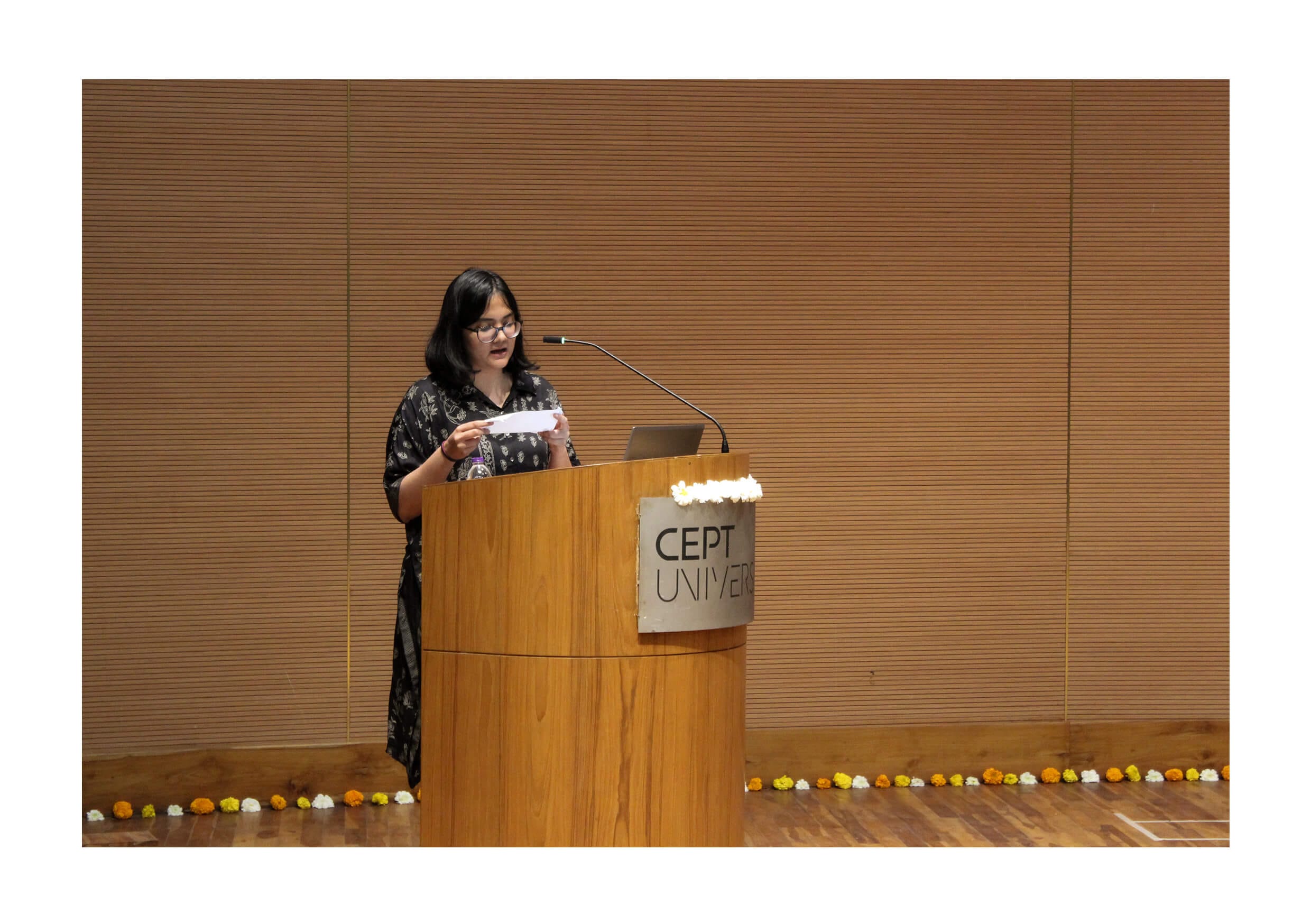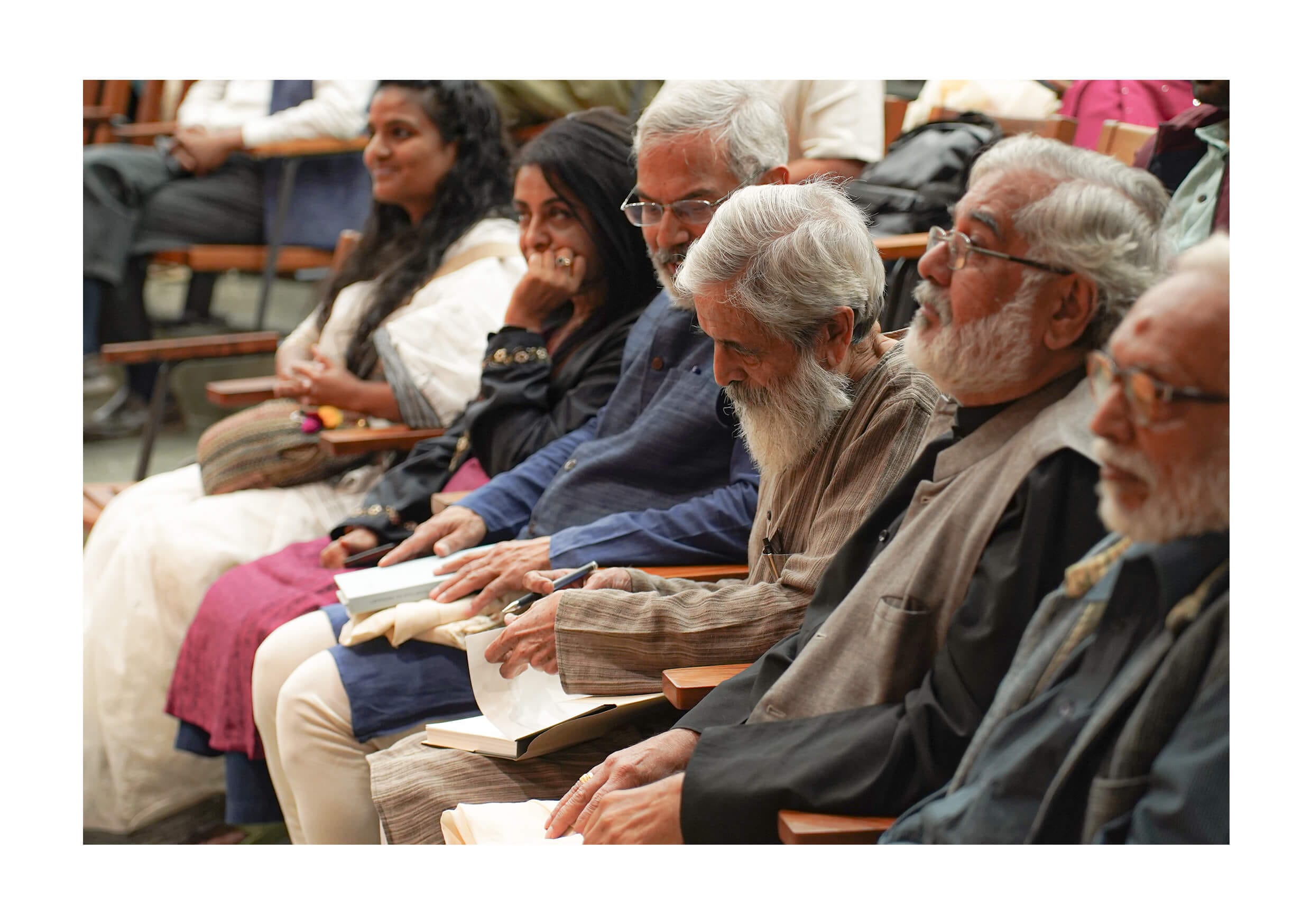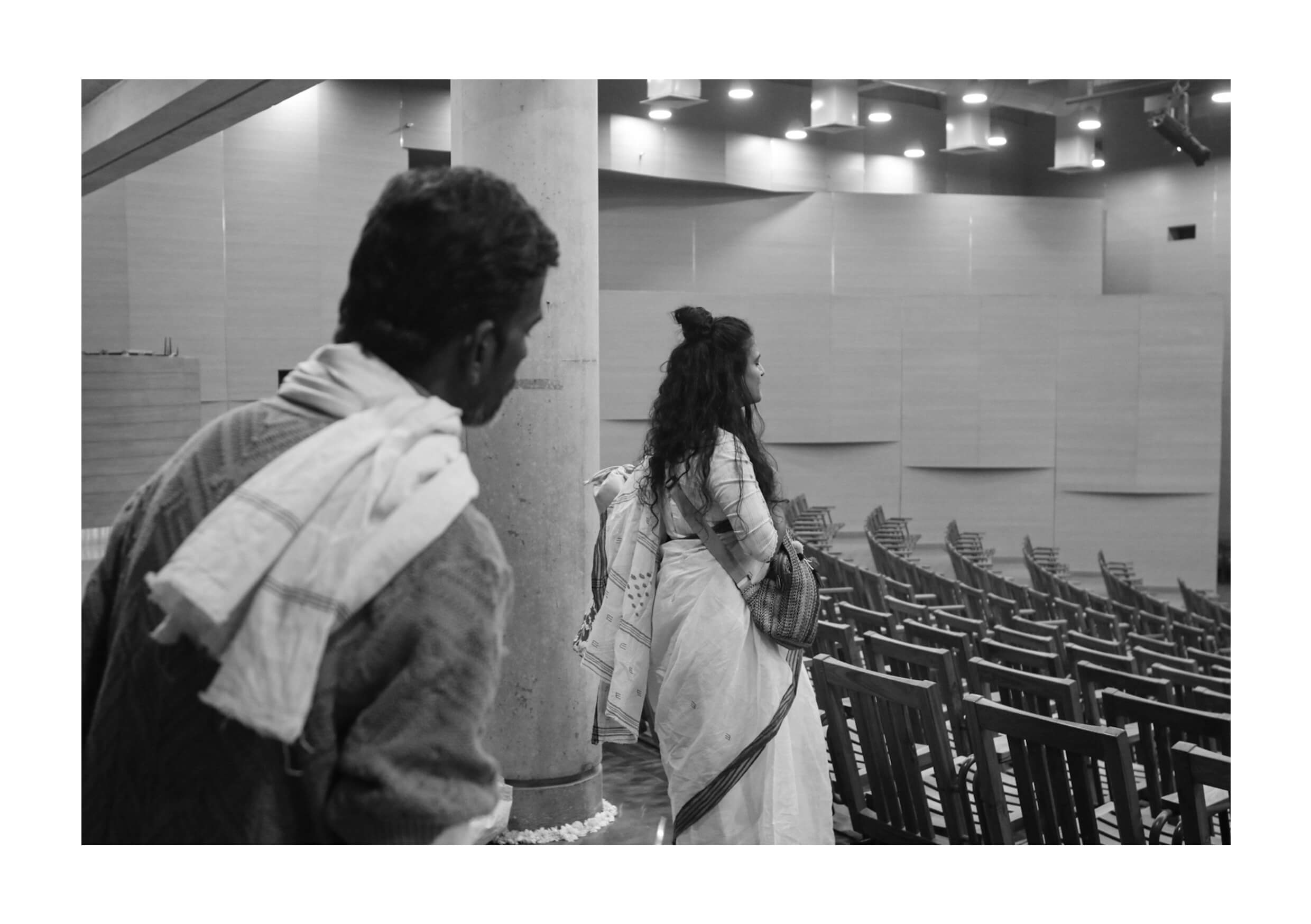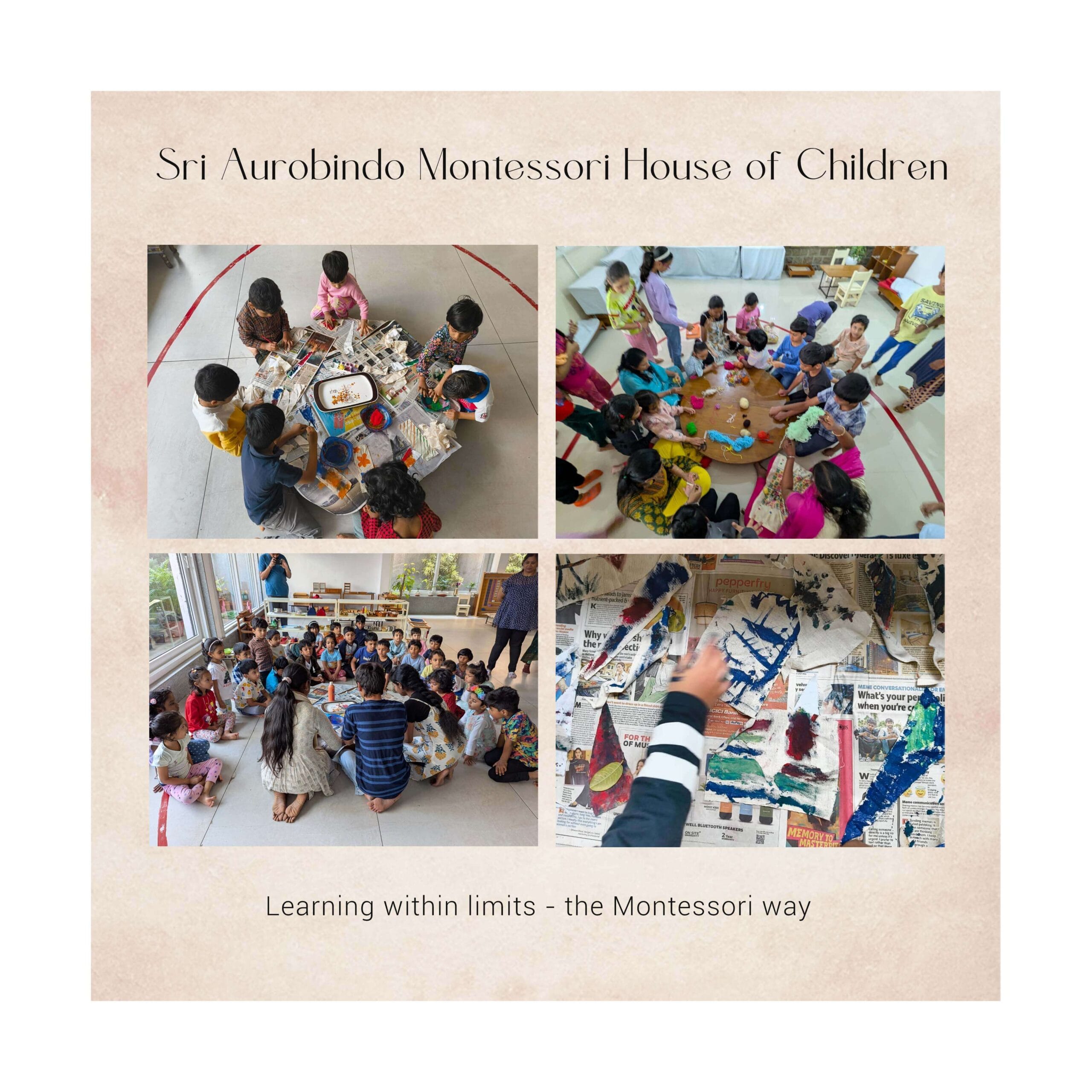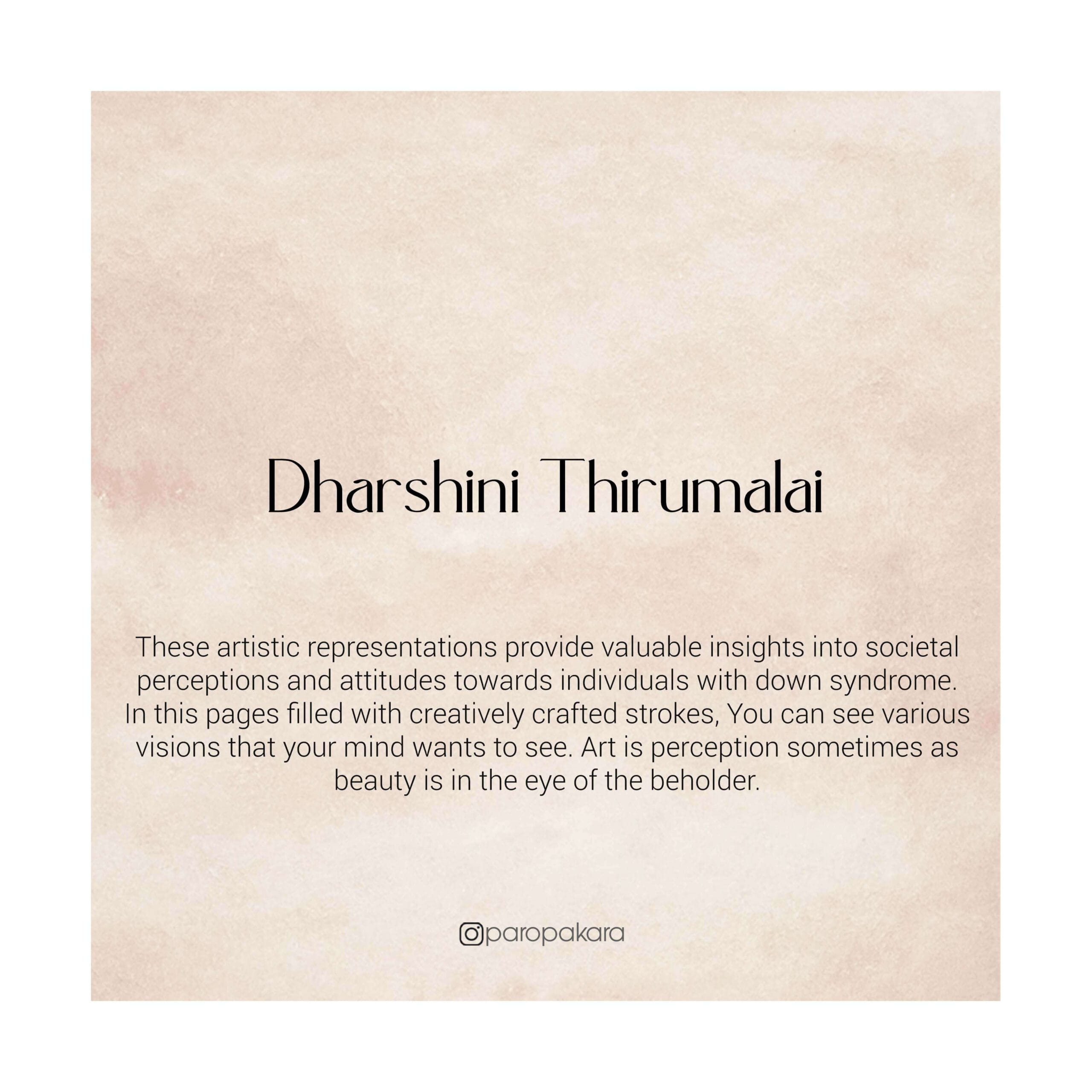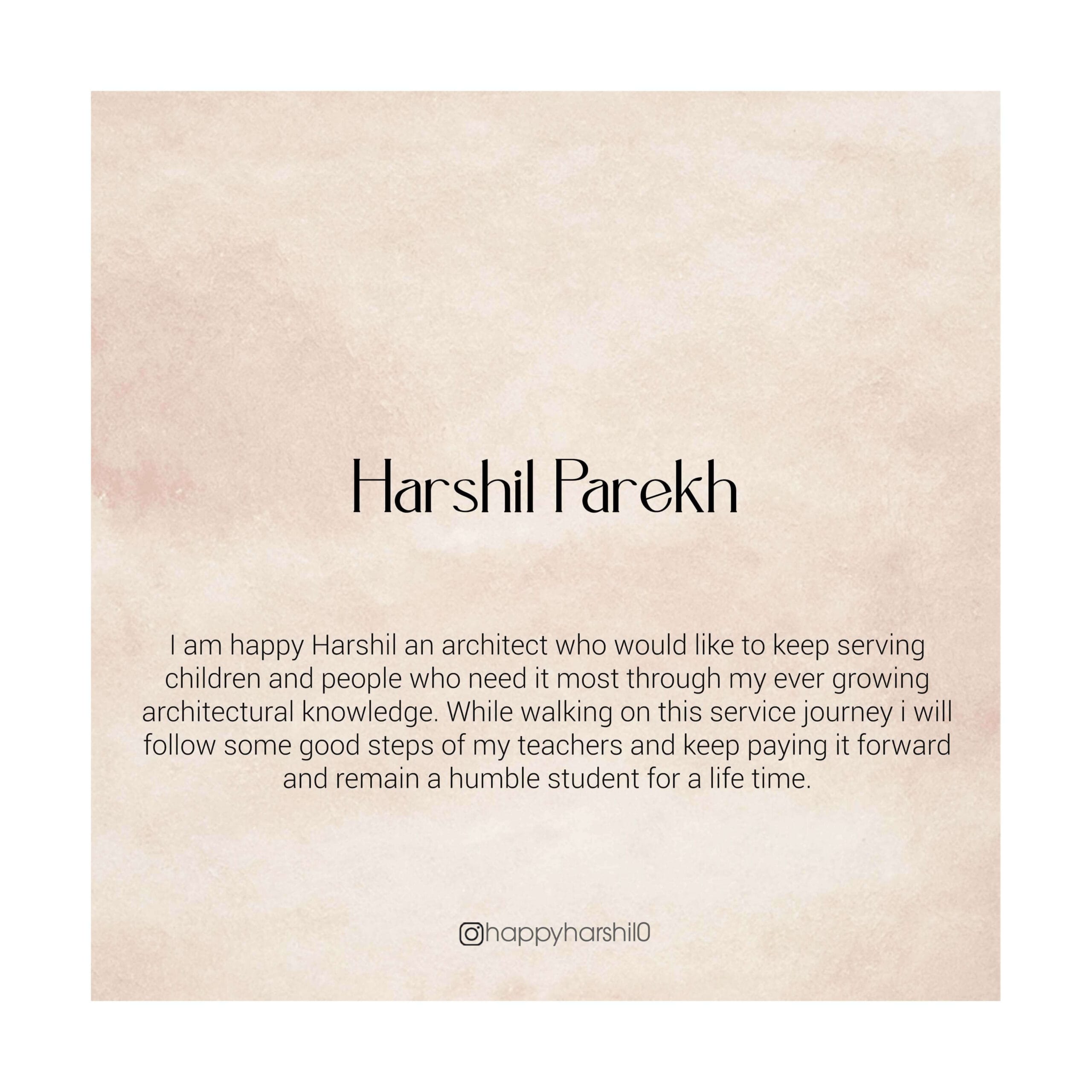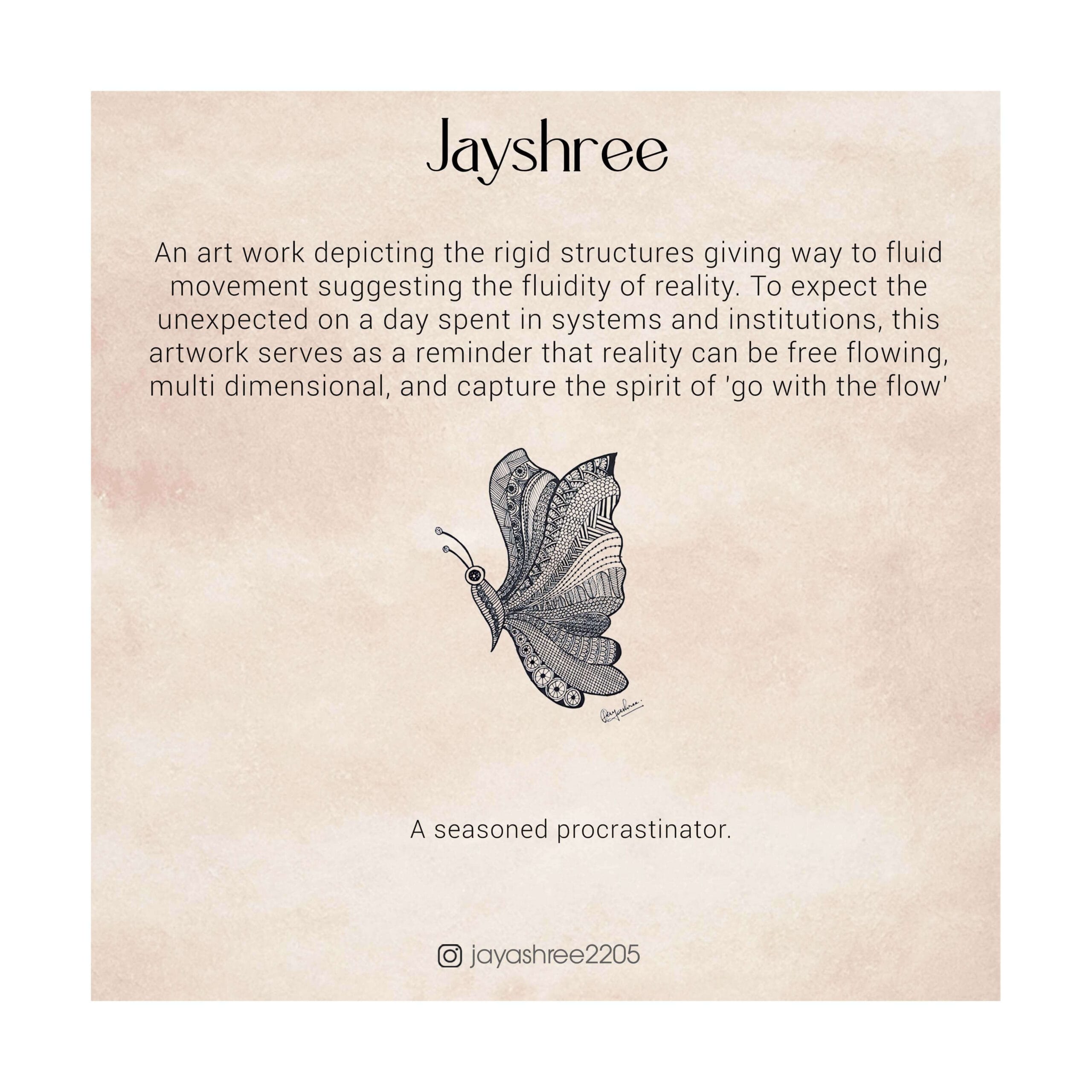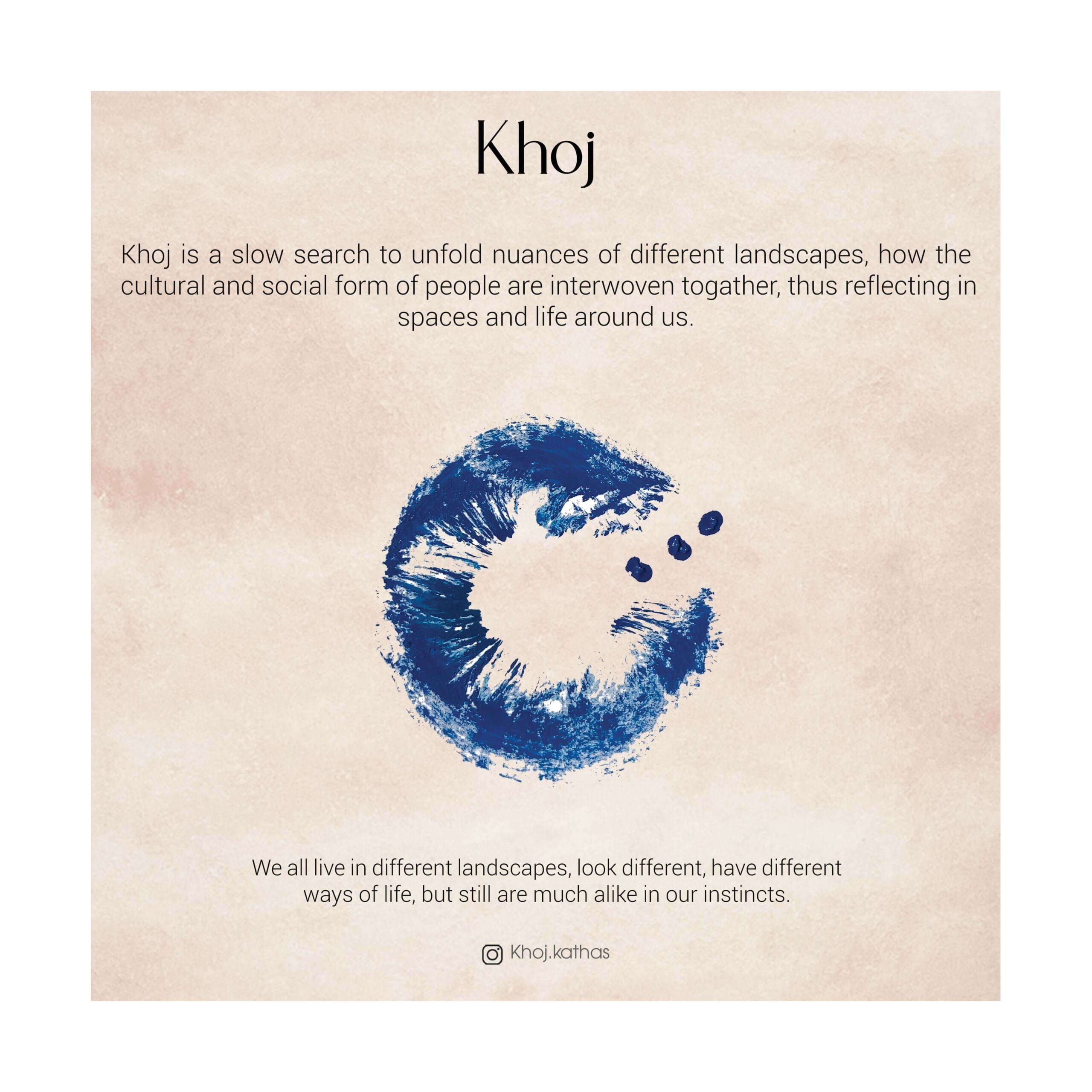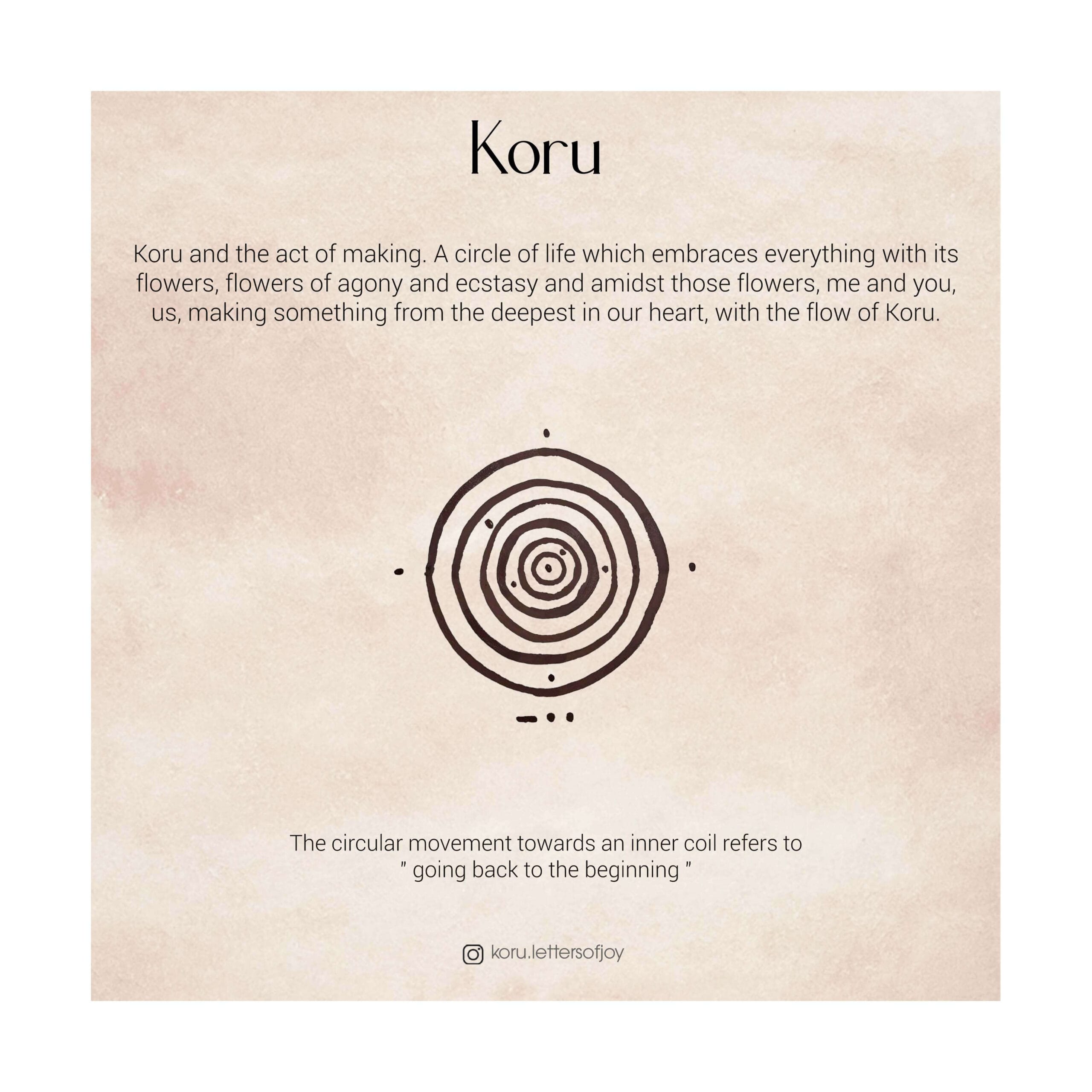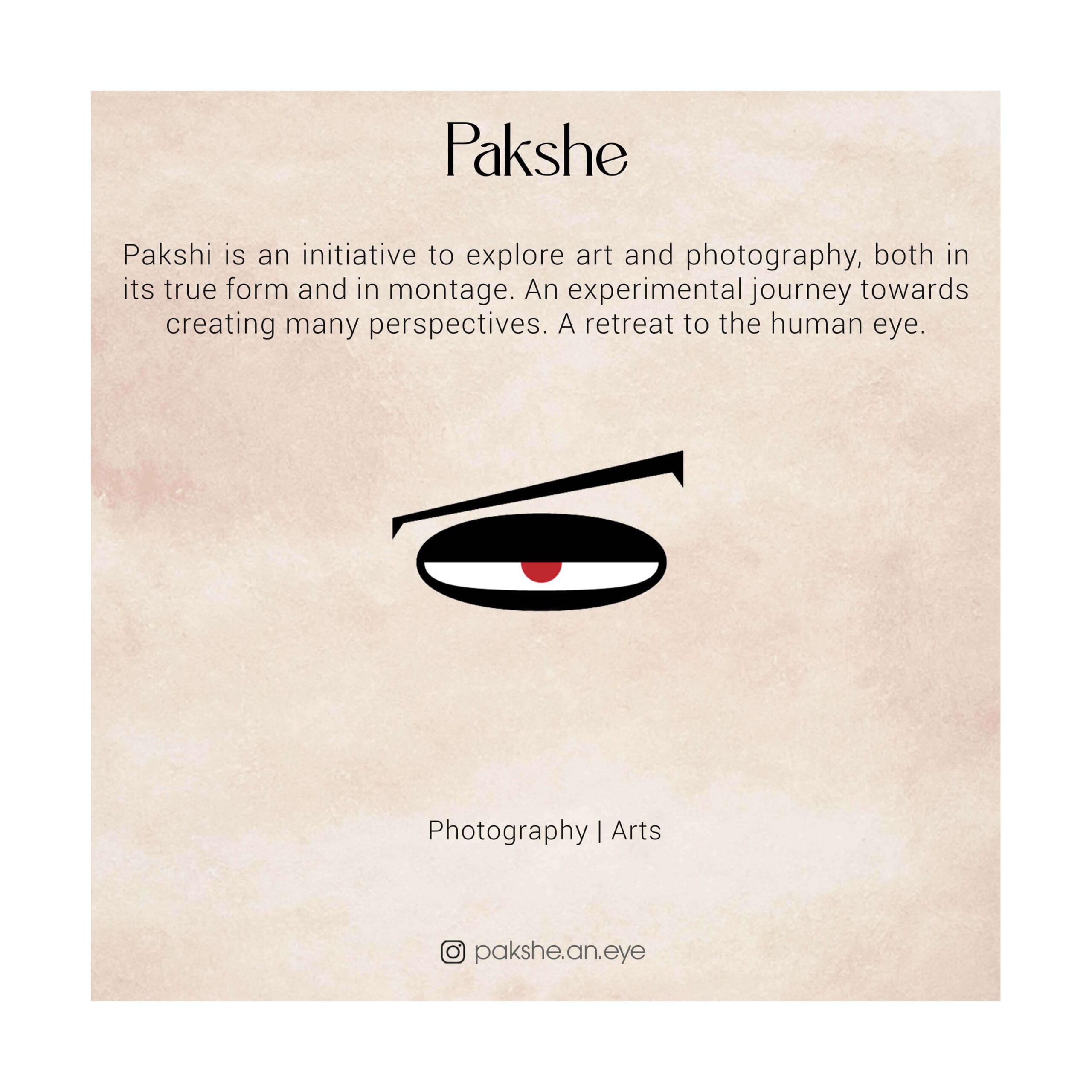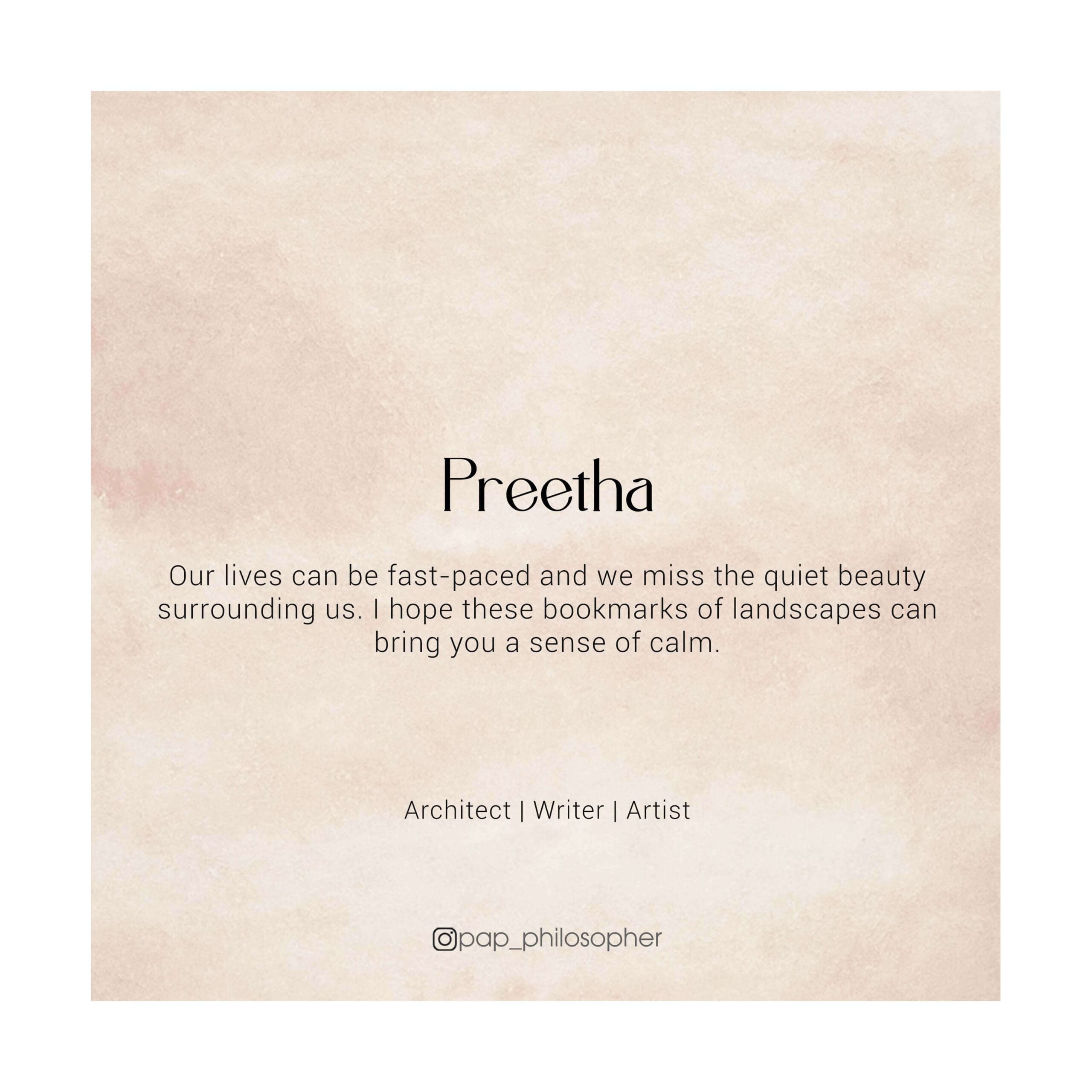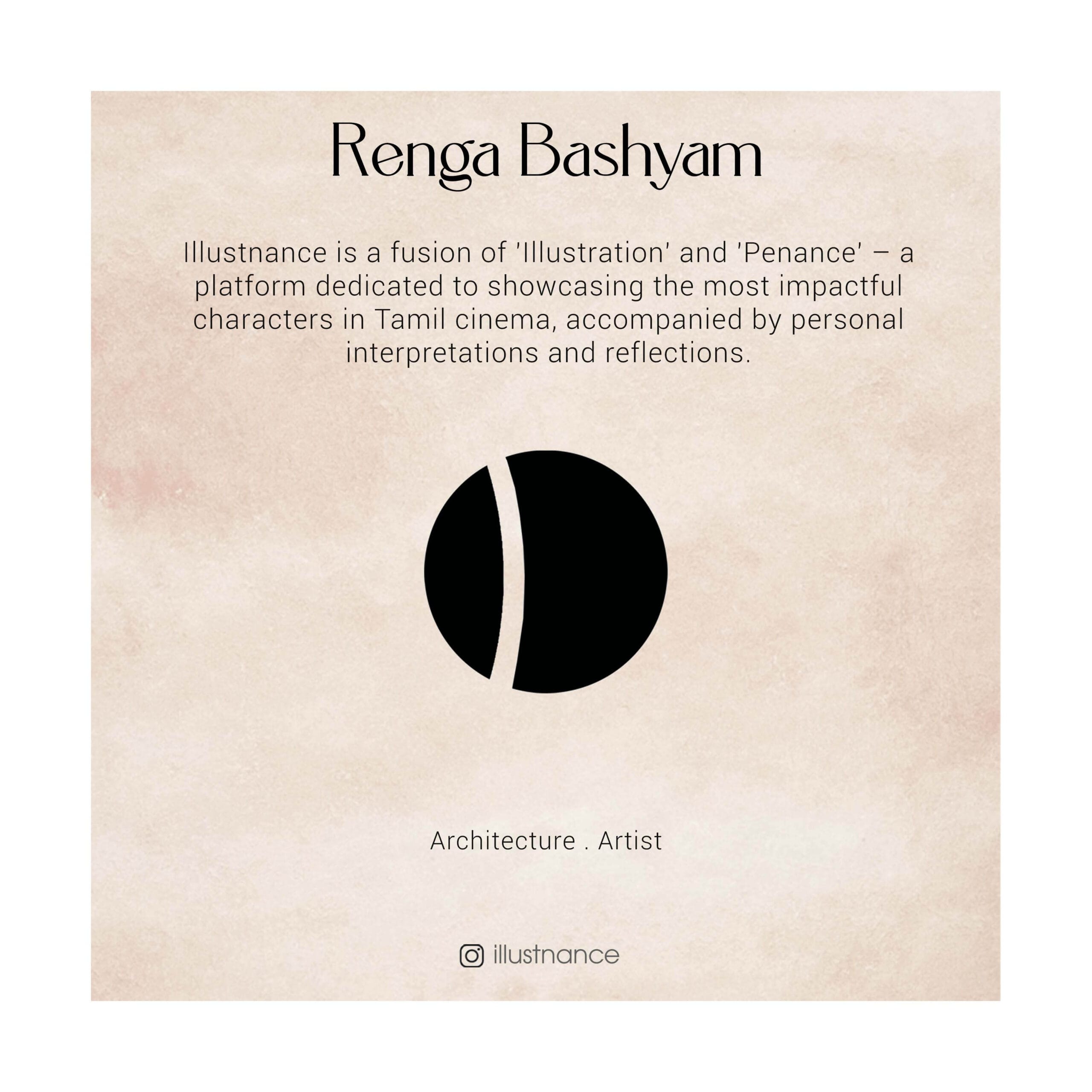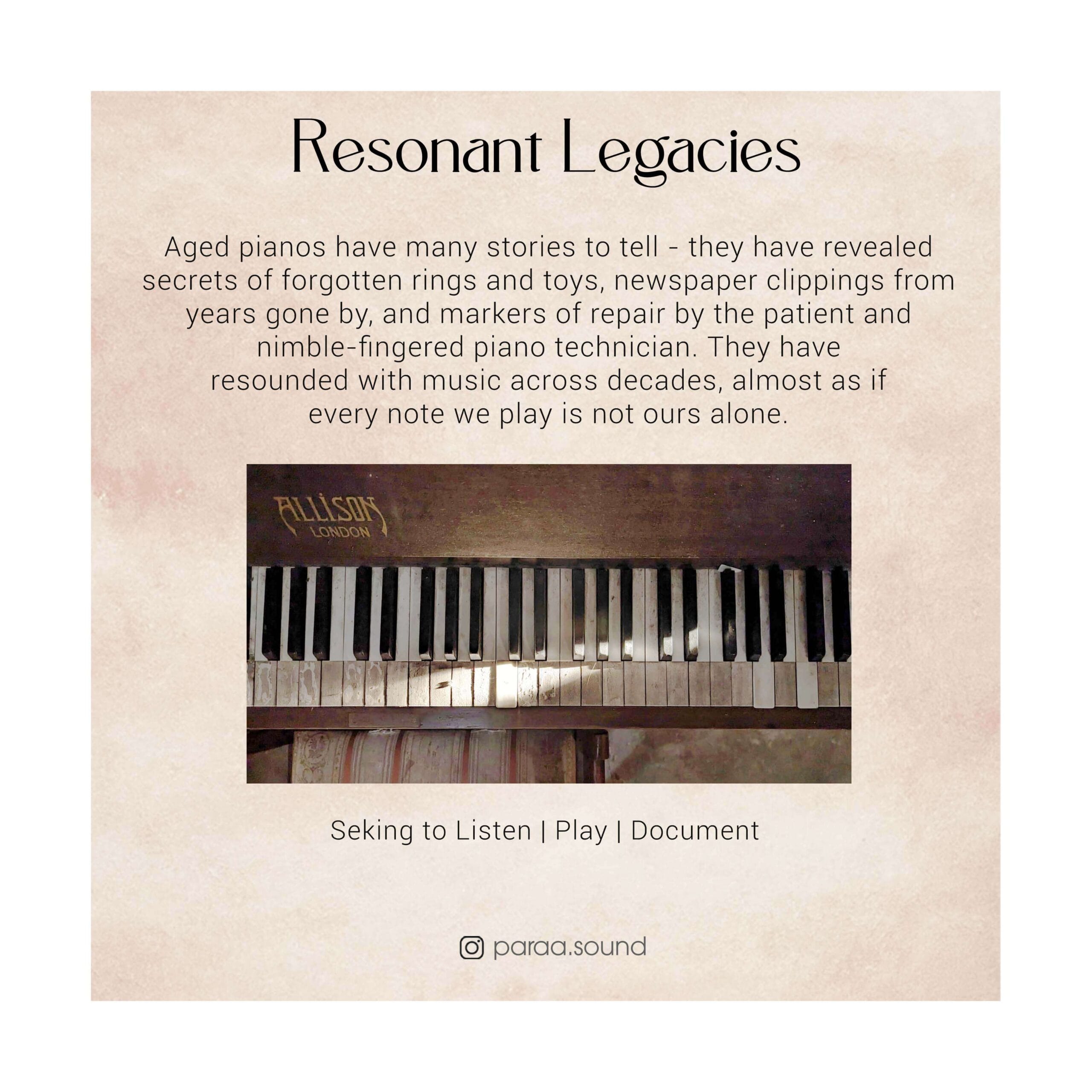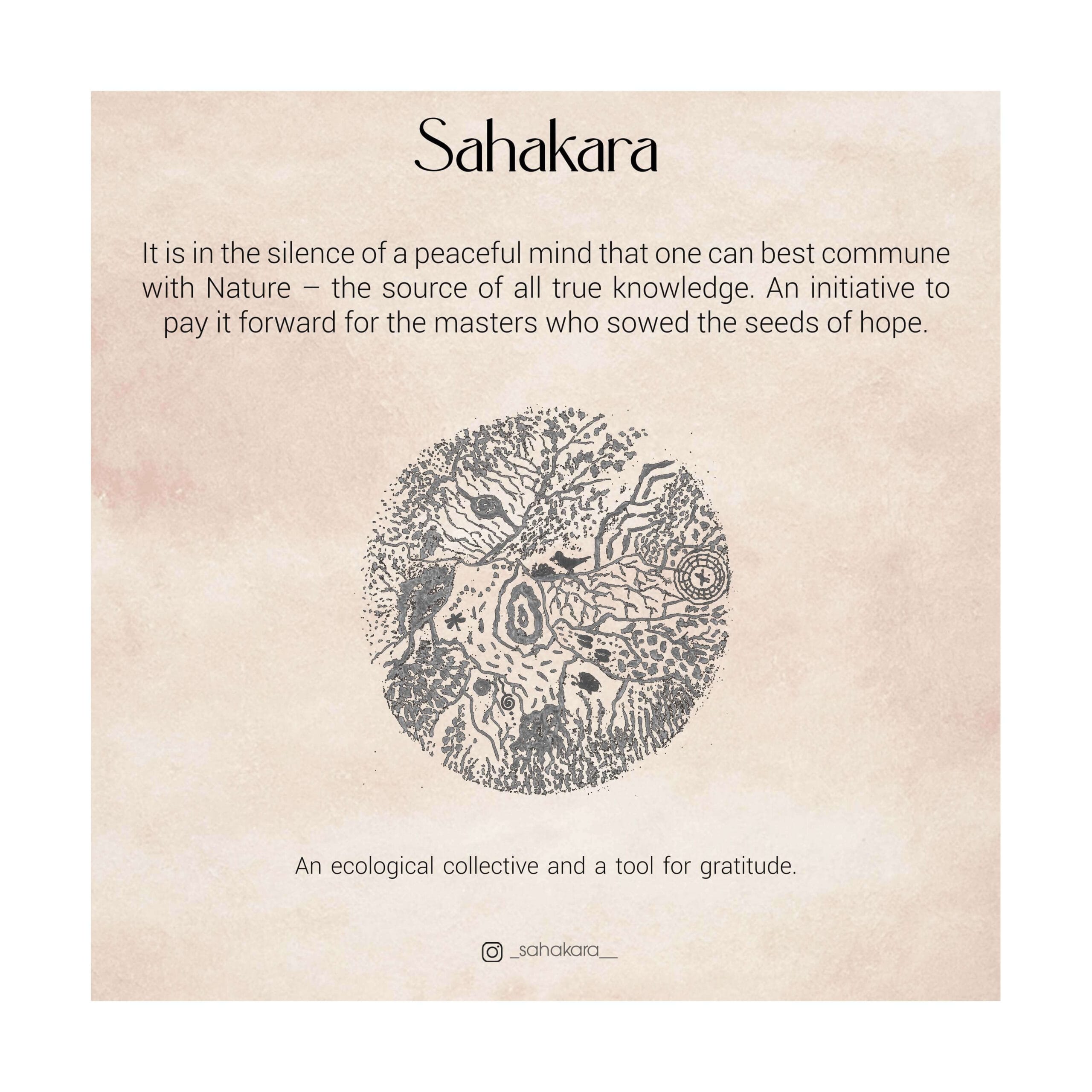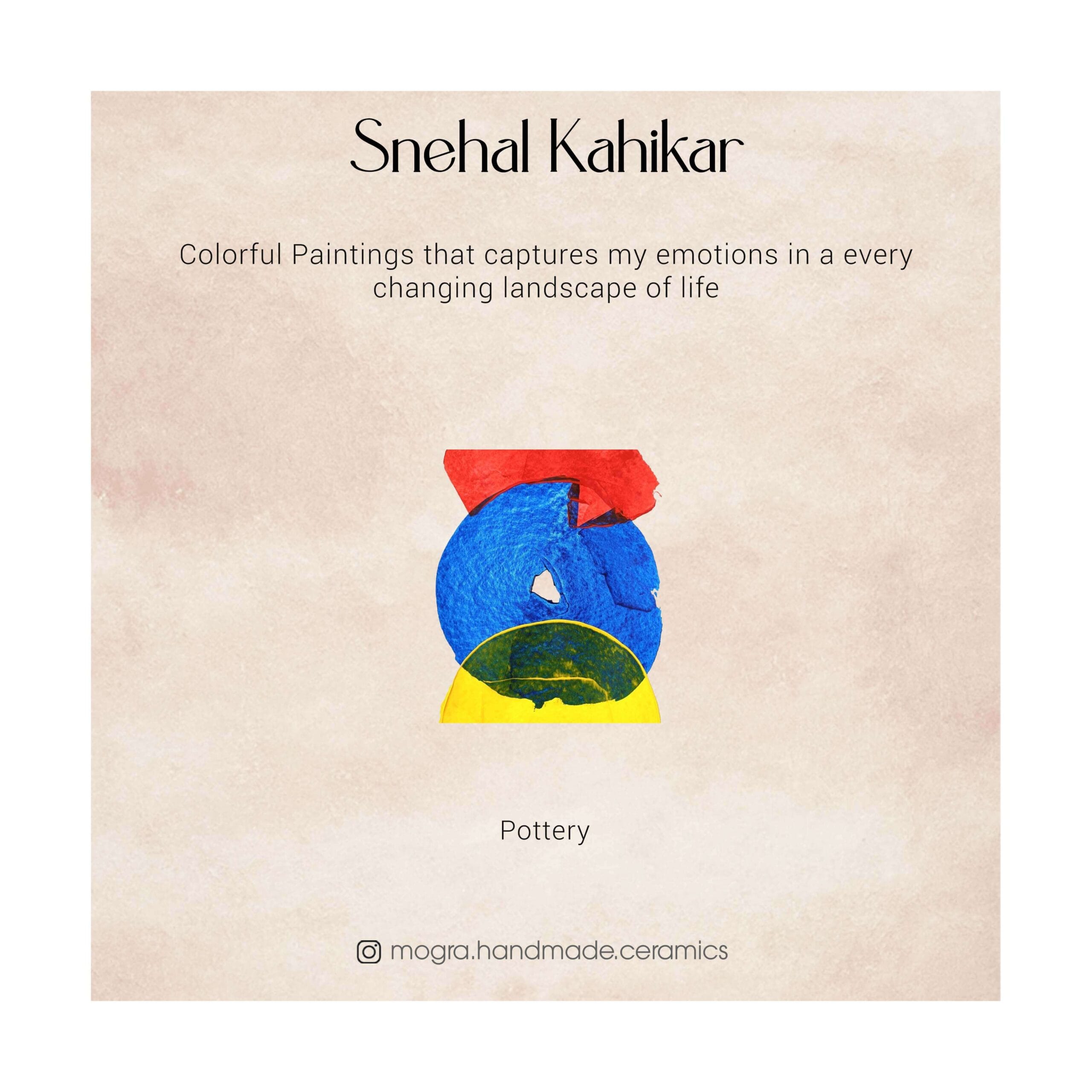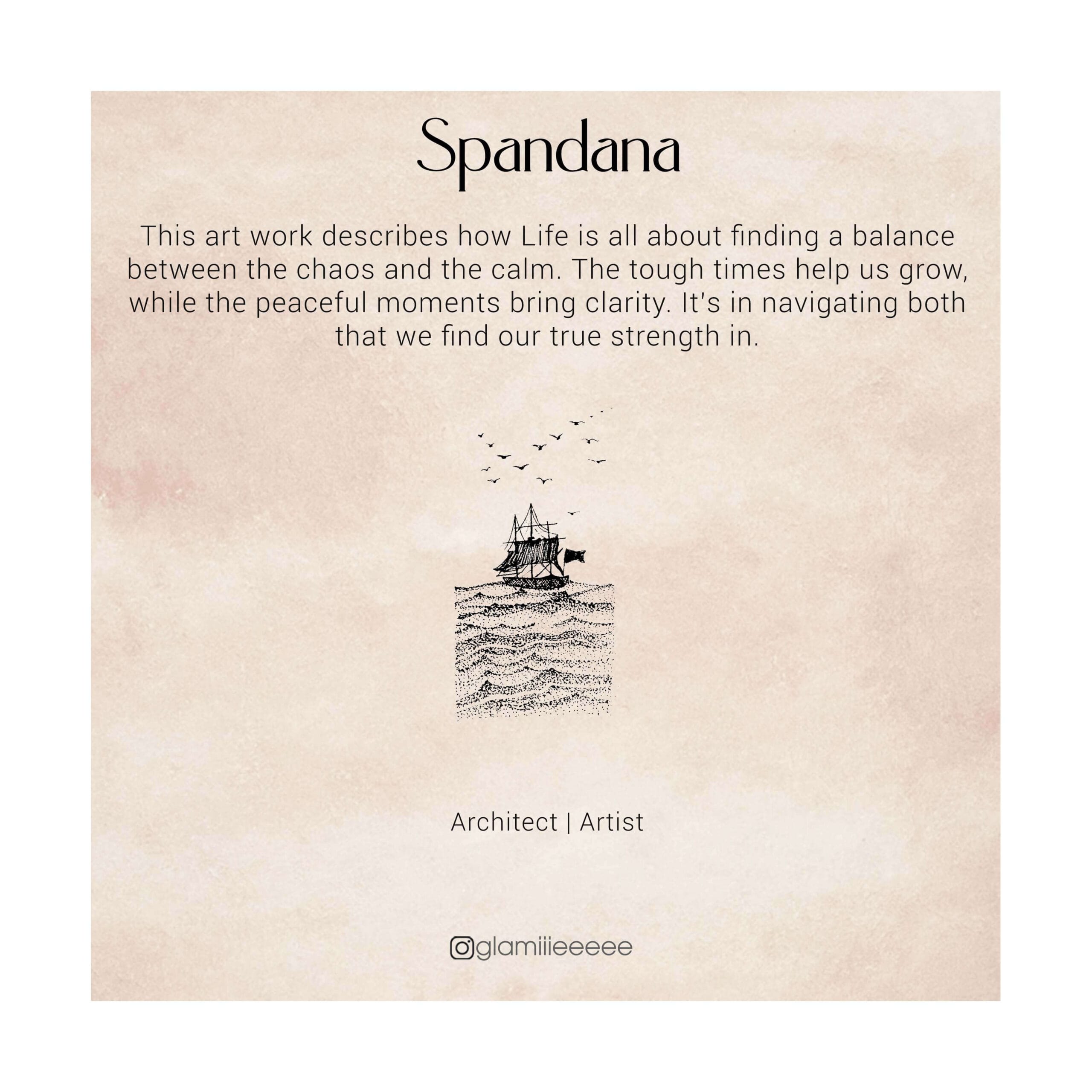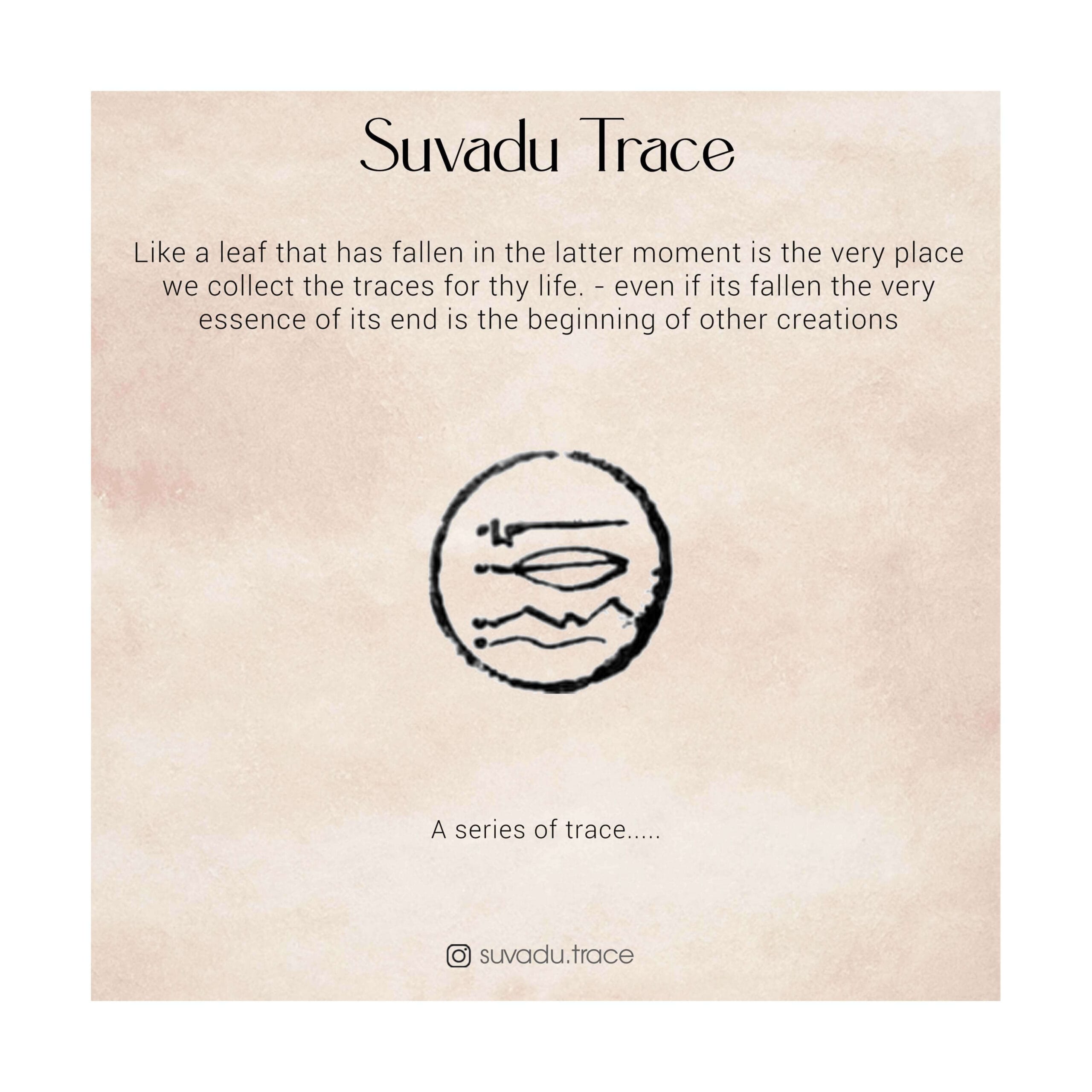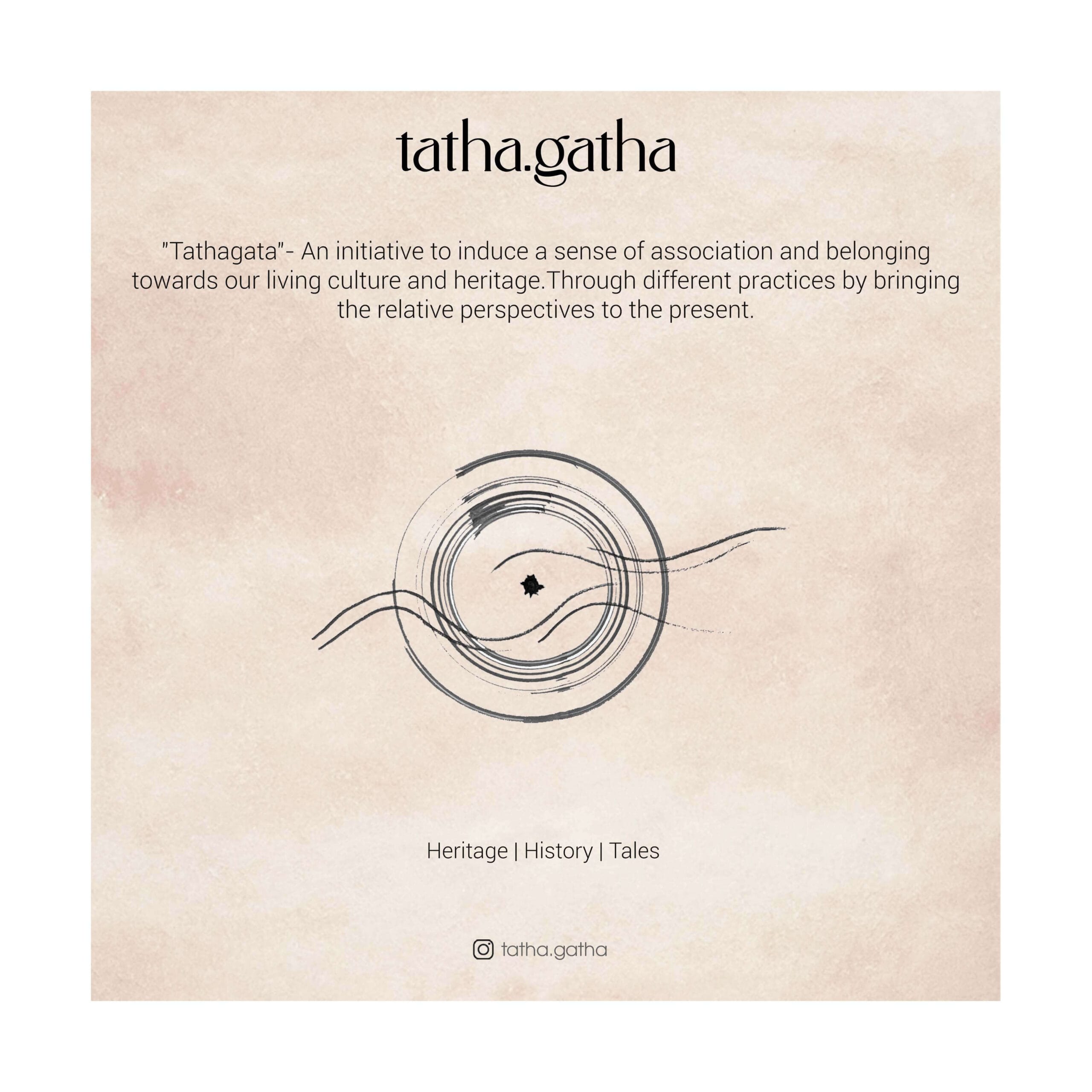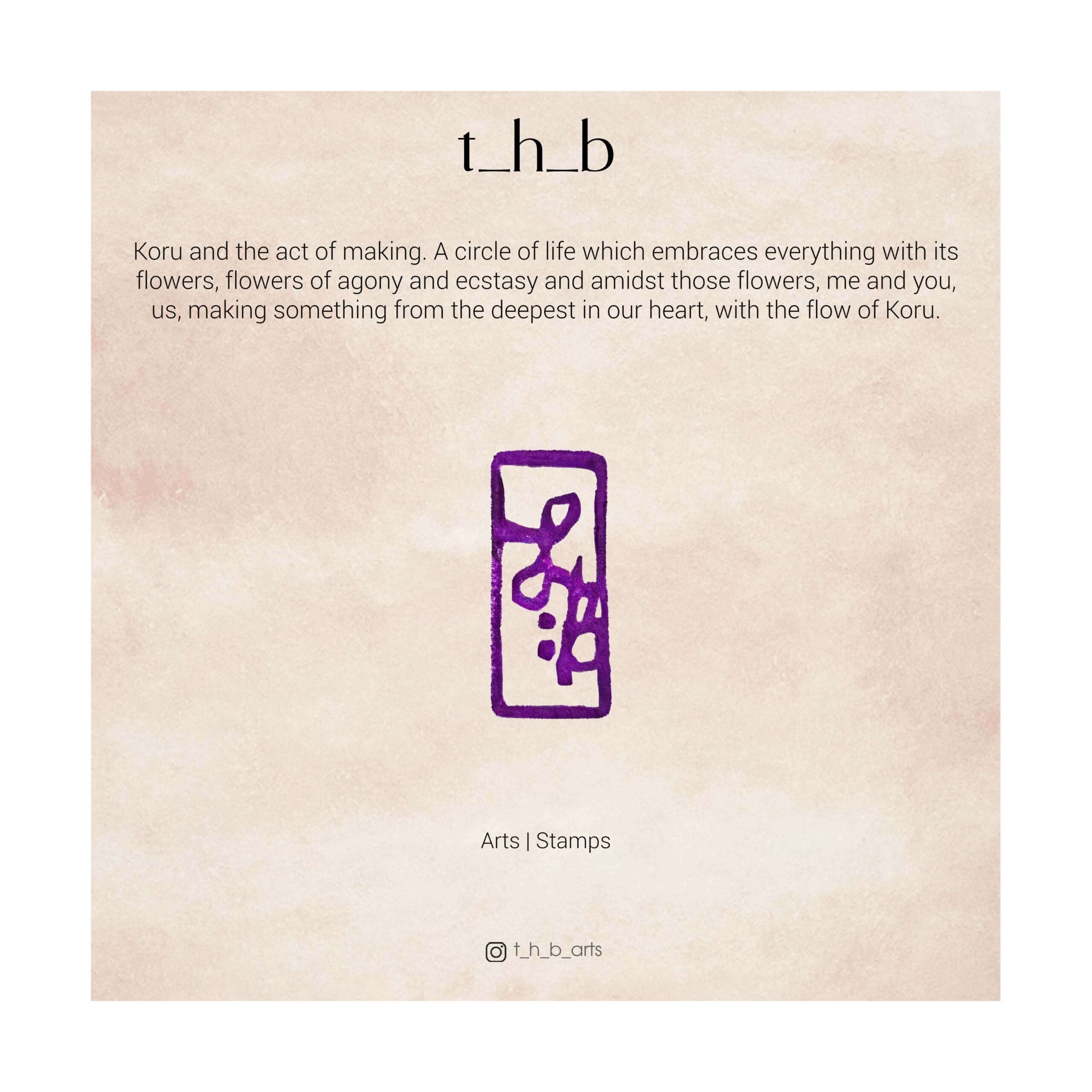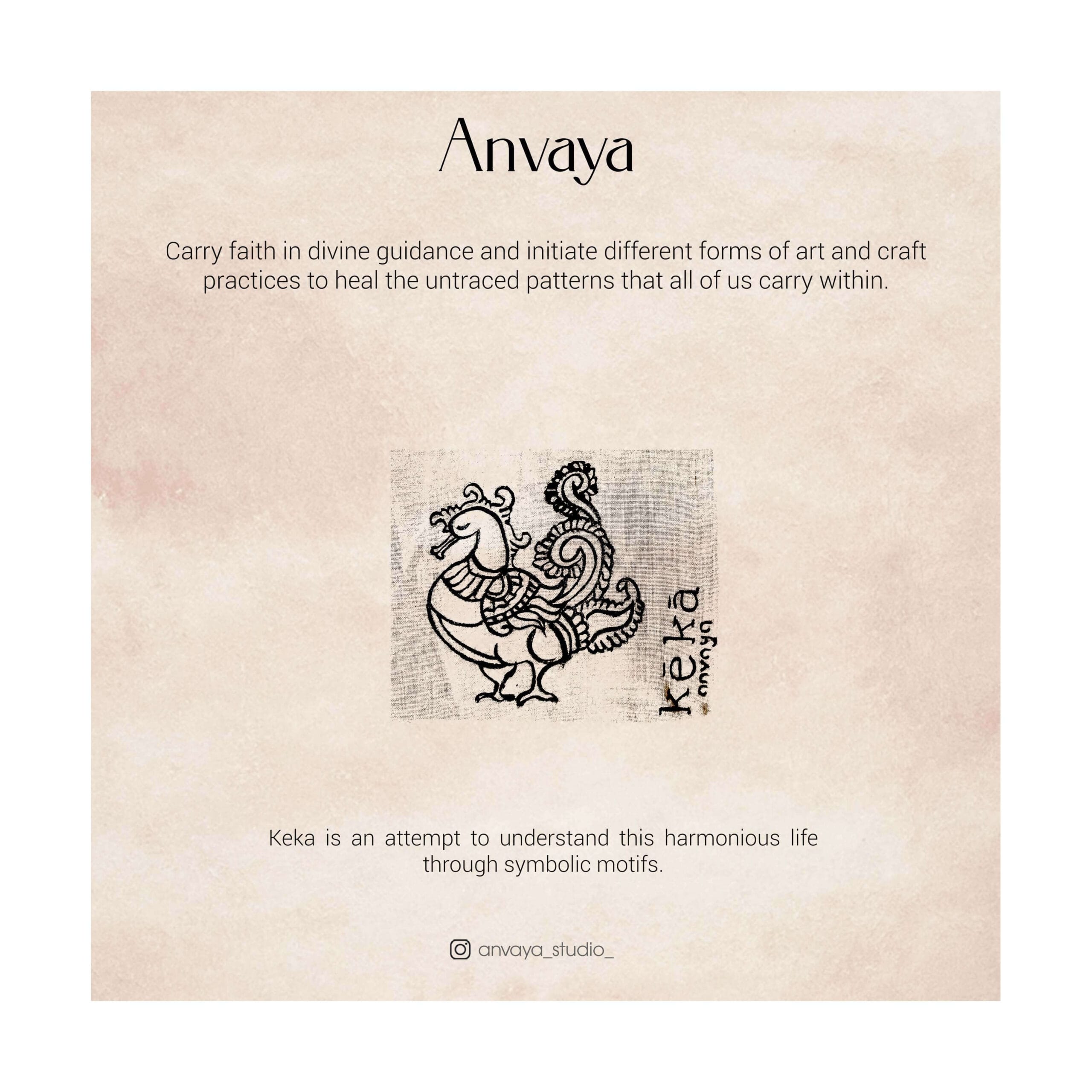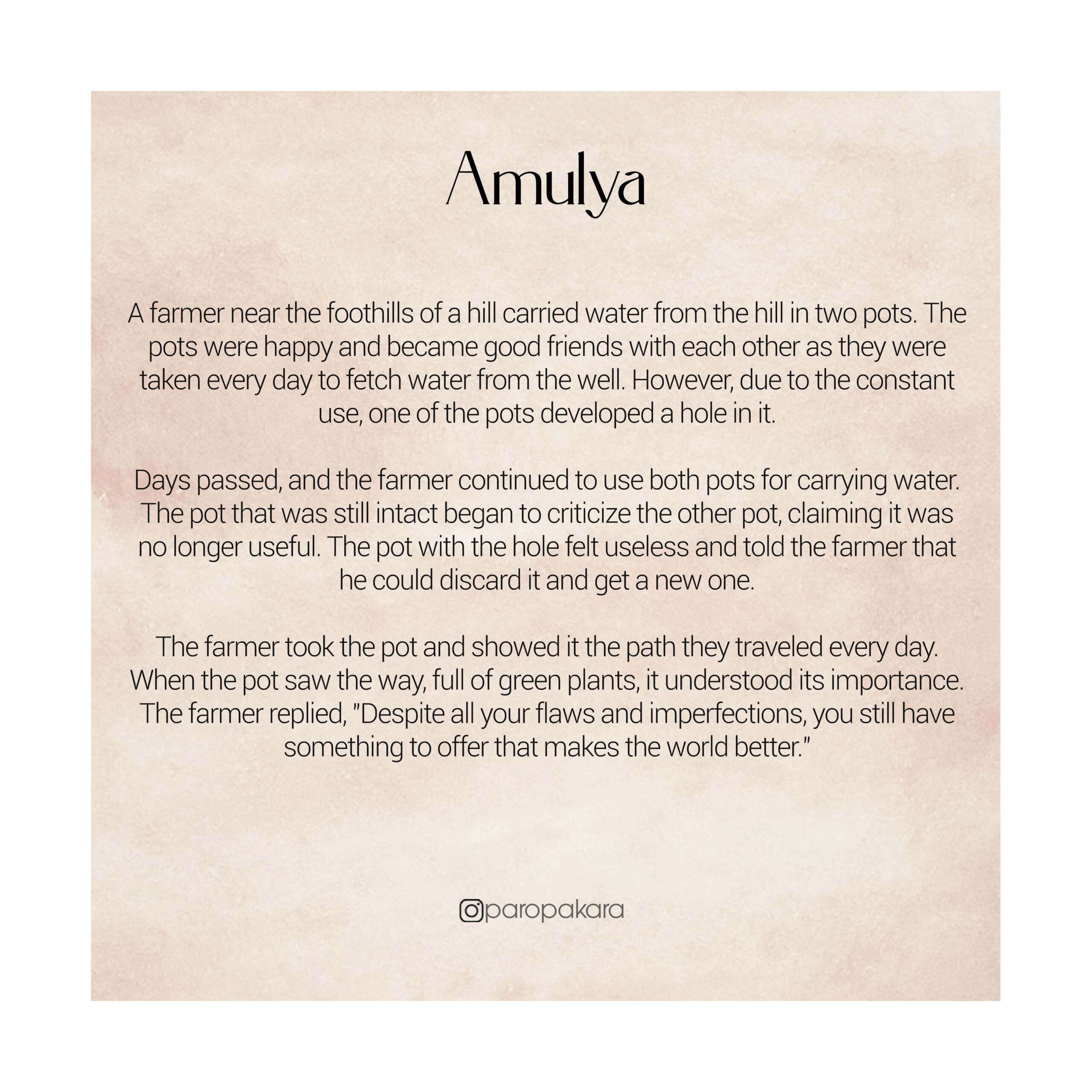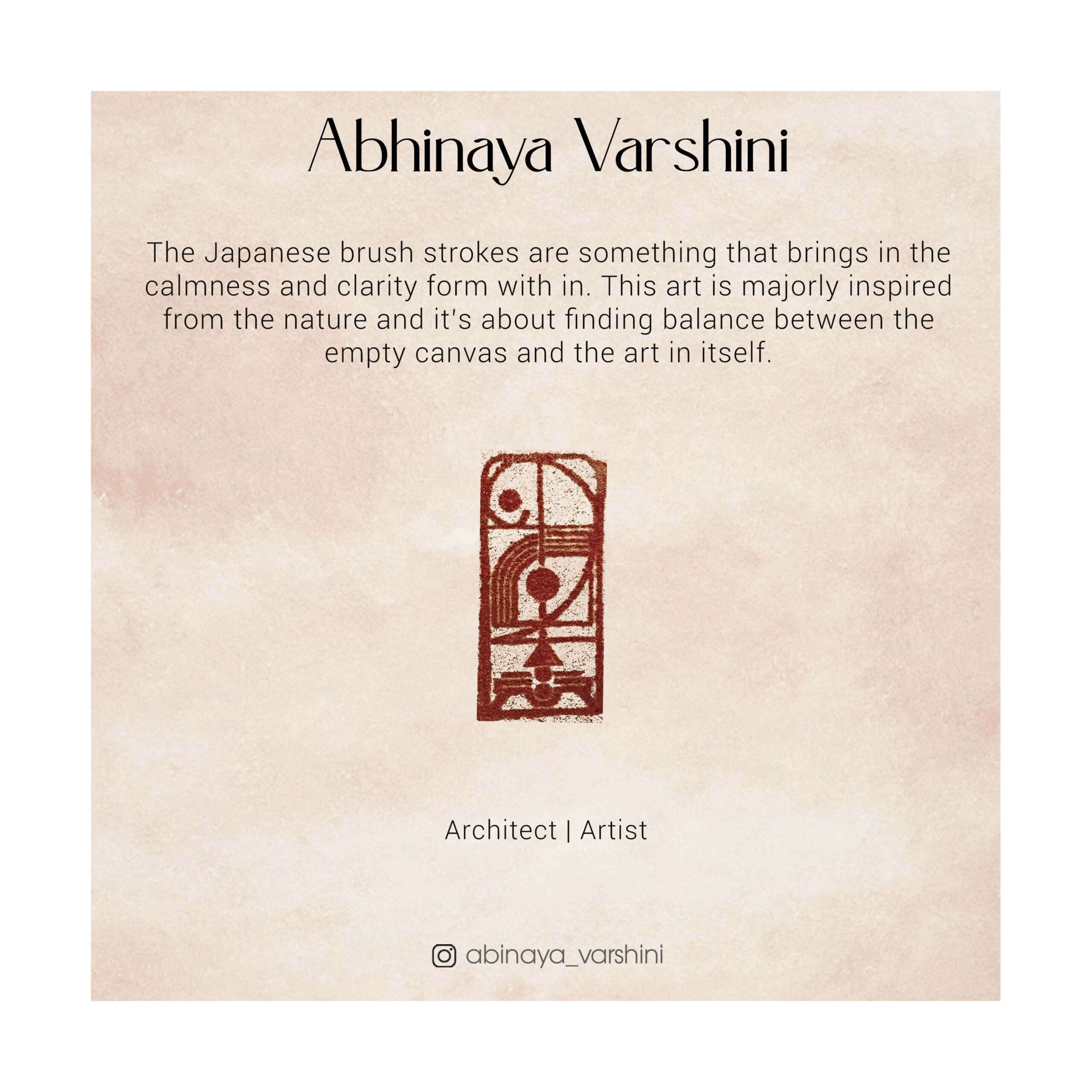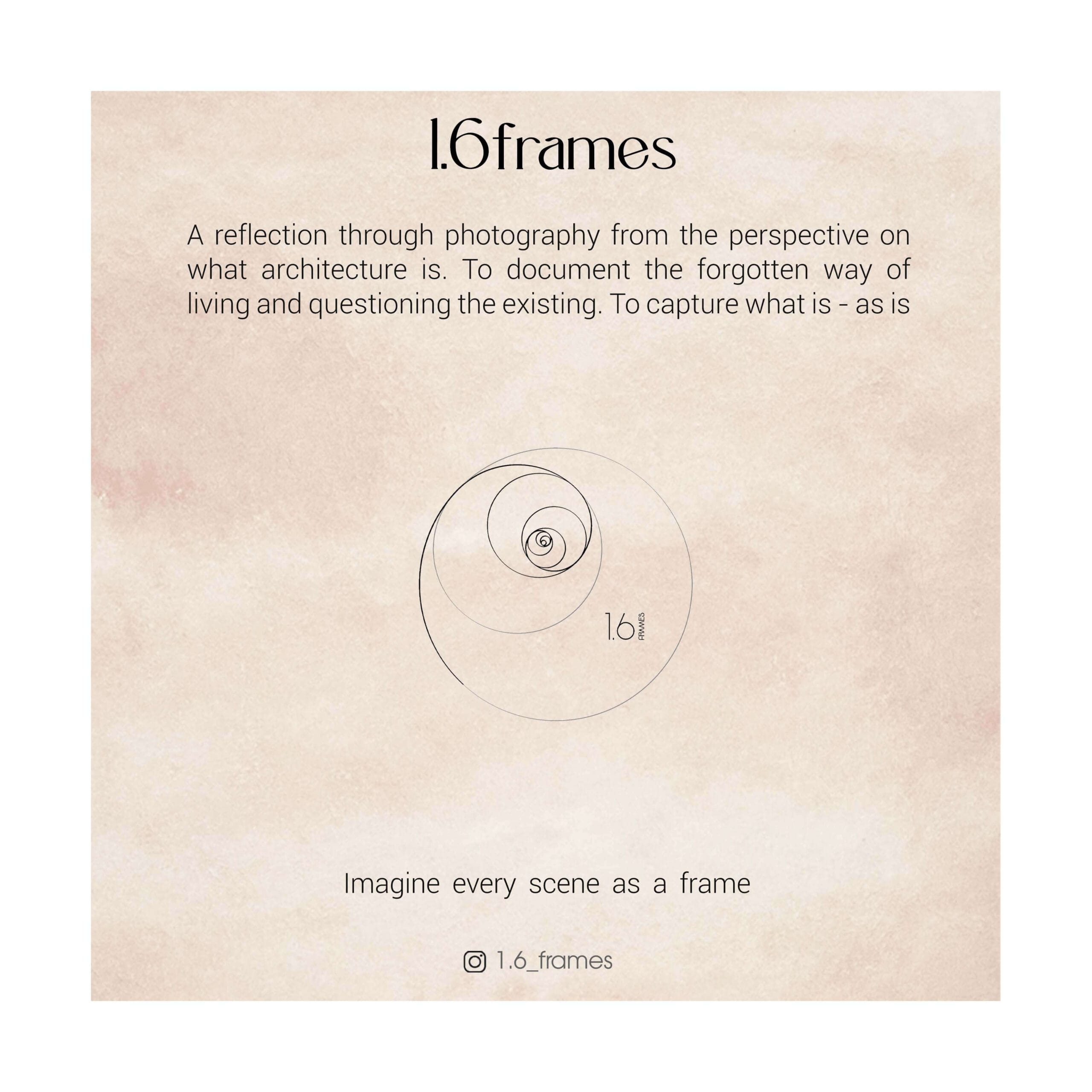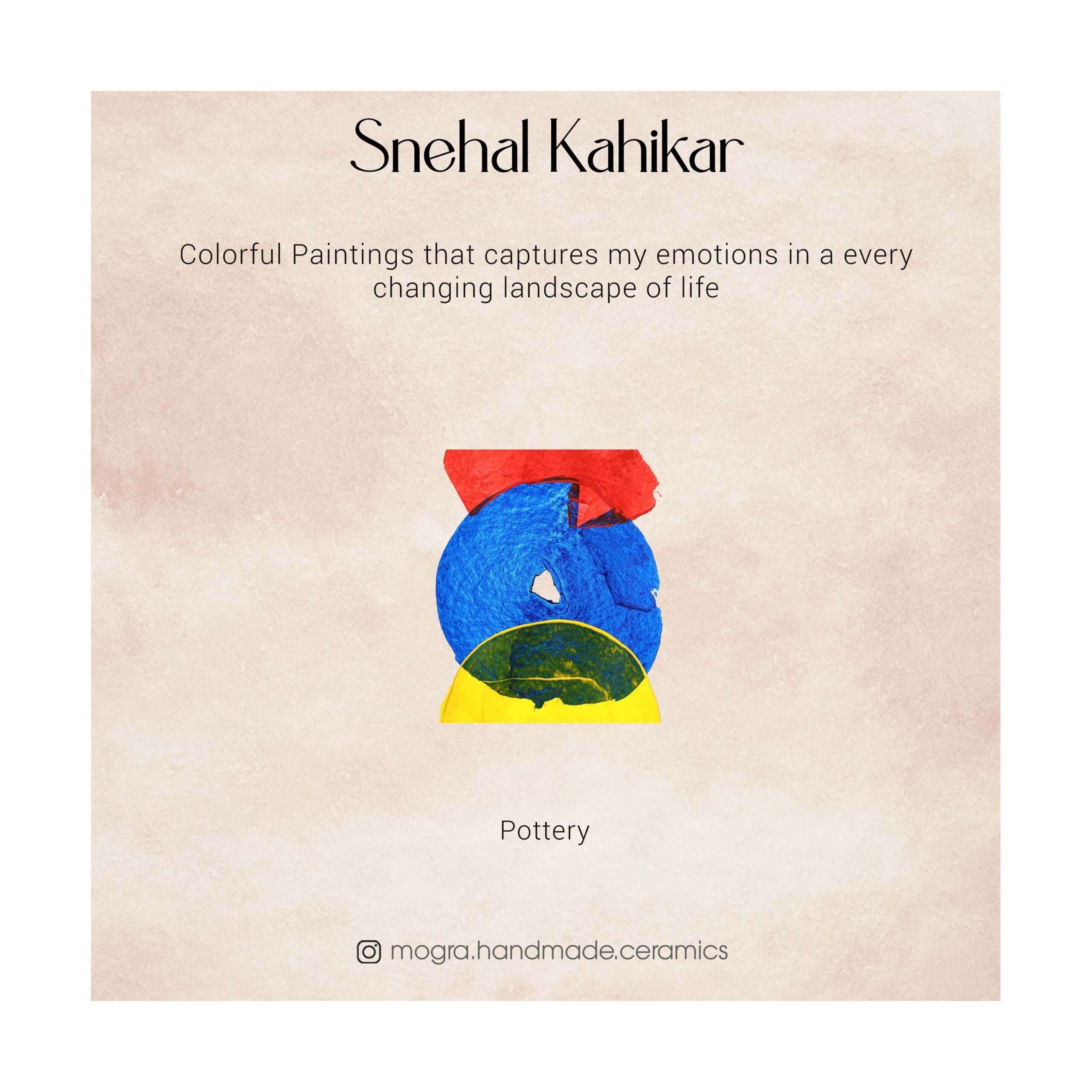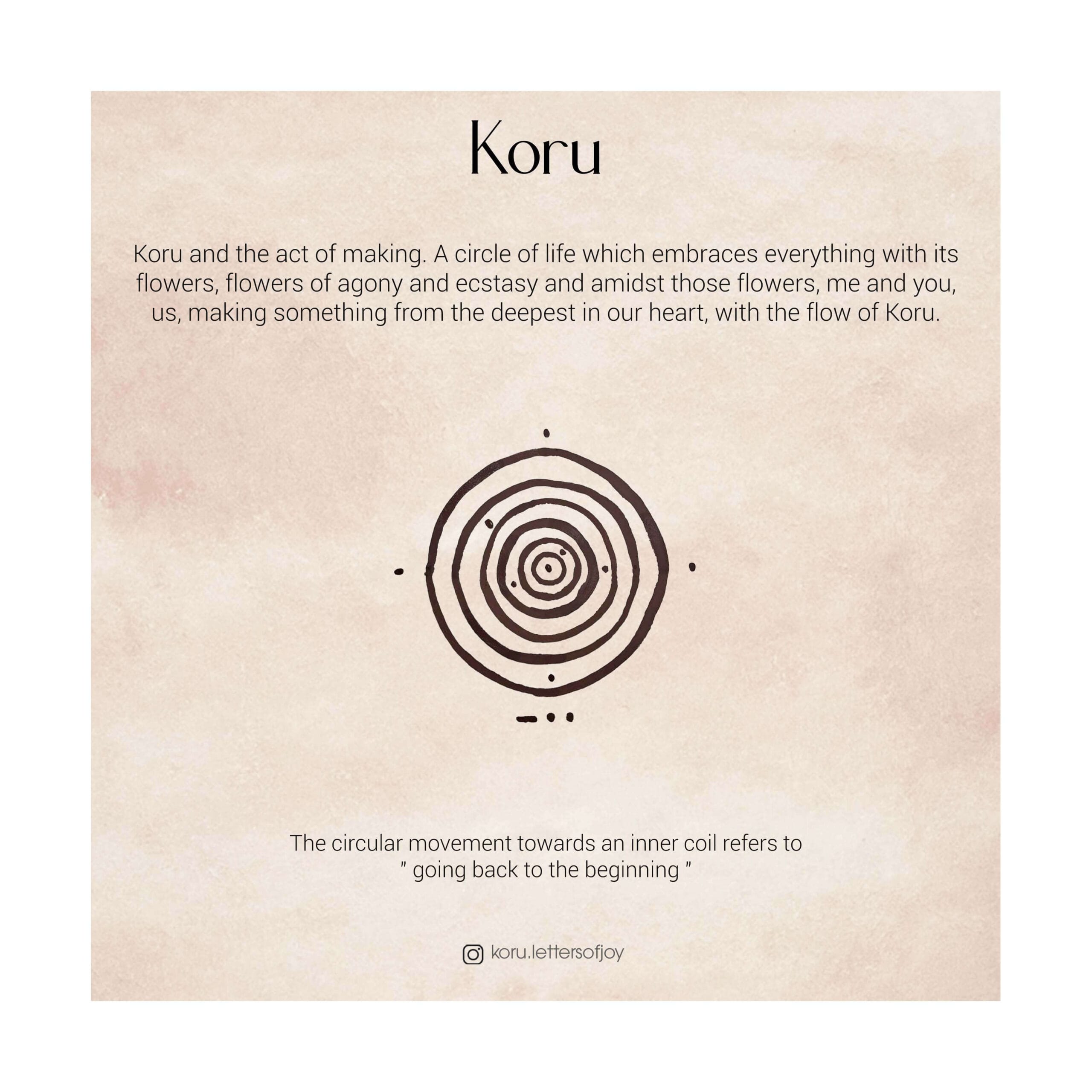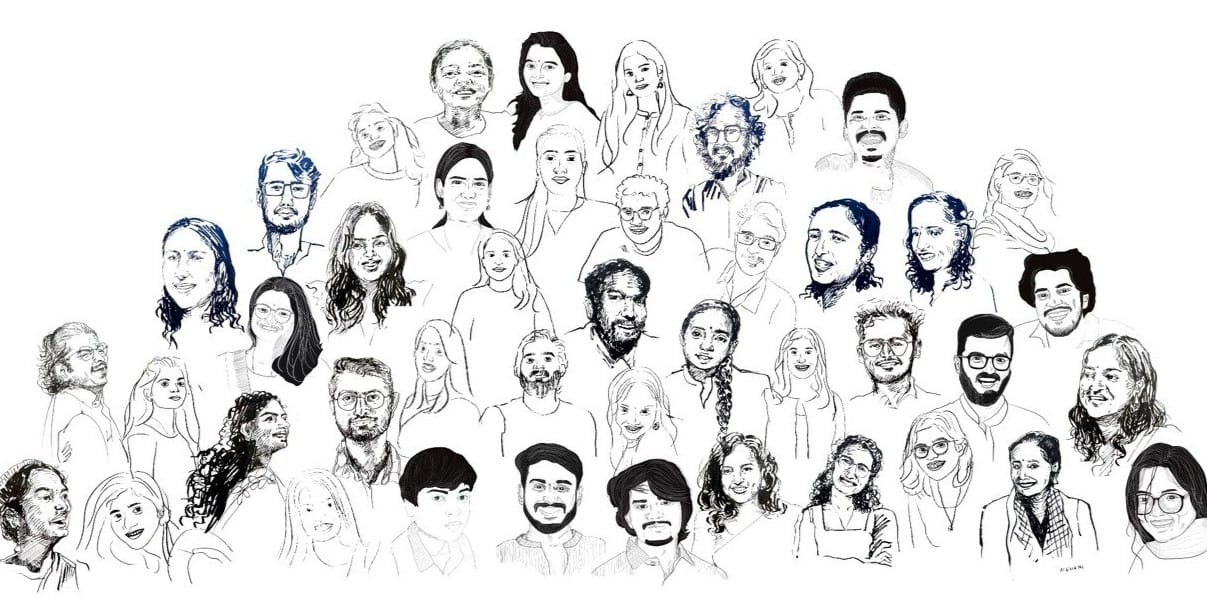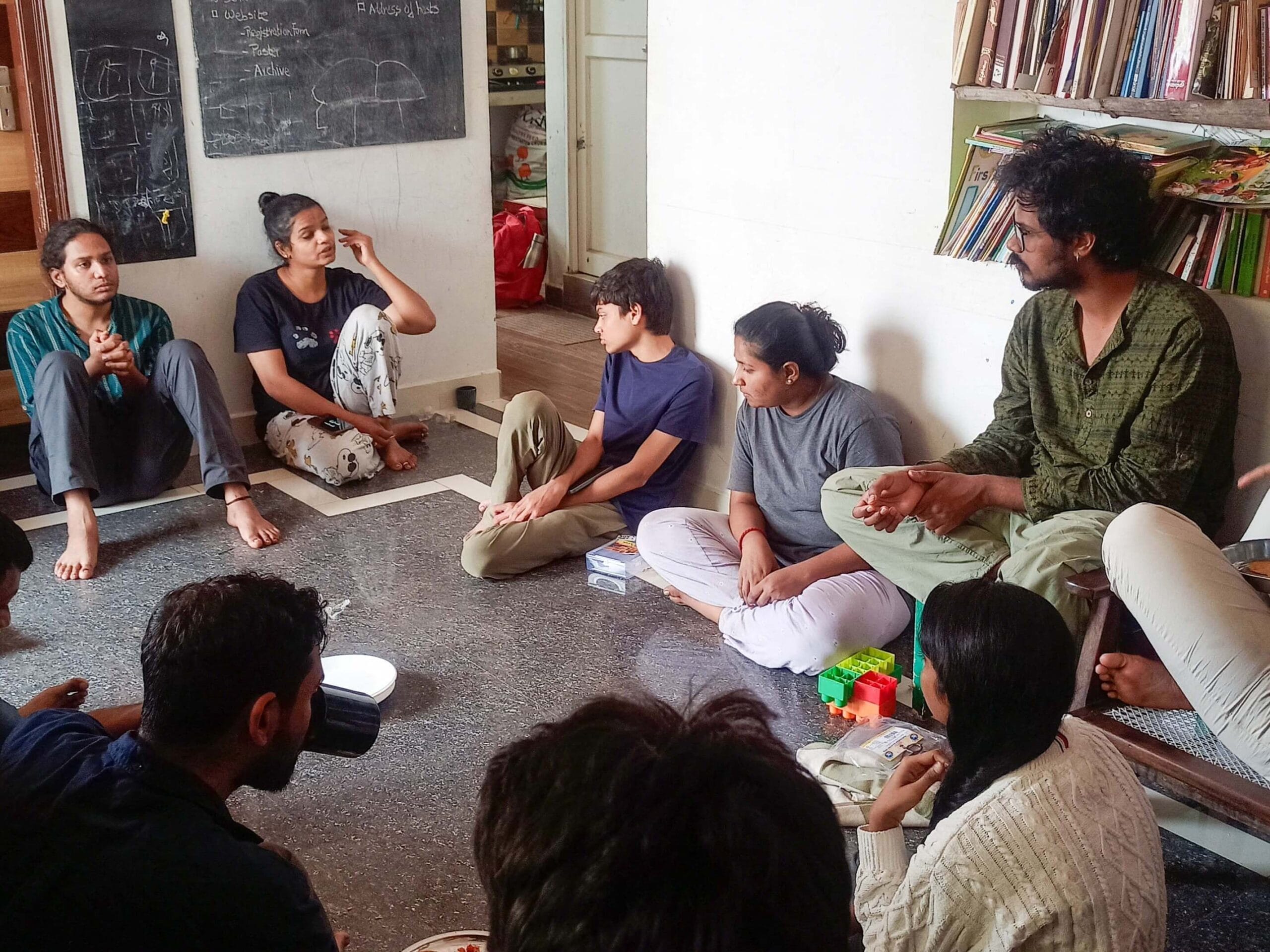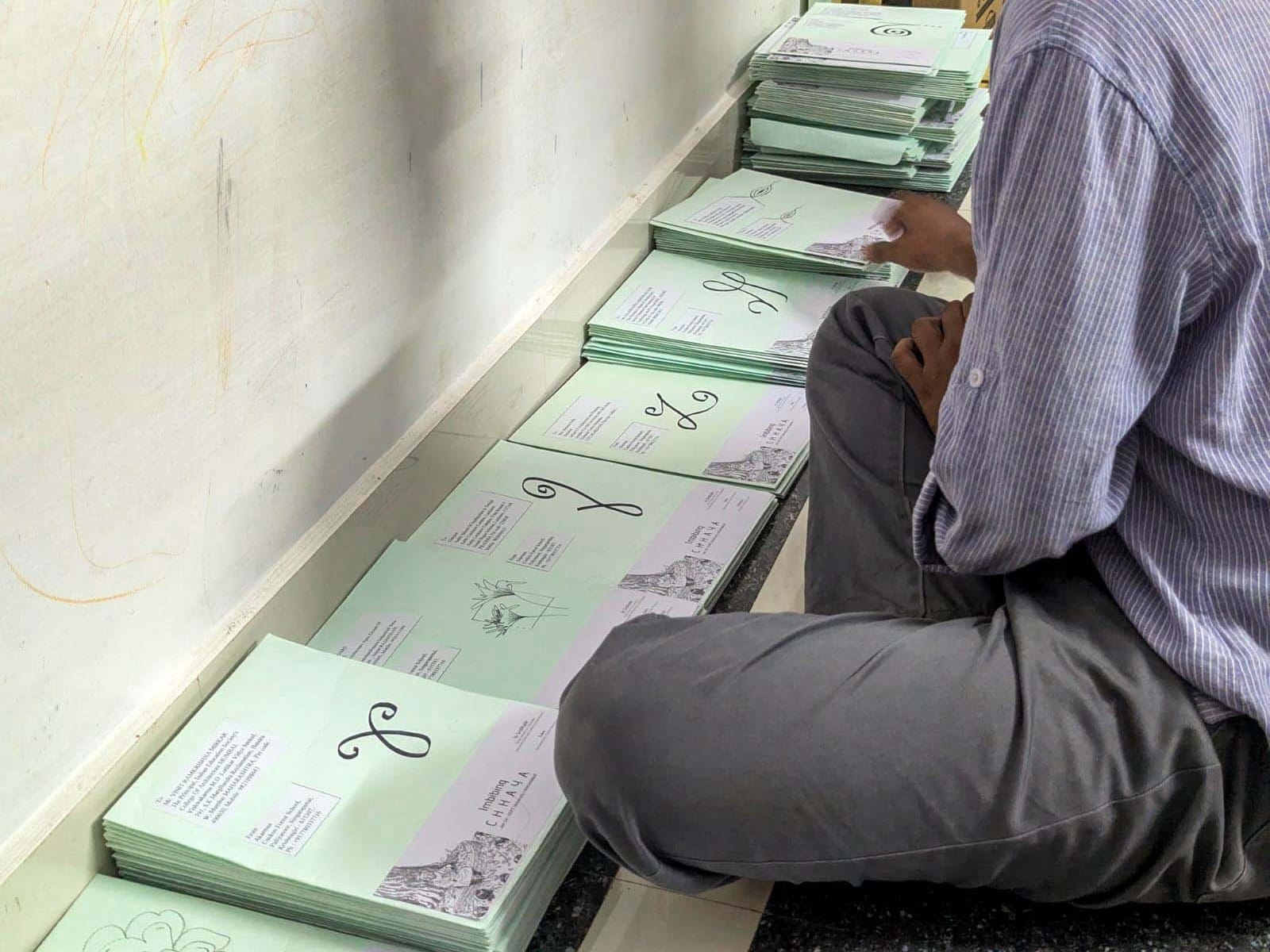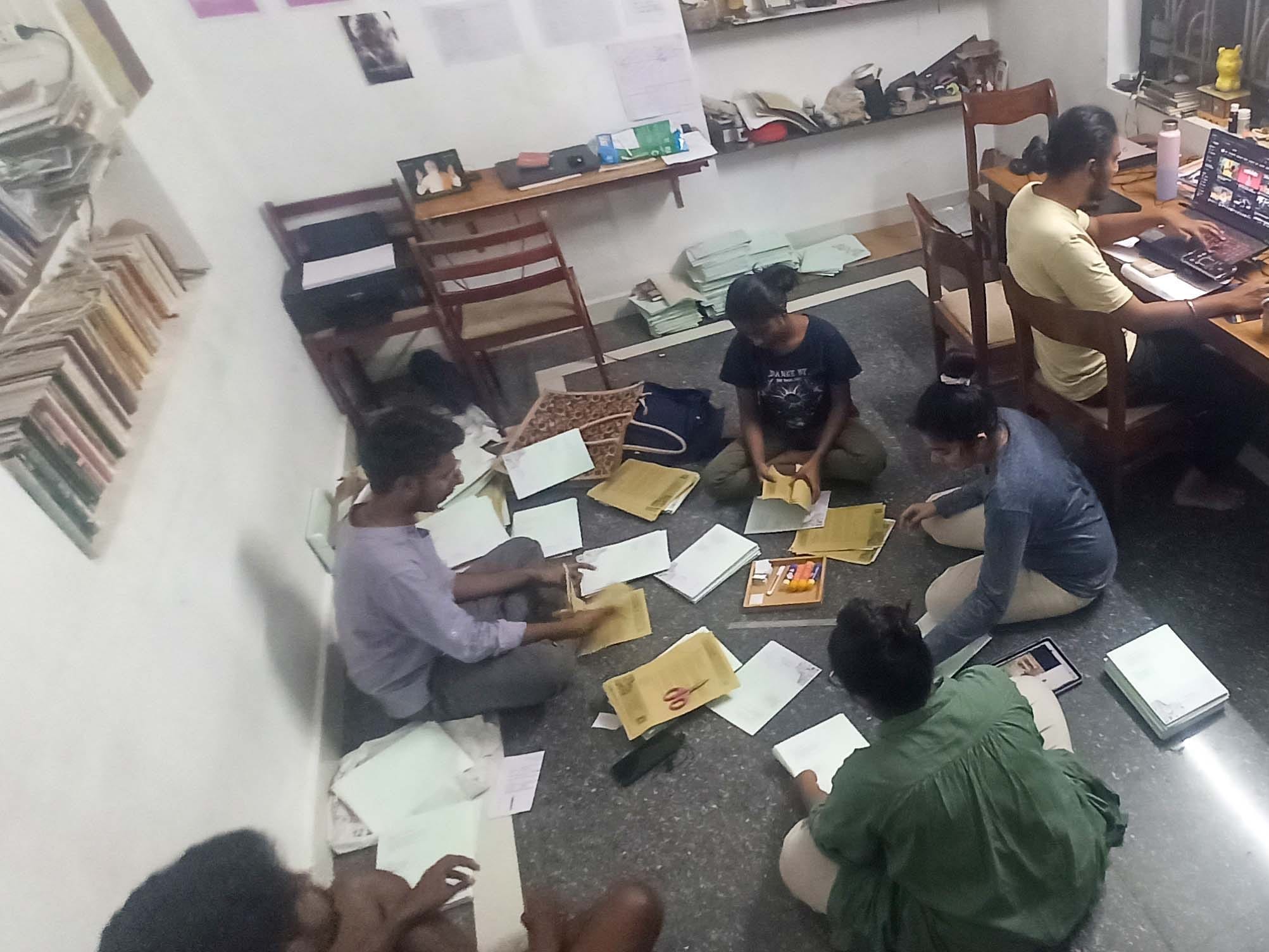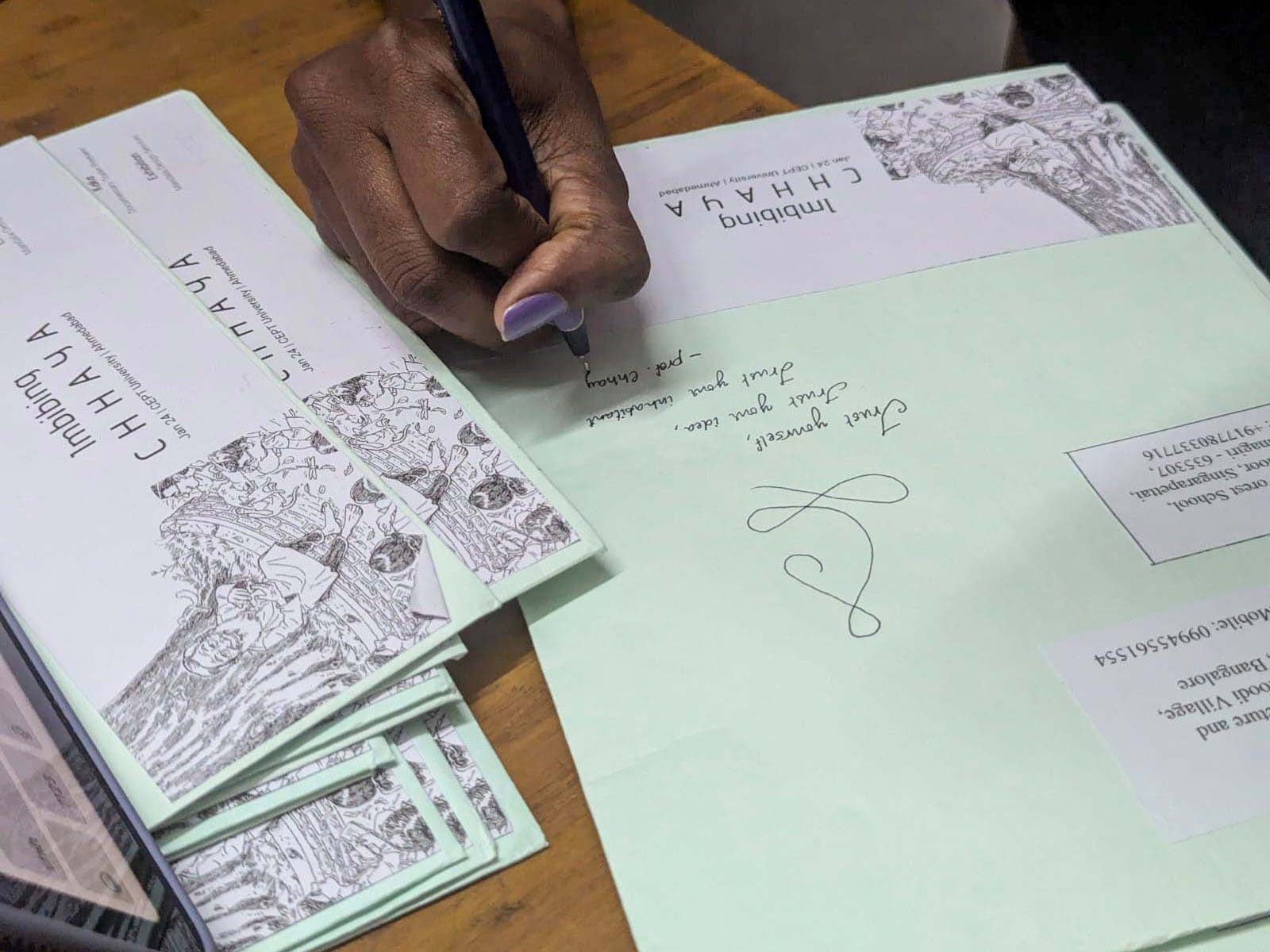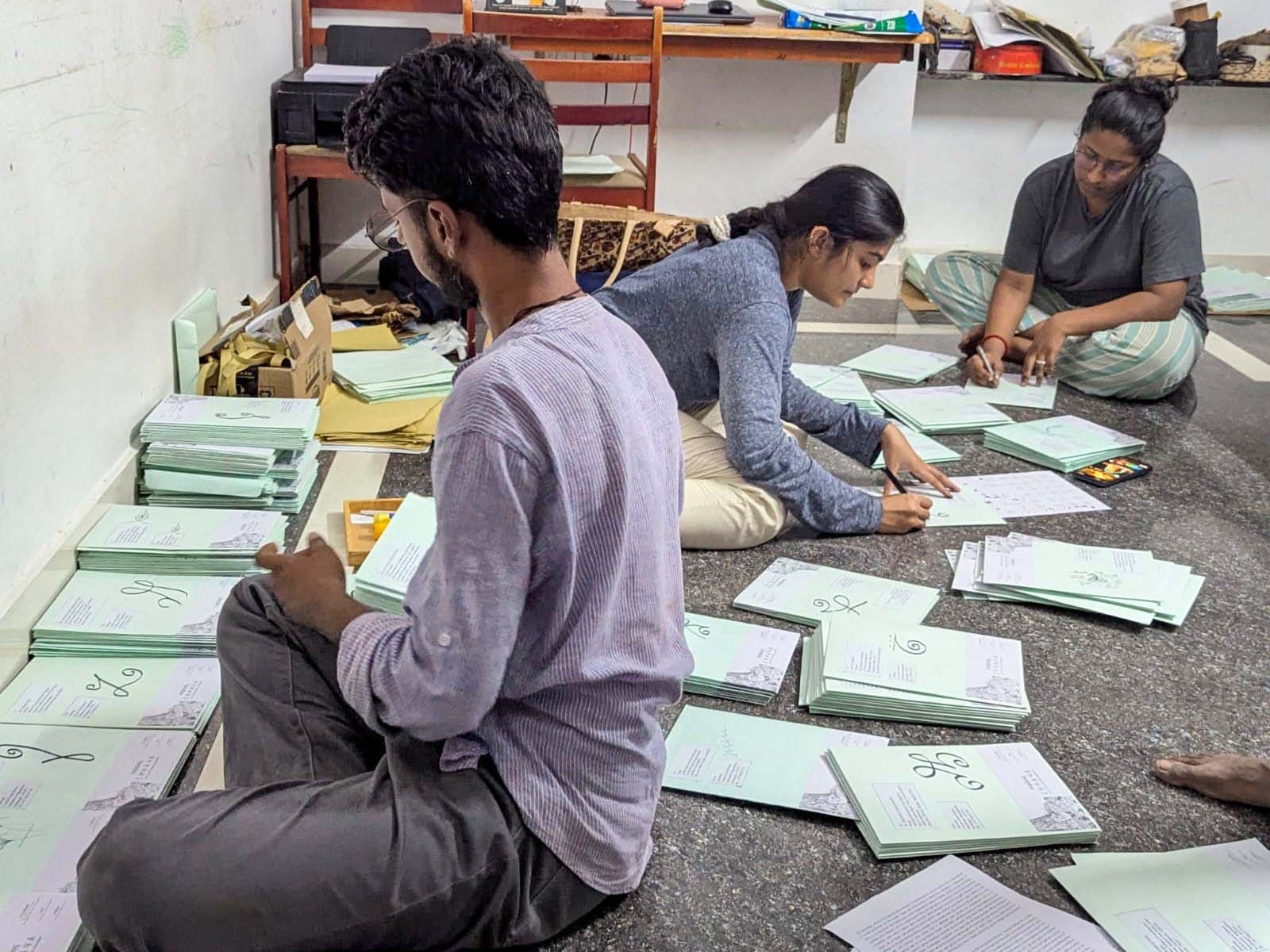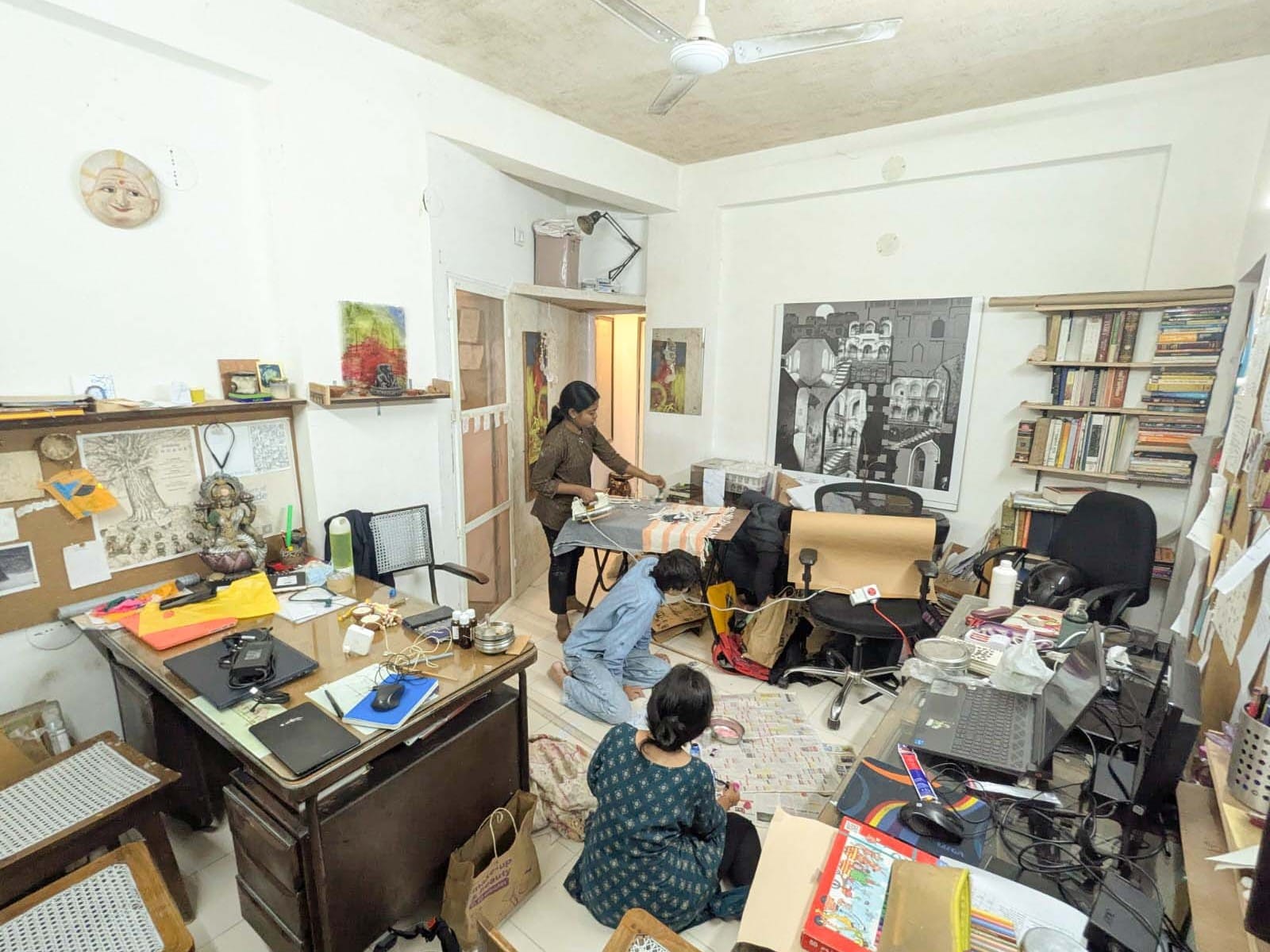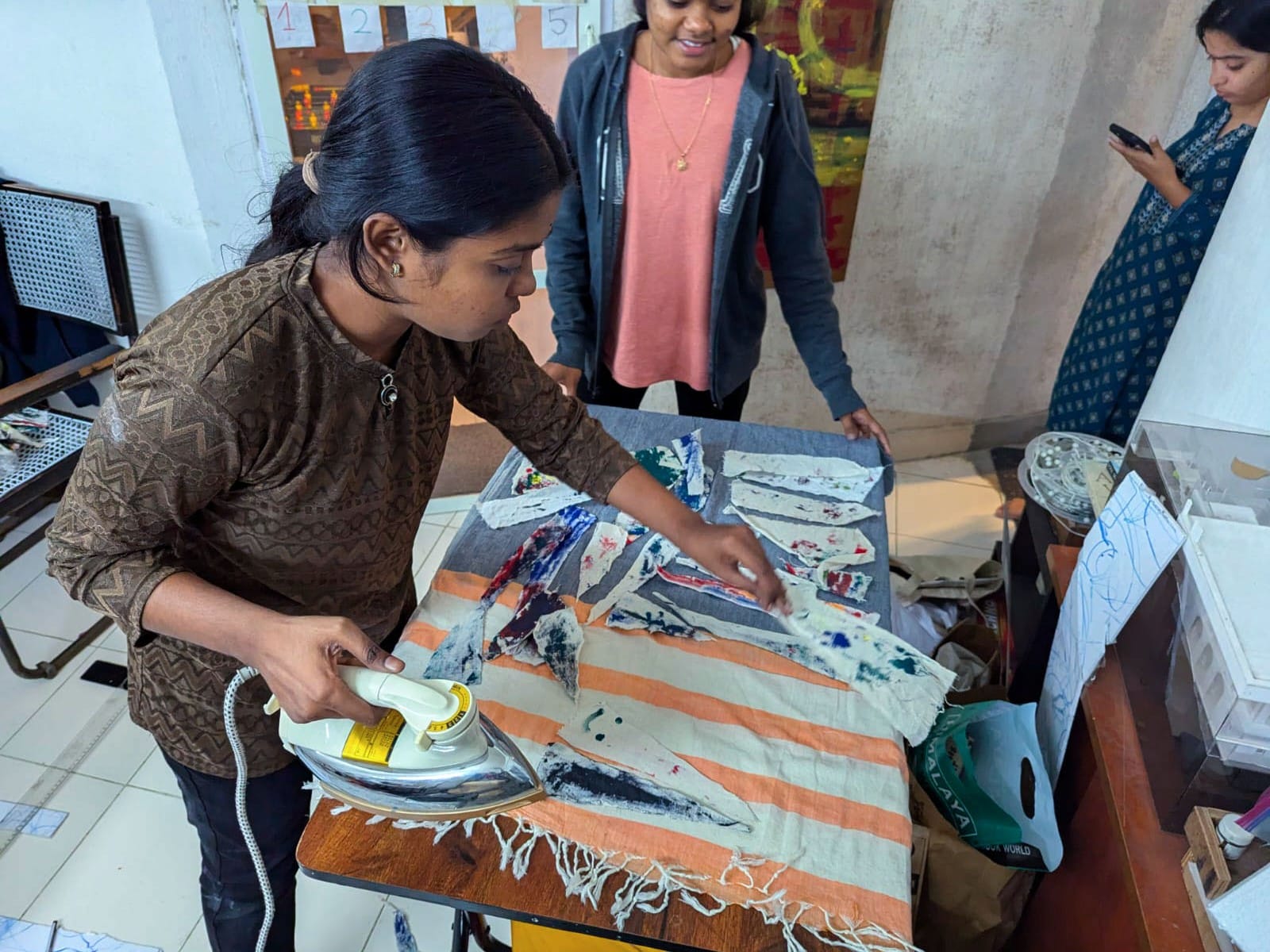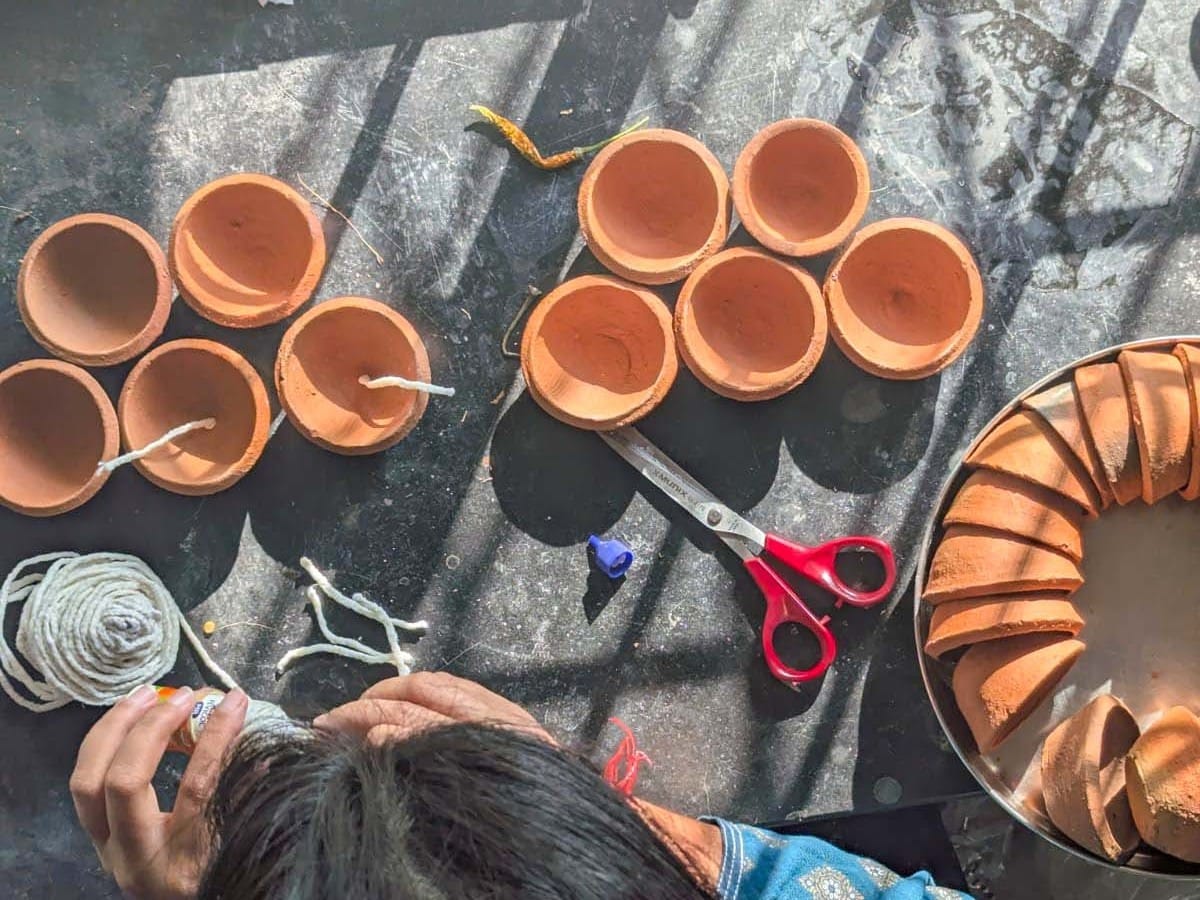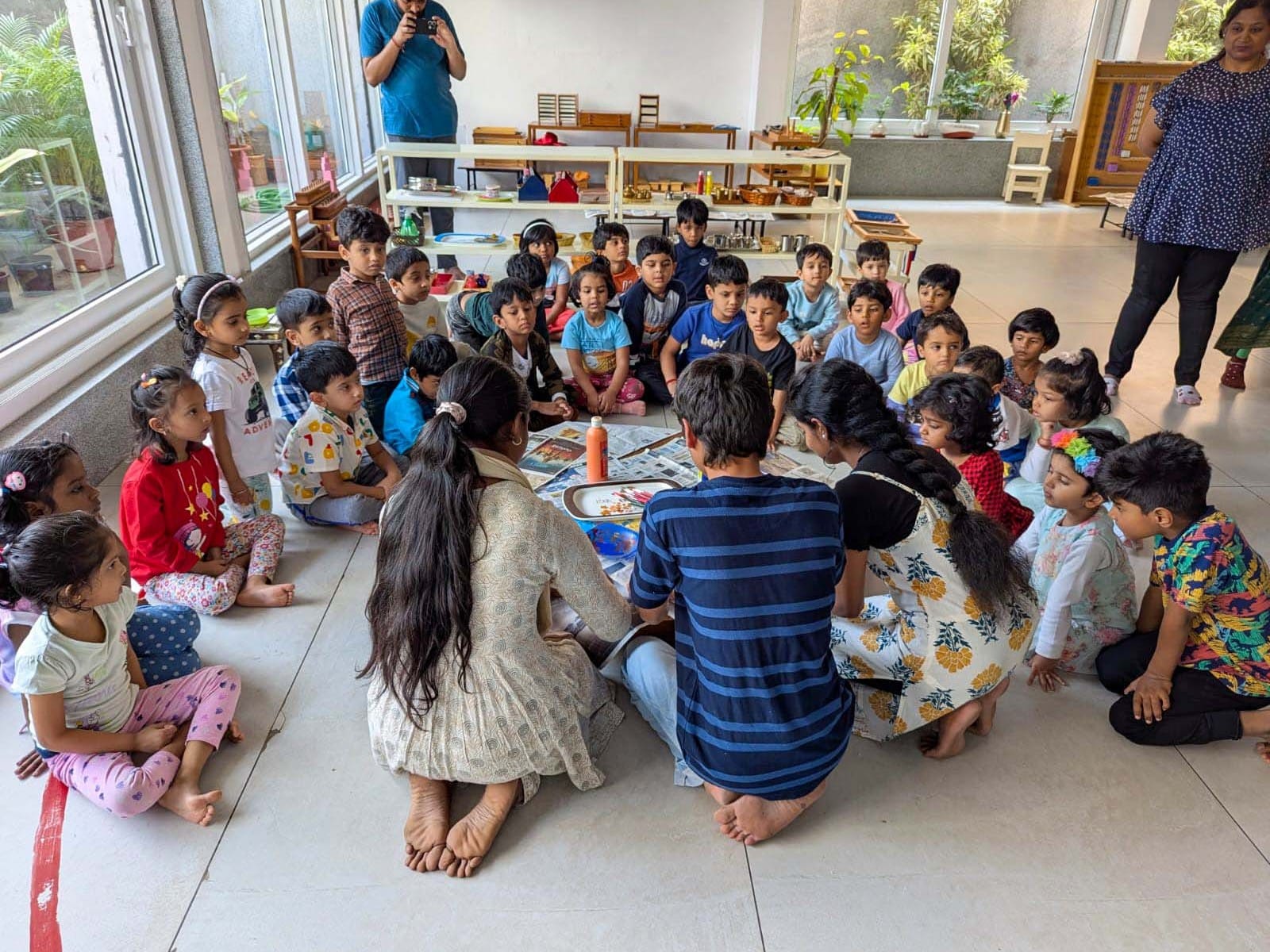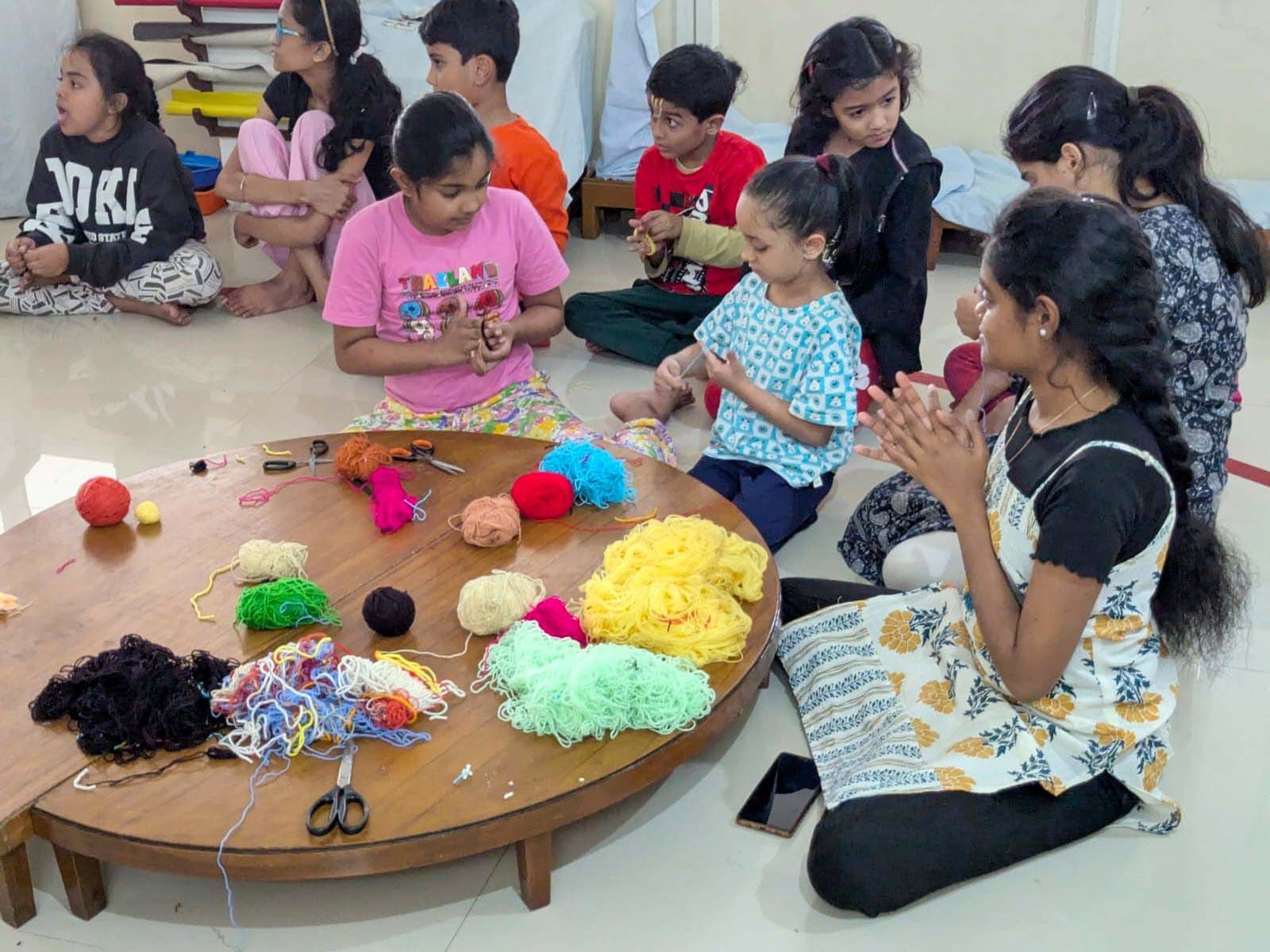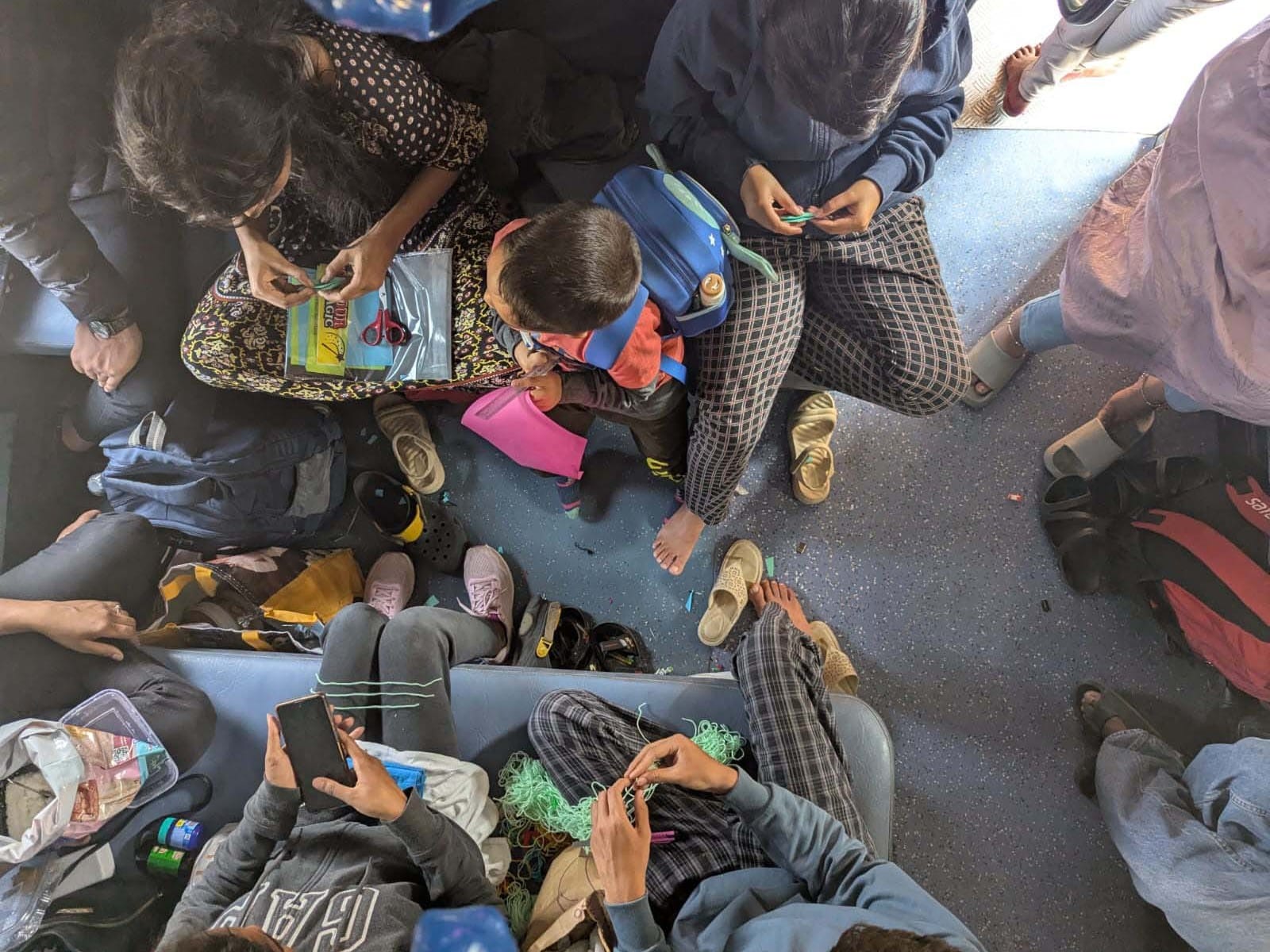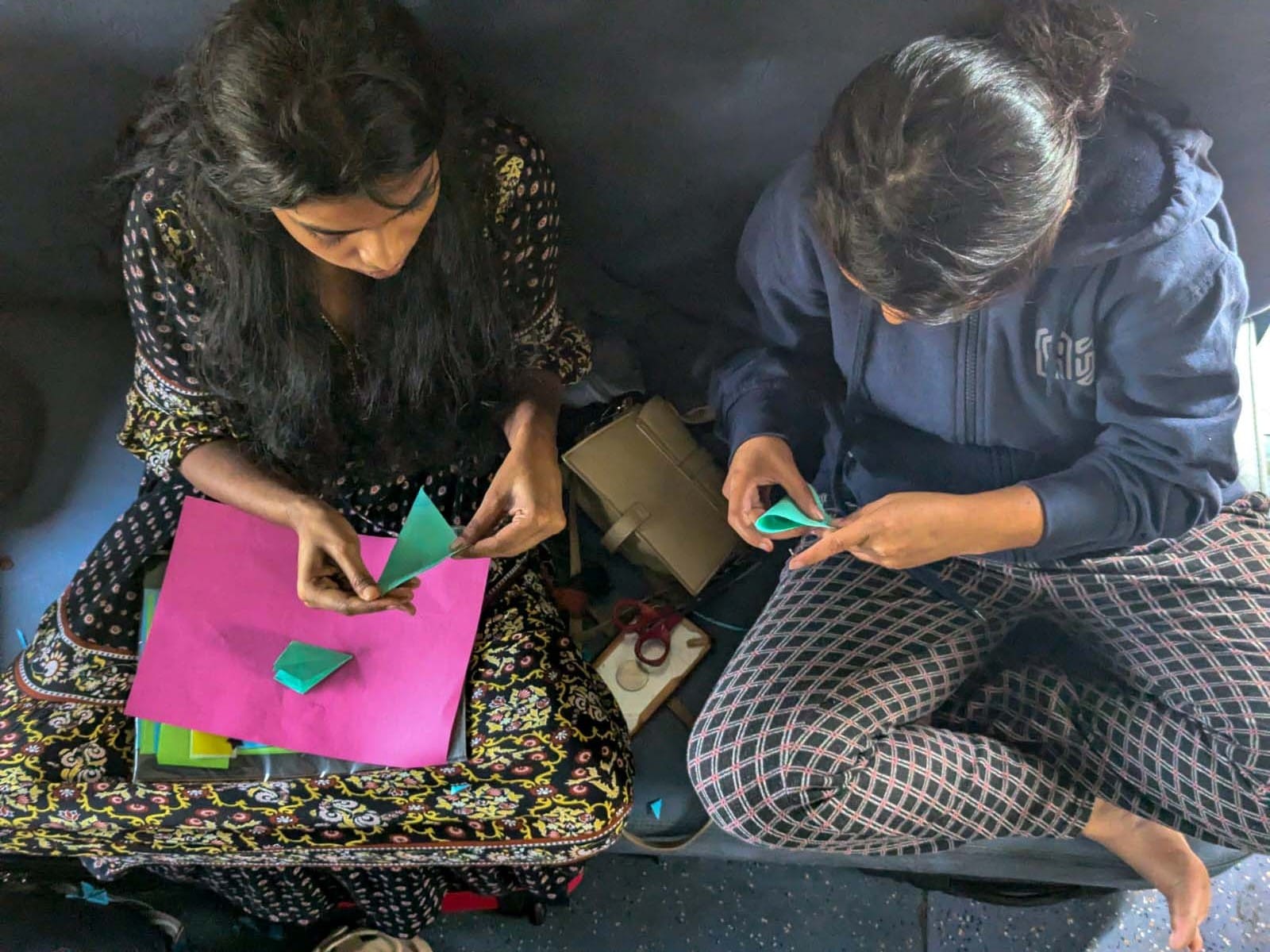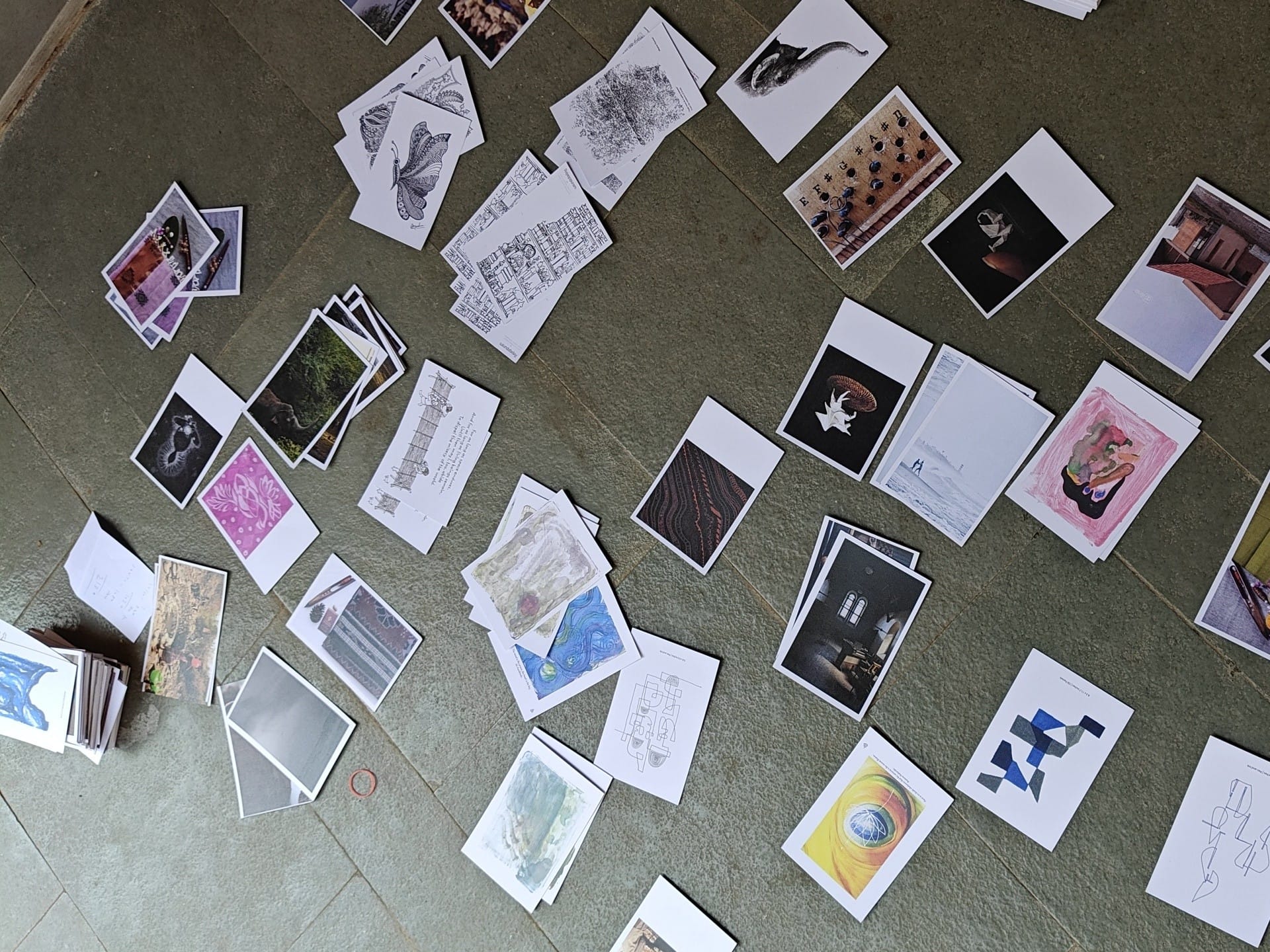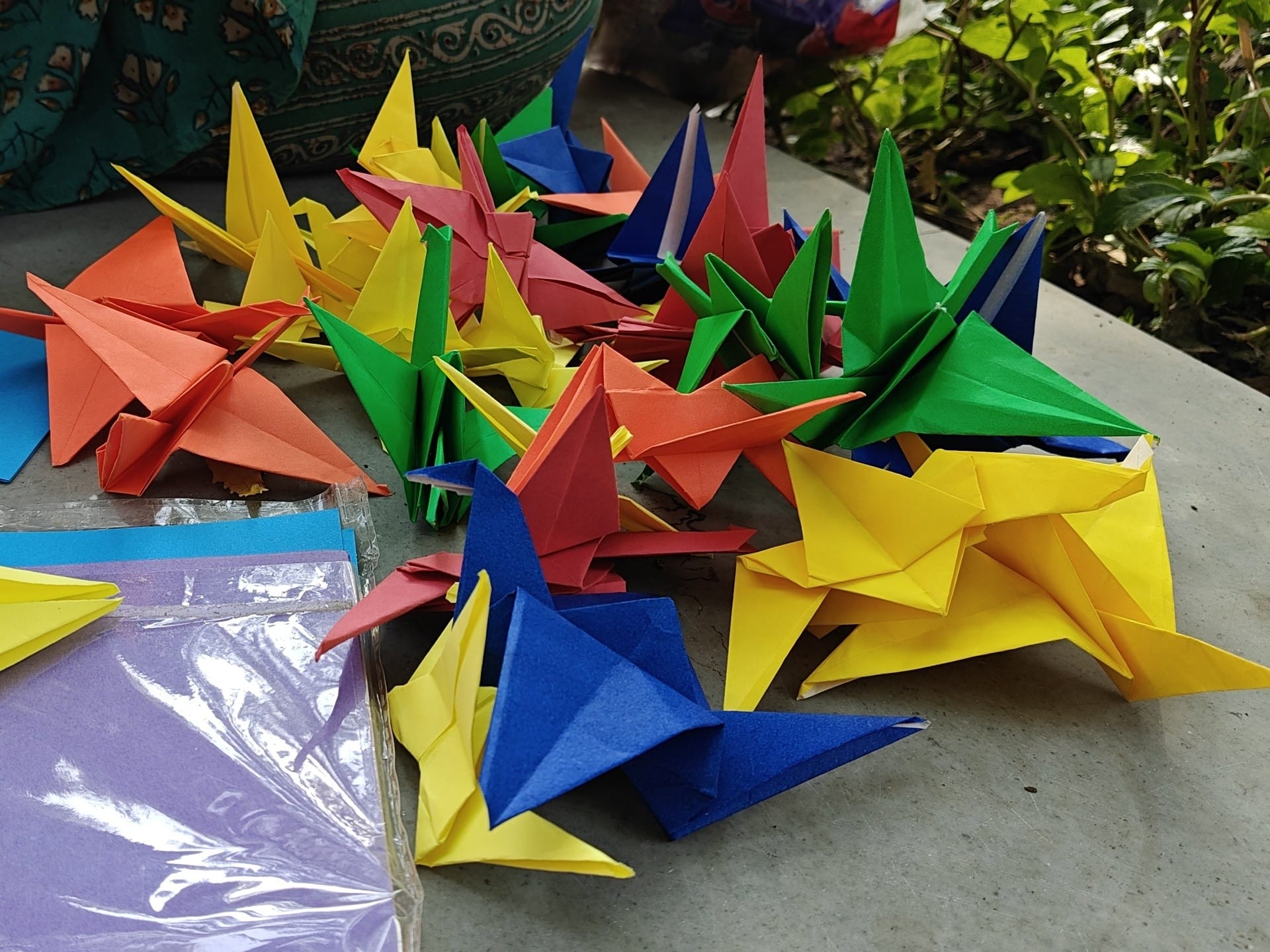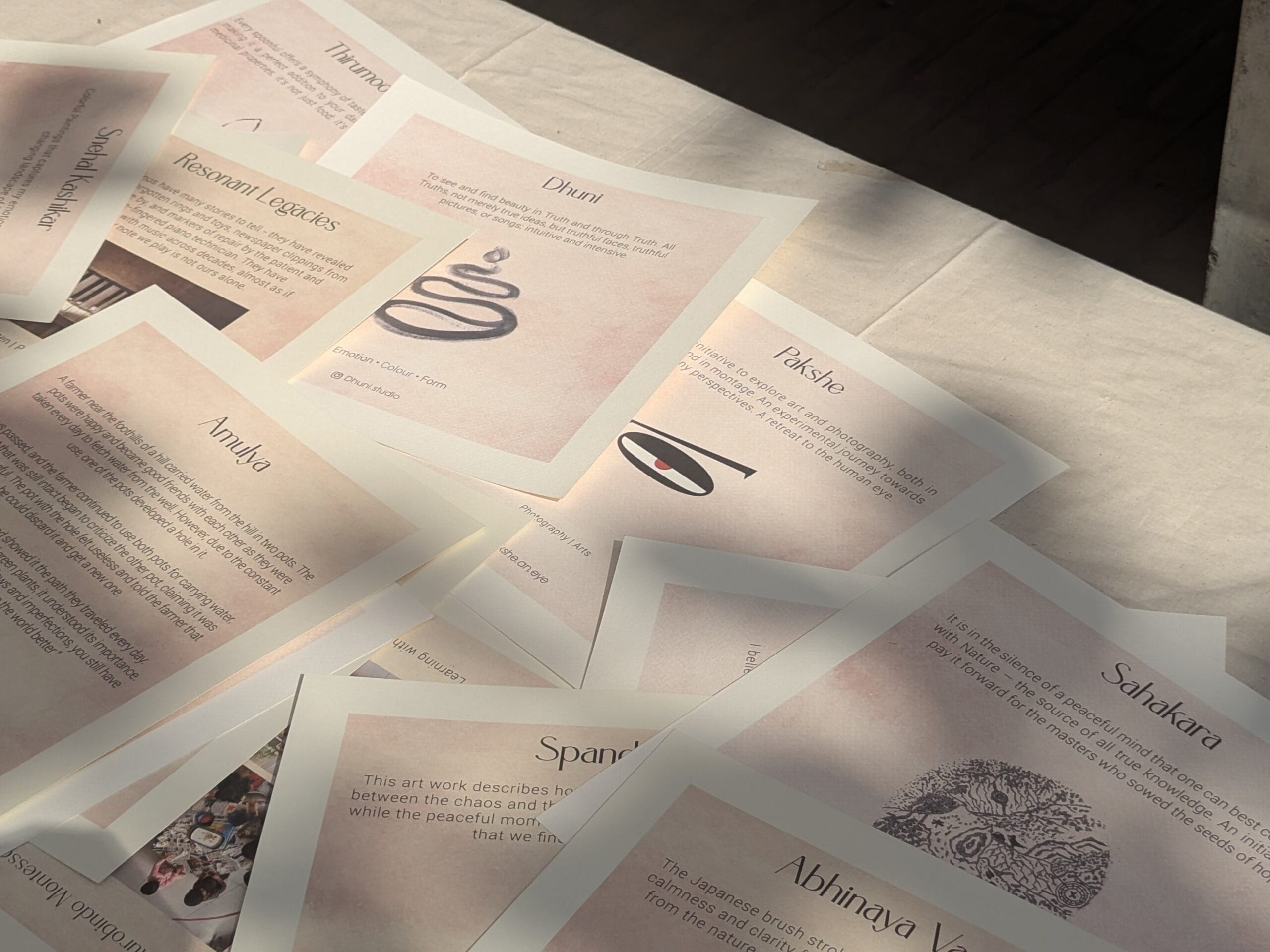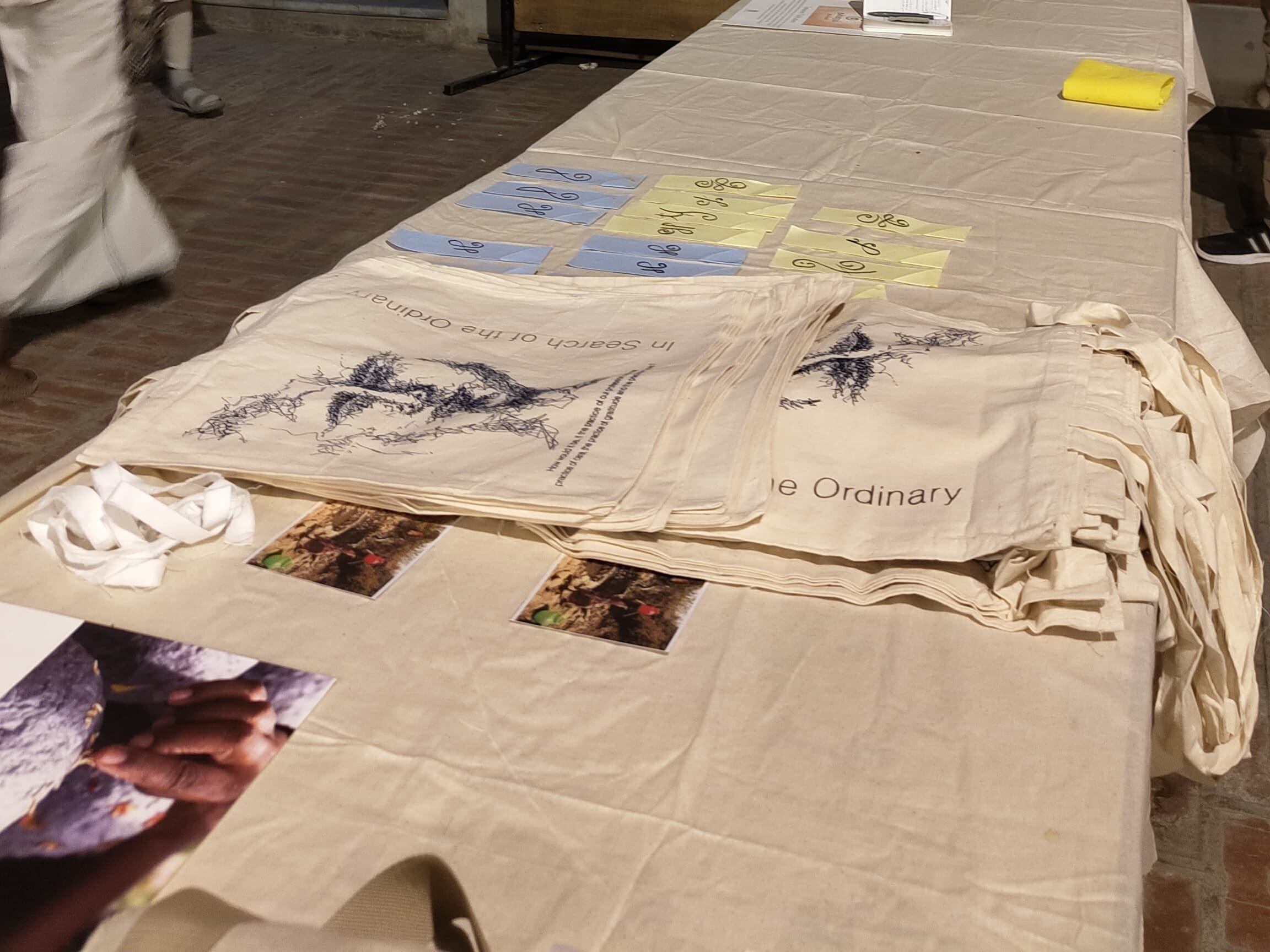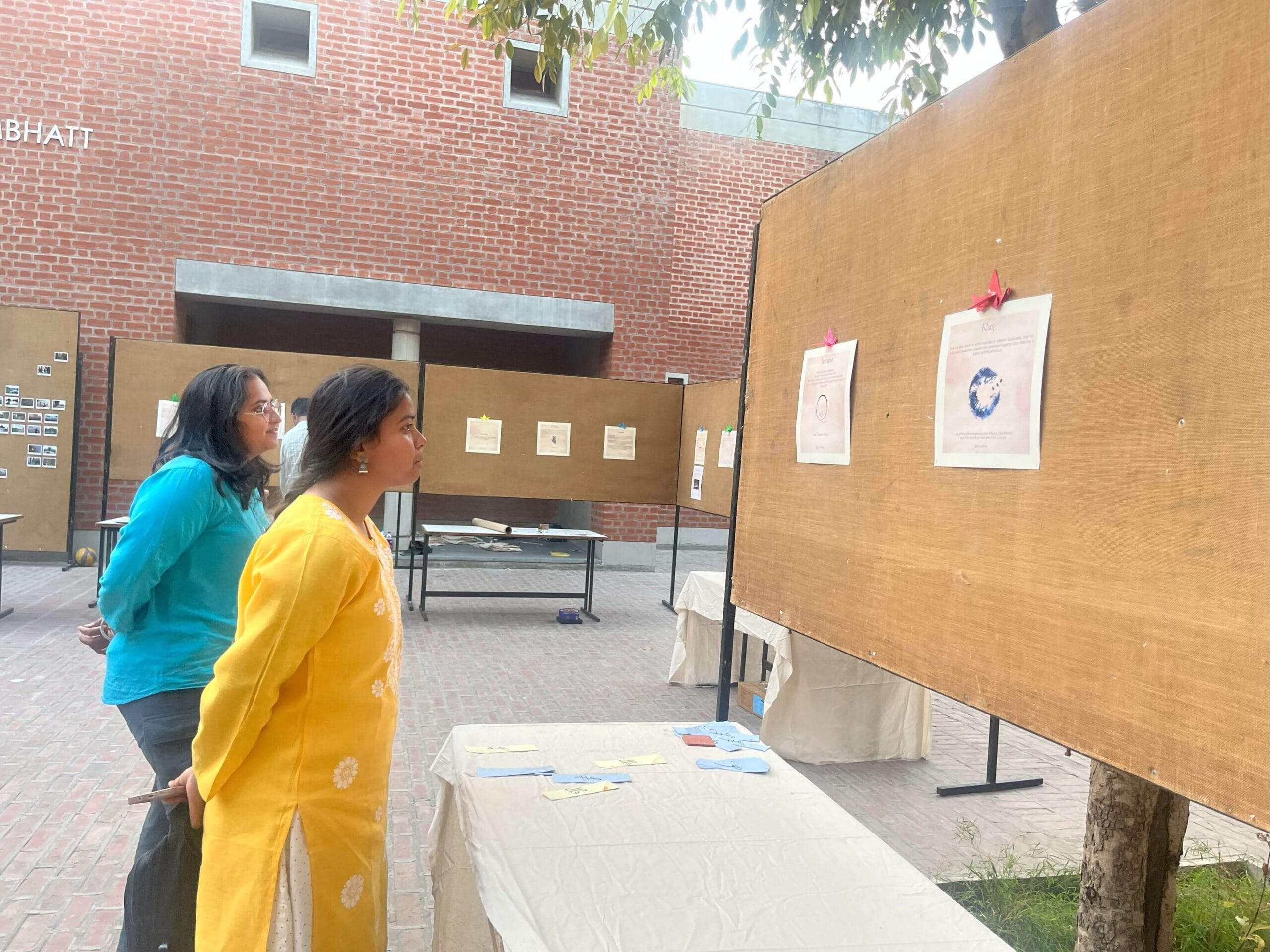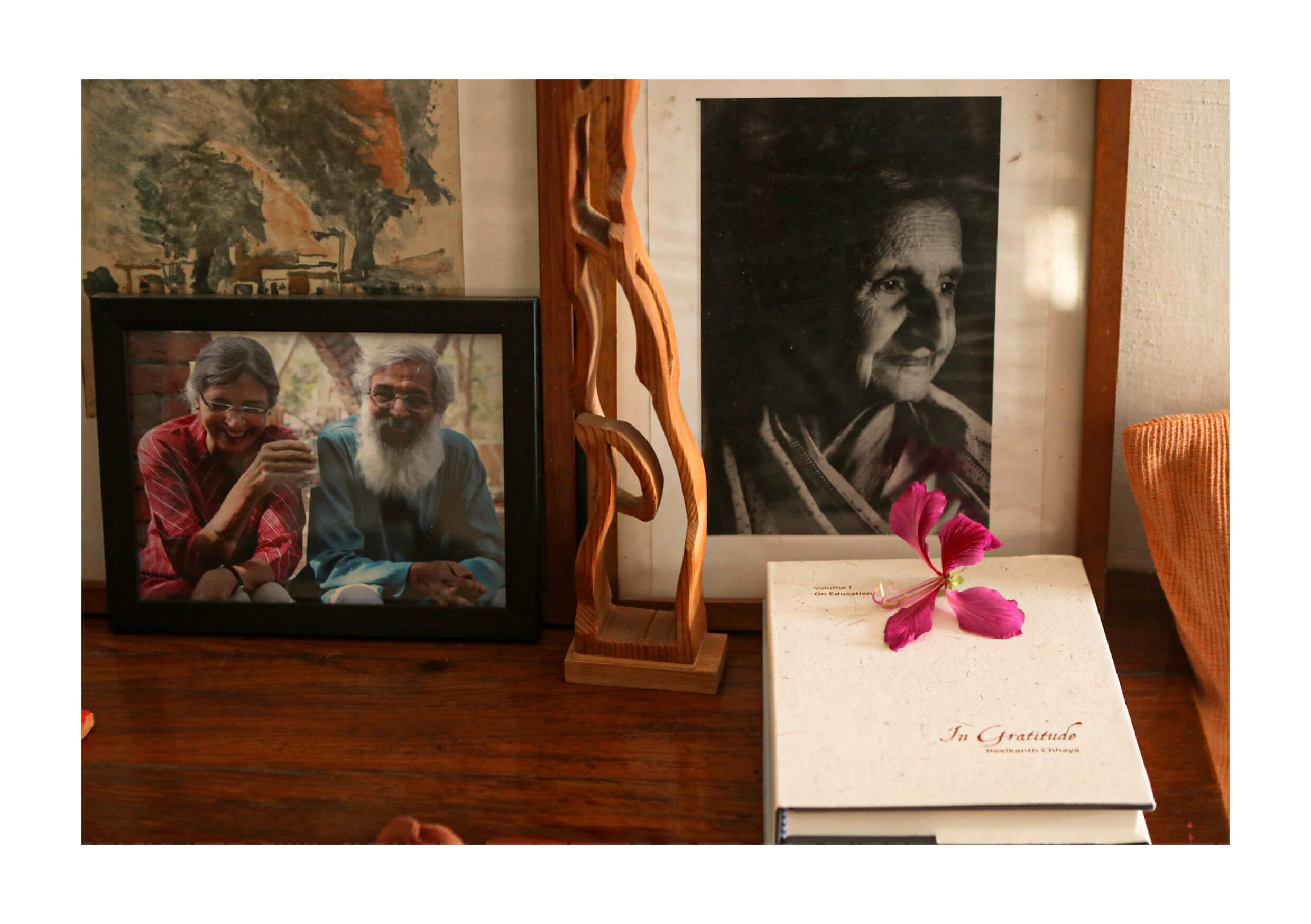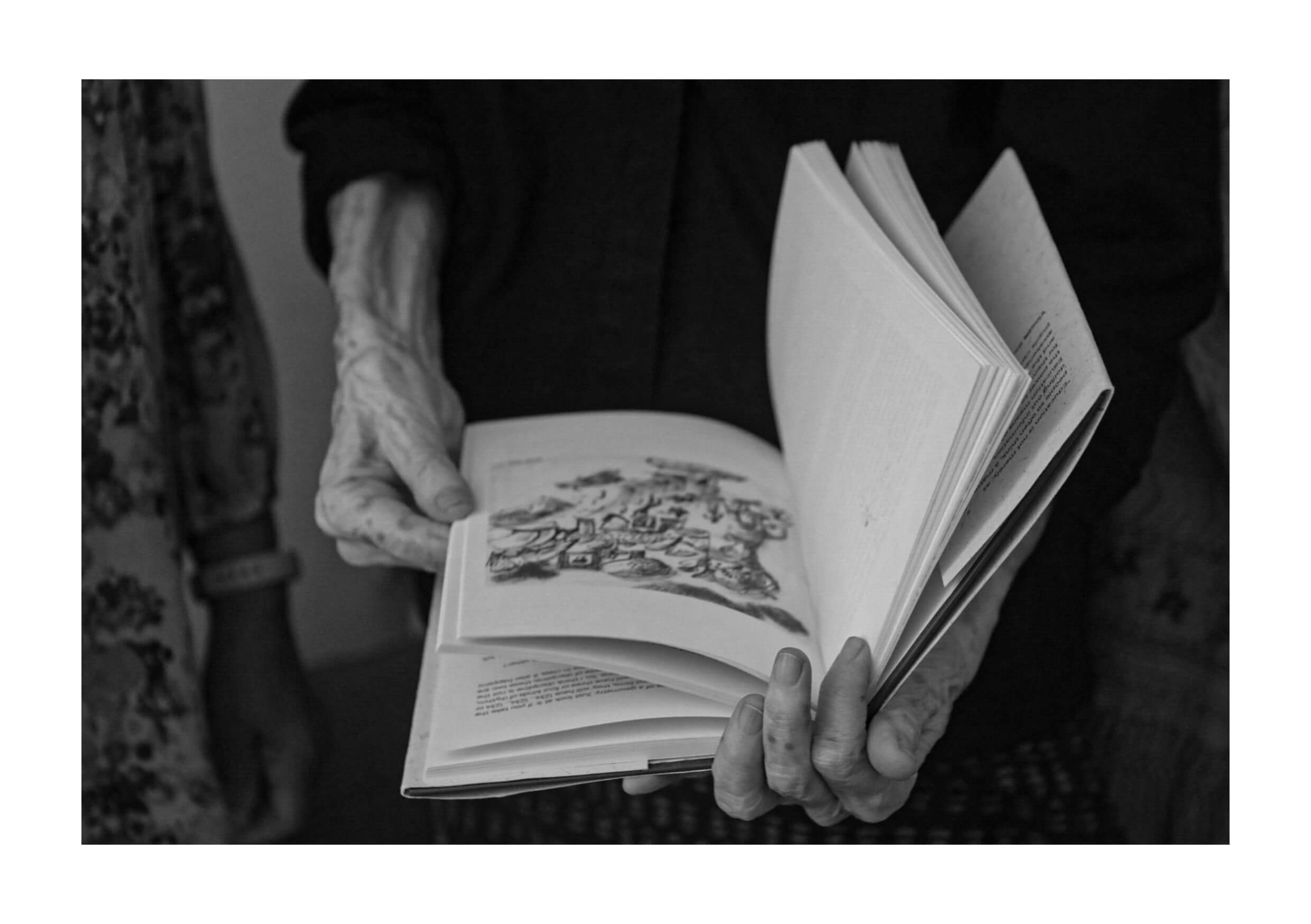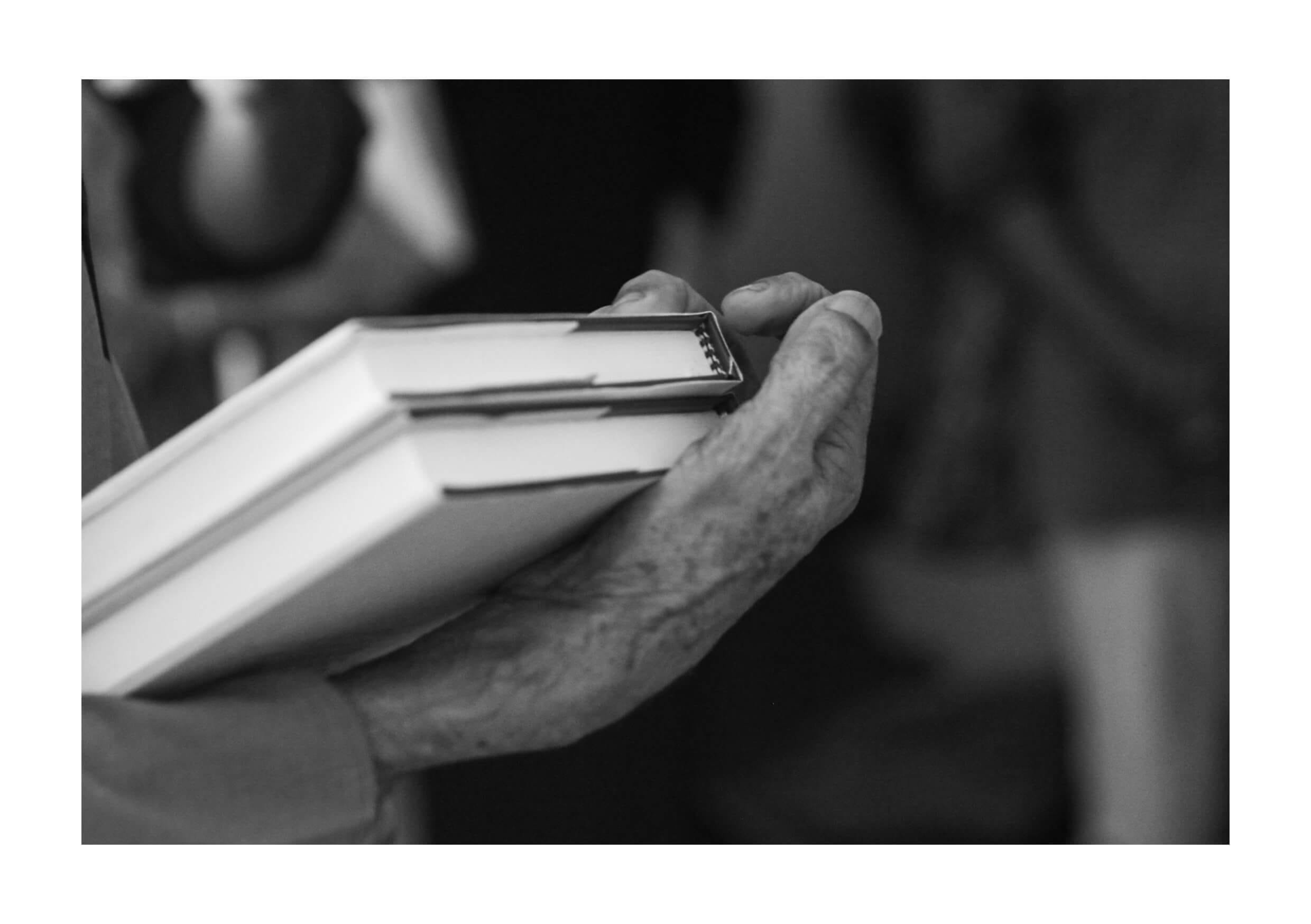
Connecting the Dots
In the small hill town of Arunachala in Tamilnadu, millions of devotees throng the sacred hill every December on a particular evening to witness a lamp lit at the hill’s peak. At the very moment the lamp is lit, millions of people who circumambulate the hill pause wherever they are and, in unison, shout out, ‘Arohara…Arohara…Arohara’. A million voices in unison! A sky-piercing cry with ‘tears of bliss’.
I have experienced this bliss on another occasion.
A triangle was being drawn on a whiteboard with a blue marker, explaining the fundamentals of Architecture. As the lean, kurta-clad, white-bearded lecturer turned around and gazed at me, I did not know why I was uncontrollably tearing up so much. That moment stayed with me forever, and from then on, I have been a secret admirer of this caricaturistic bearded child. He is a child at heart and a very intense, fierce and passionate doer, like his mentors. In fact, it was my first elective and his last elective, which he offered at CEPT University. I have never seen somebody so dedicated to what they teach that they become the subject itself. I have seen his body bend in all ways that are humanly possible to explain a concept. He becomes the column, the beam, the door, the window, or anything he discusses. Those sharp radiating eyes filled with wisdom, empathy and grace – Prof. Neelkanth Chhaya.

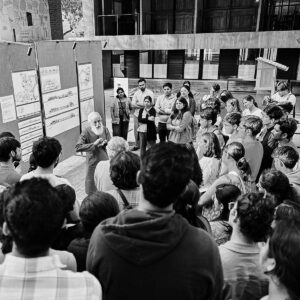
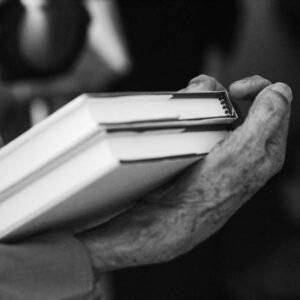

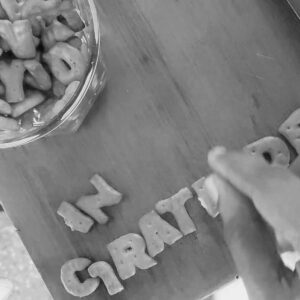

Talking to Chhaya
24th Jan 2025,CEPT University
Book launch: In Gratitude & Listening to Stillness | Documentary trailer premiere: Kaka | Exhibition: In Search of the Ordinary
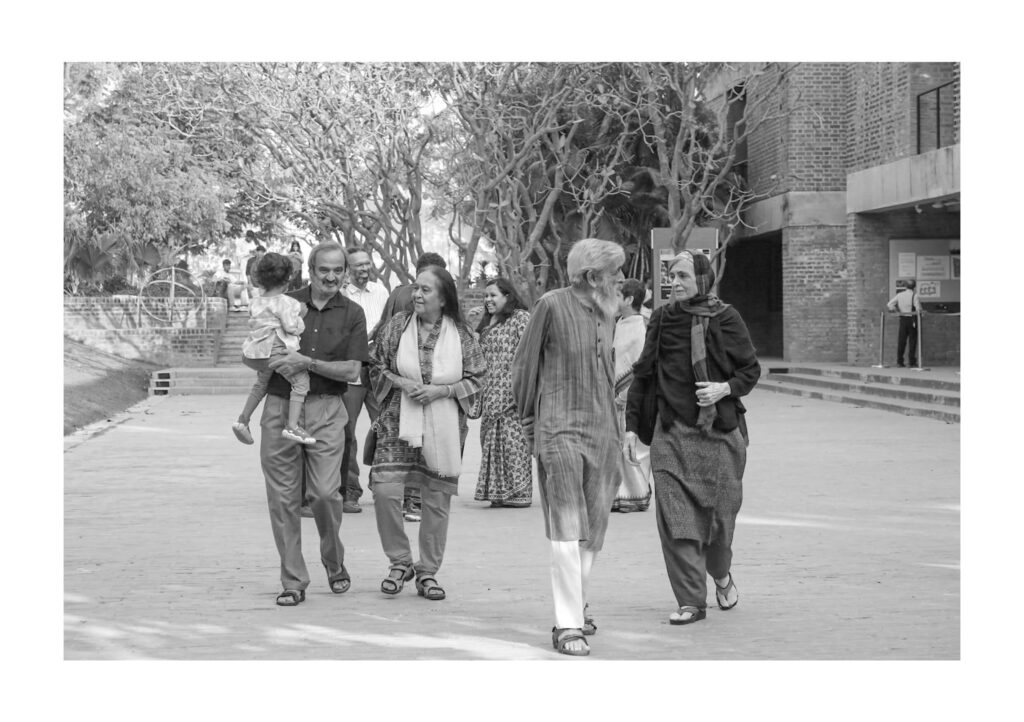
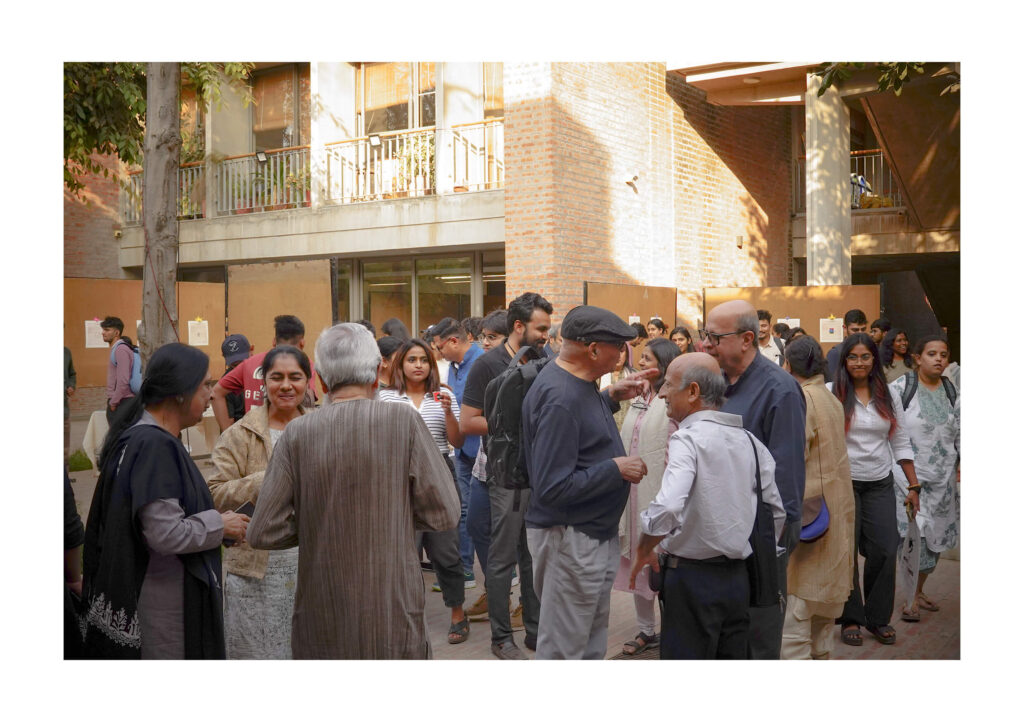
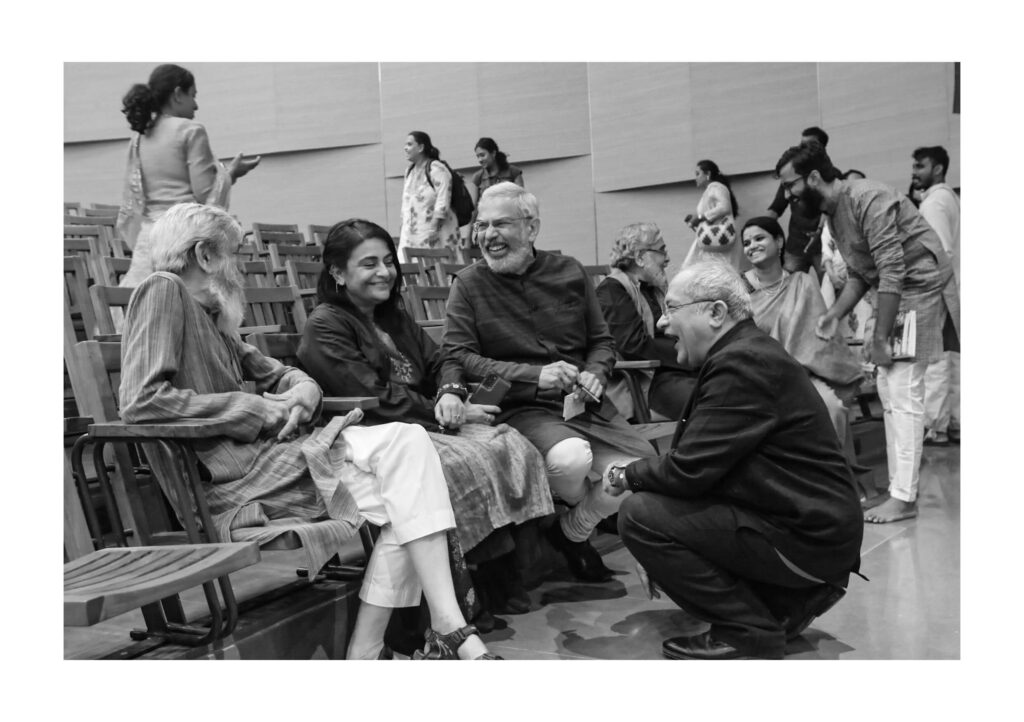

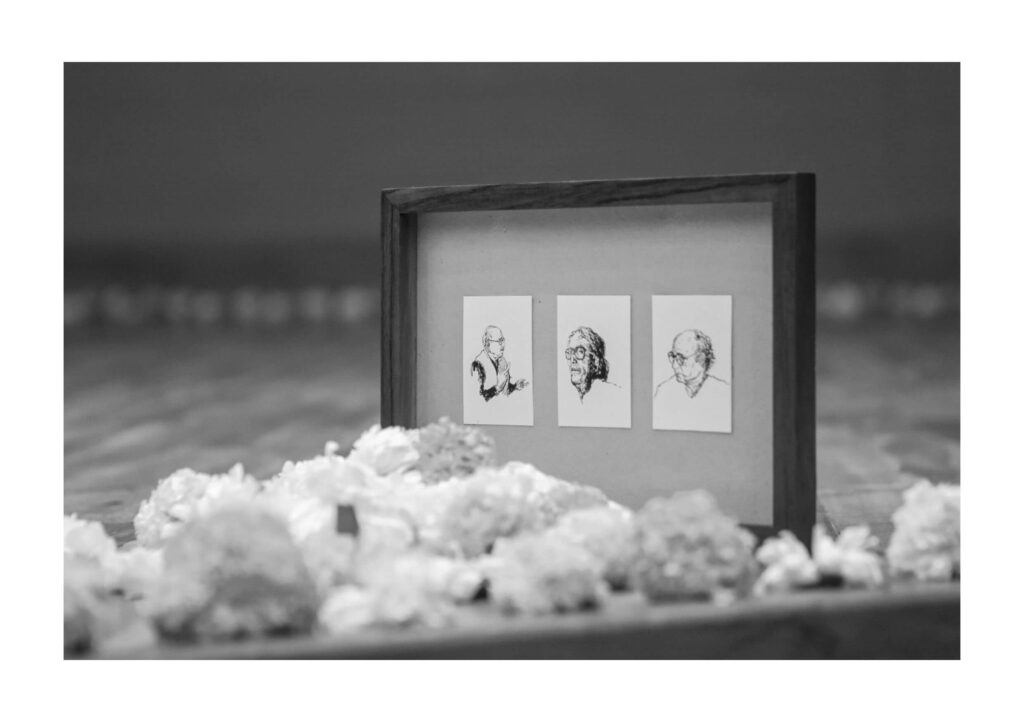
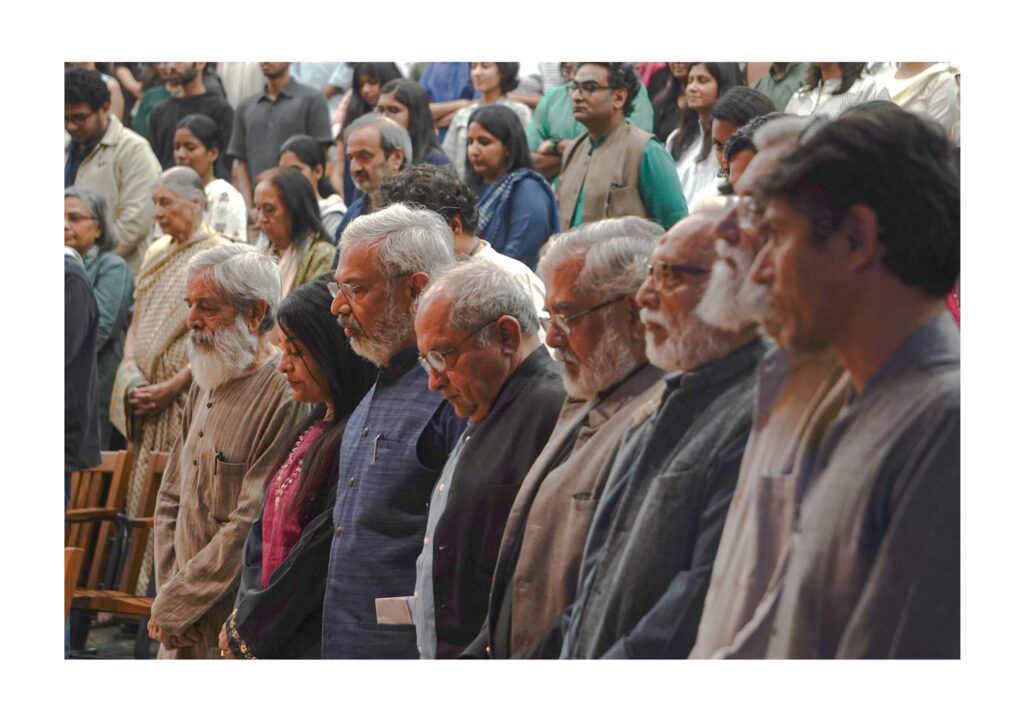

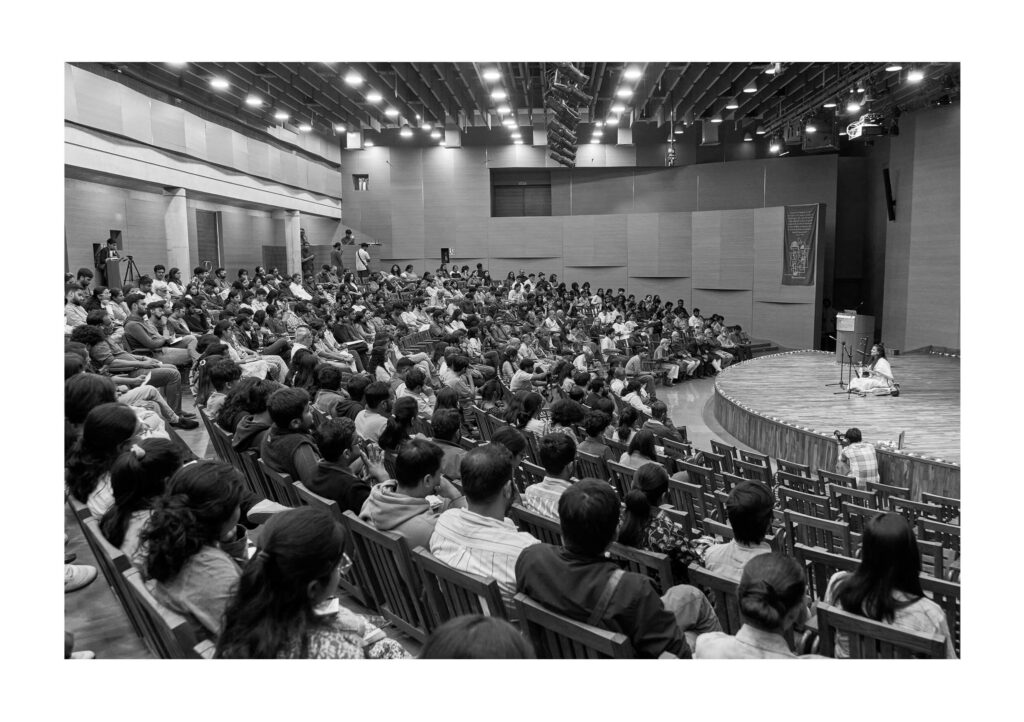
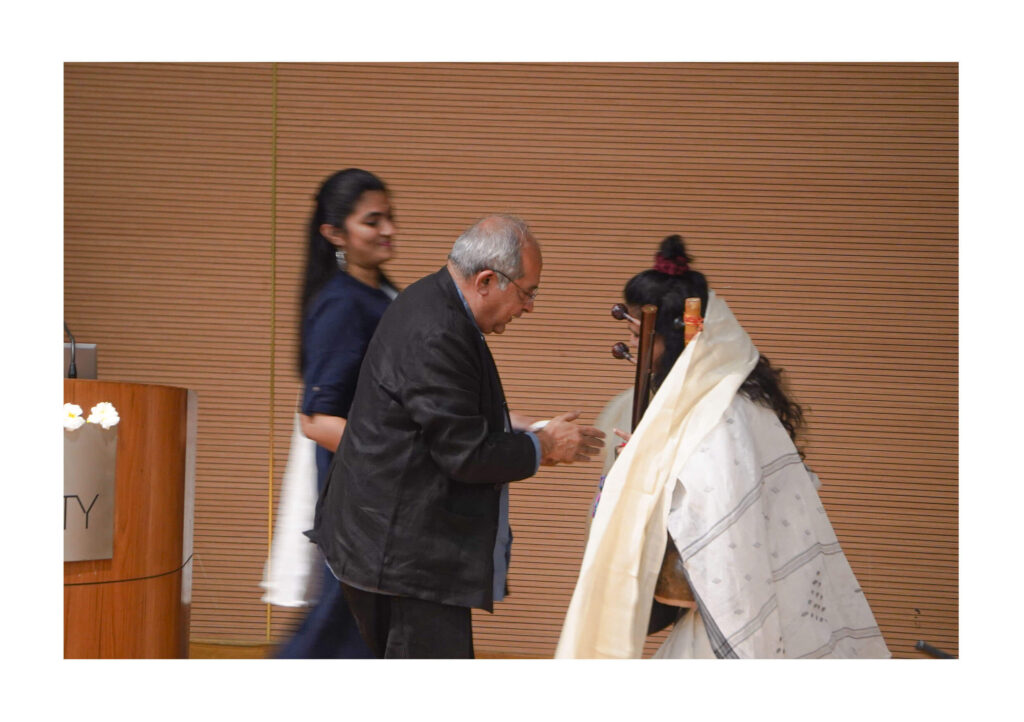
Coincidences do not exist. The event ‘Talking to Chhaya’ was a reminder of that. Kaushik Kumar commenced the event by introducing it as a collective representation of Akarmaa, Cuckoo, the Office of Neelkanth Chhaya, Mandala Design Services, CEPT University and inclusive of those who were present there, and also those who were not able to make it to the event. The whole event in some form was a representative gesture of the varied kinds of relationships that each one share with Prof. Neelkanth Chhaya, Ar. Sohan Nilkanth and Ar. Kallol Joshi and most importantly with the very place, CEPT. The entire event was also an act of sharing gratitude or some form of paying forward to what everyone received together from this place. And we at Akarmaa are so blessed to be one of the receivers of the place. Akarmaa is only a channel through which this collective gratitude has manifested like a child in the sense of Kahlil Gibran’s saying “Your children are not your children. They are through you, not from you”. The entire event in some form is through us and not by us.
The event began by paying tribute to Prof. Doshi, Prof. Anant Raje and Prof. Kurula Varkey. Dr. JS Malliga, one of the torchbearers of The Adyar Cancer Research Institute, along with Mrs. Venkatalakshmi Ramakrishnan, the nurturer of a seed of the entire event, Radhika Kathpalia, Rajeev Kathpalia and Khushnu Panthaki offered flower tribute to those masters. This was followed by a minute of silence in remembrance of Prof. Doshi on his second memorial anniversary.
Sahajo Sang, an initiative of music through which various lives have been touched, documenting and archiving different folk songs, traditions and folk instruments across India. Founded by Tejashree Ingawala, a disciple of renowned Parvathy Baul, who also has a very unique way of practice, where she heals through prayer fasting and singing, setting the grounding tone for the evening through divine invocation. Her voice echoed in the hall as well in everyone’s hearts. Prof. Tridip Suhrud, Provost of CEPT University felicitated her.
In Search of the Ordinary
Exhibition was organised and curated by the office of Neelkanth Chhaya and Mandala Design Services.
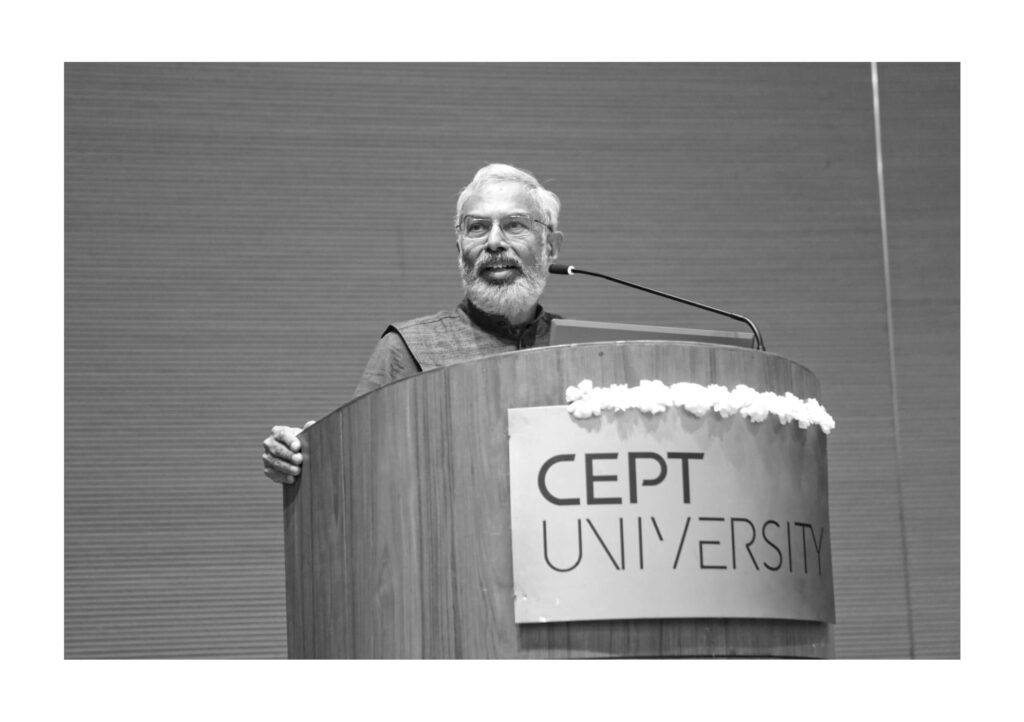
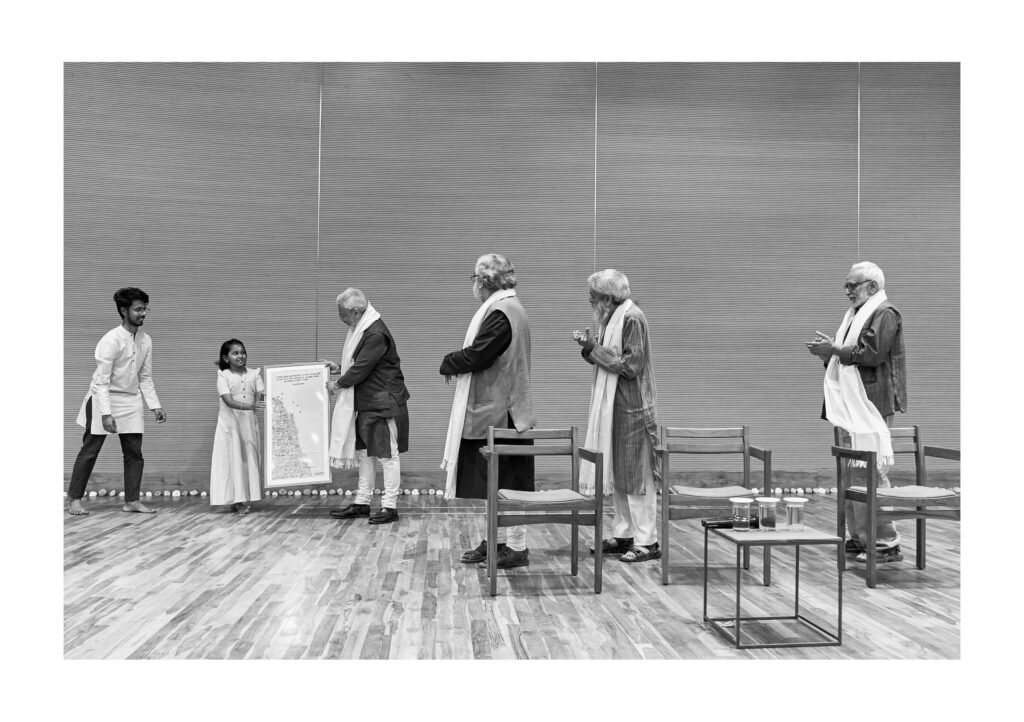



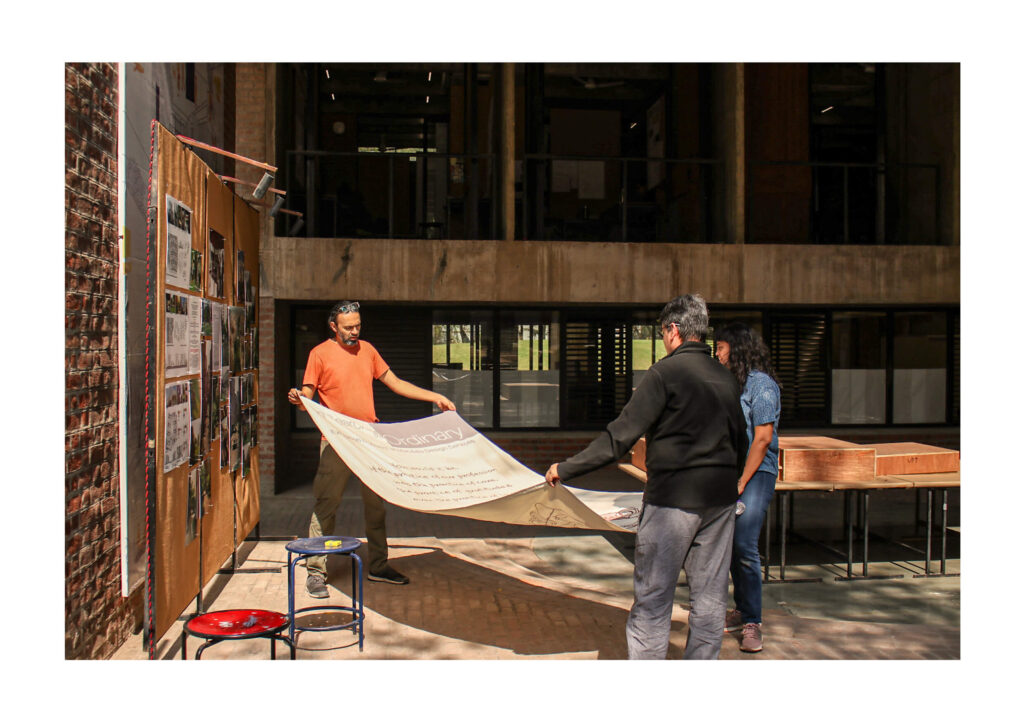
In one of the conversations while preparing for the event, Karthikeya Chhaya mentioned that the exhibition of Mandala Design Services in some form is a ‘Homecoming for the boys’. And we could not agree more with him. The thought immediately resonated with ‘Architecture need to do no more, nor should it ever do less, than assist man’s homecoming’. We are grateful to this place, for having assisted in our boys’ homecoming. Prof. Neelkanth Chhaya, Prof. Sohan Nilkanth, and Prof. Kallol Joshi were called upon on stage. Prof. Sachin Soni, from CEPT University, introduced Mandala Design Services and it’s founding partners. He also introduced Karthikeya Sarabhai and invited him to talk about the exhibition ‘In Search of the Ordinary’ and declare it open.
“The work exhibited here represents the architectural thought of three architect friends who have worked together for over a decade. Their work spans a period of great social, political, economic and cultural change in India – 1980s to the present.
These changes naturally affected the practice of architecture, including the development of cities and of housing. The works of Balkrishna Doshi and Charles Correa, along with those of Achyut Kanvinde, were pathbreaking challenges to all architects who practised in this period. Both Neelkanth Chhaya and Sohan Nilkanth were students at the School of Architecture, Ahmedabad which was founded by a group led by Balkrishna Doshi. They studied and worked during their student days with him. Kallol Joshi studied at Vadodara but worked with two of Doshi’s important acolytes, P. S. Rajan and Panna Rajan. It is thus fitting that the first Balkrishna Doshi Memorial Exhibition, sponsored by Harshavardhan Neotia who brought Doshi to Kolkata, should display the work of architects who were inspired by the creative practices that Doshi inculcated. All the three architects exhibiting here dedicate this exhibition to Balkrishna Doshi, who was their teacher, mentor, friend and colleague”. (Source: Exhibition panel)
Karthikey Sarabhai shared his experience of working with Mandala Design Services and mentioned moments that were close to his heart, which showcased the integrity of their practice. He appreciated that their practice gave importance to large-scale details to small-scale details; from responding to contours to designing the door handles. He specifically commended their ability to address both the site and the user in a compassionate way, stating examples. He then felicitated the three partners of Mandala Design Services and later he was felicitated by Puviyazh from Nurpu Handlooms.
Beyond Conversations
Prof. Neelkanth Chhaya and Cuckoo Sivaraj in conversation.

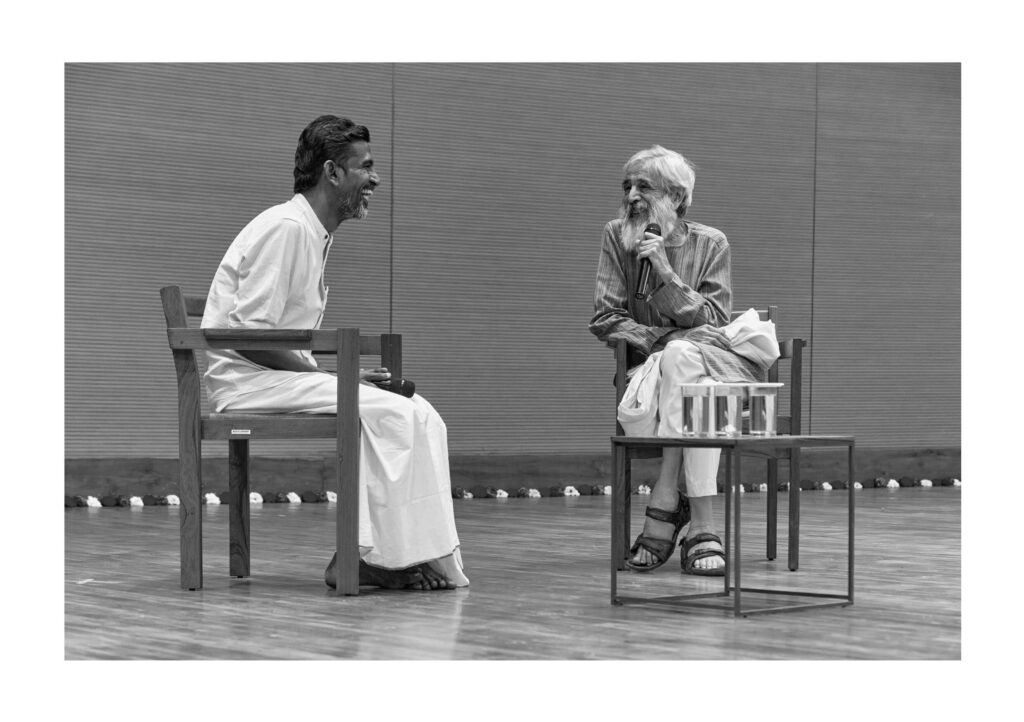

The following words of Prof. Chhaya were imbibed by those who were working in the making of the book and often quoted during casual conversations in the studio. “There are two ways to look at the world. One way is that everybody is good unless they are proven guilty. The other way is that everybody is guilty until they prove themselves not guilty”. Along the same lines, Kaushik suggested there might be a third way of looking at the world, which is “Everybody is good, even if they are proven guilty”, that there is a good in everyone. Though it’s a rare approach, he extended his gratitude to two of his masters, who live that approach; Prof. Chhaya and Mr. Sivaraj and invited them for a conversation.
Sivaraj, fondly known as Sivanna, the founder of Cuckoo Forest School, a space of learning for all groups, especially for children, based on the principles of Nai Talim. The conversation started with the remembrance of Prof. Chhaya’s mother, the learnings from his mother that he carries forward. Sivanna then shared the story of Krishnammal Jagannathan, who walked the length and breadth of India along with Acharya Vinoba Bhave in the Bhoodan Movement. She, who is turning a hundred years old soon, still wishes to build 6000 houses for the fishermen of Thiruvarur. He then remembered Nigamananda, who fasted to clean the Ganga and sacrificed his life on the 116th day of fasting without food and water. Through this he asked on how and why Prof. Chhaya believes in the ‘Architecture of Ahimsa’ amidst the globalisation and institutionalisation in the world. Metaphorically Sivanna compared this to walking with a small candle through the cyclone. Prof. Chhaya responded that one shouldn’t be afraid of being small and should still continue to be without thinking beyond. He then mentioned the difference between one wanting to change everything and changing oneself, which is missing in the architects of the present generation.
Prof. Chhaya was then requested to share on how he managed not to lose hope in fellow human beings and humanity as such despite all the adversities, rejections, and ridicule that he would have faced. So, learning from this would help the younger generation to be more hopeful and not get depressed about smaller situations in life. Prof. Chhaya shared the story of how Prof. RJ Shah (in the audience), who was his professor, had a smile on his face when he failed students. This is because he believed that the student was capable of doing better than what was done. Prof. Chhaya added that all his mentors had shared the story of ‘I also failed, once. But now we are doing something’. He then said the depression in the present generation is because of the fixed goal, and it’s okay to sometimes not reach it.
In continuation of the conversation, Sivanna shared the fact that around twenty lakh tonnes of sand granules from the African desert fly across the ocean to reach the Amazon forest every year. Research has shown that the phosphorus in the granules of sand causes rain in the Amazon. That nature is filled with magic. He expressed concern that the pedagogy in the institutions of architecture is no longer teaching this magic or the magic of caterpillars evolving into butterflies. How then does one create a pedagogy that believes in this magic? He asked Prof. Chhaya to share his thoughts about it. Prof. Chhaya responded that it was a very important question and needed an elaborate discussion, yet concisely shared the secret of magic though. He said that the magic happens when someone is quiet and observes.
Sivanna shared about the pedagogy of Cuckoo Forest School, a community for children at the foothills of Javadhu Hills. He said that the child coming from the land may not necessarily become a doctor or an engineer but definitely would become someone who would be able to take a mug of water from the drainage and water the plants nearby. Sivanna expressed his gratitude for the opportunity to be in the presence of a master like Prof. Chhaya. The conversation ended with Prof. Chhaya felicitating Sivanna.
Books – Vol 1 & Vol 2
Transcribed lectures and conversations of Prof. Neelkanth Chhaya

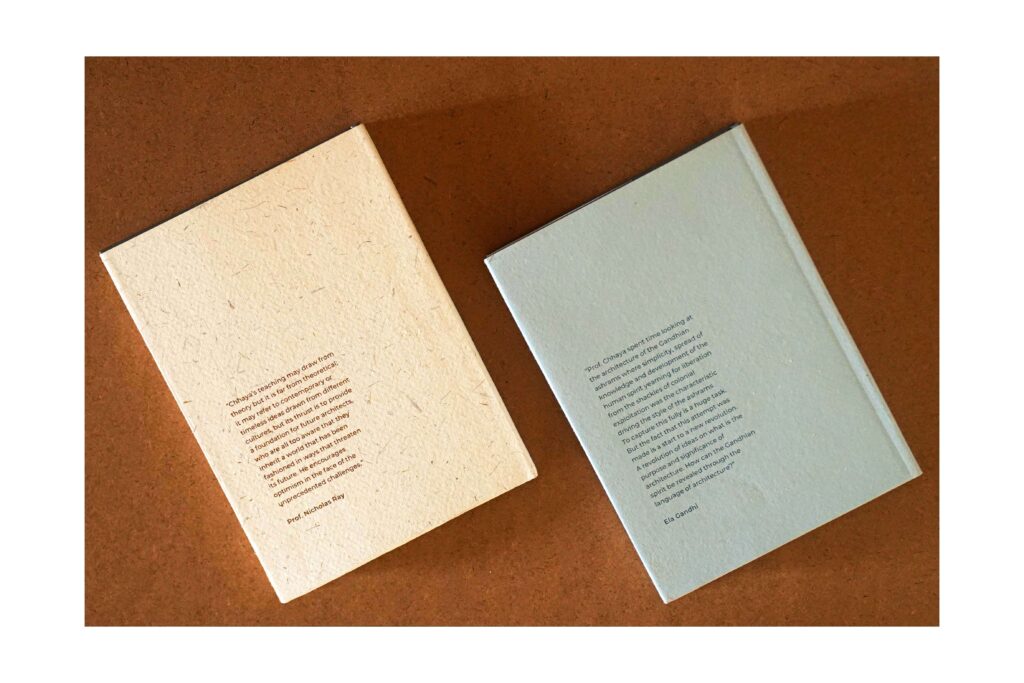
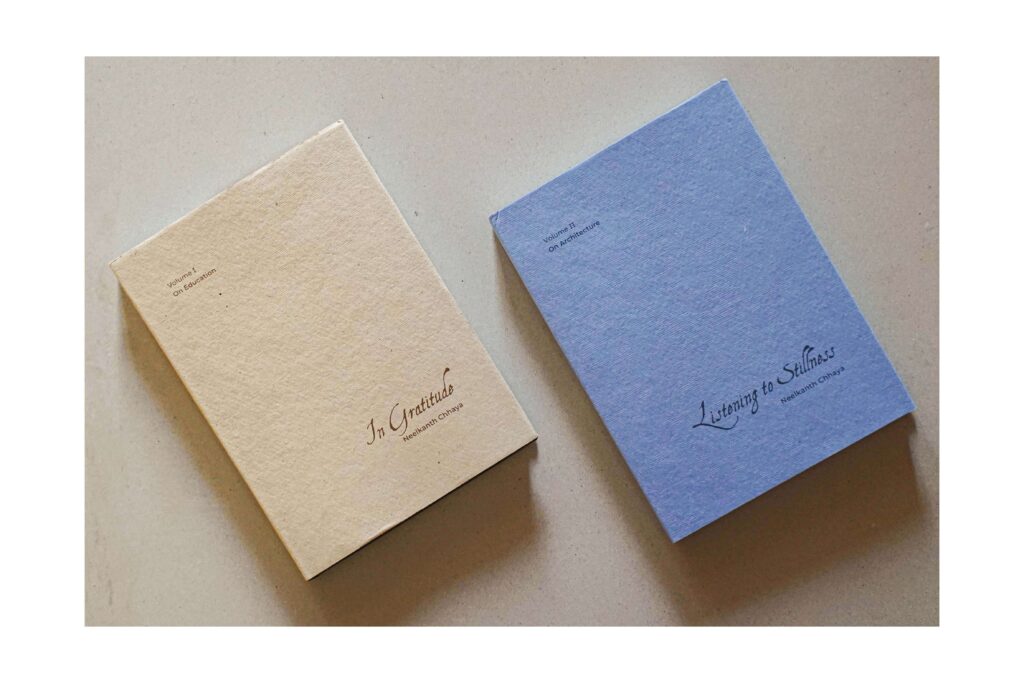
The process of making the book as shared by Kaushik.
“I would like to take a few minutes to talk about how the book was made possible. The process of making this book has been a labour of love for more than eighteen months by a hundred young minds, mostly students of architecture and young graduates who have directly worked to make this happen. The process of making this book was a transformative experience for each one of them. There are people who have burst out into tears at the end of each chapter, and there are also people who have silently blushed to look at the screen. With a certain liberty if I may add, there are also people who have worked on the book for a long, started imitating Prof. Chhaya scratching his head and saying, ‘Maybe, we can do it’ with shrugging shoulders. Through all of this, the students became one with Prof. Chhaya, imbibing his words.
This has also happened by so many people who had to forgo their own birthday celebrations, wedding anniversaries, and funerals and prioritise this book over their personal and professional commitments. People who transcribed a video over a month ended up with their laptop being crashed. But they did not give up. They did it all over again with great persistence. People have had many sleepless nights, especially for the last three months. They have worked from all kinds of spaces that one can imagine. From boarding gates of airports to cabs to trains to kitchens, to anywhere that they found some space and time to work on this. This eventually made people quote from the book in their everyday conversations that they have with people. This helped with conflict resolution. They became more patient and more sensible to other beings. Everyone who has worked on it has taken back something from it, which has led to the ultimatum to what Prof. Chhaya mentions, the tuning of one’s ‘Inner Moral Compass’. What more could one ask for?
Though the content is inseparable, it is separated for the readers’ ease into two volumes:
Volume 01 – In Gratitude-
On Education (preview)
Volume 02 – Listening to Stillness-
On Architecture (preview)
We would like to extend our gratitude to all the organising institutions, and offices who readily gave permission when asked for it. And more so to those who did not give permissions. This gave us the extra rigour to find more videos to add to the book. Many thanks to both of them. Our regards and gratitude to all the transcribers, translators, proofreaders and the board of editors, who have gone through the document multiple times. They have ensured that the entire content is error free to their maximum capacity, that is possible in the given time. A trained eye could still find errors in it. If so please do let us know, we will incorporate it in our next edition. We are indebted for all the people who wrote the Forewords, especially in very short notice. And grateful to the supporters who helped in publishing at the right time and who want to remain anonymous.
Now the question is, ‘Why this book? Where did the idea originate from?’ To be really frank, we don’t remember. The intention is to make this book to reach a student in some remote village, in some part of the world, who has the thirst of wisdom, to learn more. This would be anyone, not necessarily a student of architecture. This book would be a conversation starter on the pedagogy and the practice of architecture. This intention is always there. And it all came together by the collective energy of so many people. We have also initiated a book donation drive with the same intention.
Now, may I request Prof. RJ Shah, Mr. Karthikeya Sarabhai, Ms. Anu Ben and Ar. Pradeep Makhejani to join Prof. Chhaya and Sivaraj on stage to release the book”.
All the volunteers who worked in making the book and documentary were called upon stage and were felicitated with a copy signed by Prof. Chhaya. A few people who were always behind the scenes, Thiagarajan – the designer of the book, Jayashree C – the copy editor and Arunima Shankar support system were specially mentioned for their contribution, along with the entire team. Prof. Chhaya was then requested to address the gathering.
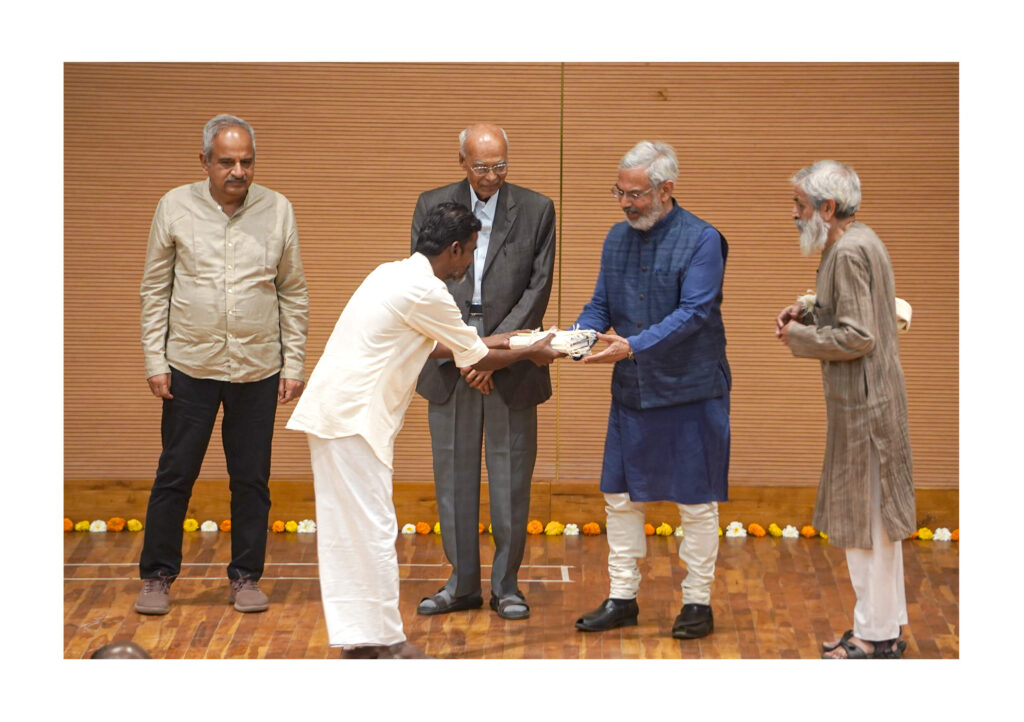
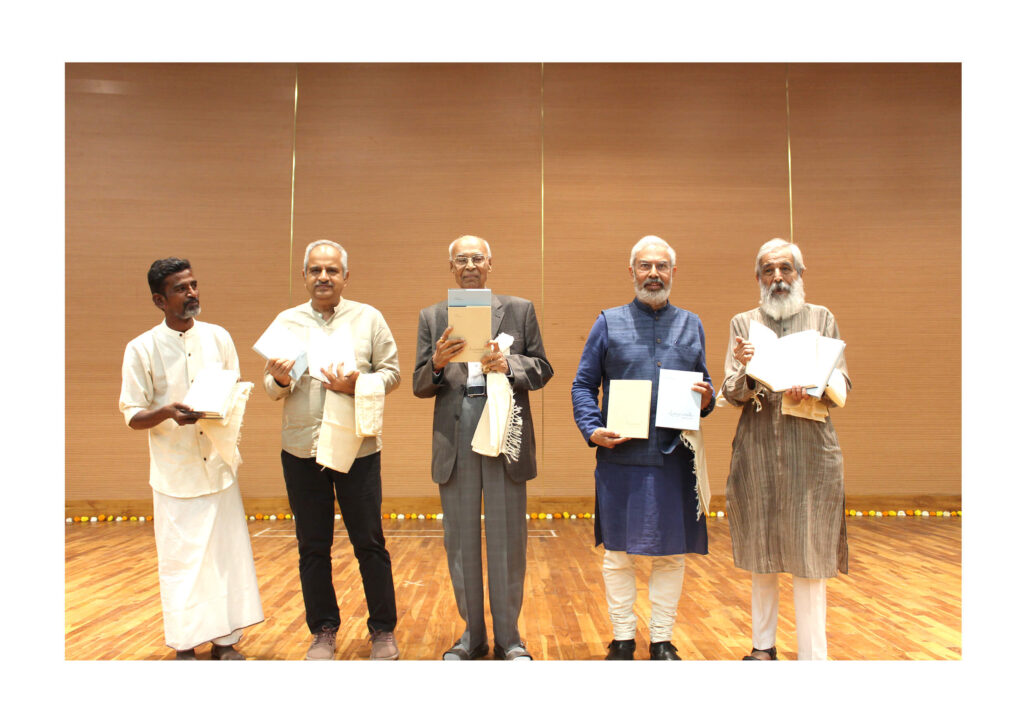
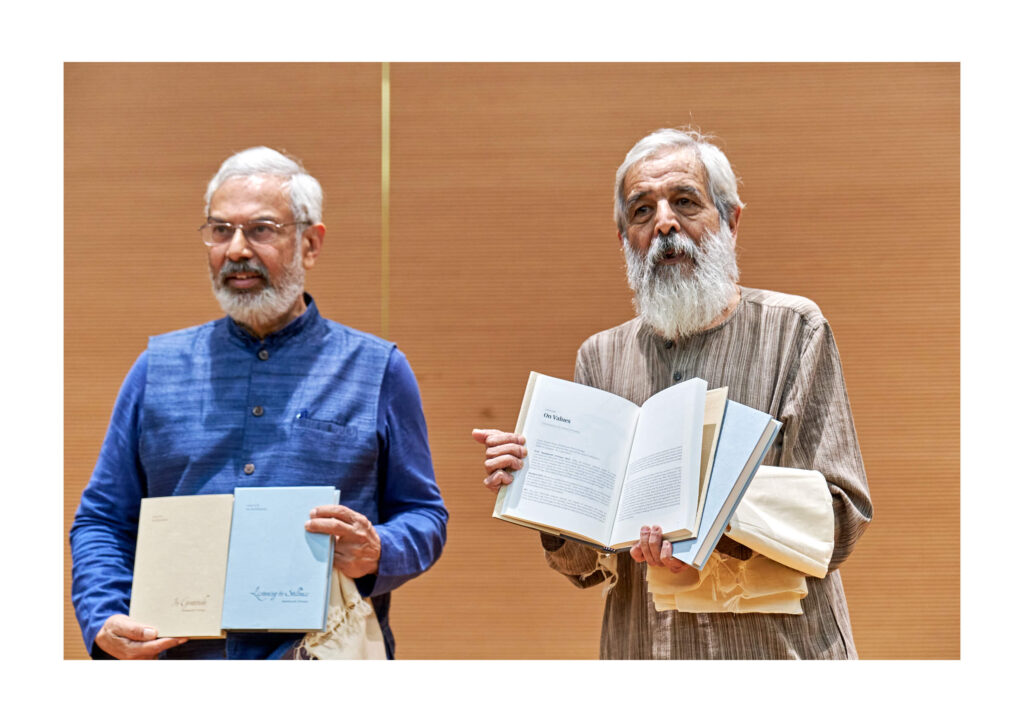
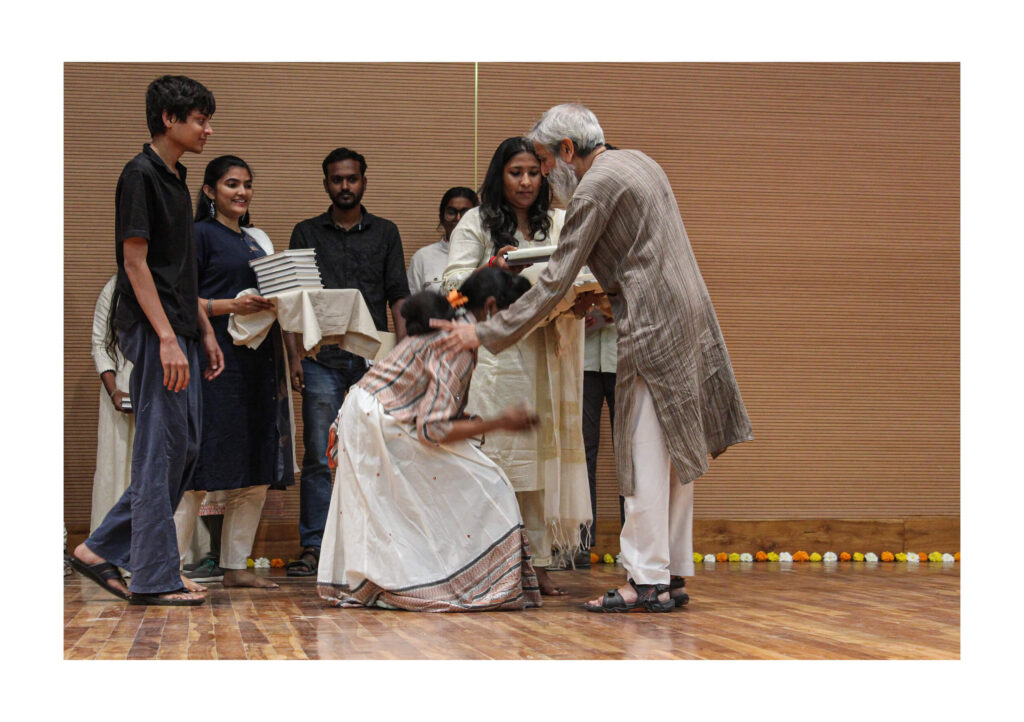
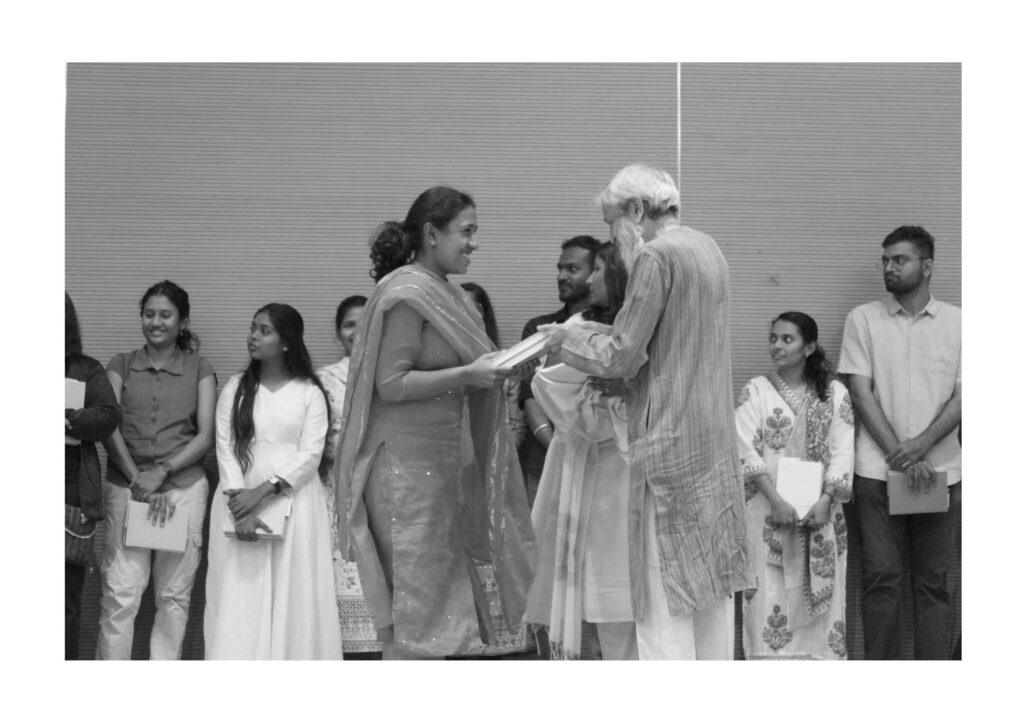
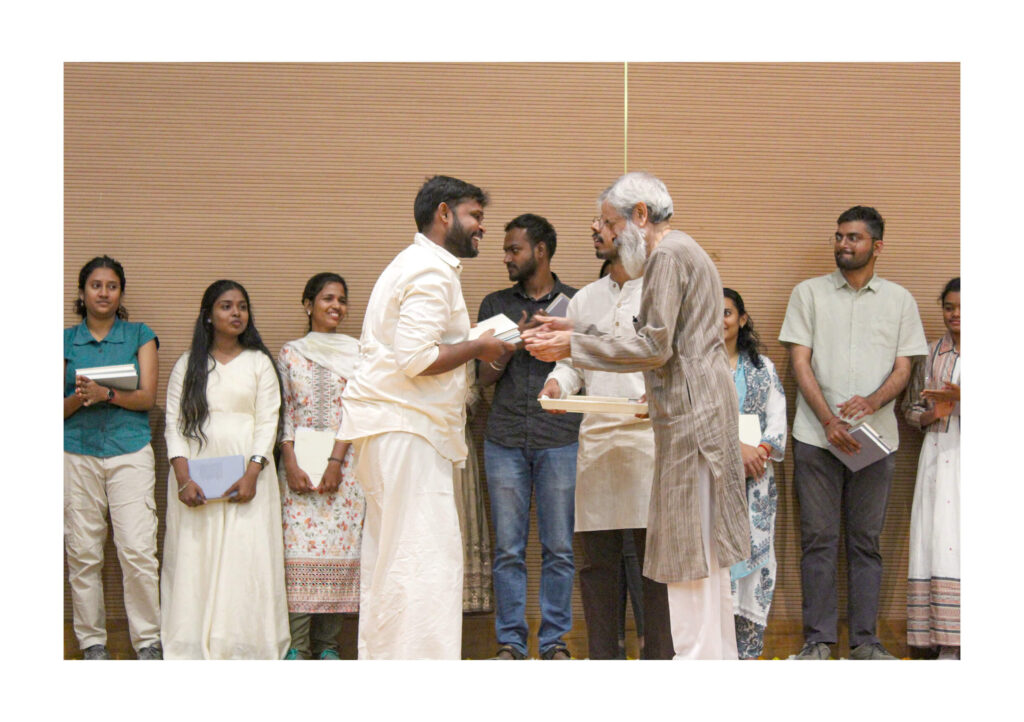
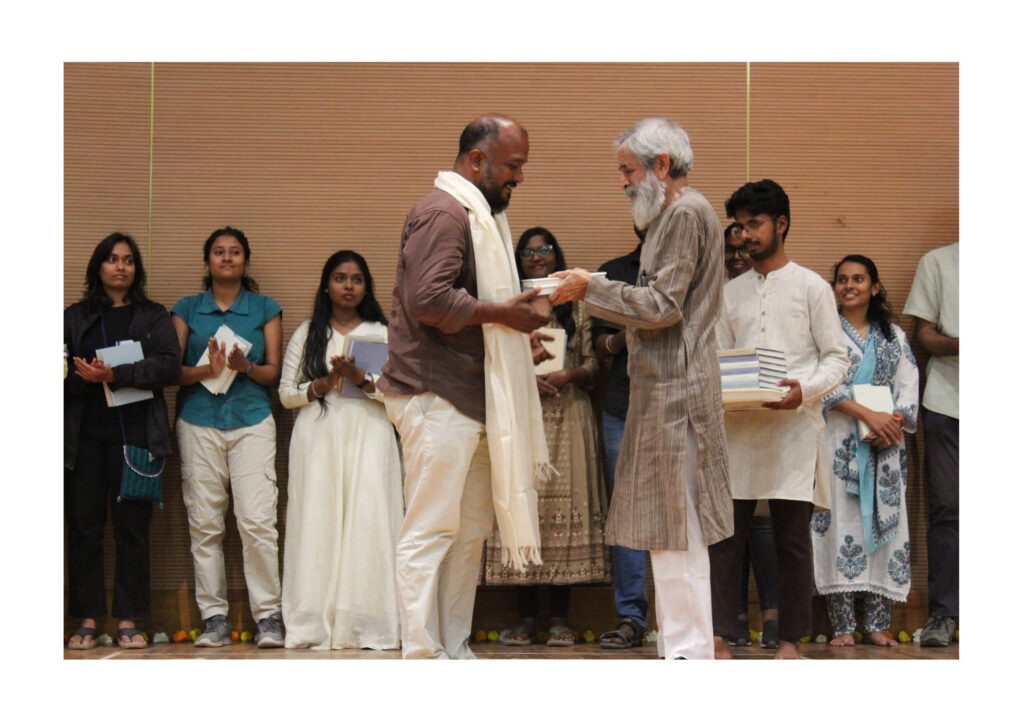
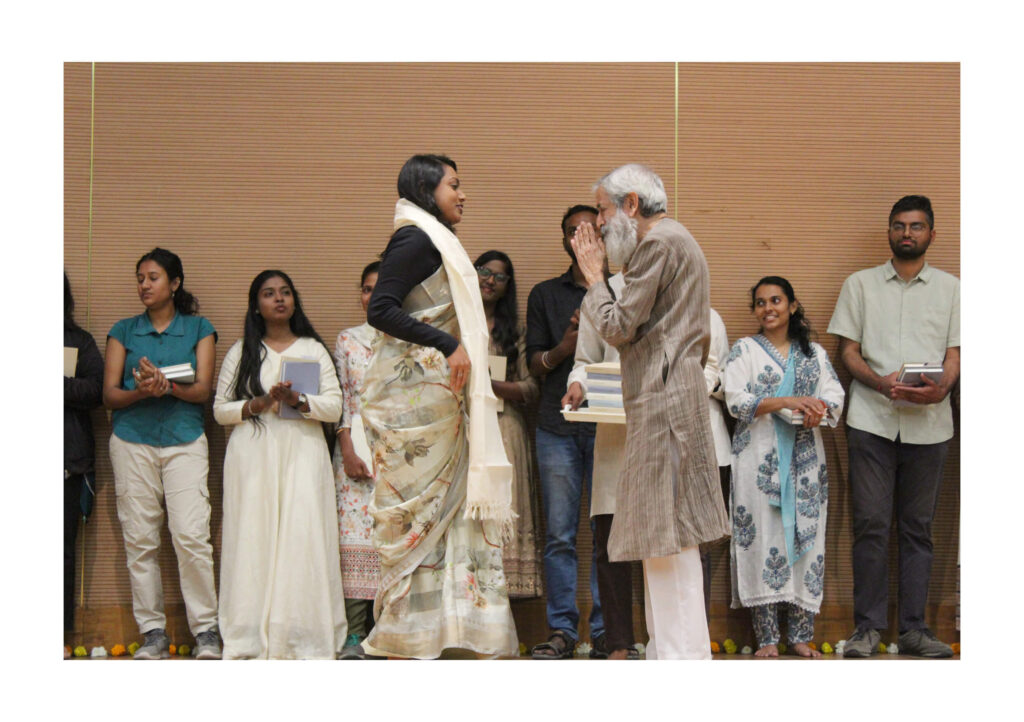
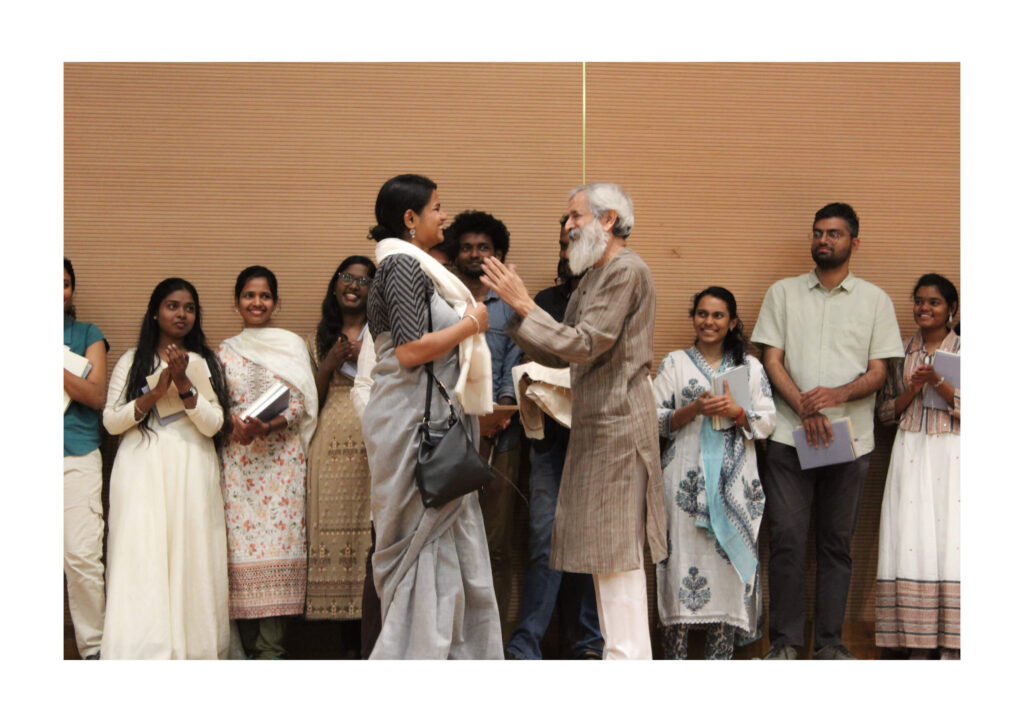
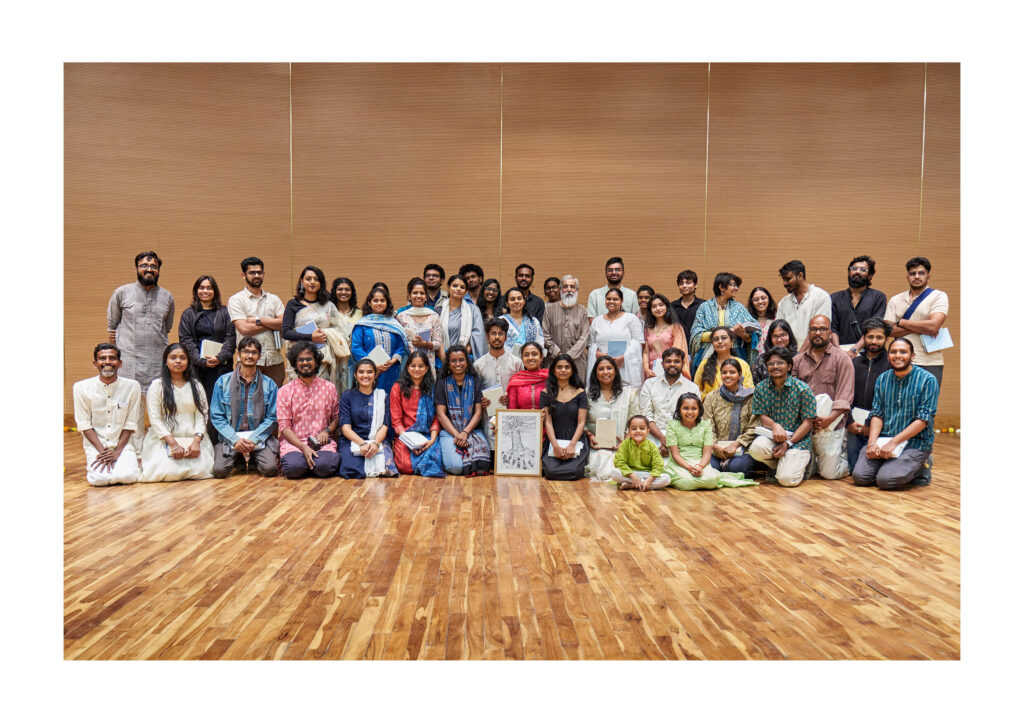
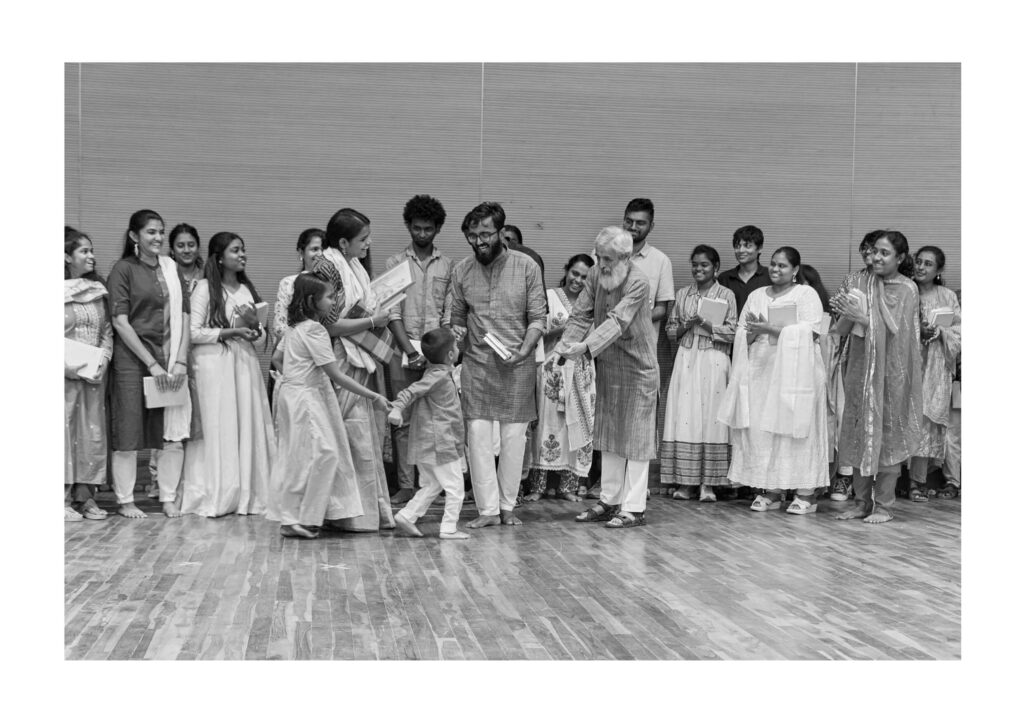
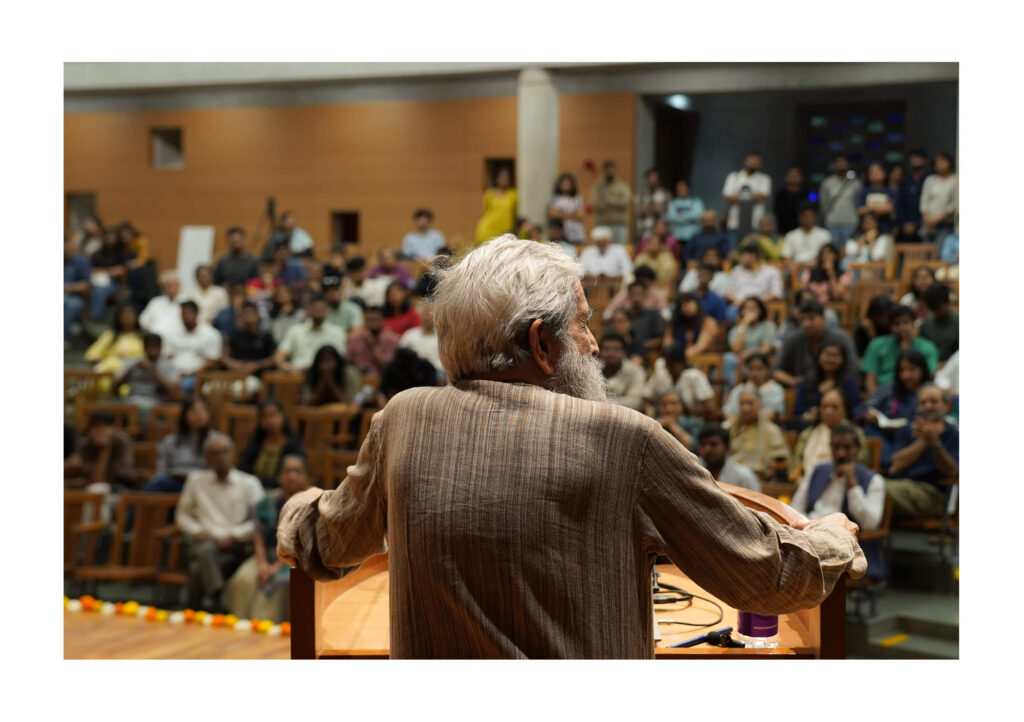
“Too much has already been said. I won’t take a lot of your time but I must say that we are really touched by what all these people have done. But also touched by the presence of all our friends here – friends, colleagues, teachers, students, everybody and it’s wonderful. And I think what it tells also is that there was a certain moment of Ahmedabad which we all lived through and it’s that moment of Ahmedabad. If I think of the time when architecture, design, dance all these were being talked about at the level of depth in Ahmedabad, painting too and literature. This is something that in Ahmedabad becoming a world-class city is becoming less deep. And I think this is the thing that we need to bring back. All that we learnt is from being in Ahmedabad. If we hadn’t been in Ahmedabad we would not have learnt the same things. And I think this is something which we really have to look at. Everybody who thought of us, starting from Vikram Sarabhai, Kasturibhai Lalbhai, up to the people who were my friends, were there. I think it is that spirit which needs to be taken forward by these people (pointing at people involved in the book). Maybe in Thiruvannamalai, maybe in the south, maybe no longer in Ahmedabad. Wherever it is, I think that would be the thing and I hope that this happens and becomes something that becomes a movement in which all of us join. Thank you very much”.
Kaka-Documentary Trailer
an attempt to showcase life of Prof. Chhaya’s as is.

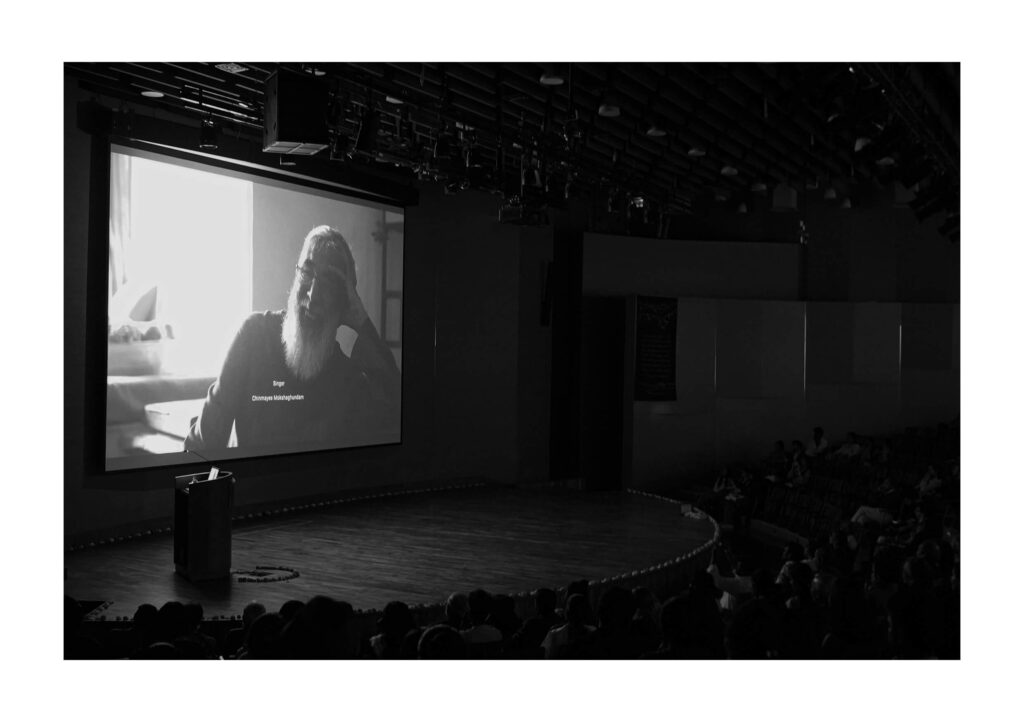
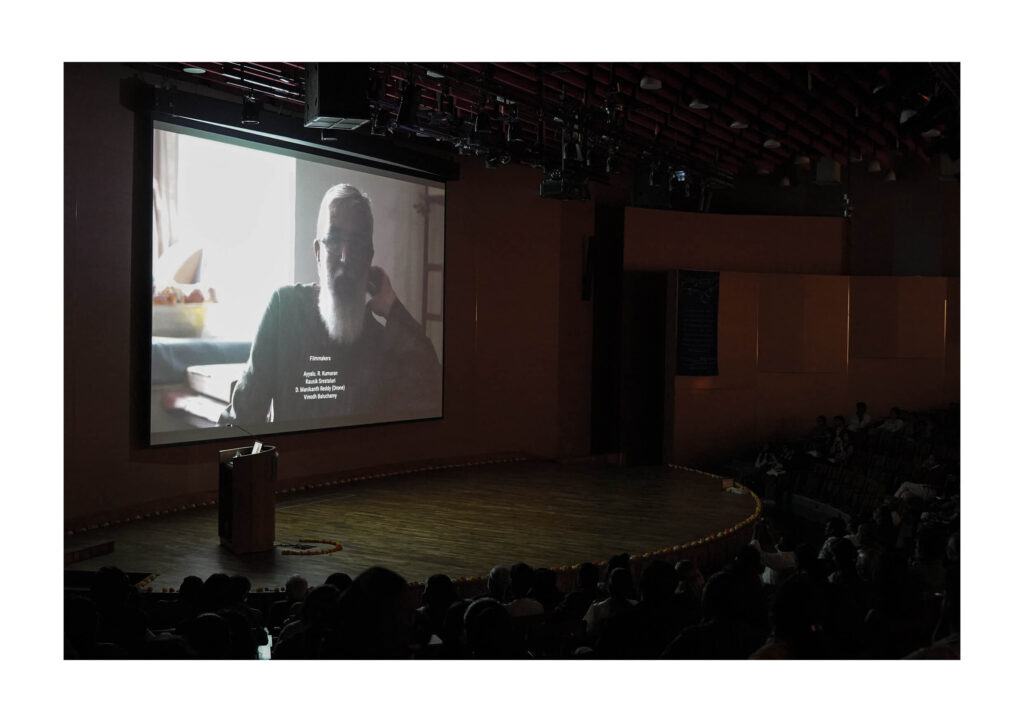

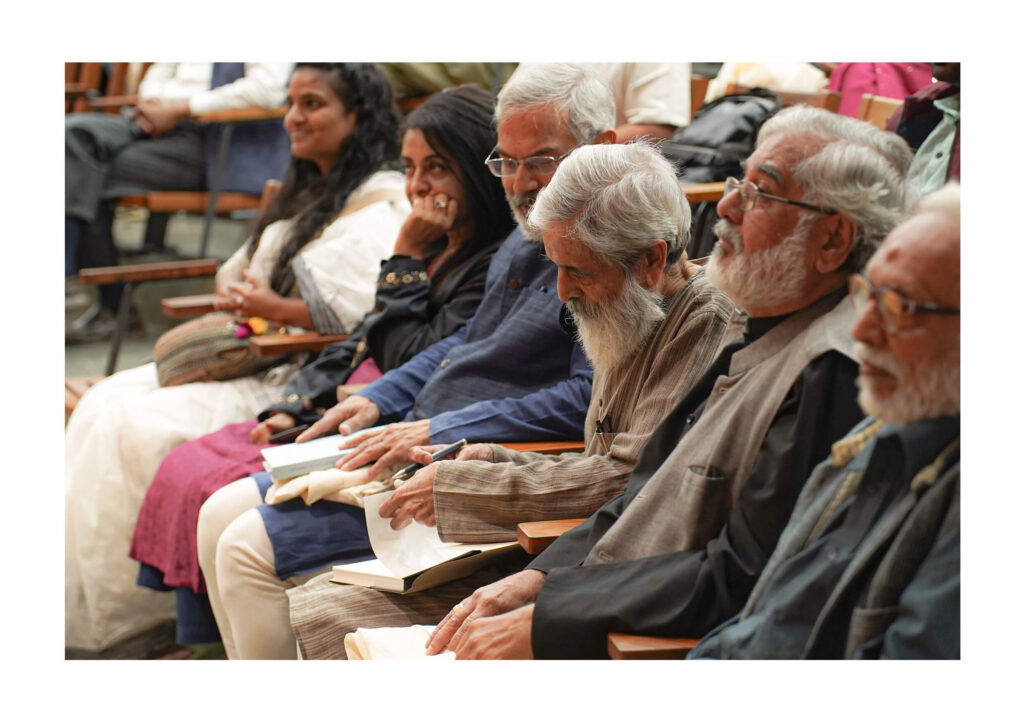

Kaushik thanked Prof. Chhaya for his address and continued “The documentary ‘Kaka’ is in progress and the trailer screened is only a glimpse of what has been shot. We want to continue shooting at least for the next couple of years to make it holistic.
The documentary also has been made possible by so many people, especially the editors who have gone through the videos over and over again so many times. One of the editors woke up in the middle of the night fully convinced that he already knew and had seen all the people in the documentary. He had become so used to seeing those faces over and over and again, that he started feeling a deep sense of association with all of them. We express our deep gratitude to the entire team – cinematographers and editors, who have made this documentary possible. As Prof Chhaya says, “The truth is something which we can never tell. And so, I make a story, you make a story and it’s wonderful. That’s how we proceed. Storytellers should never be afraid of not being true’. This is our story of Prof. Chhaya”.
This was followed by the screening of the documentary. After the screening, as a concluding celebratory note, Ar. Mirra Kannan was requested to lead the chorus of the song ‘Taal Mile Nadi ke Jal Mein’.
Expressions of Gratitude
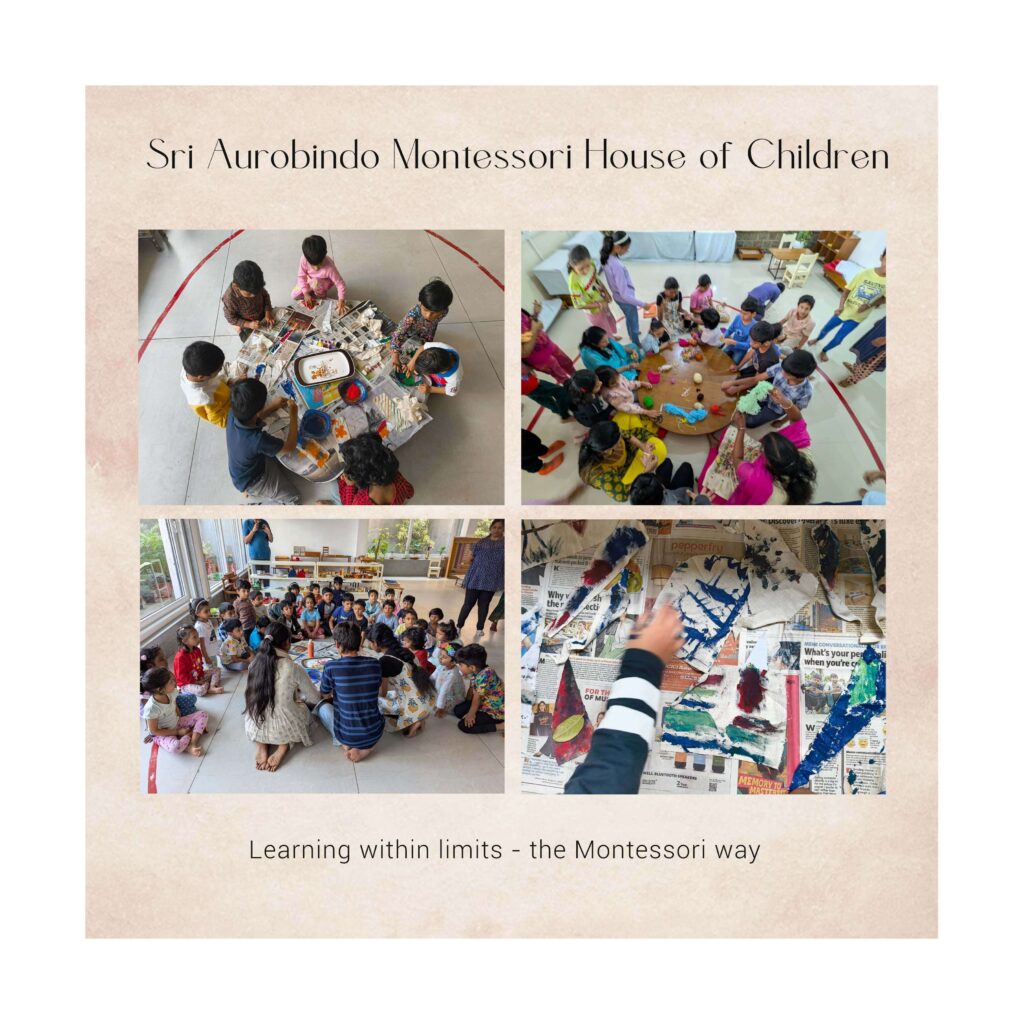

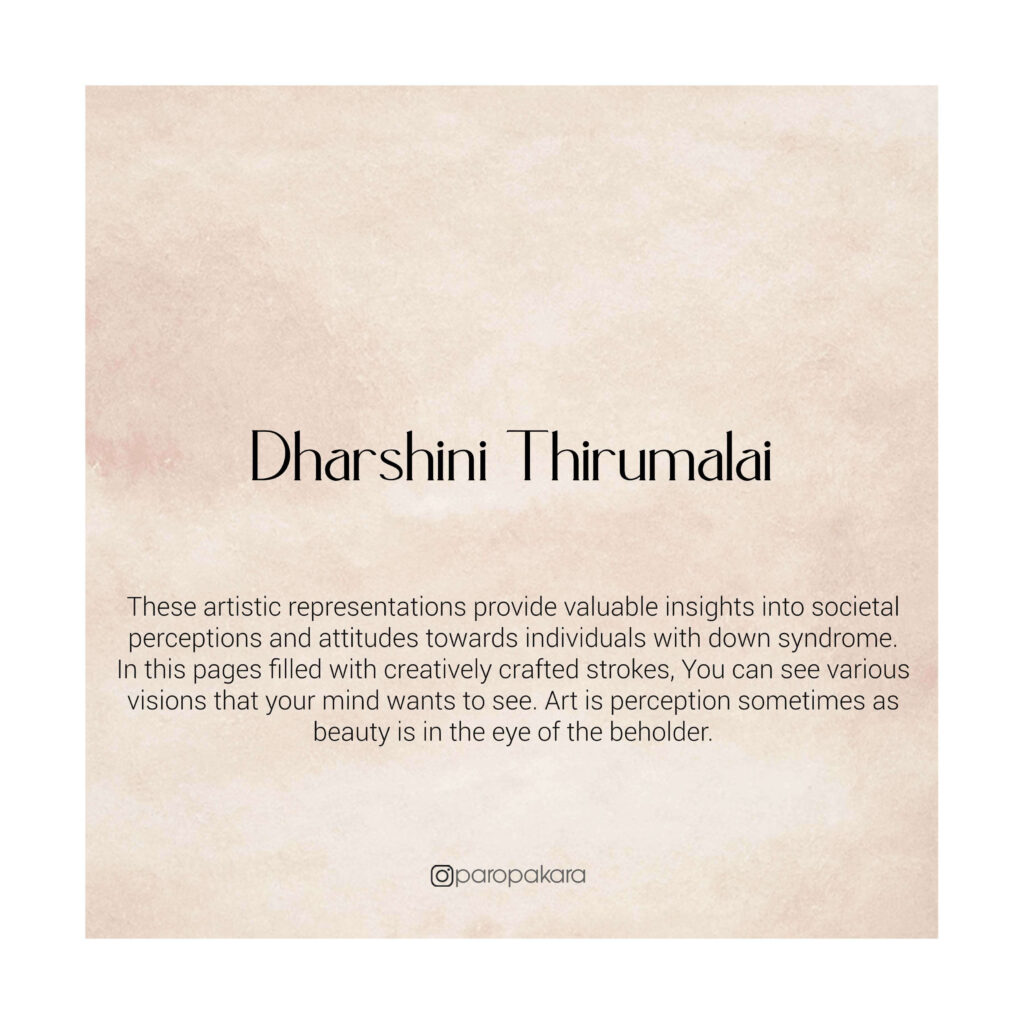

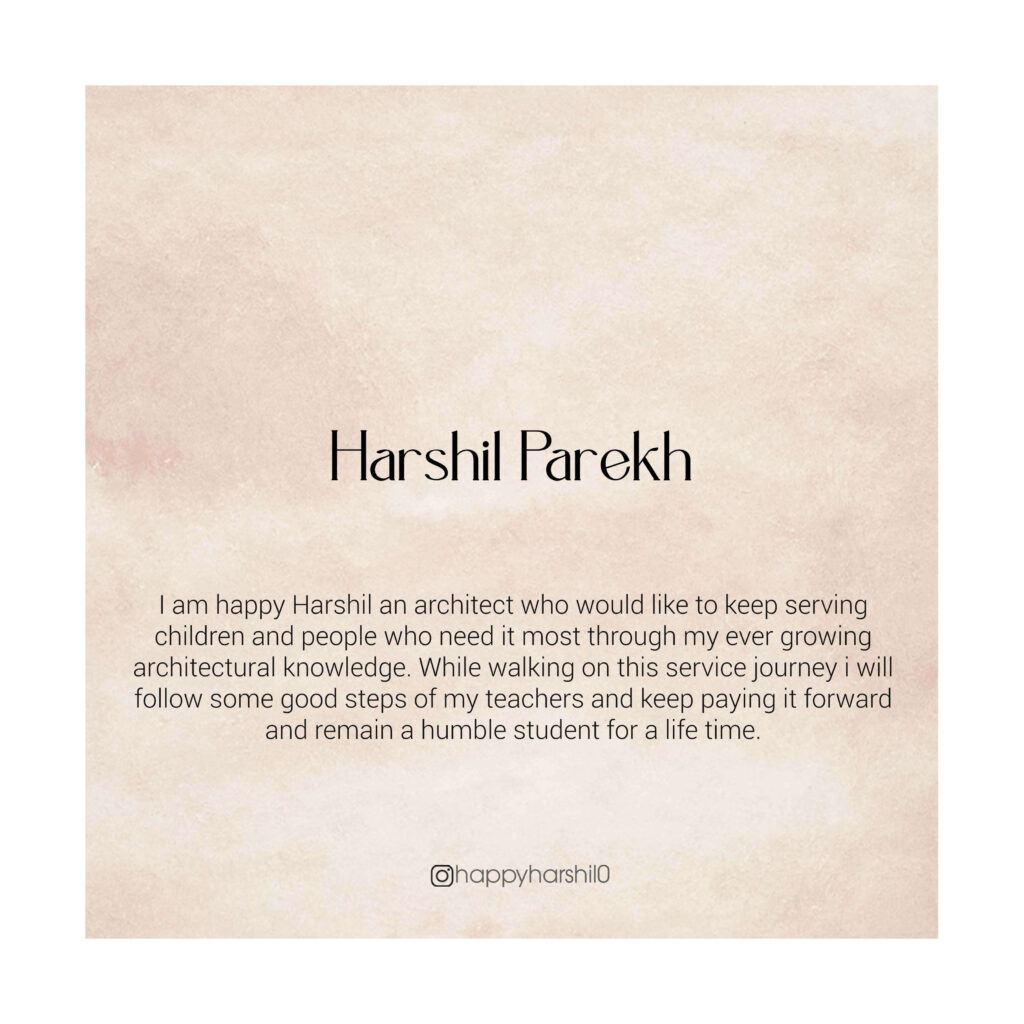

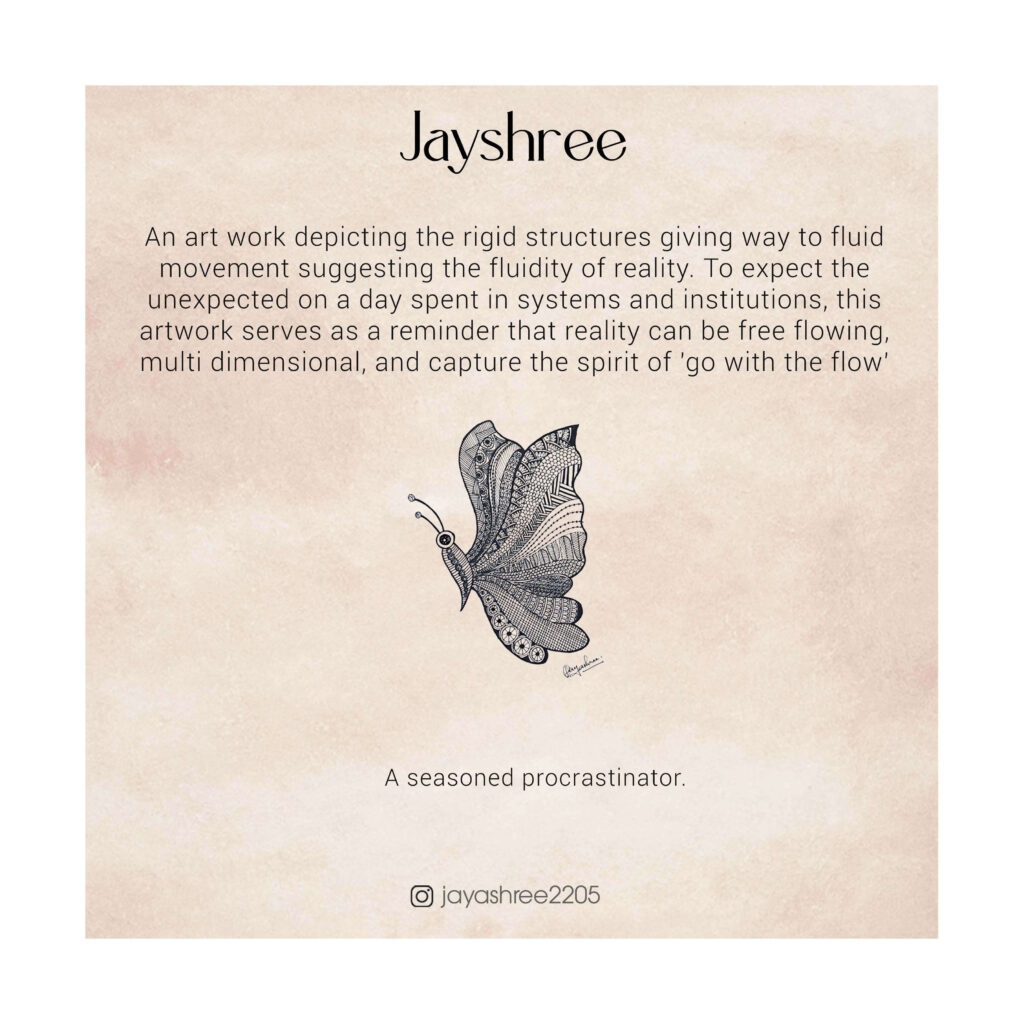
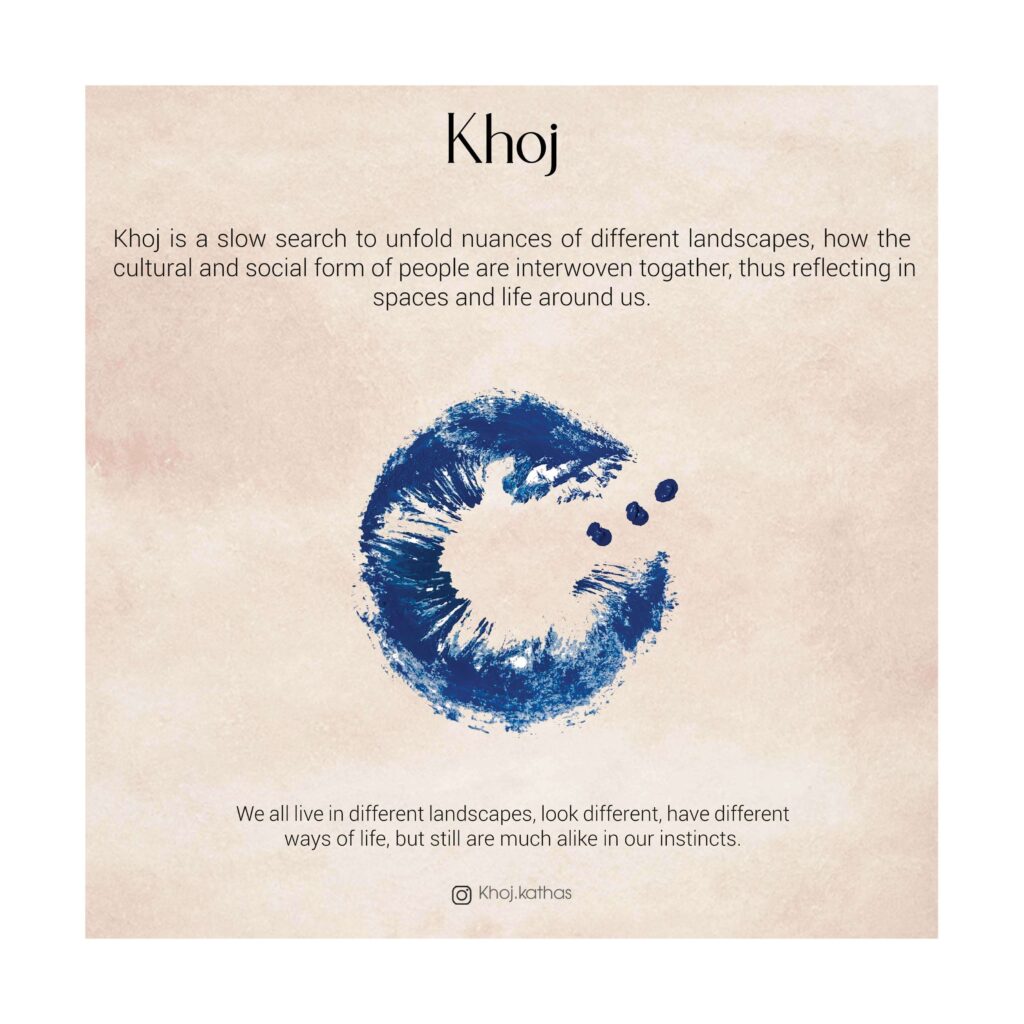

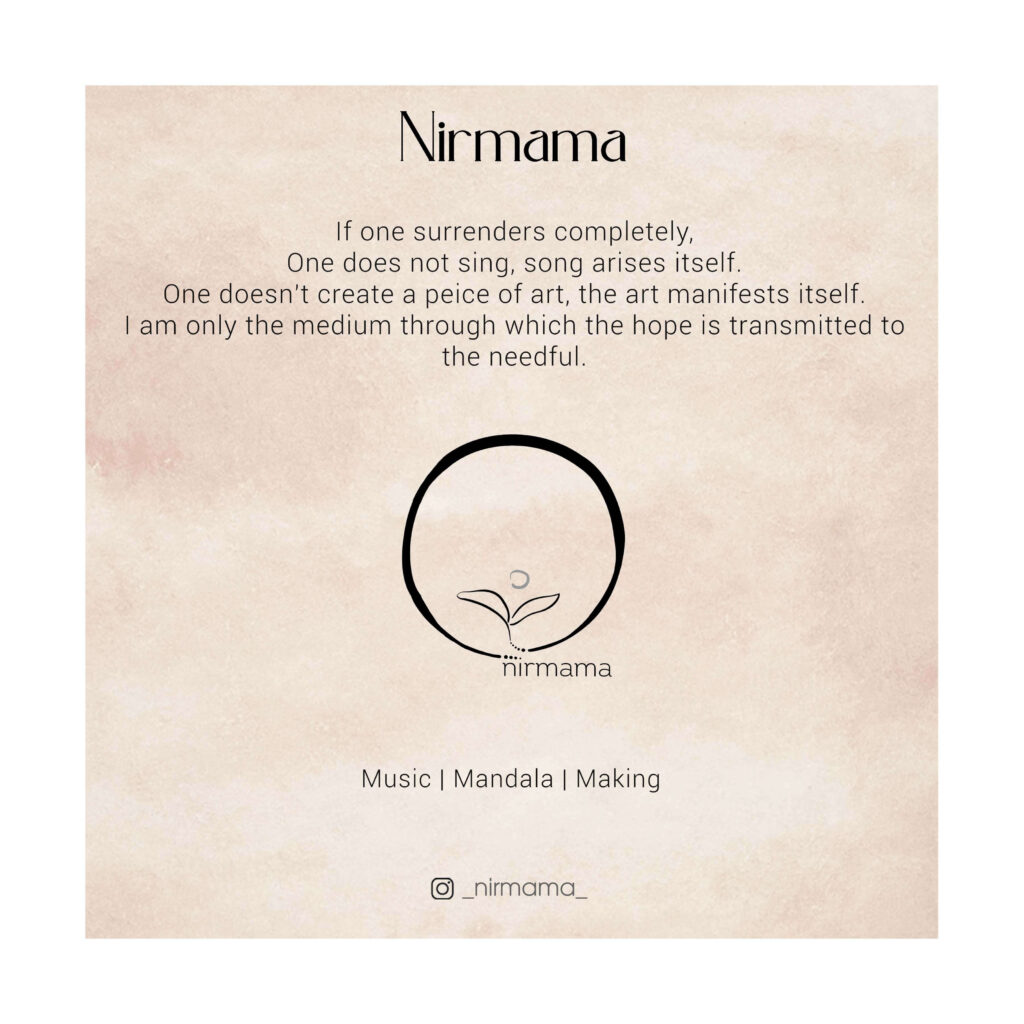
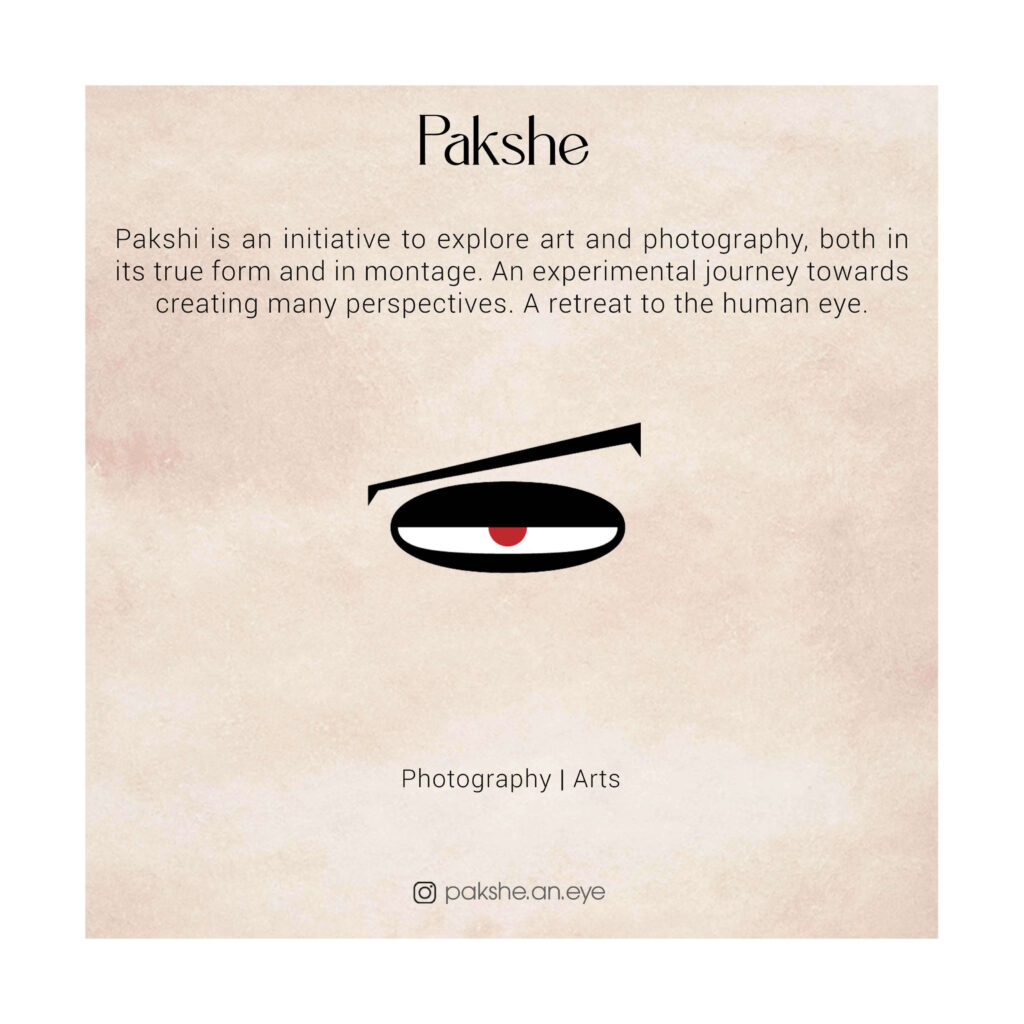
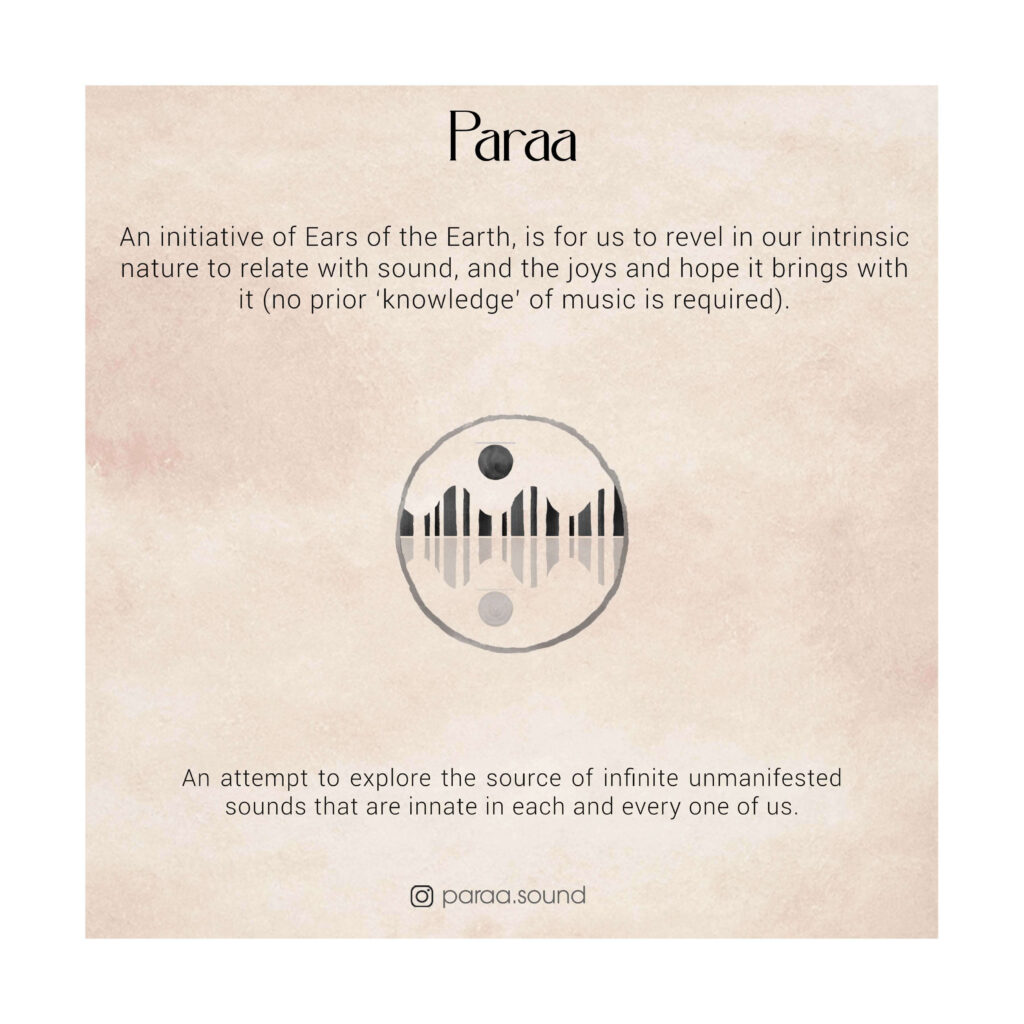
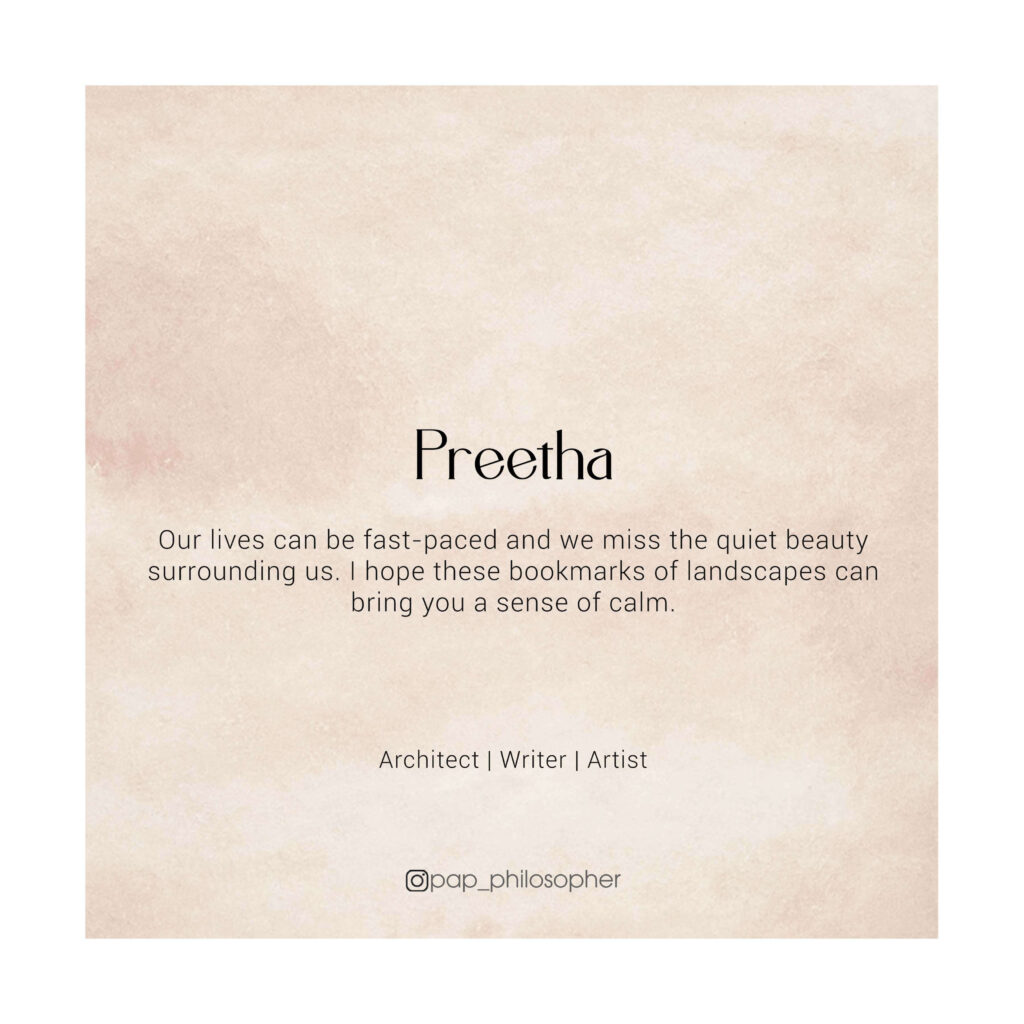
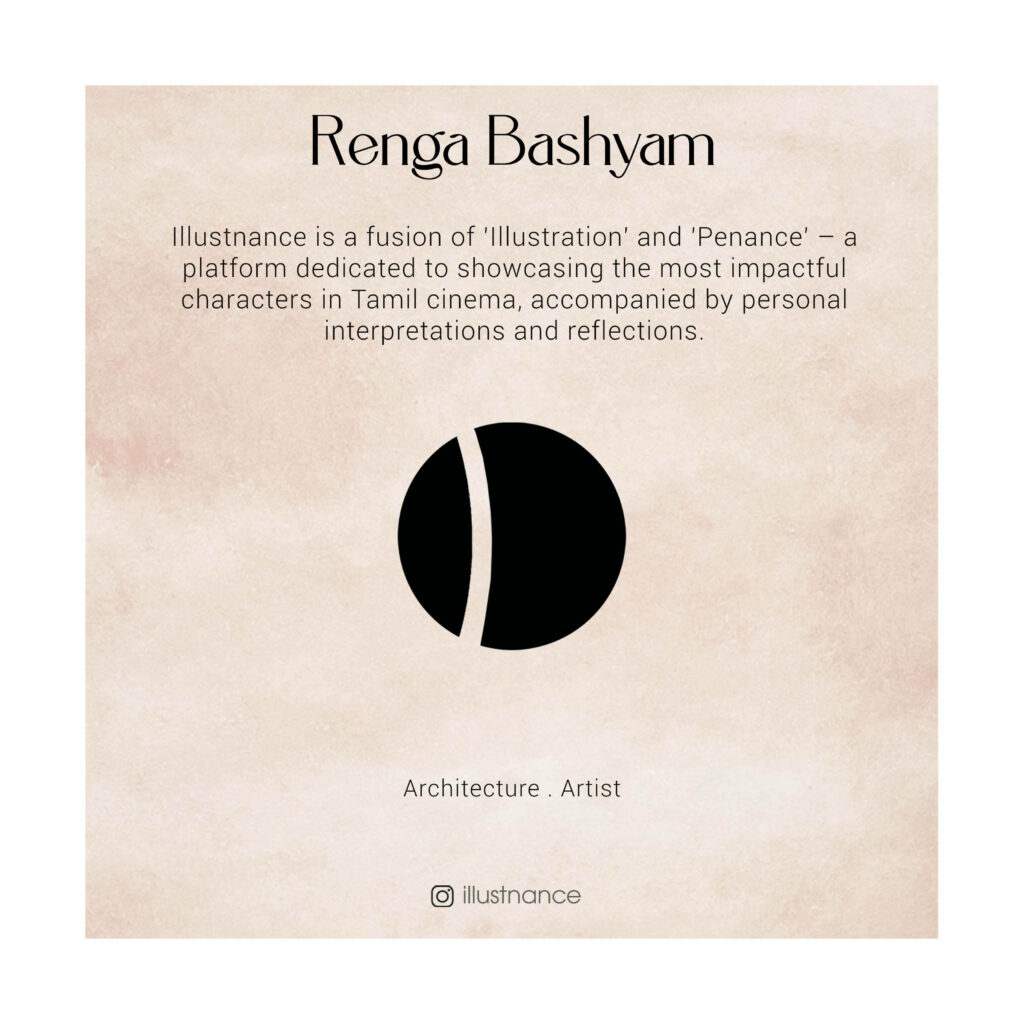

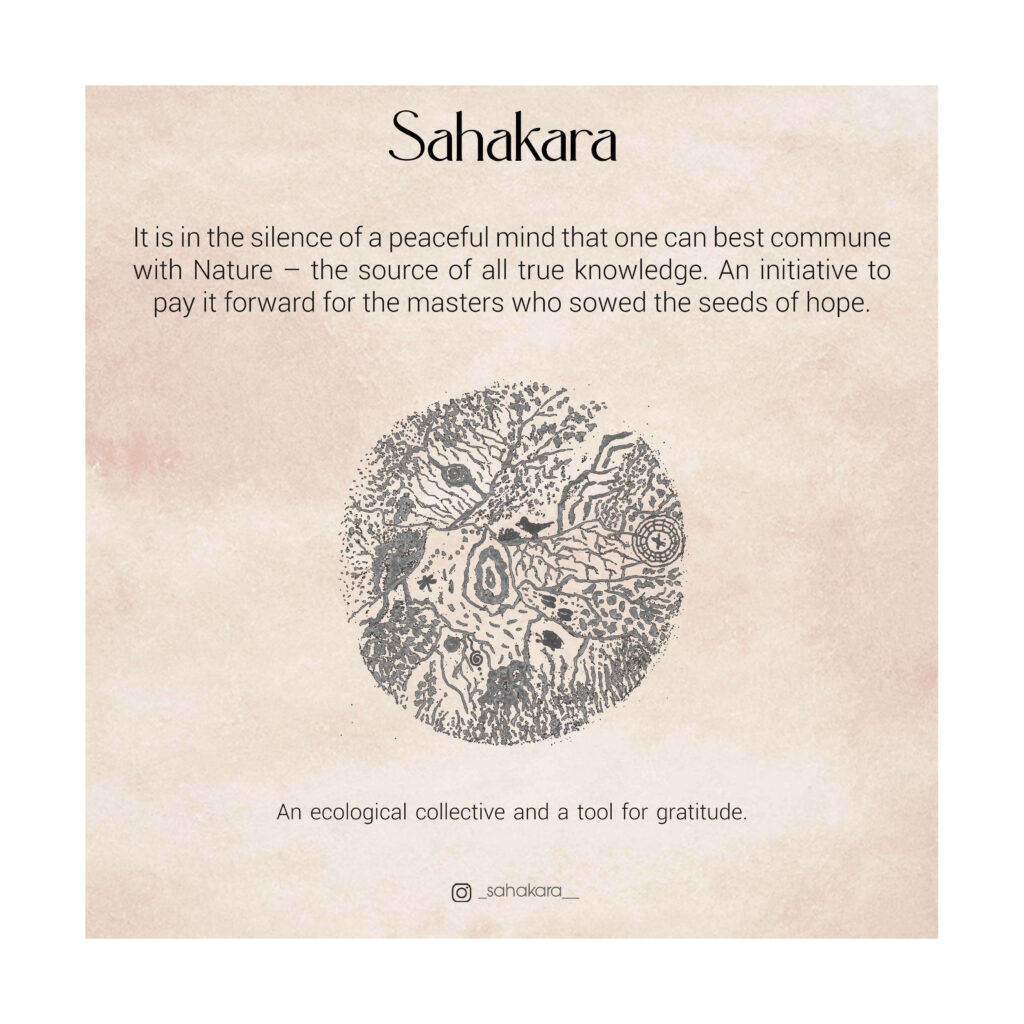
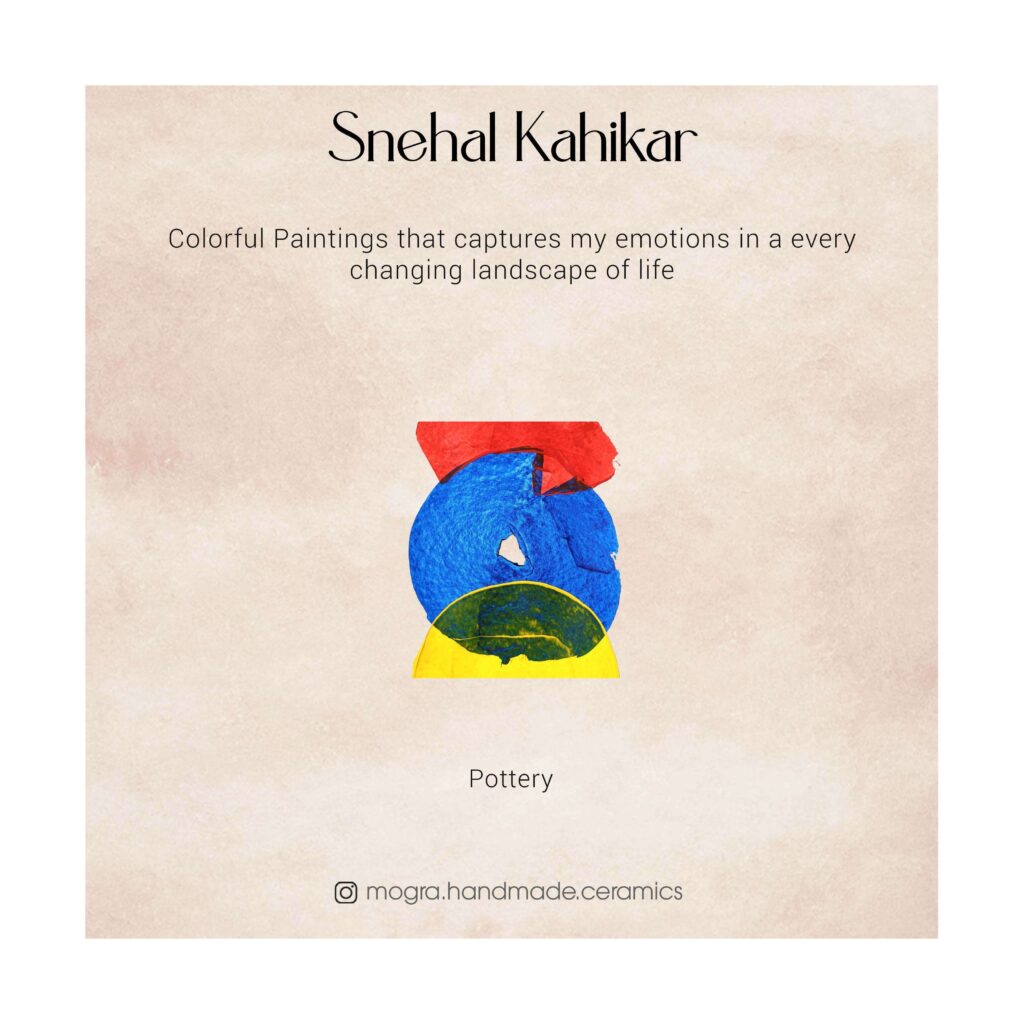

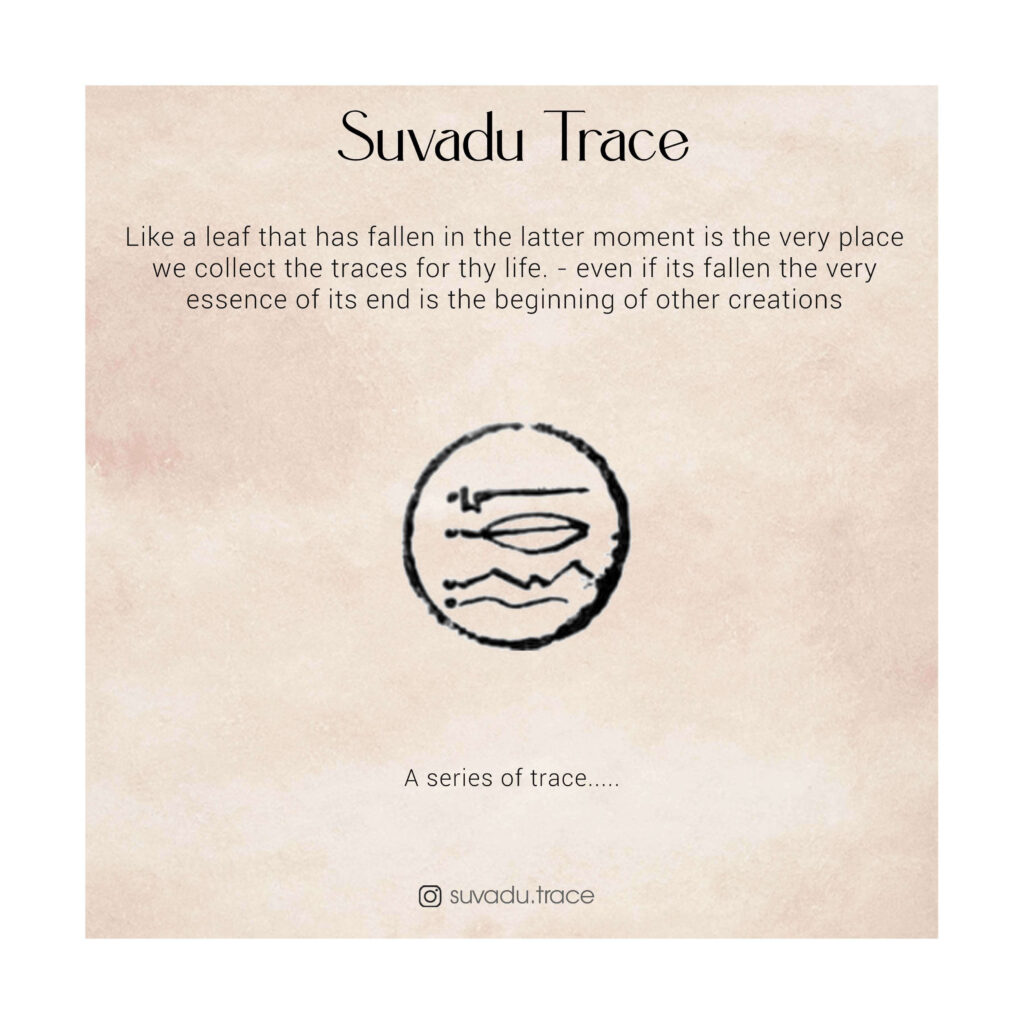
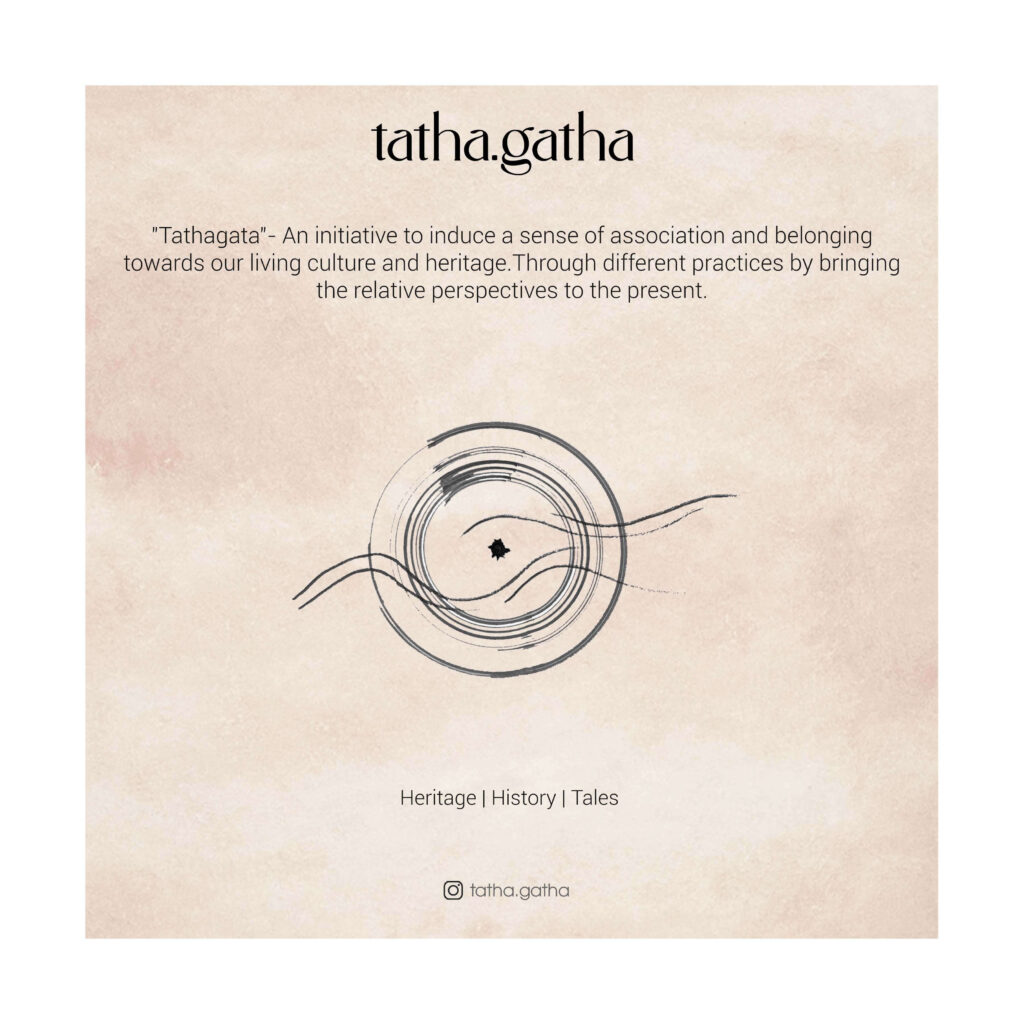
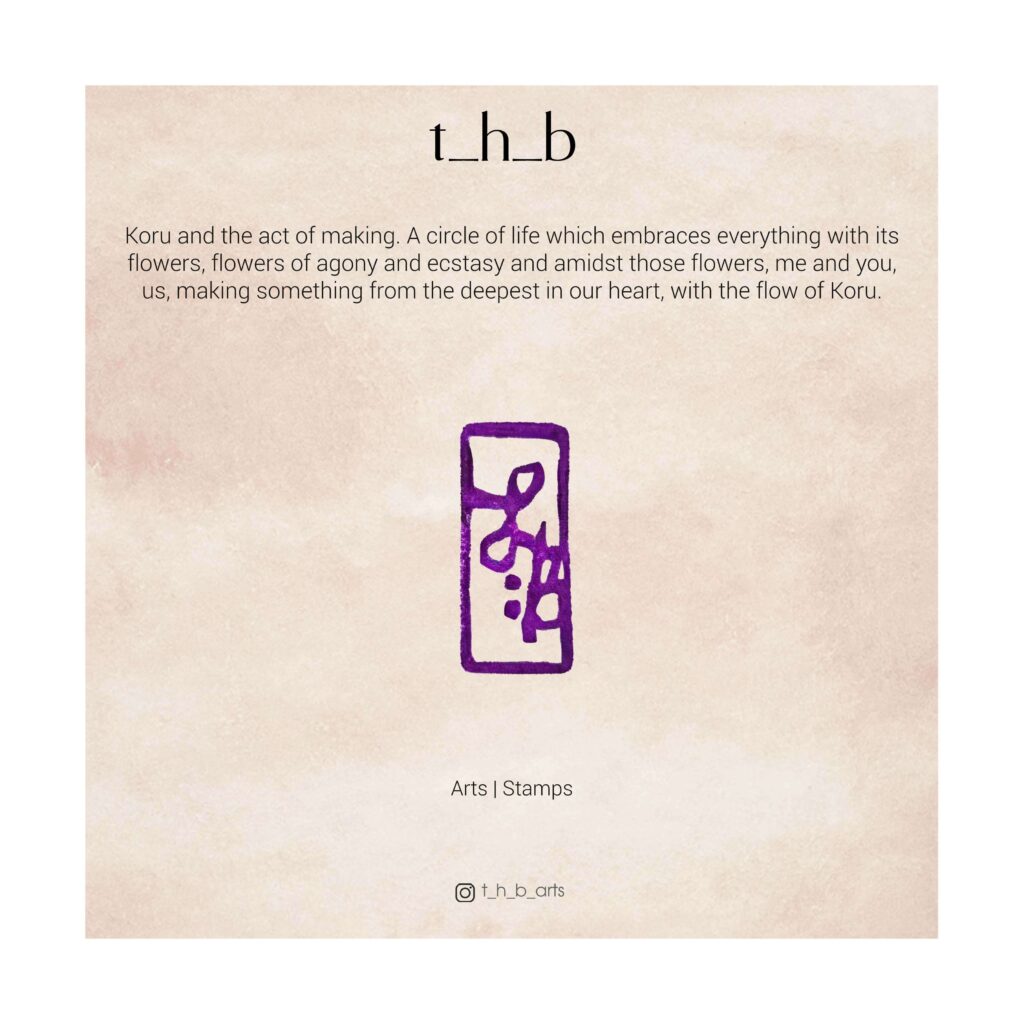



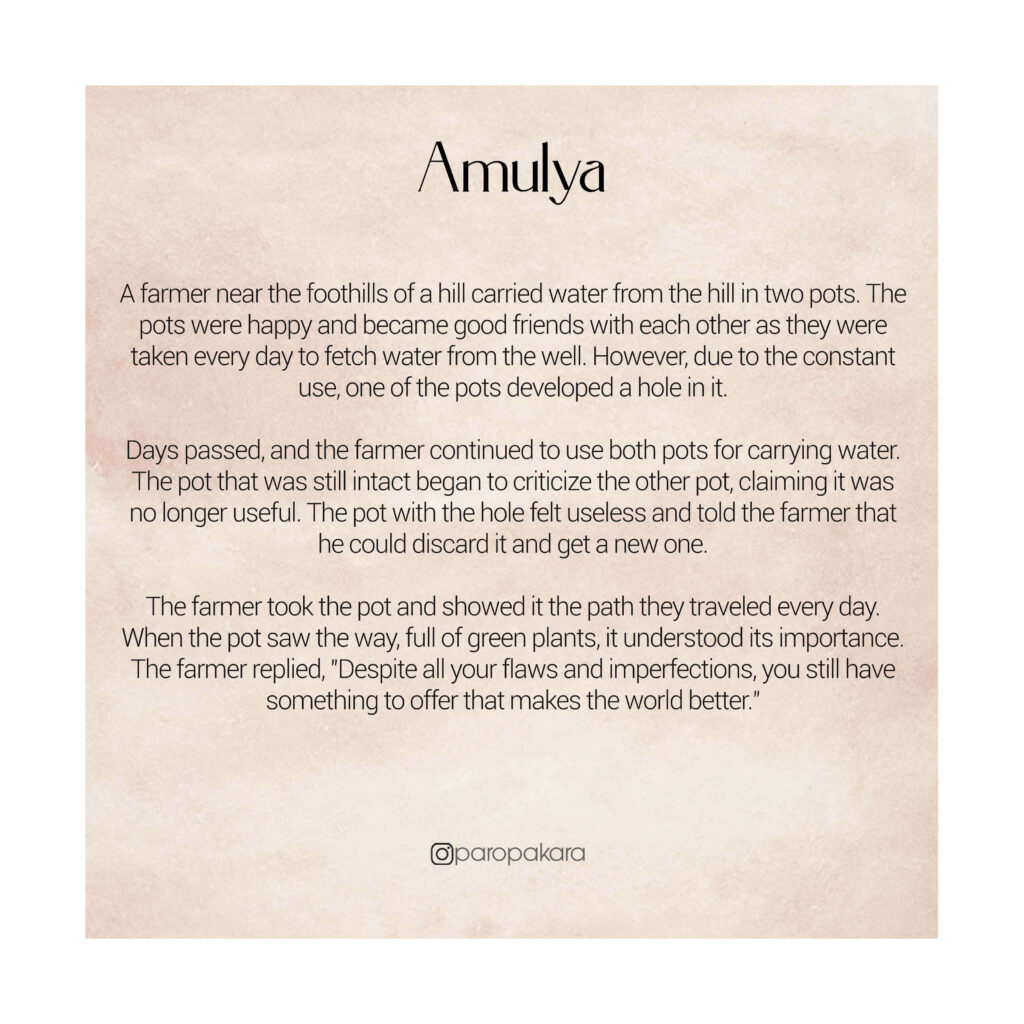
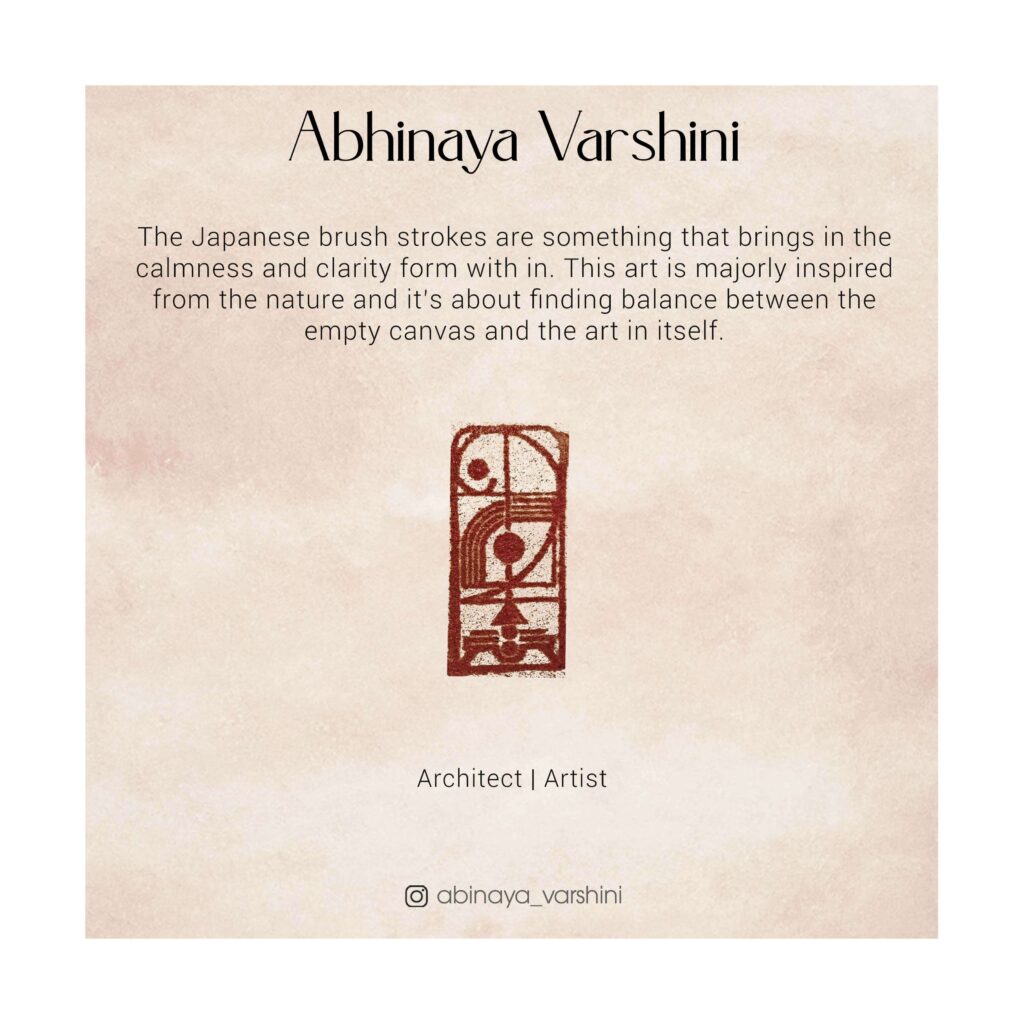

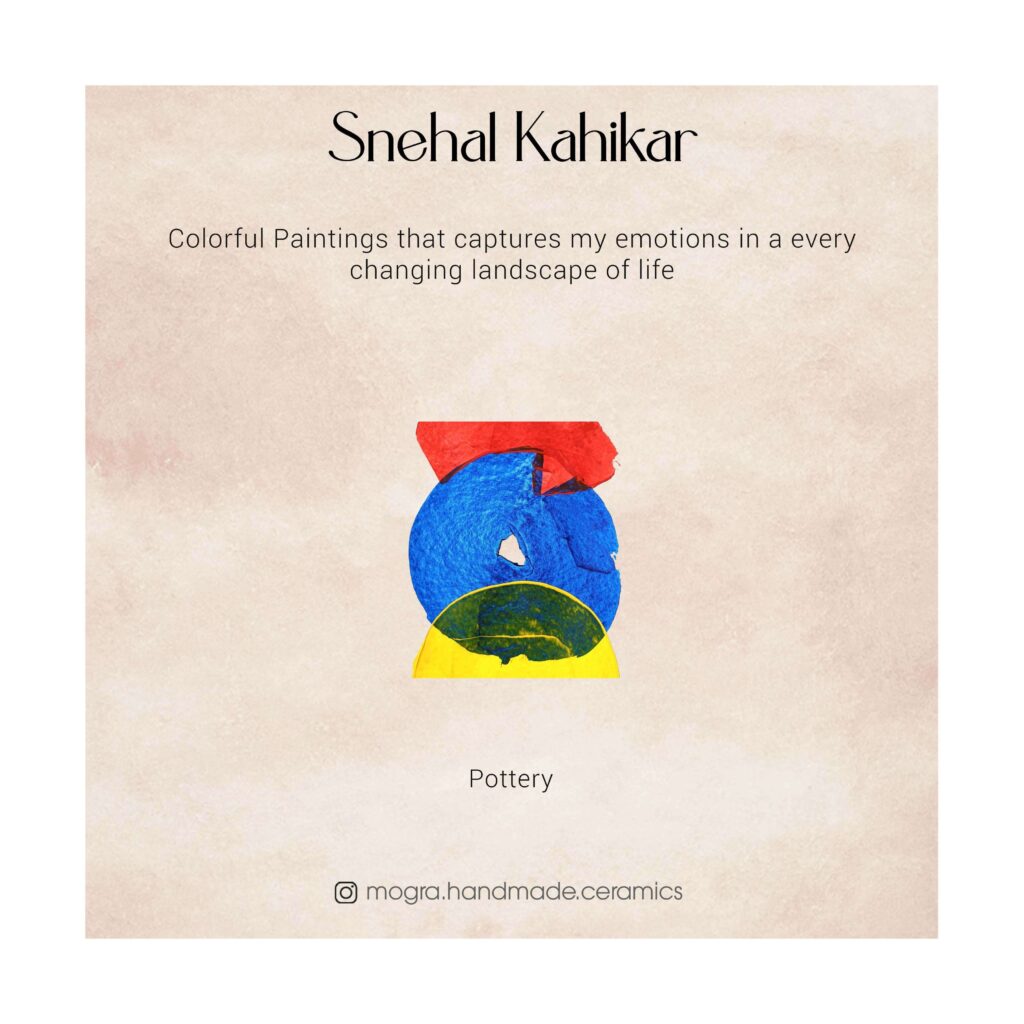
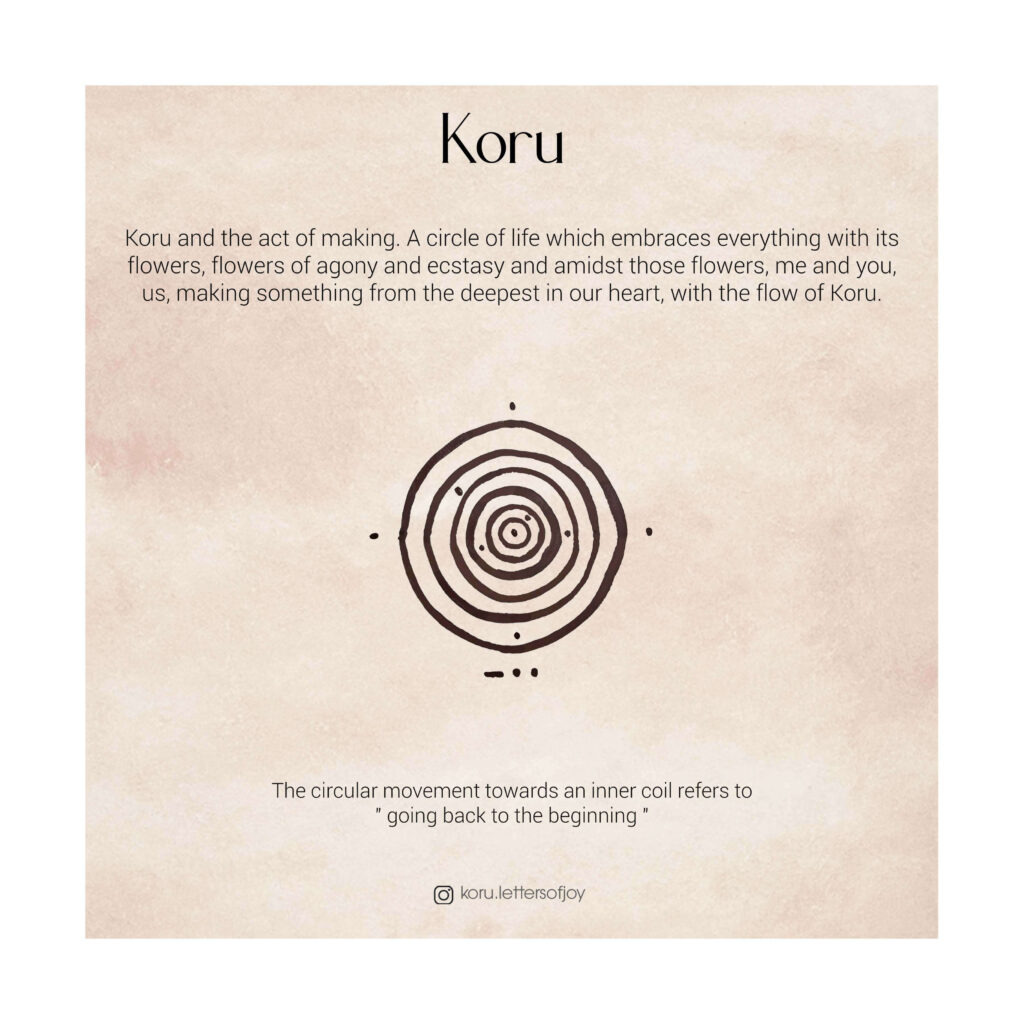
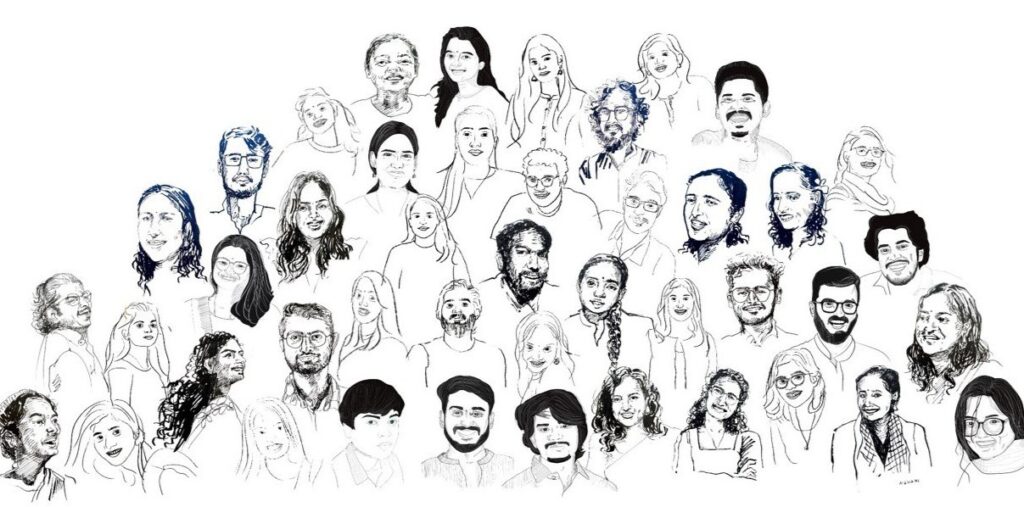
‘An Architecture of Gratitude’, a name that Prof. Chhaya suggested, is an open call for expressions of nonviolent architecture. We received a few entries across India, from different institutions.
We have also received other expressions of gratitude from many students and young people, who expressed in their own ways through their handmade creations of arts and crafts. There were about twenty people who exhibited their creations, as a gesture of paying forward to all the people who attended the event.
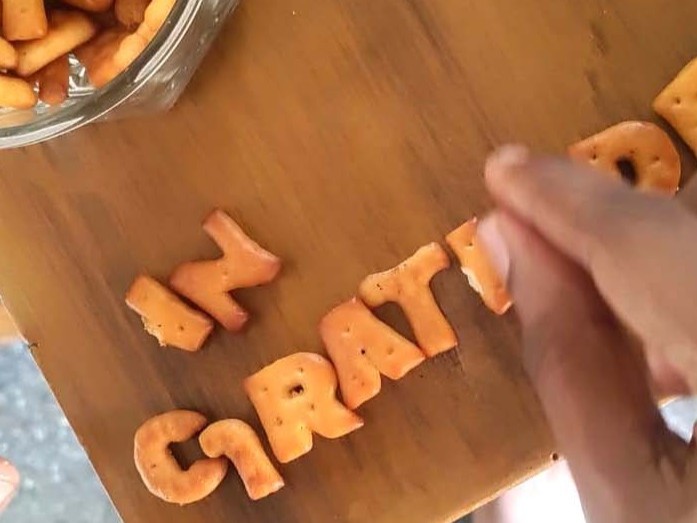
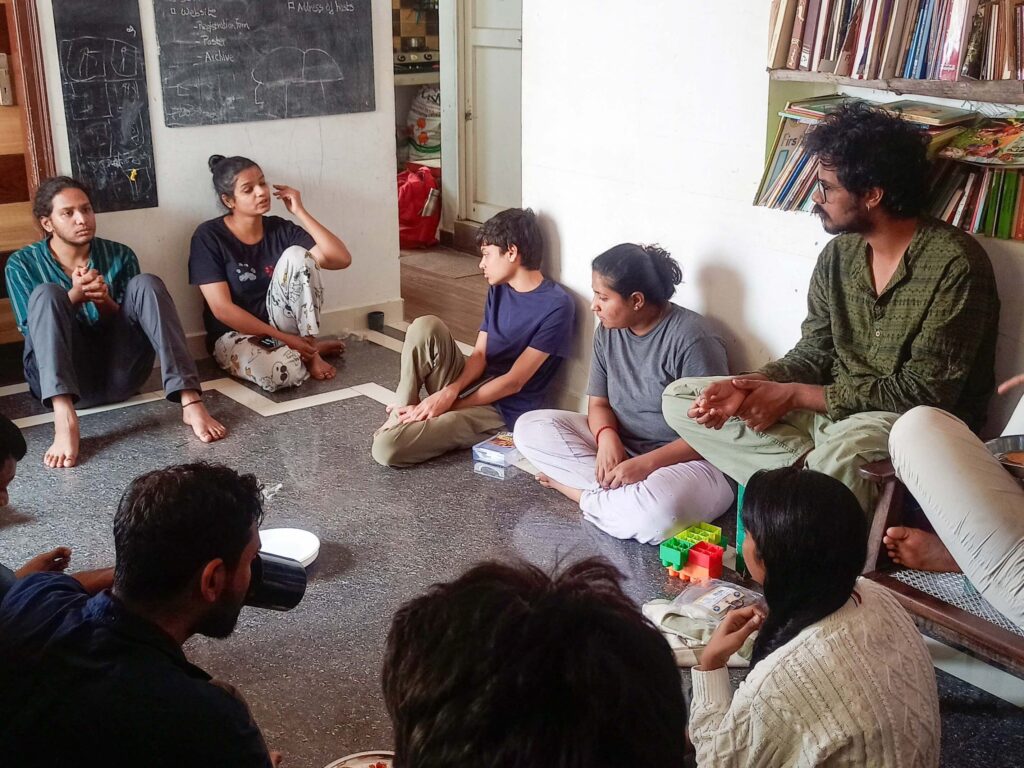
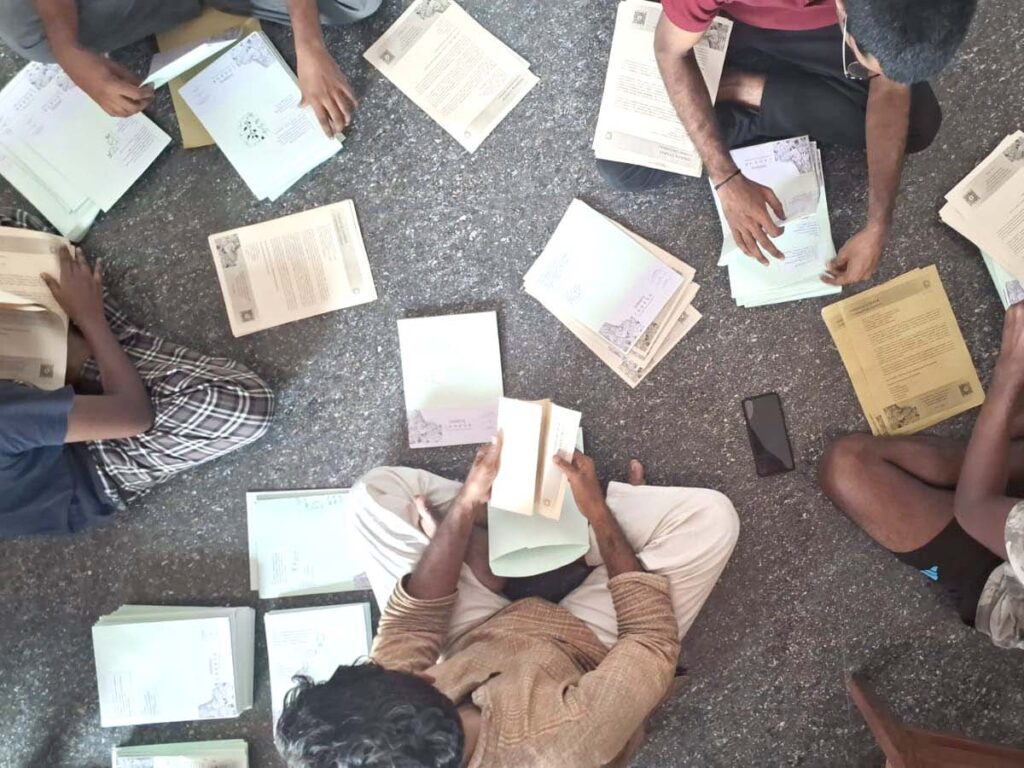
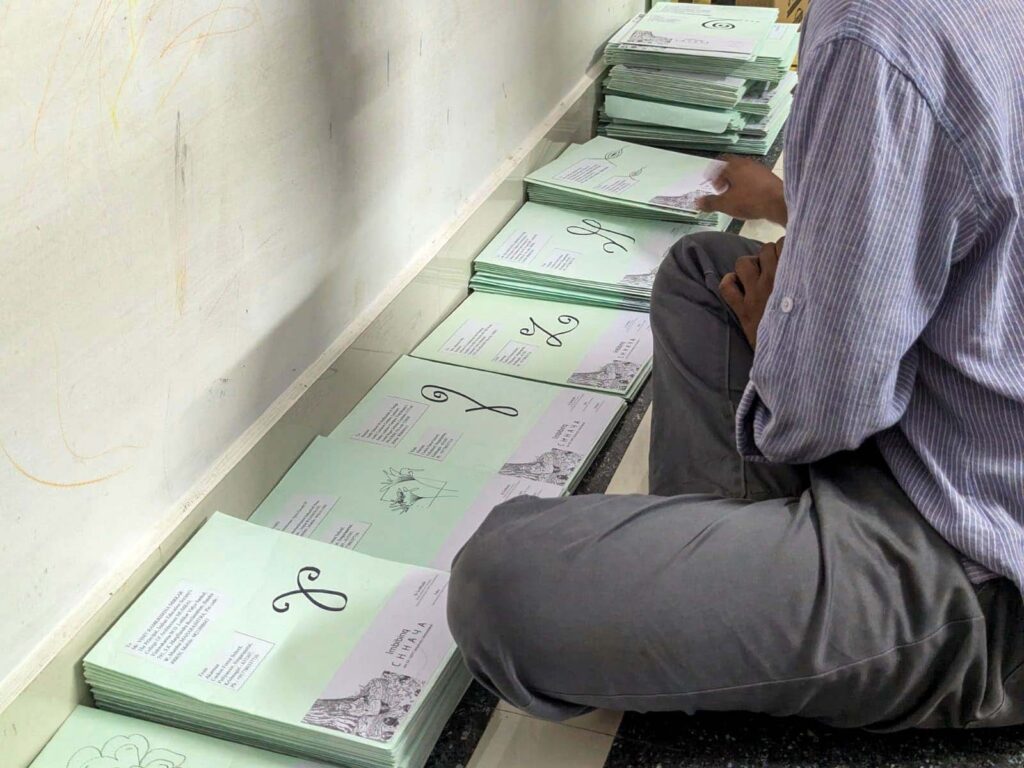

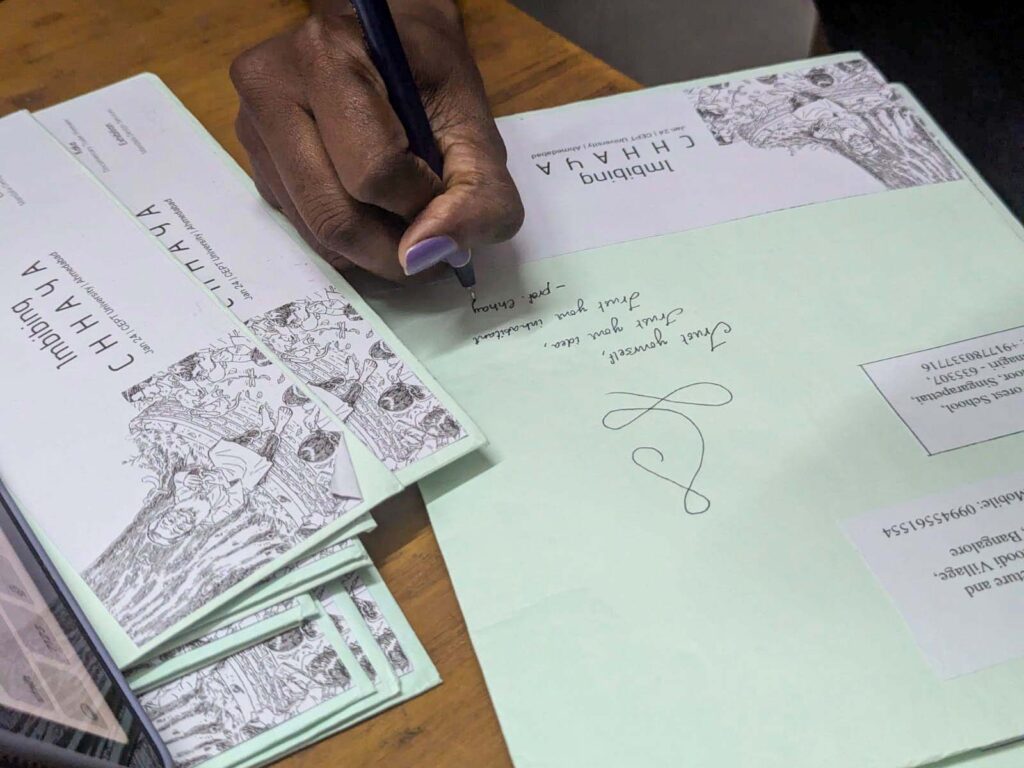
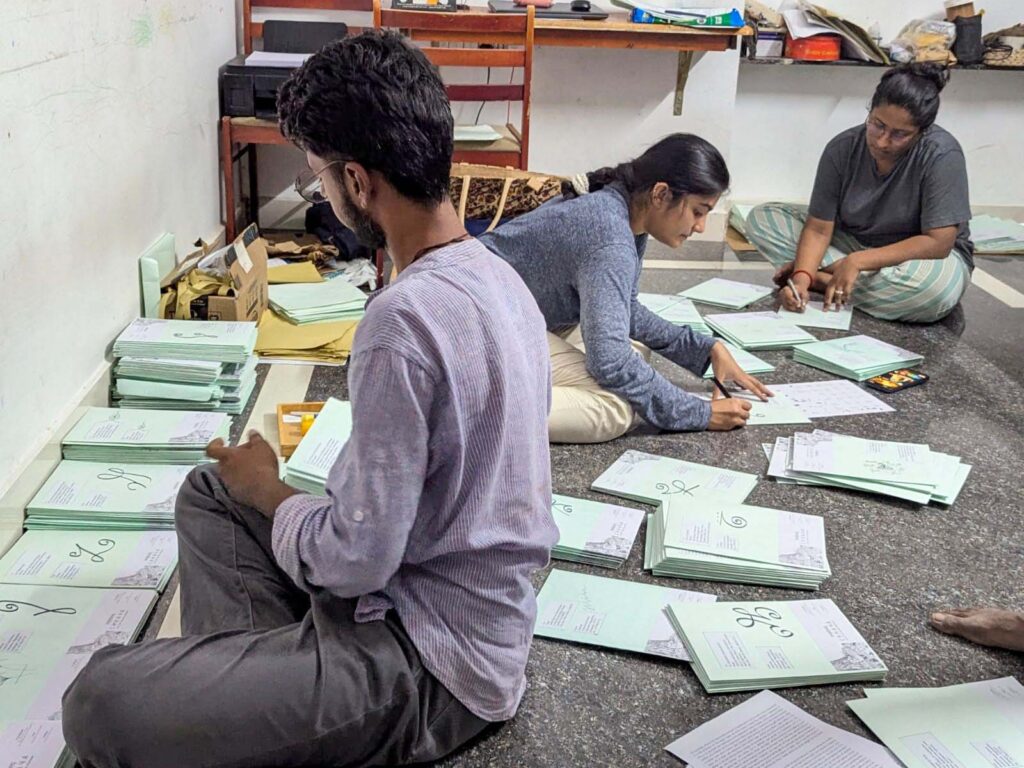

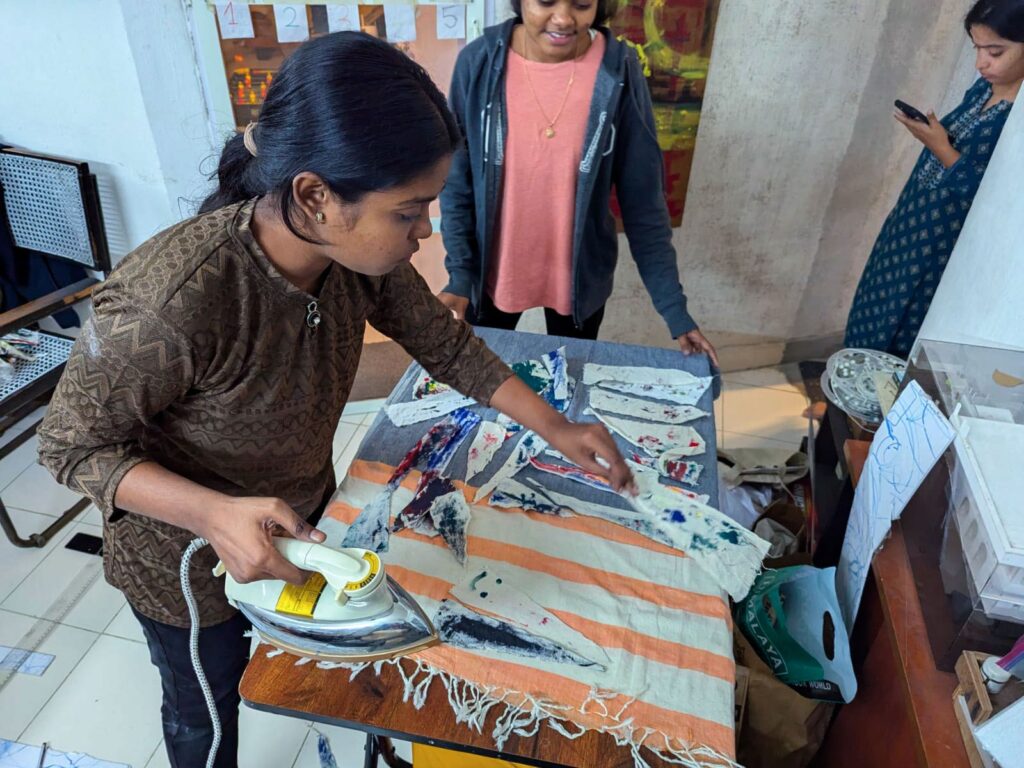


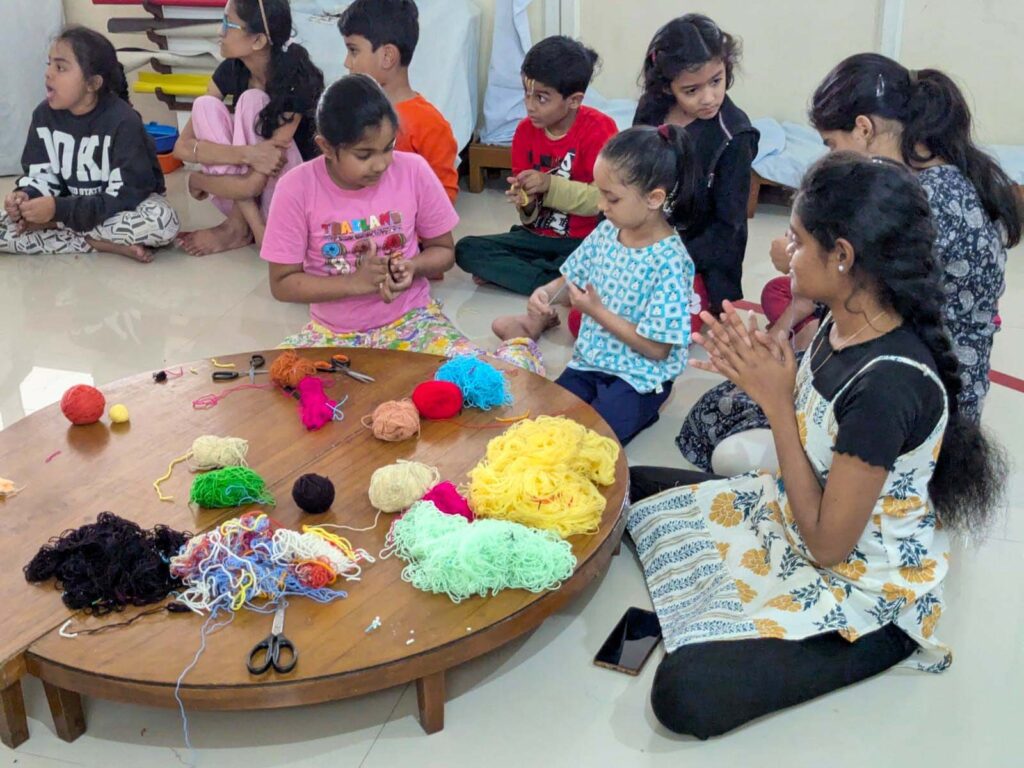
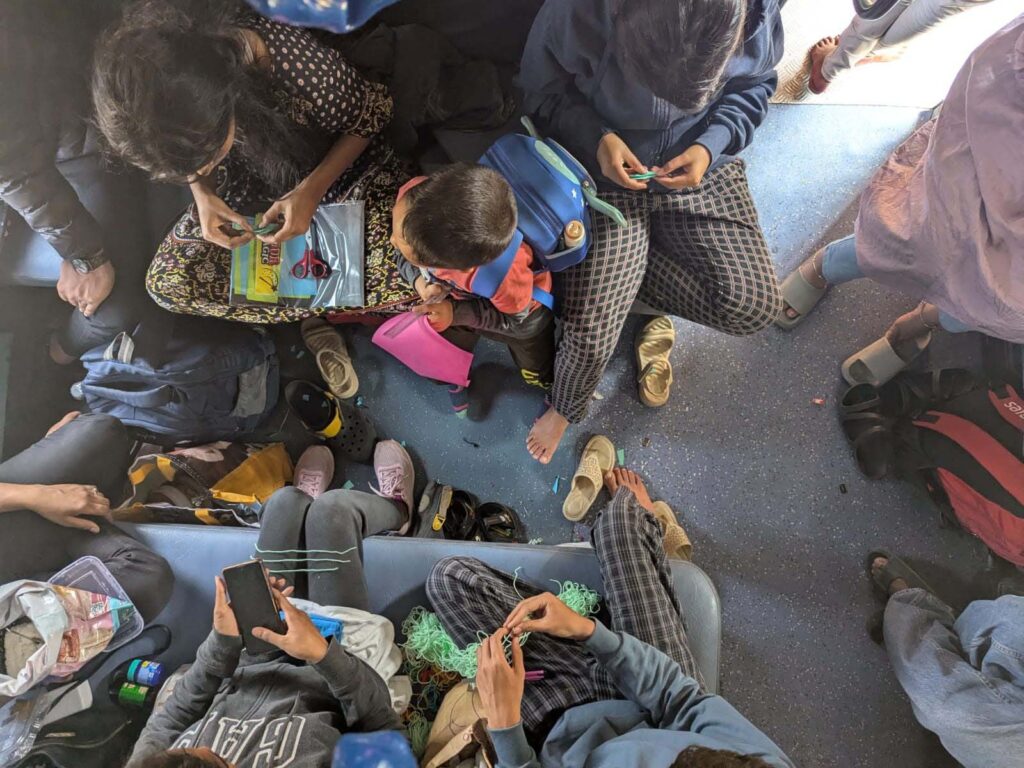
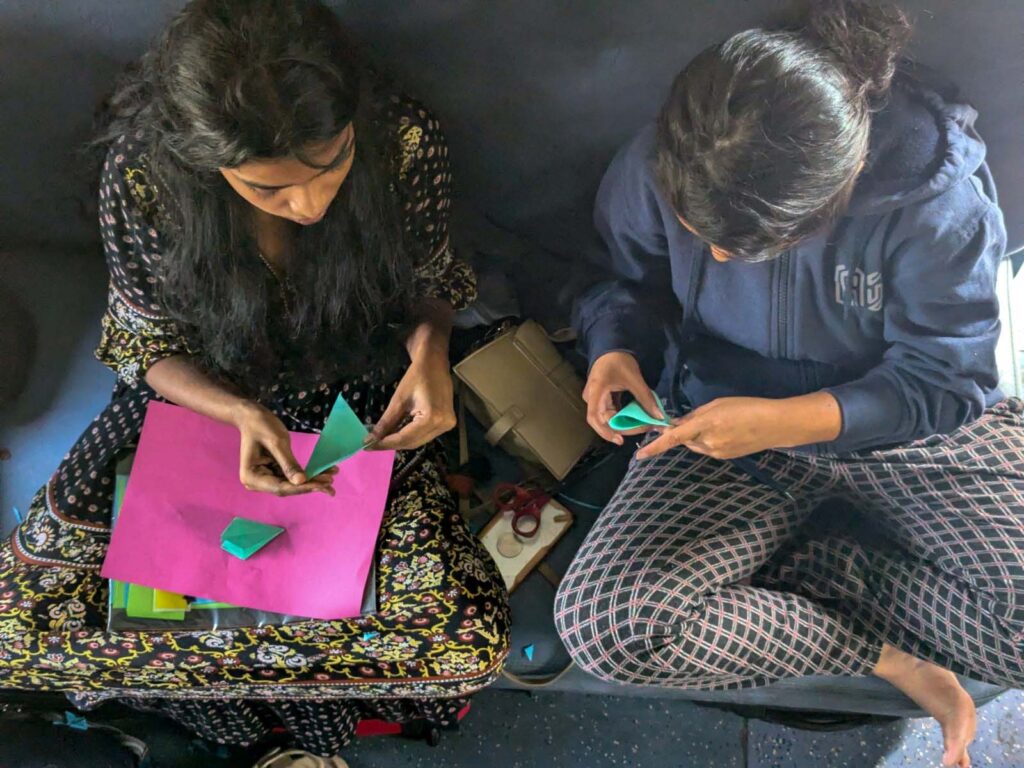
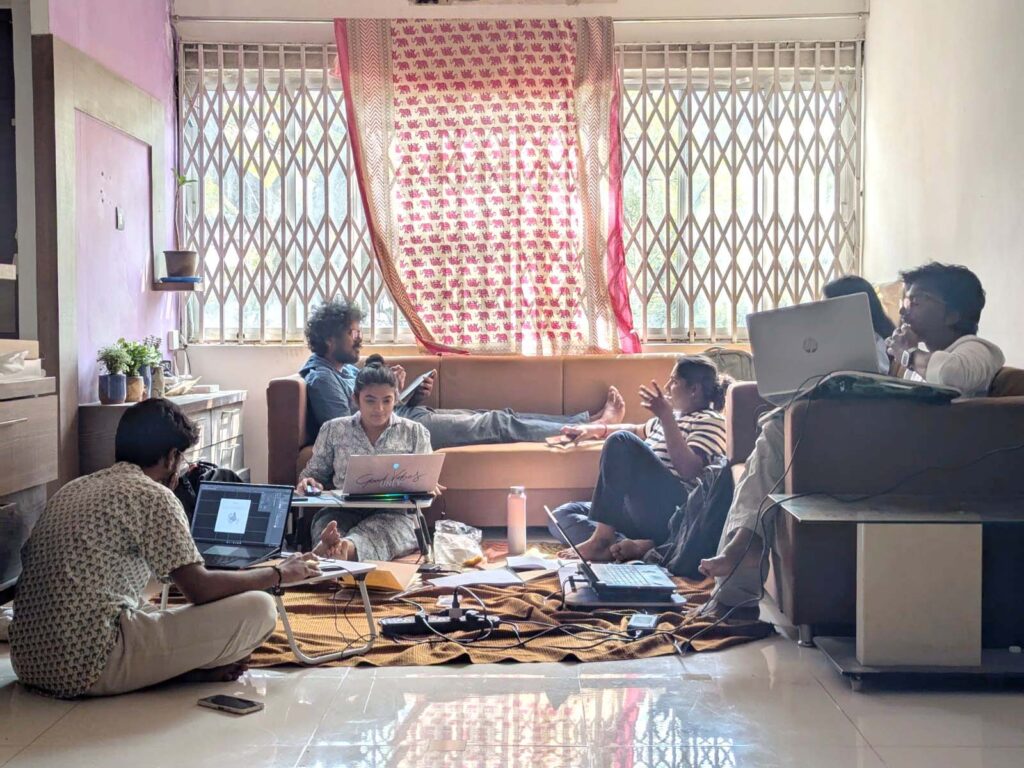



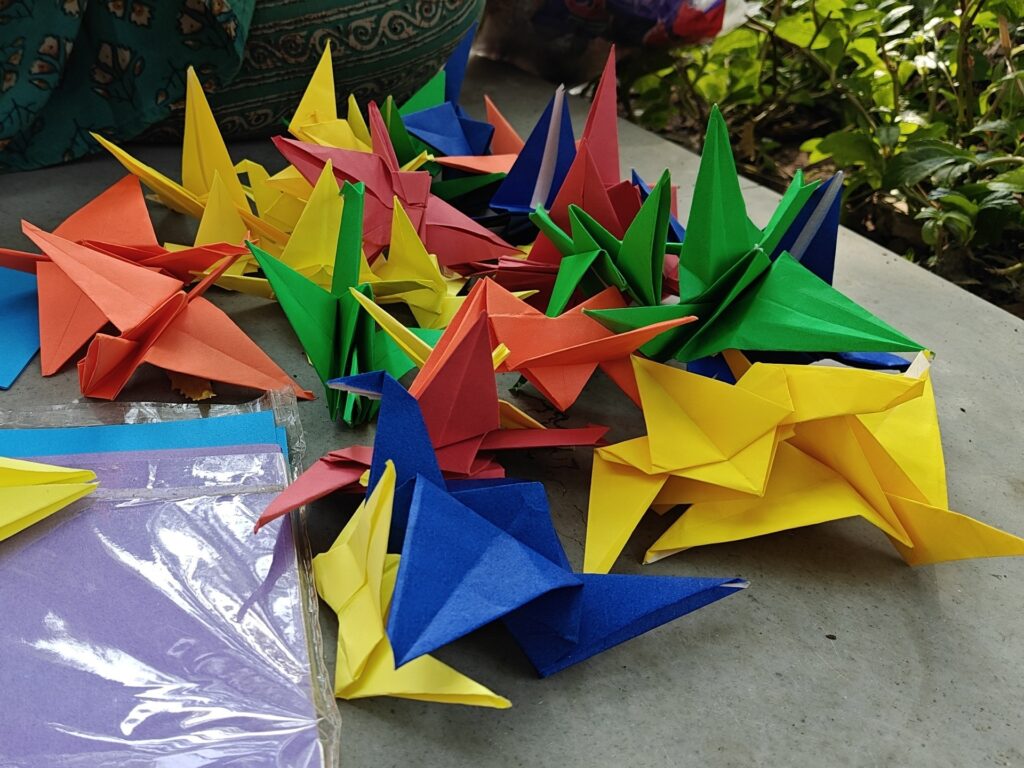


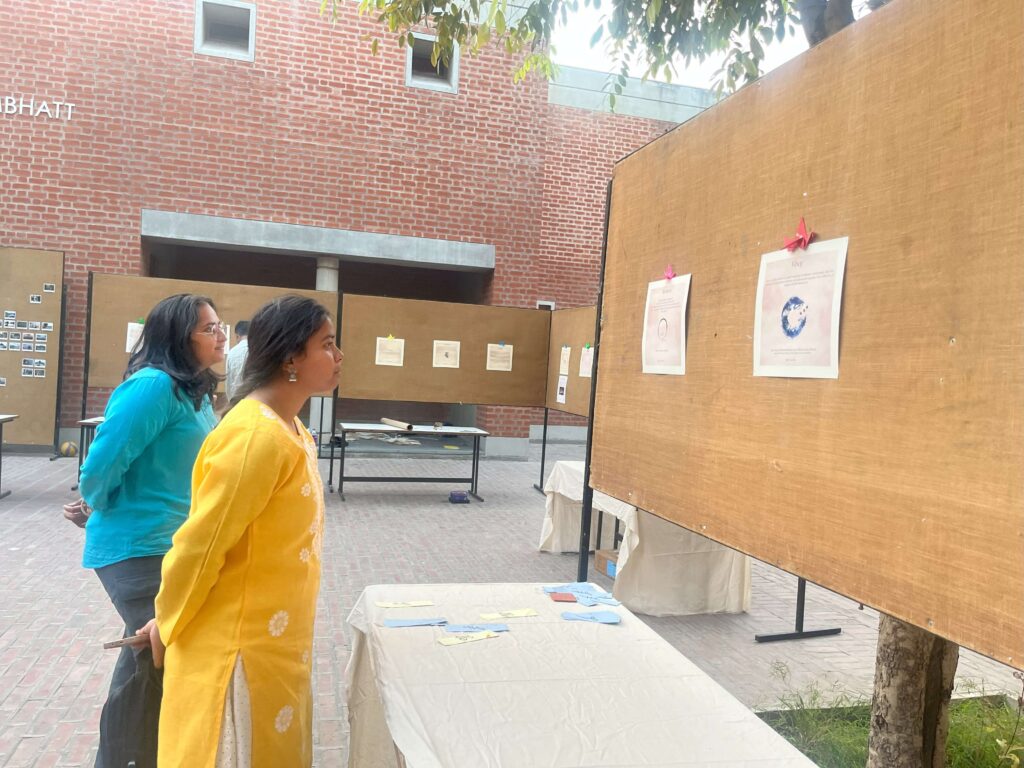
Contribute | Buy | Donate
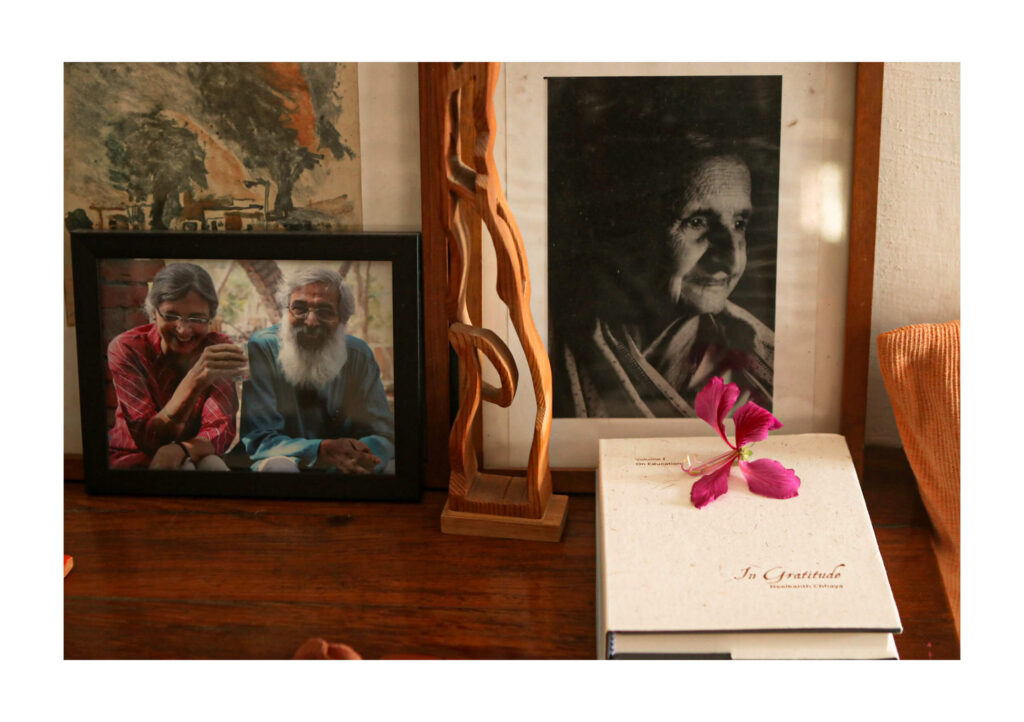
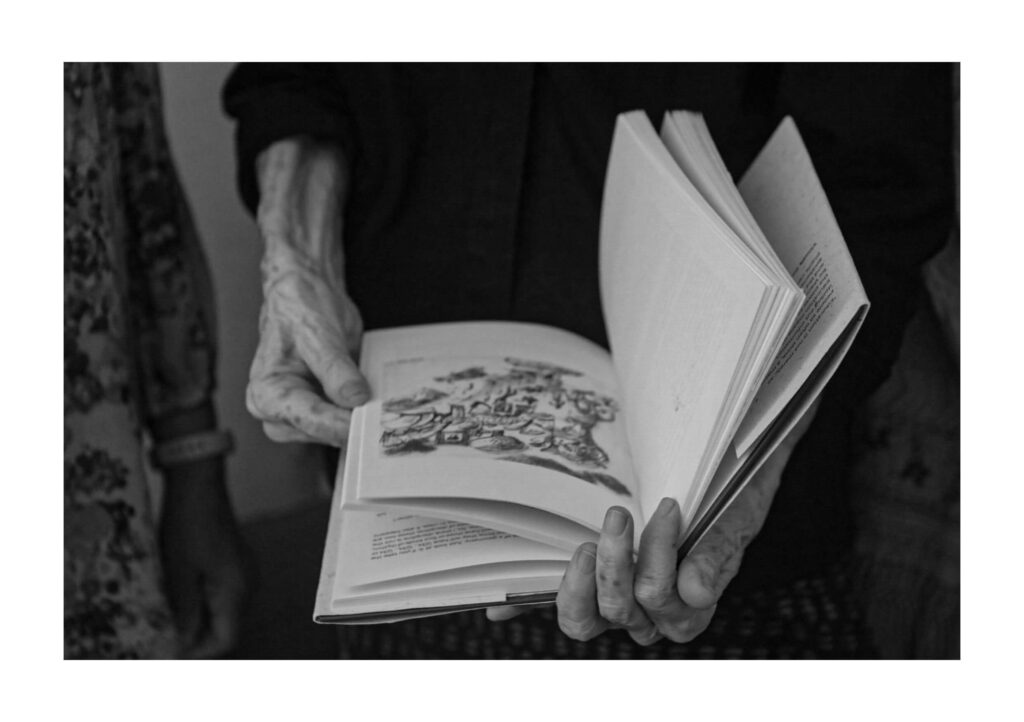
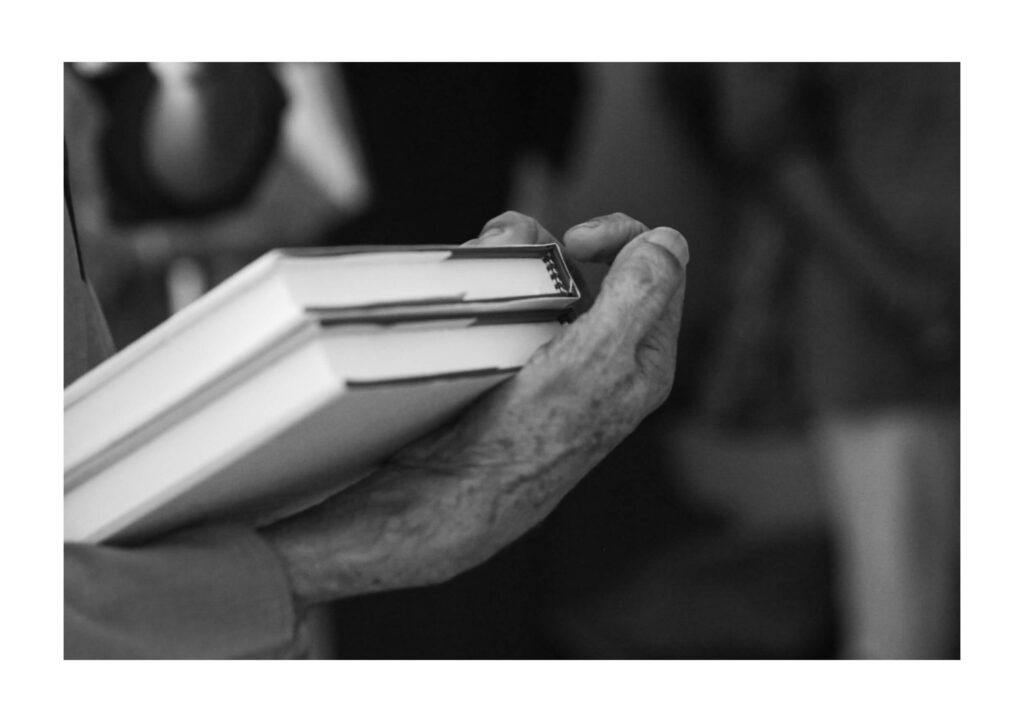
Event photography credits:
CEPT University, Kausik Srestaluri, Mohan Tanisk, Thiagarajan R

